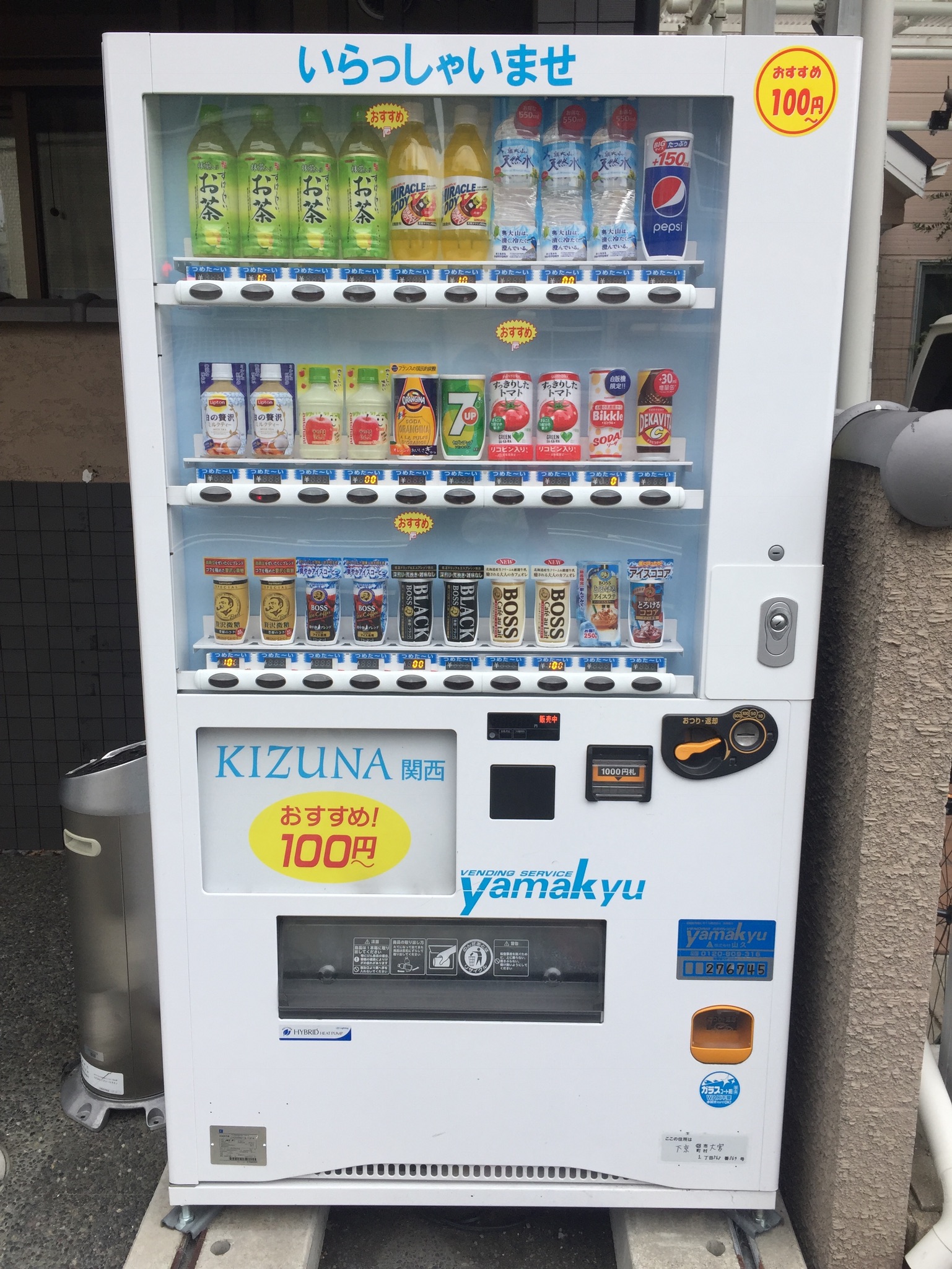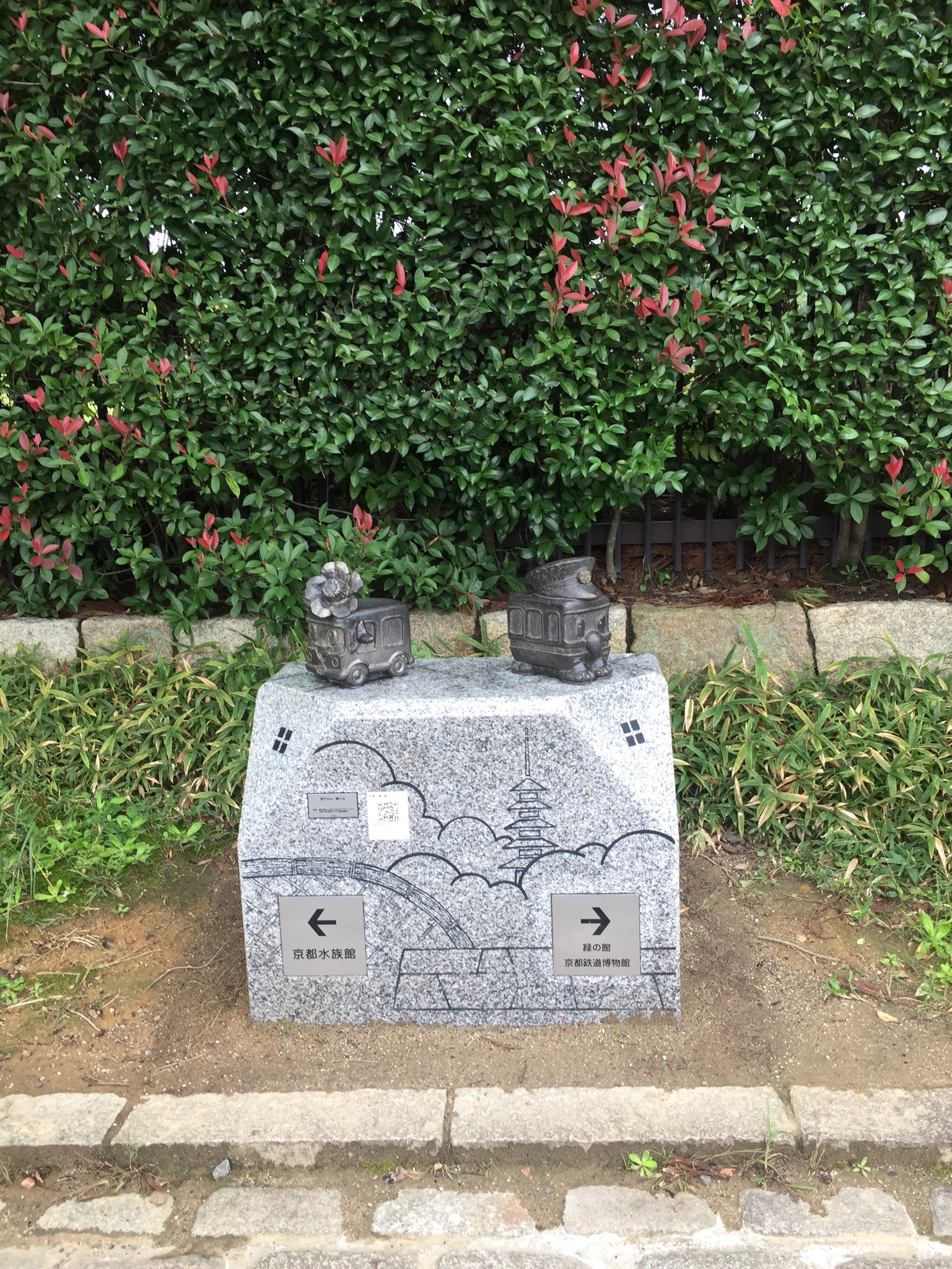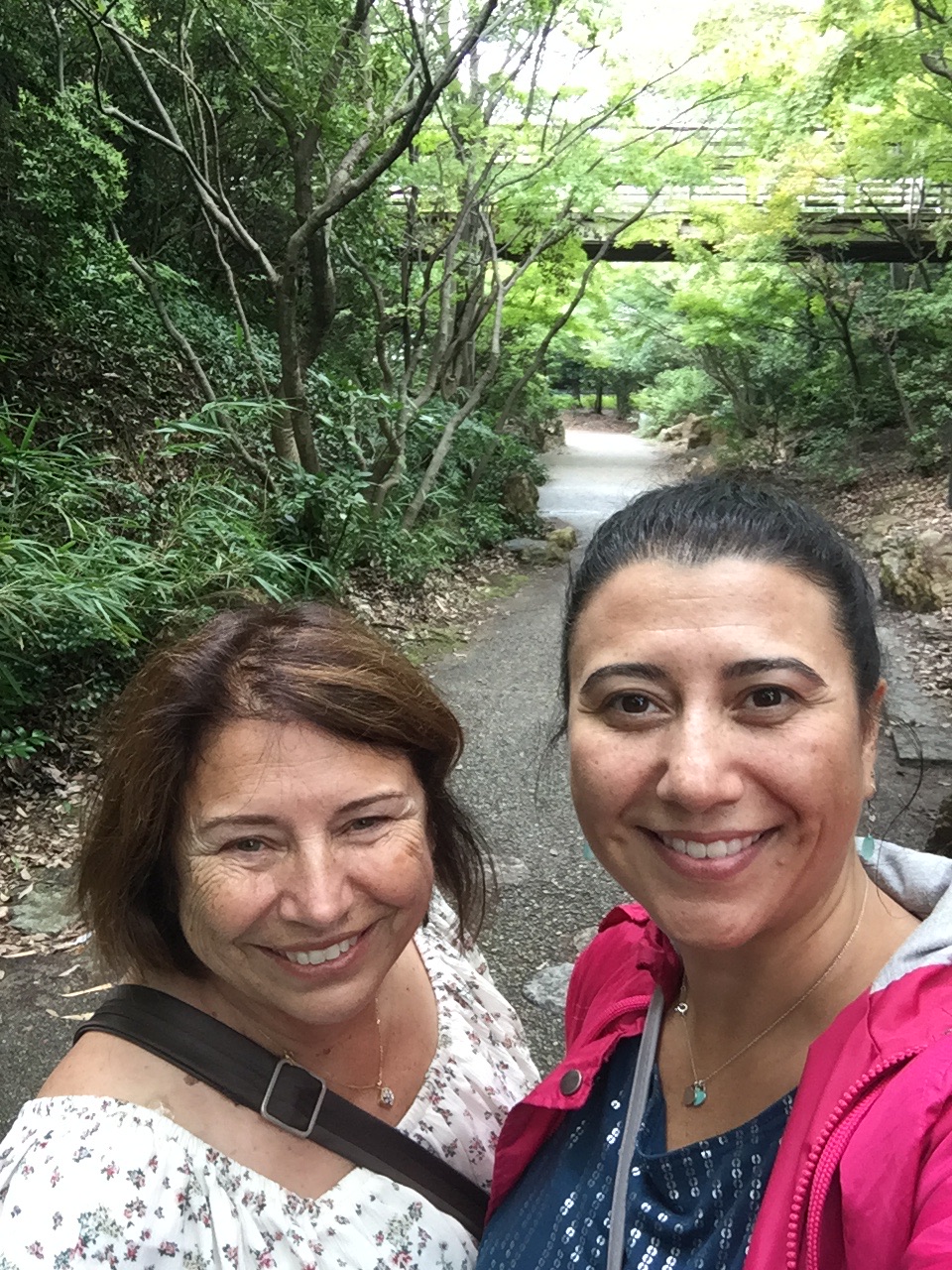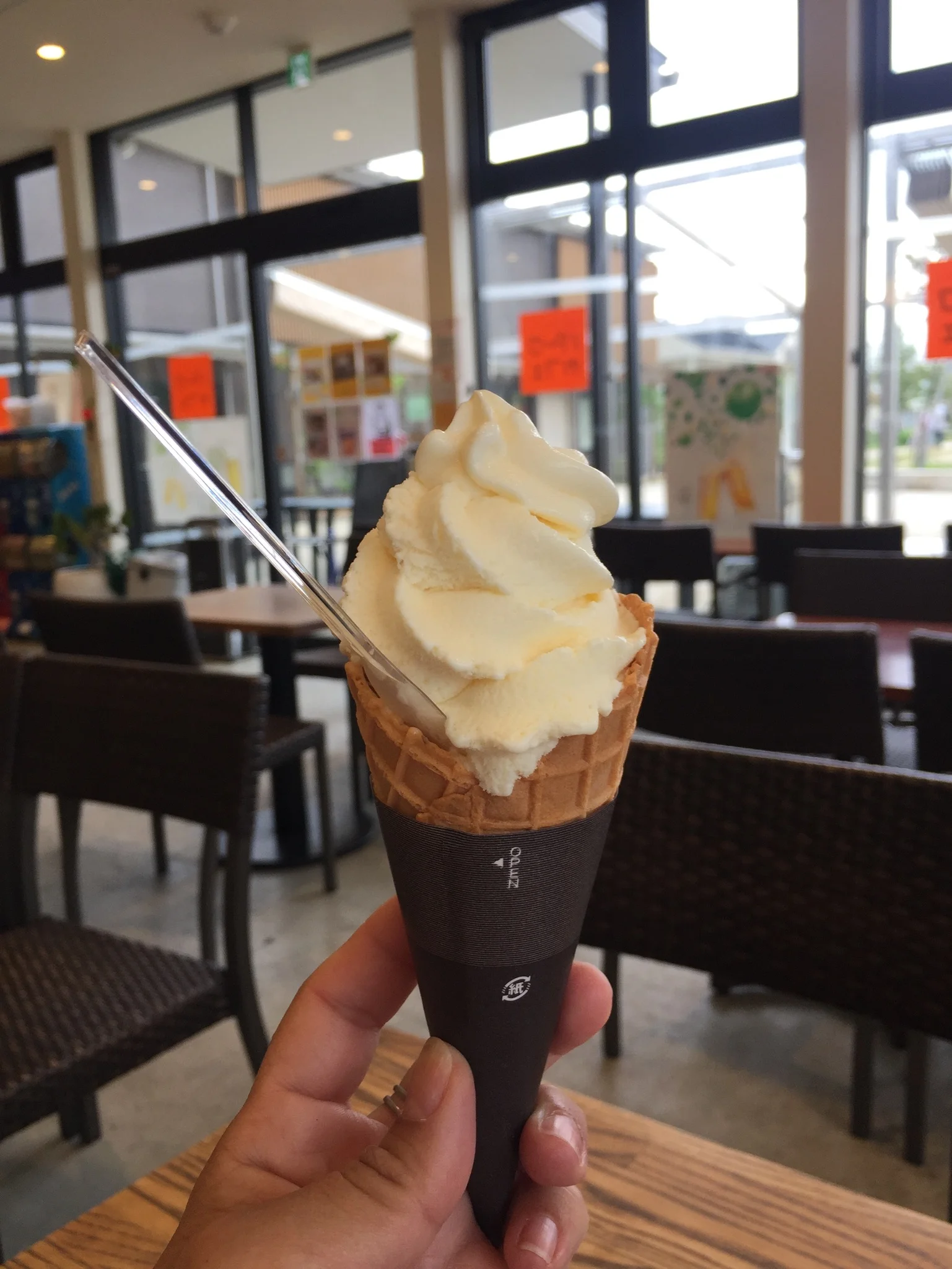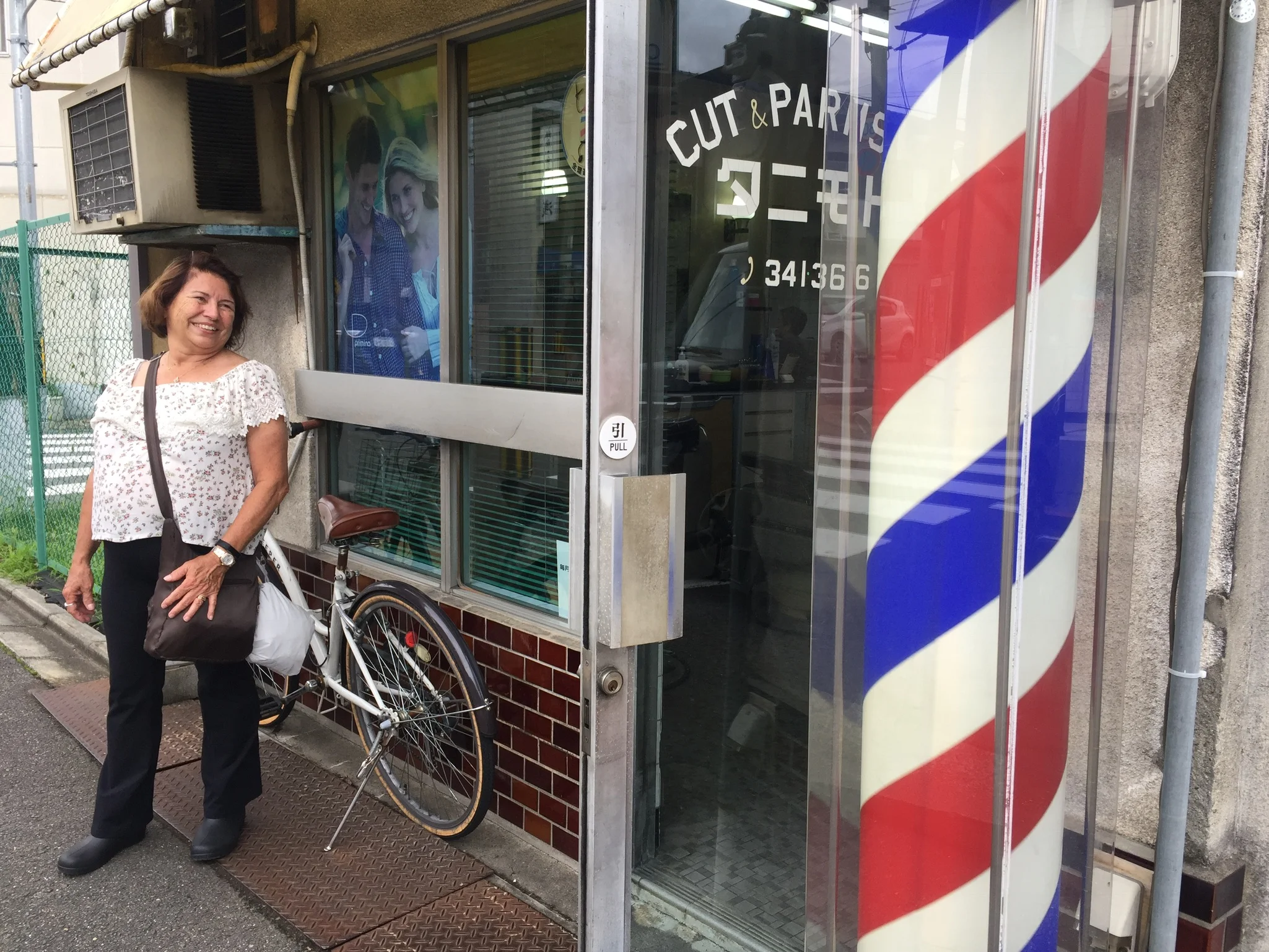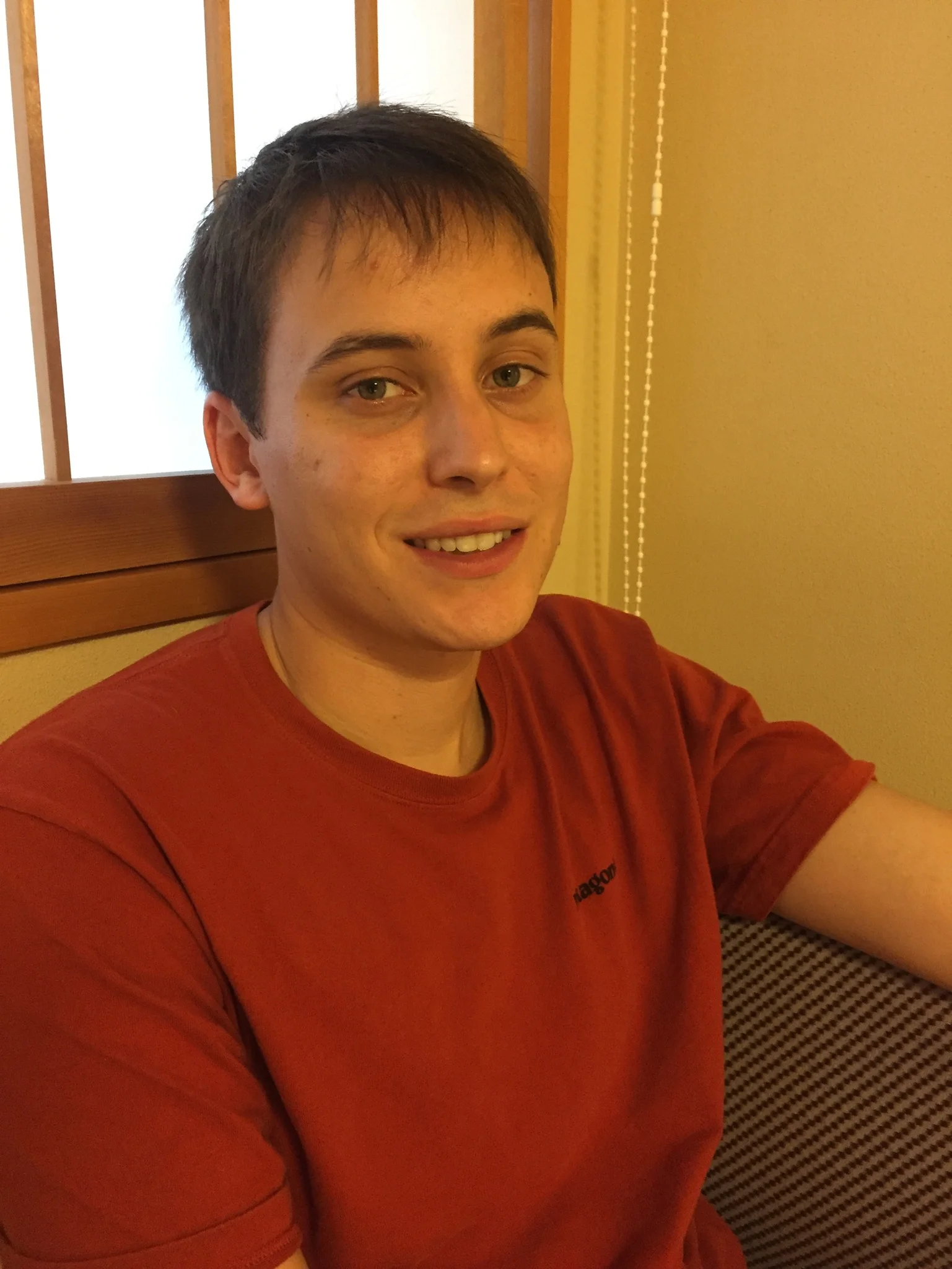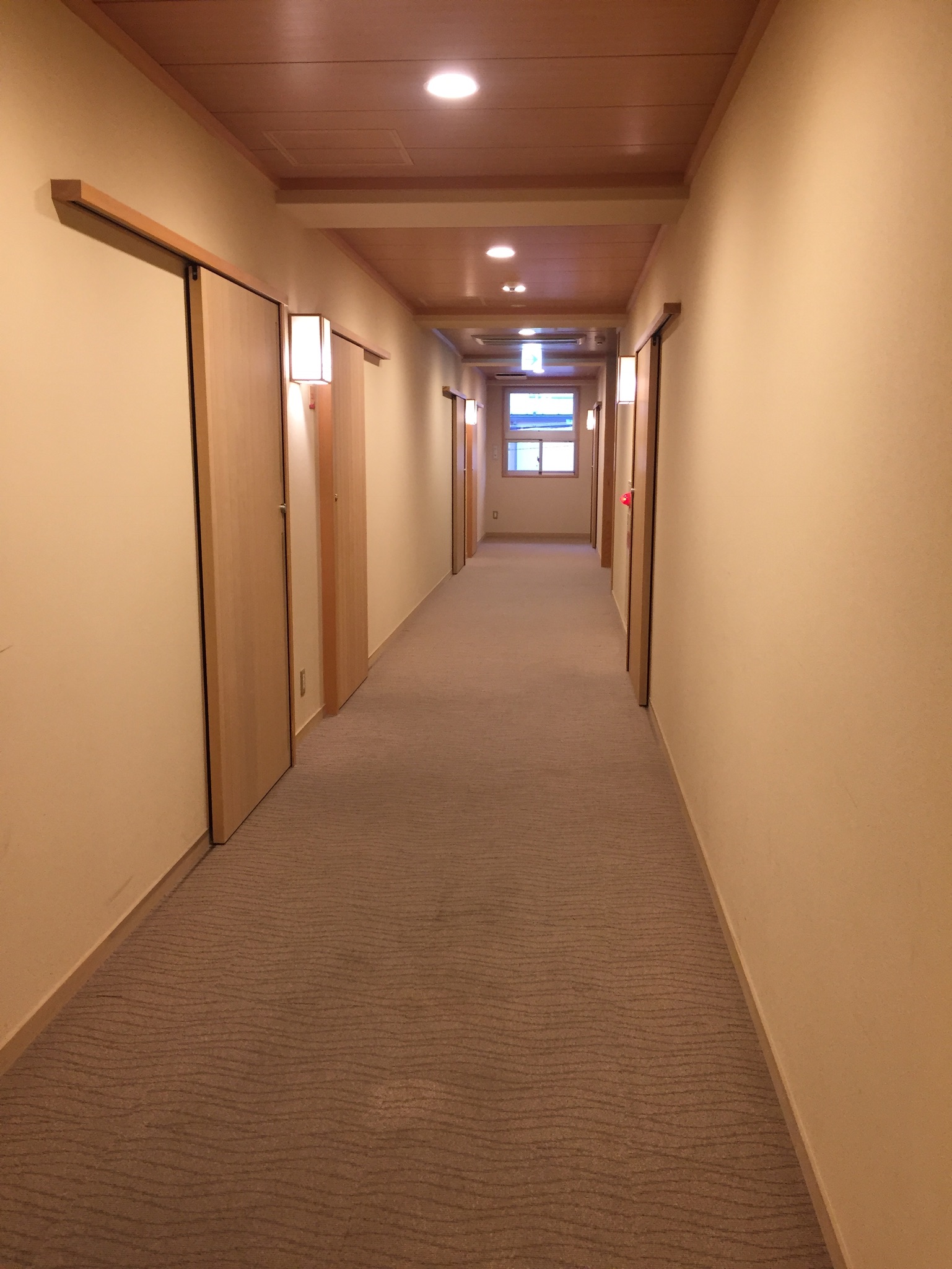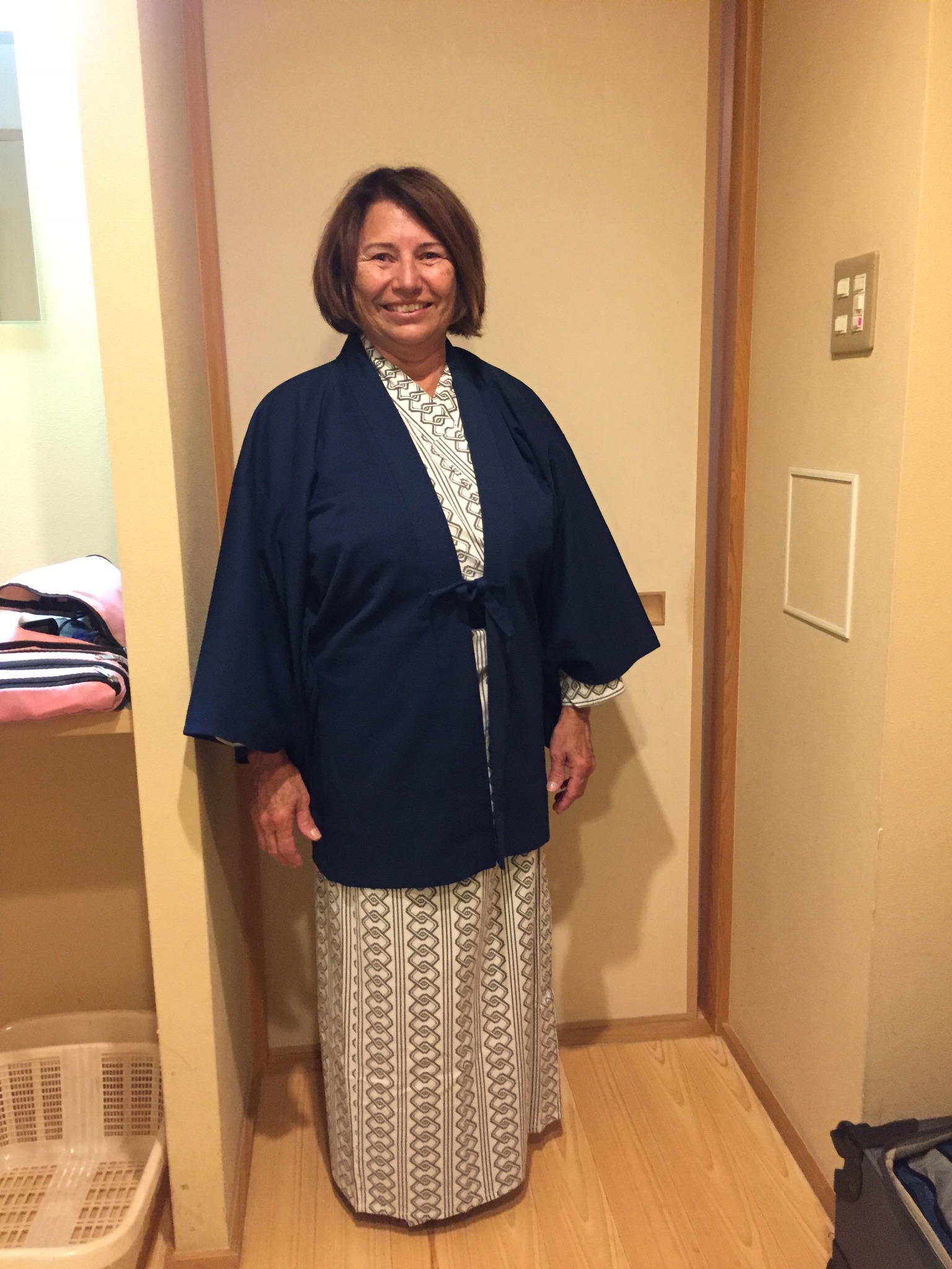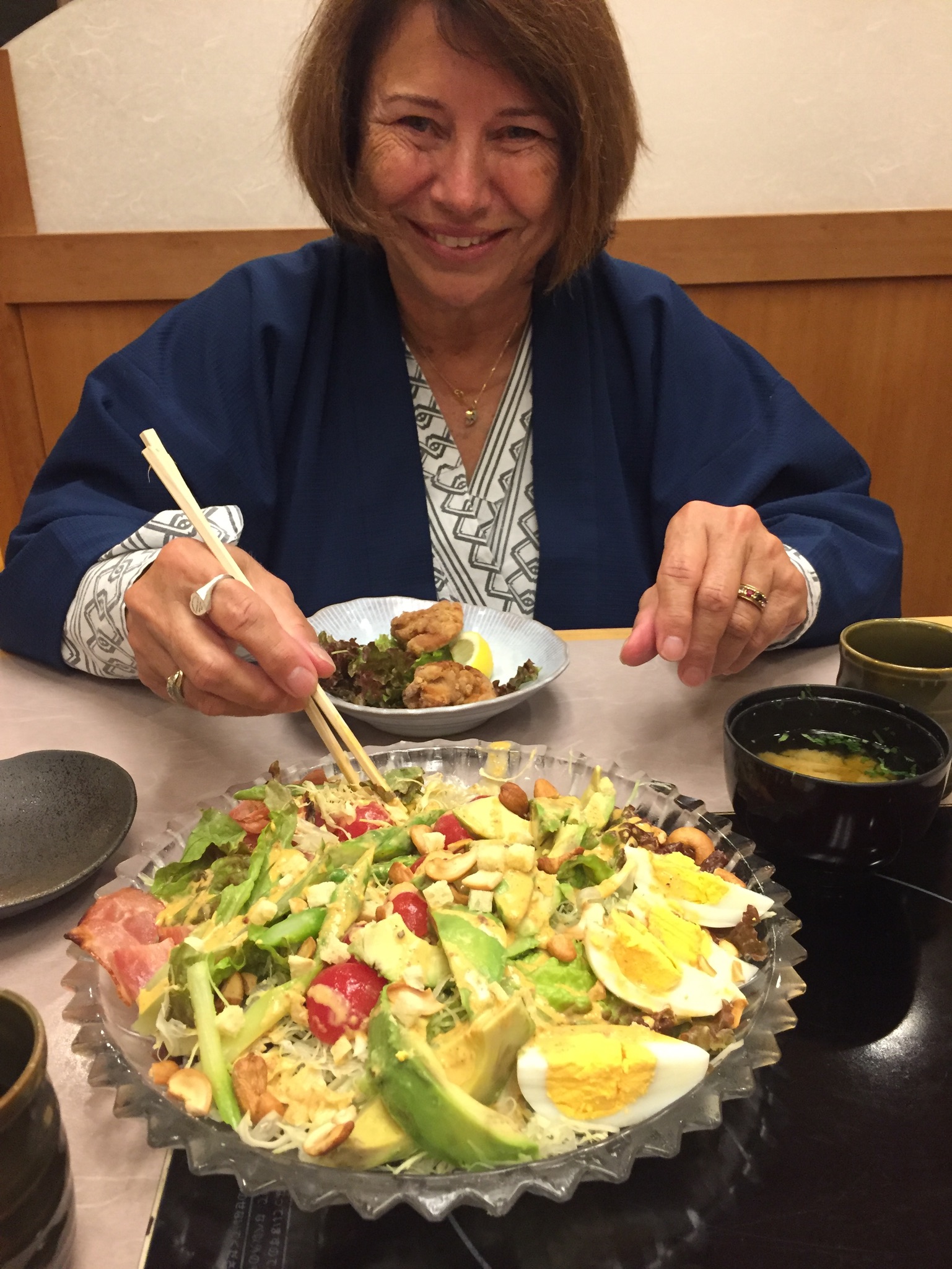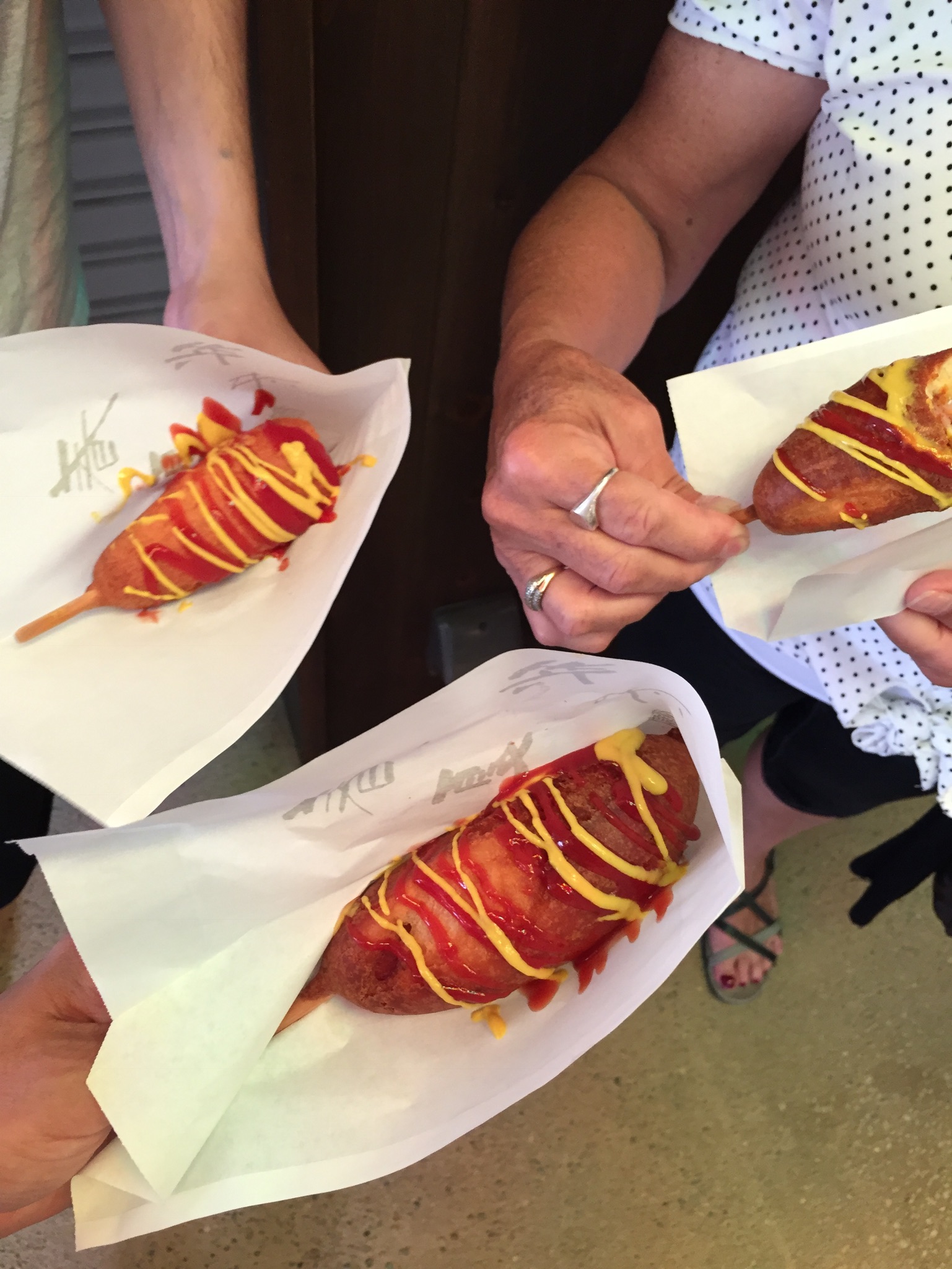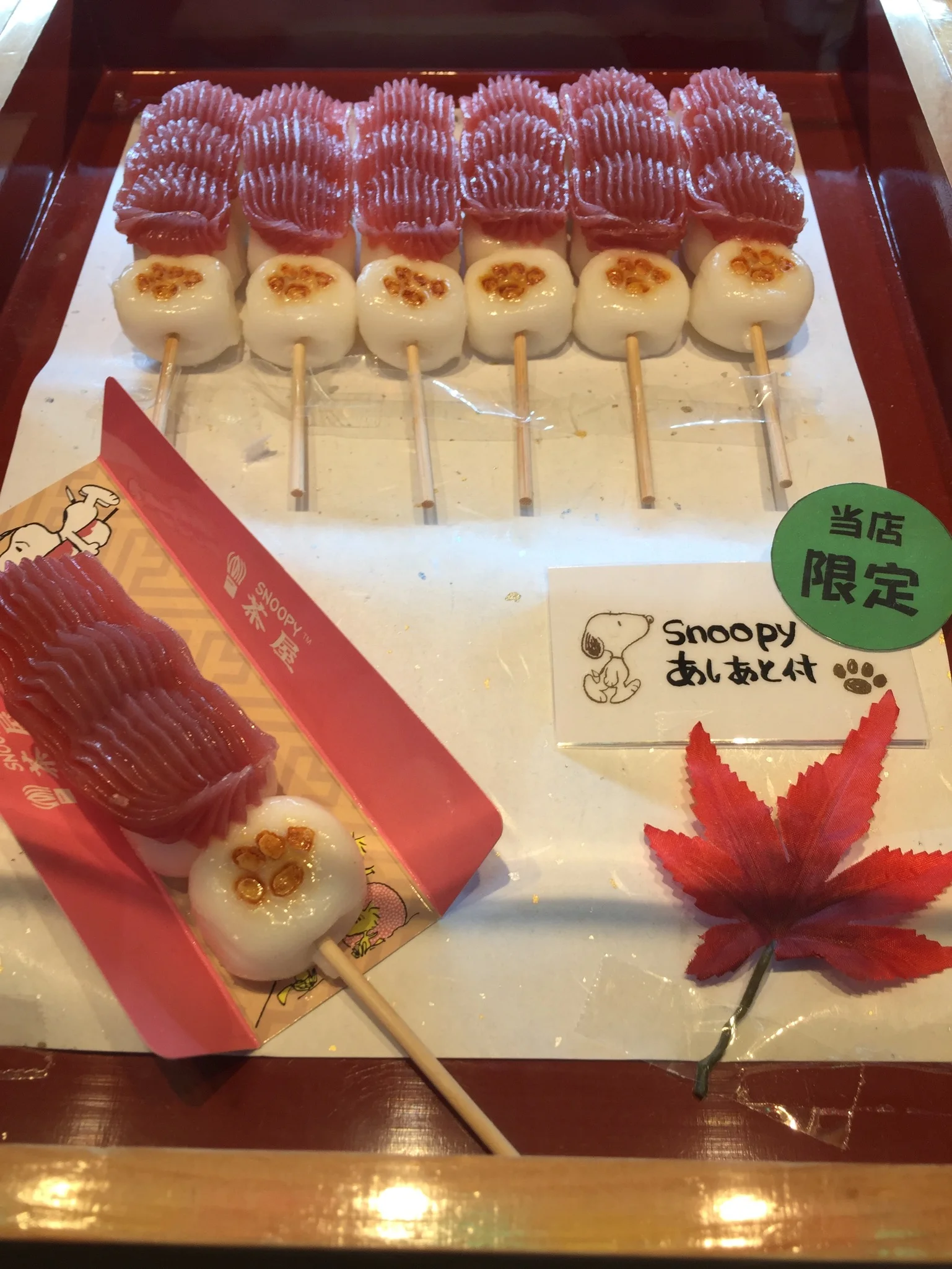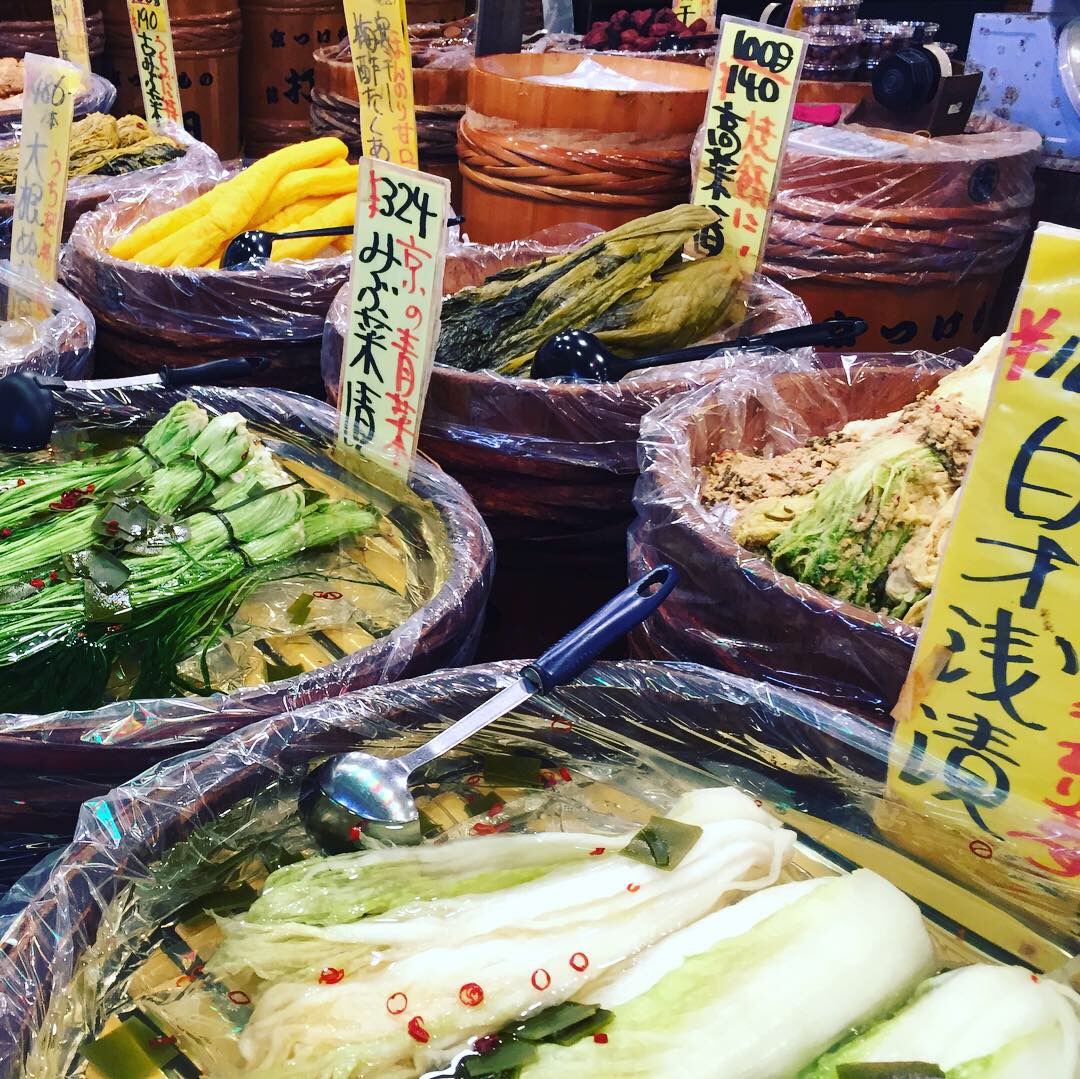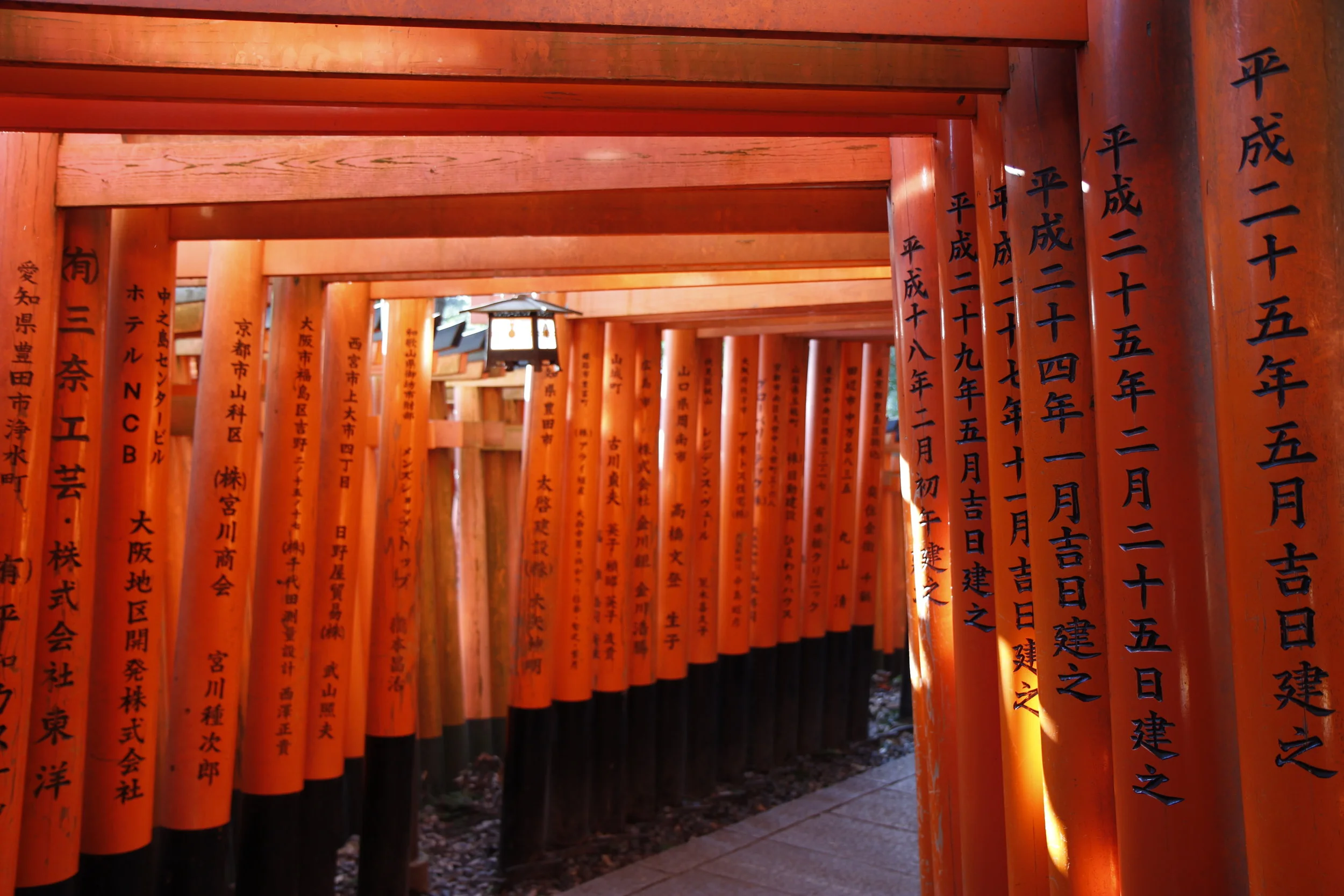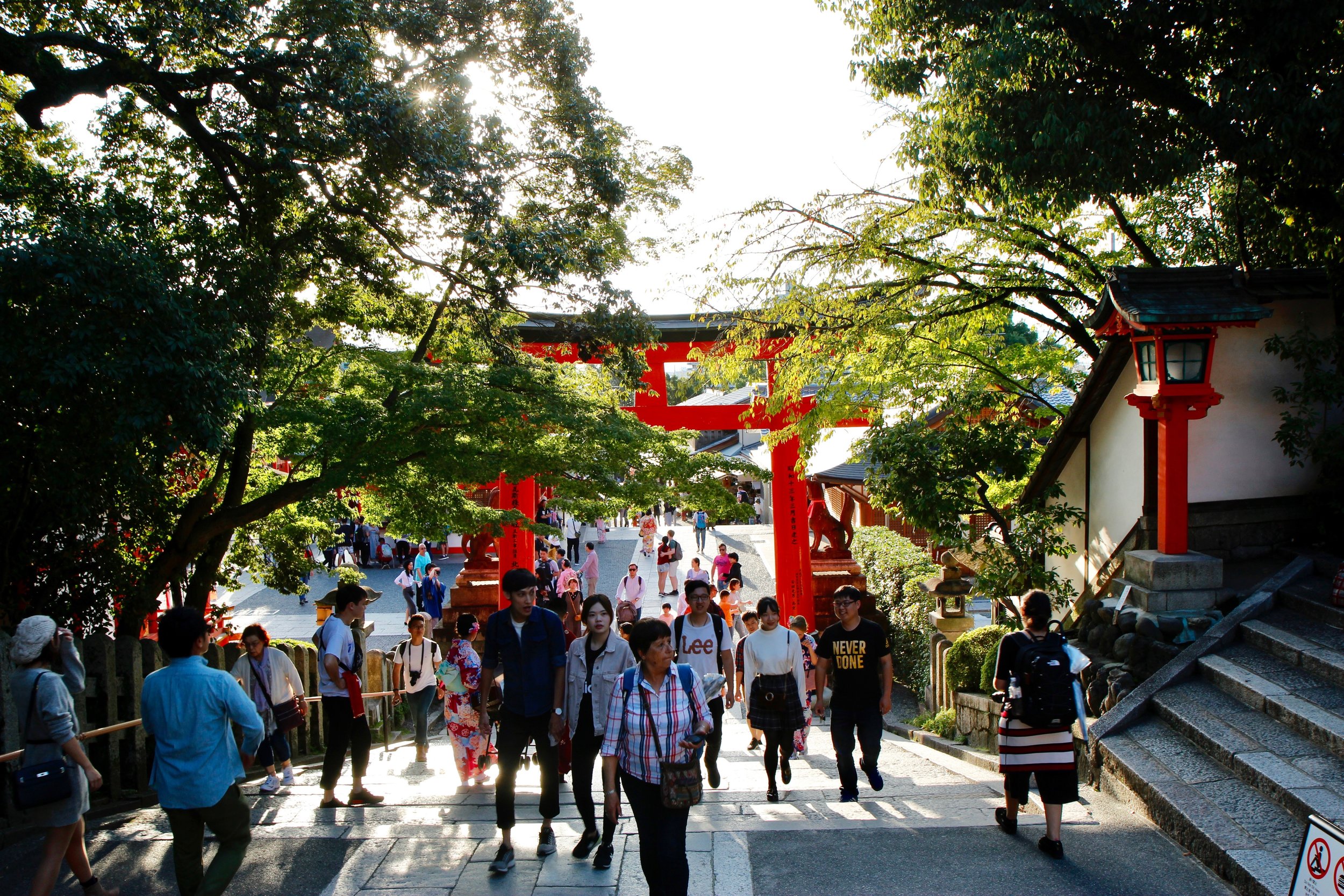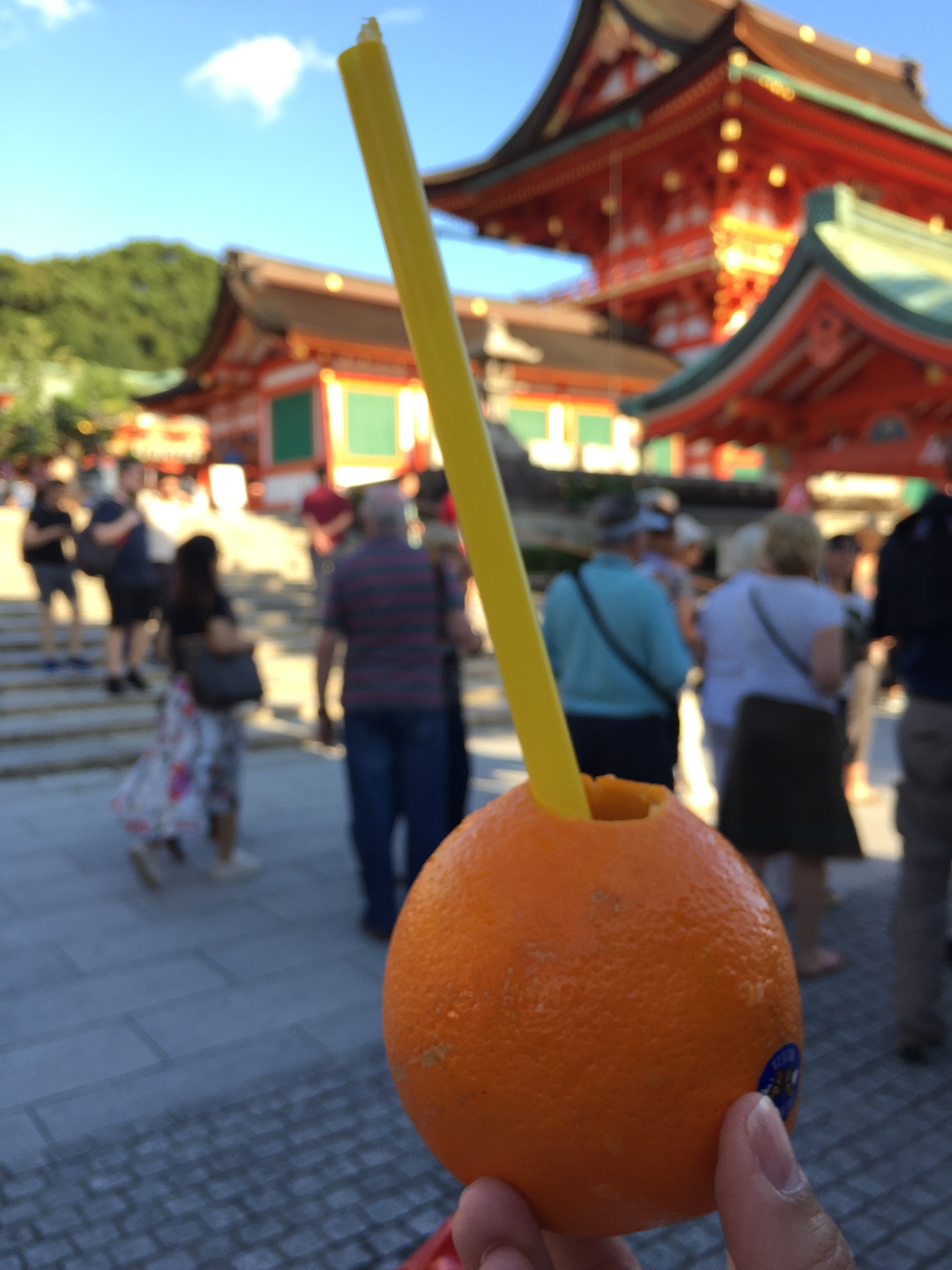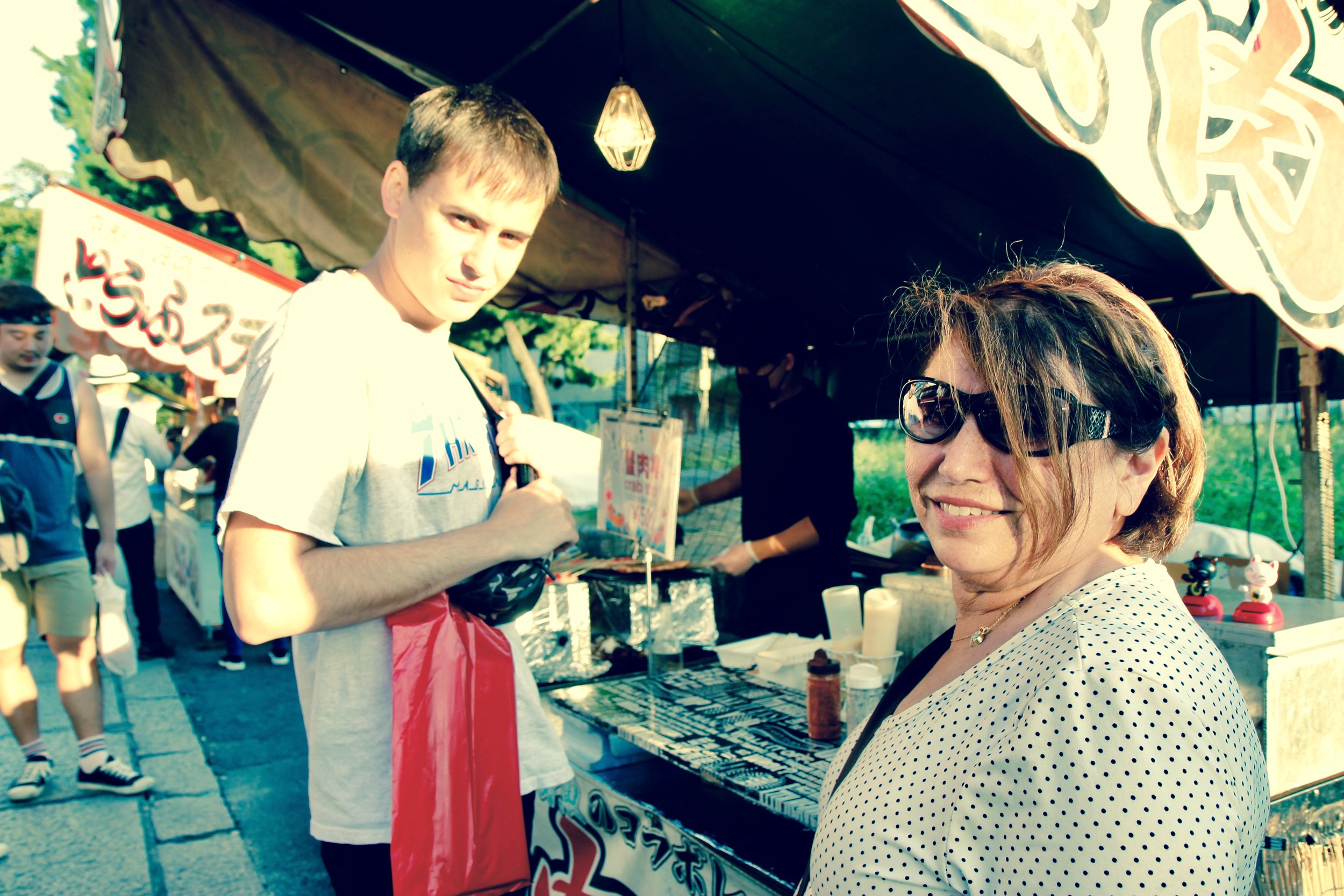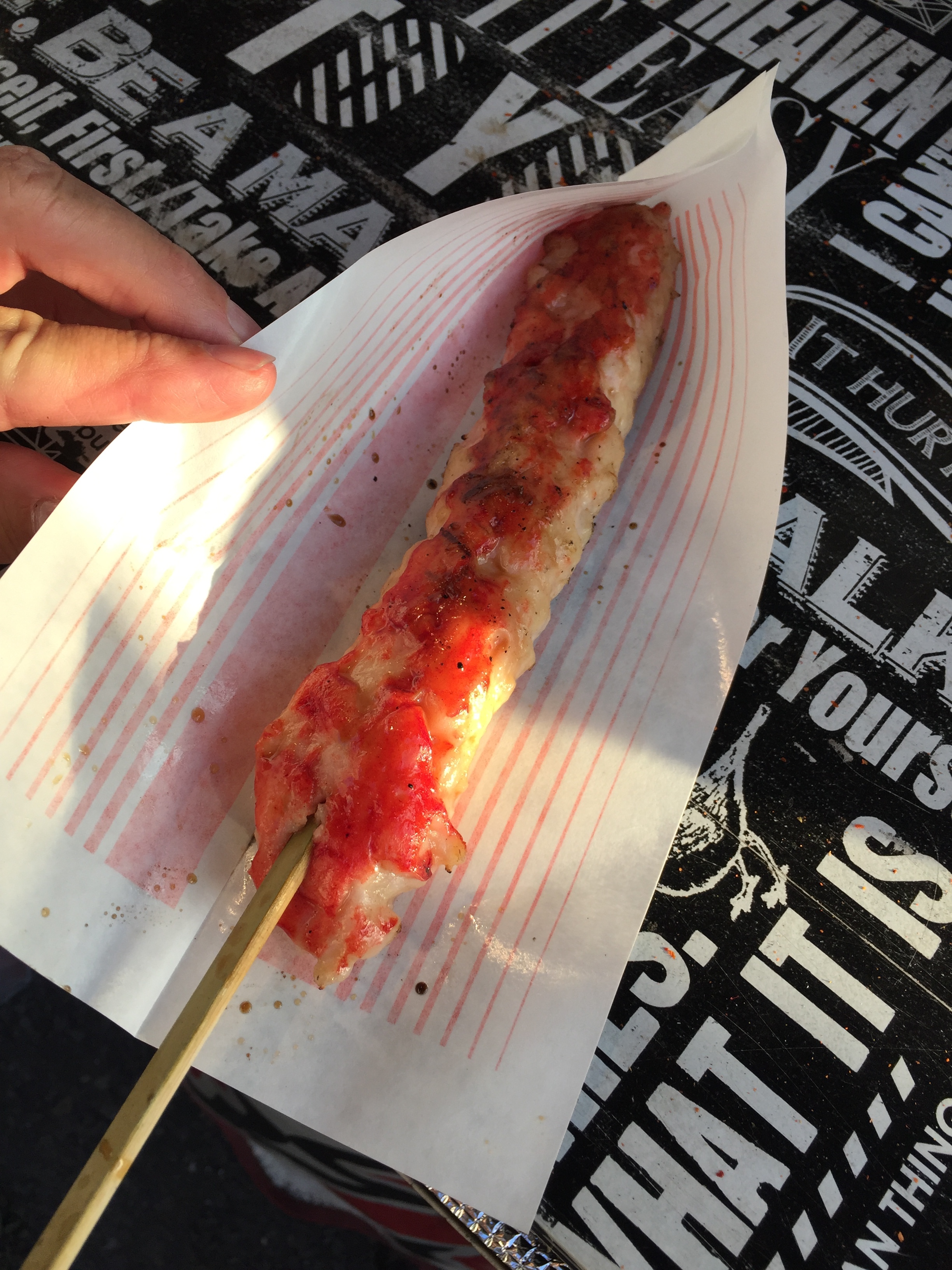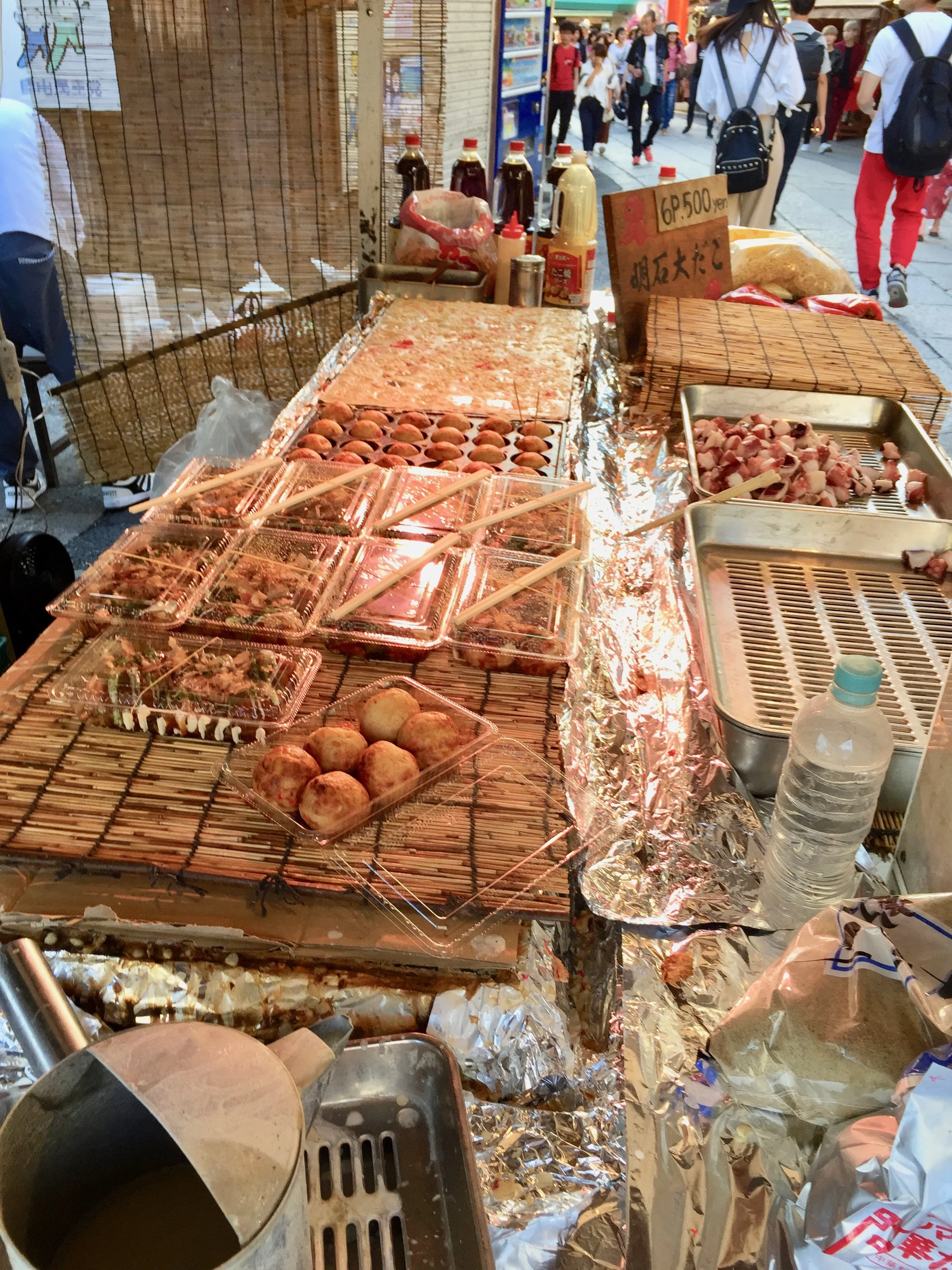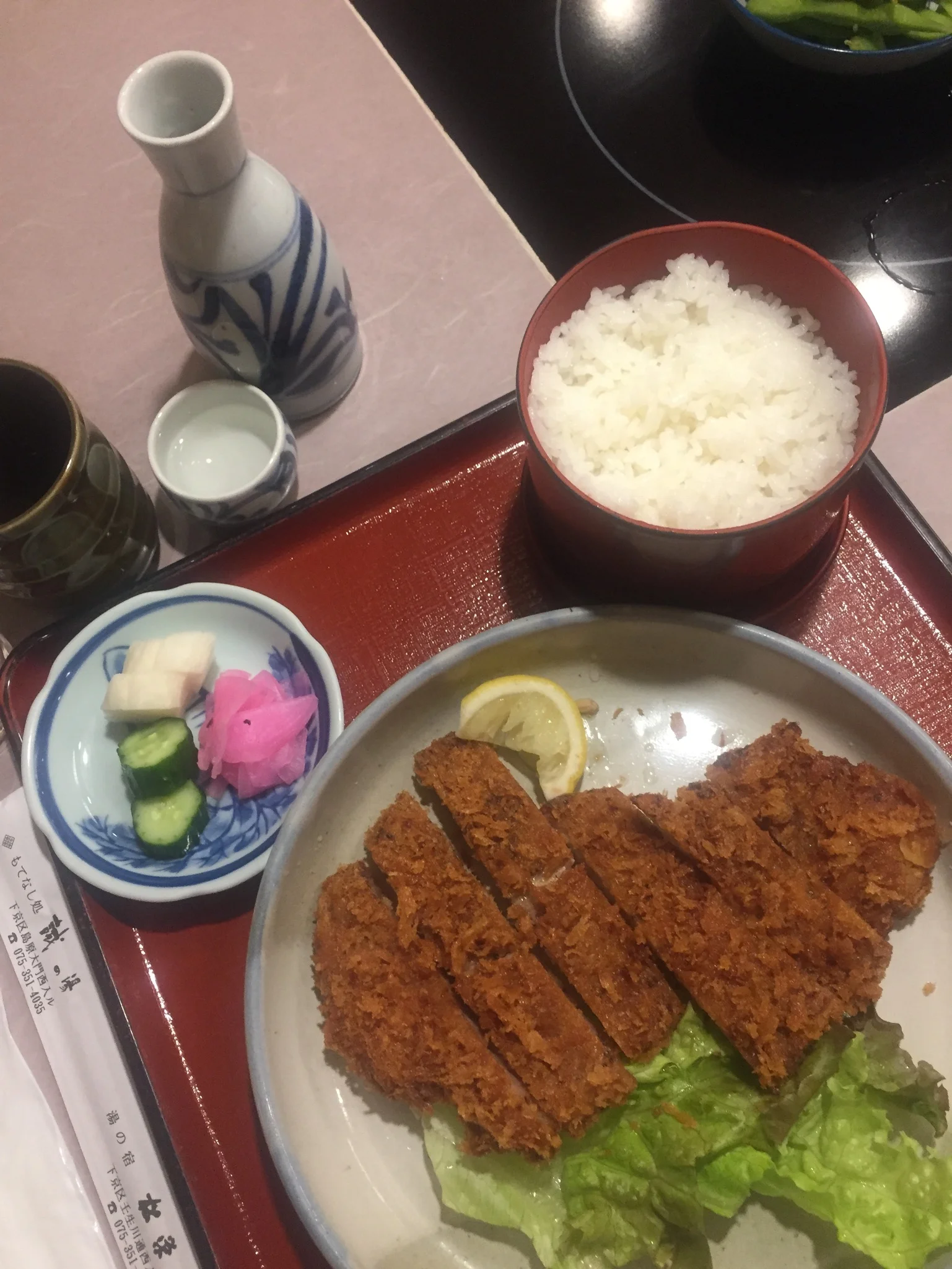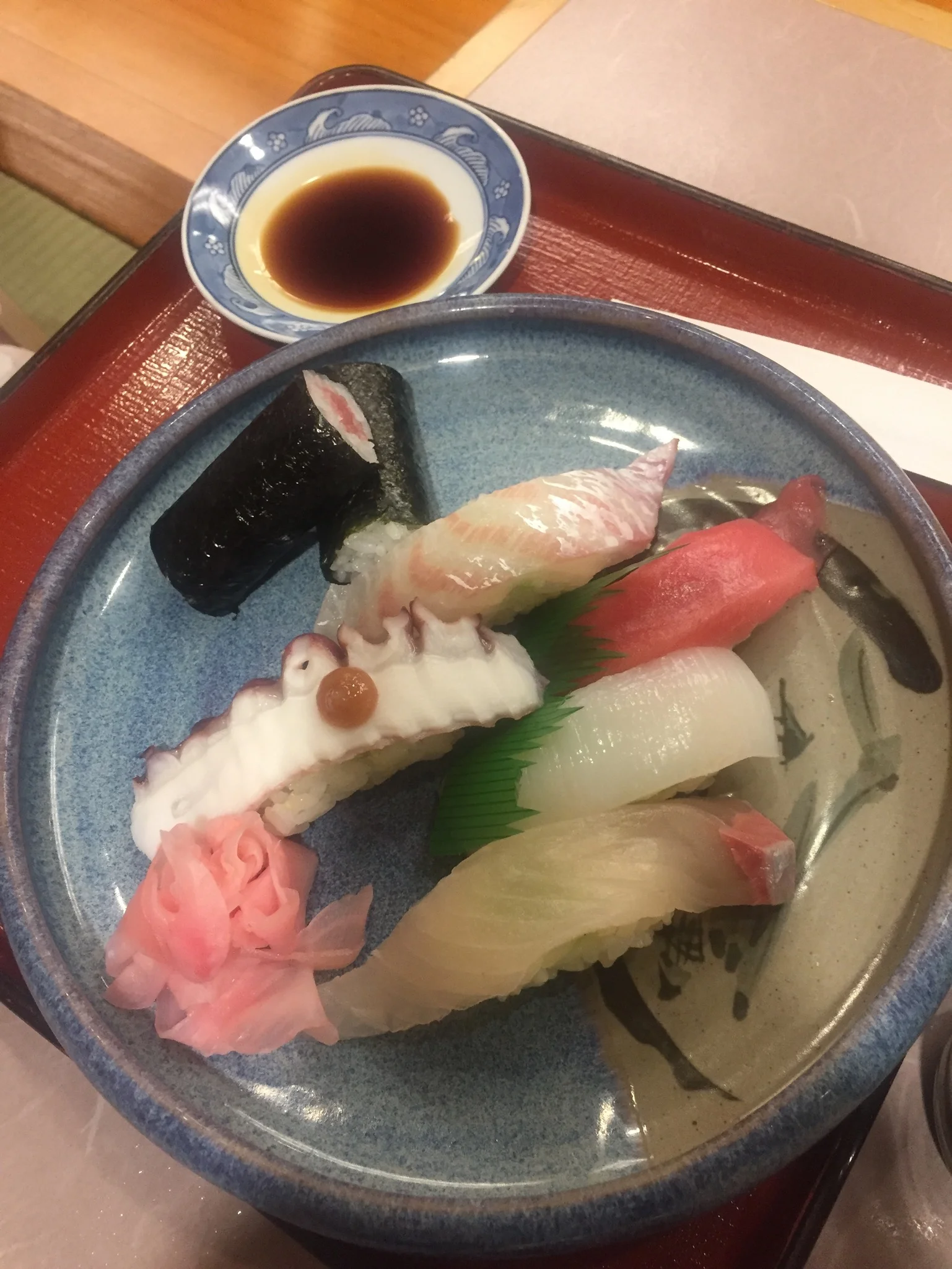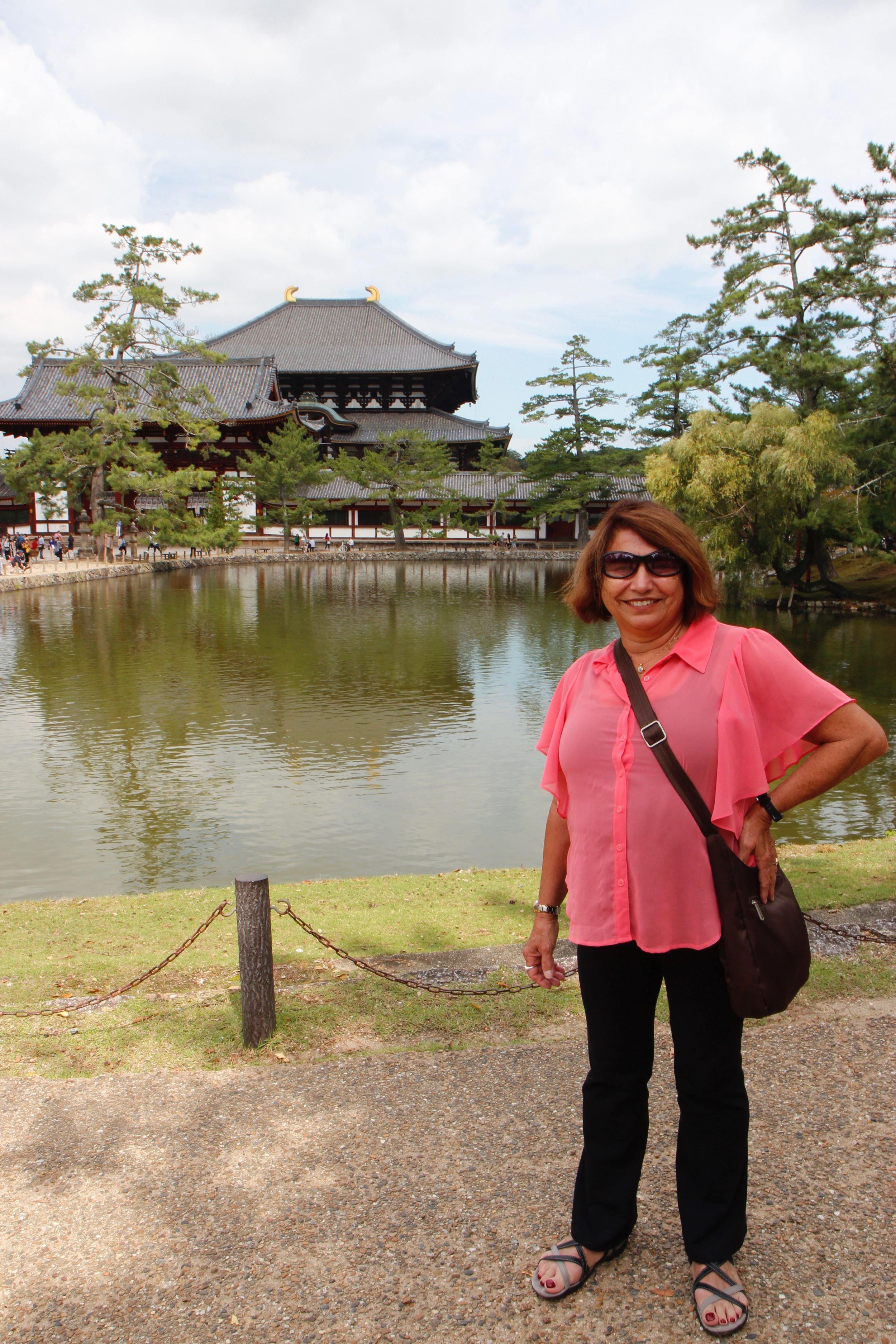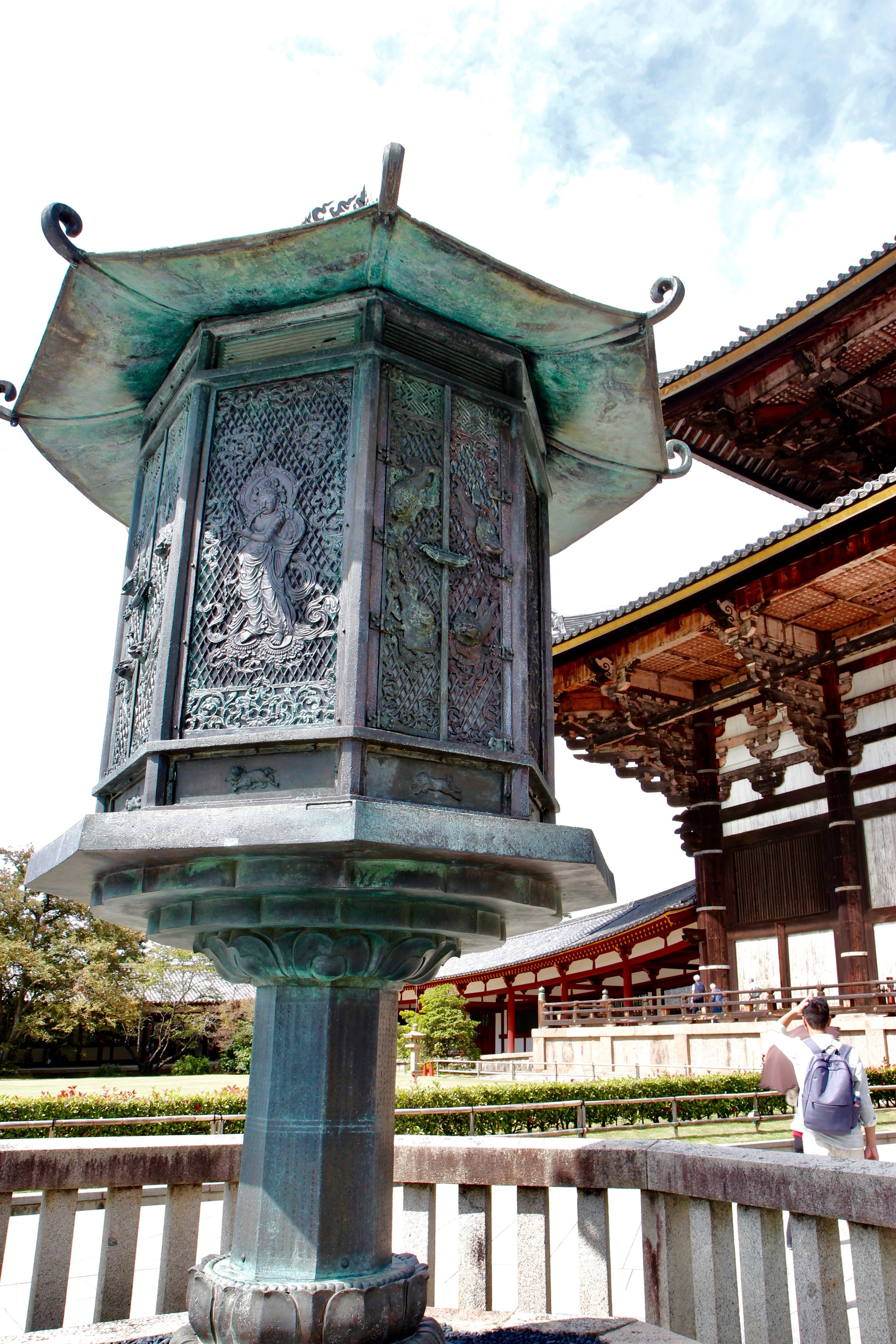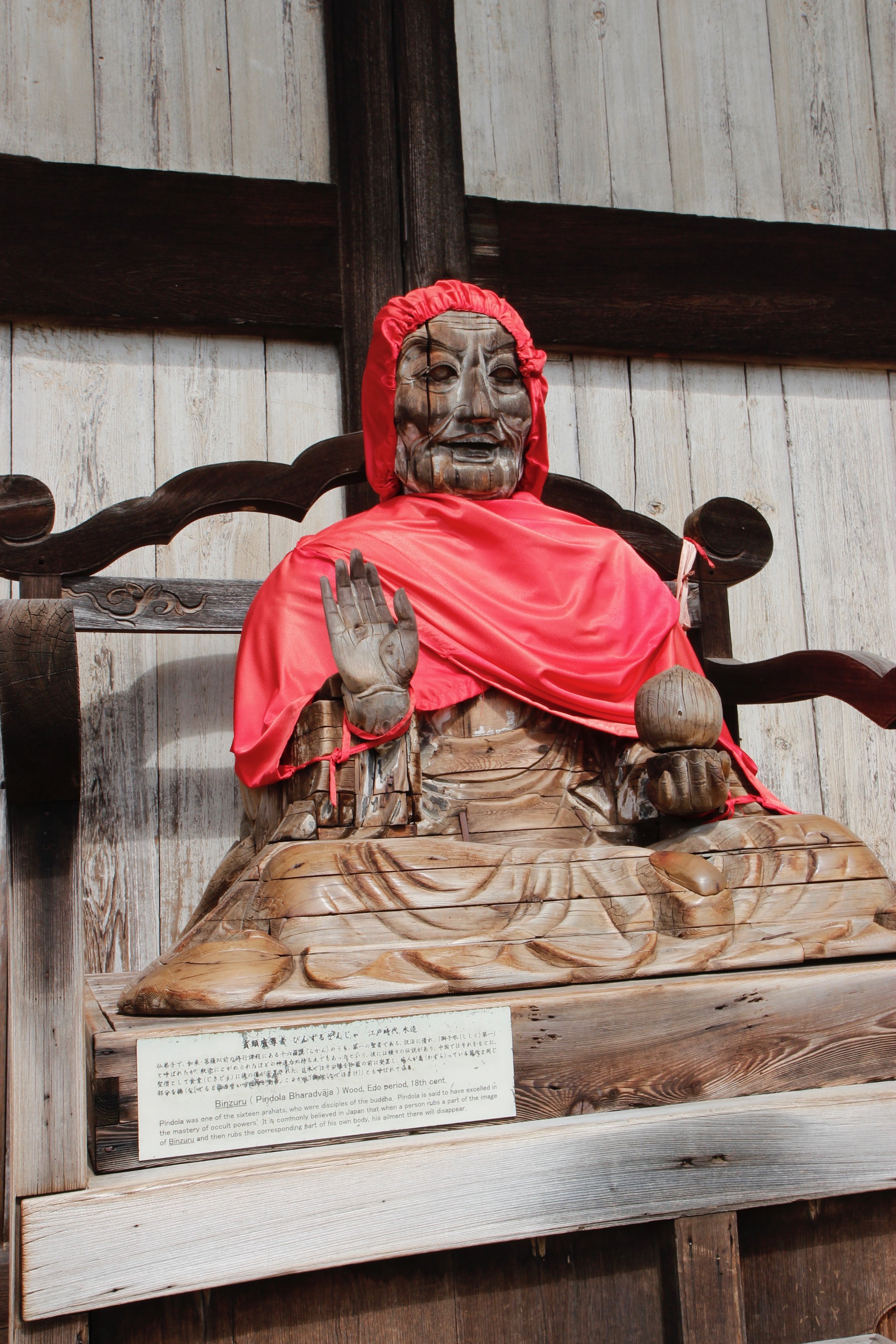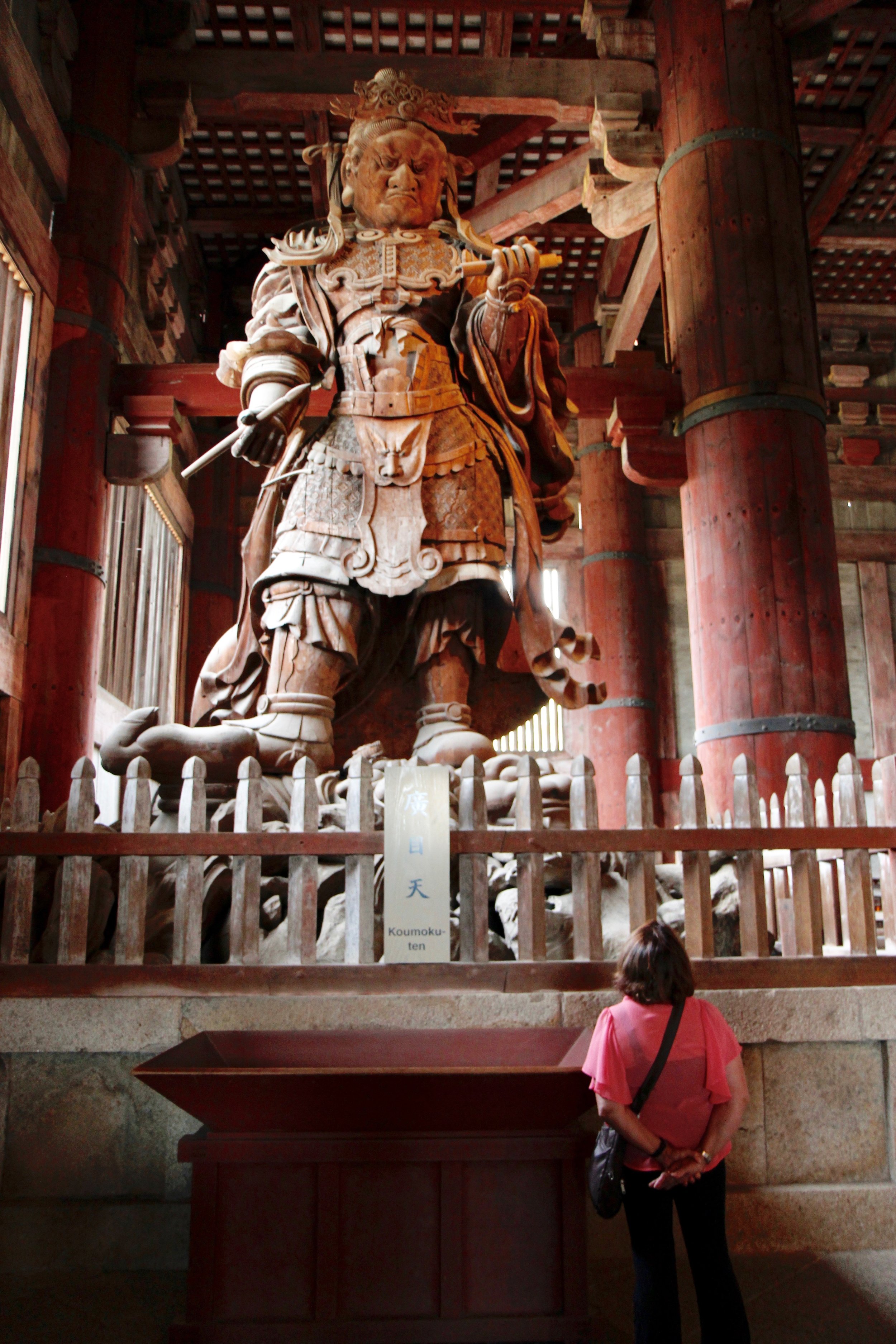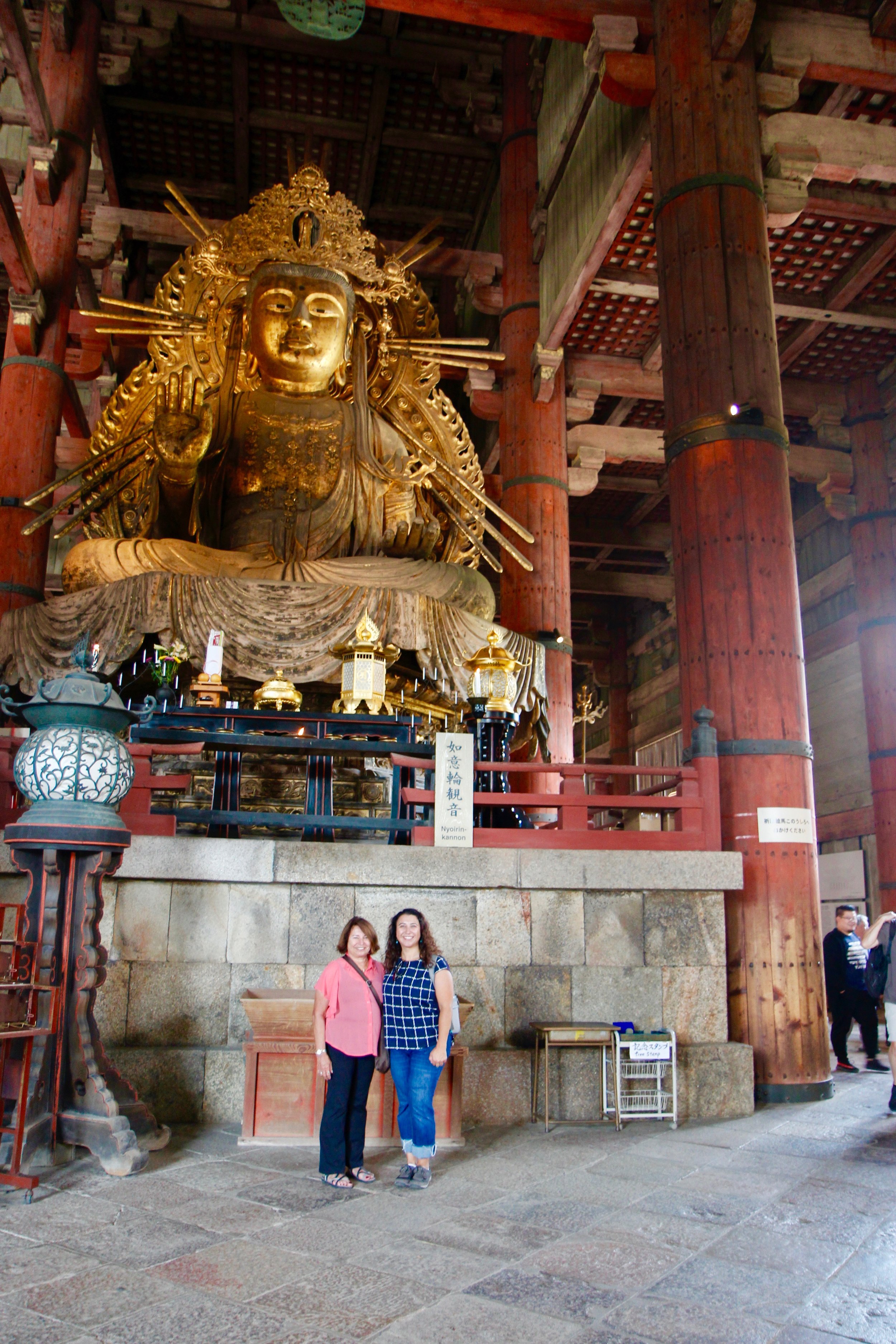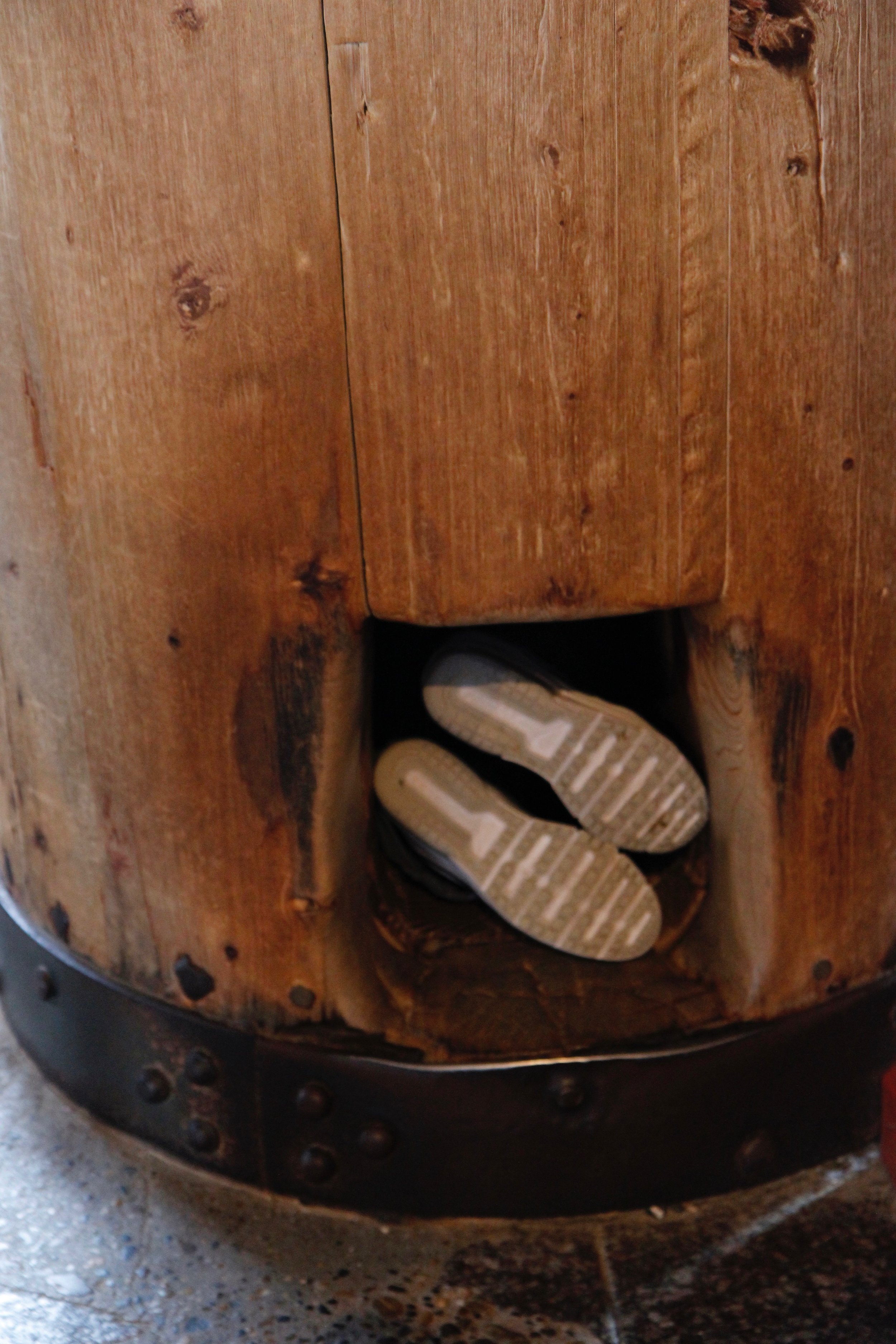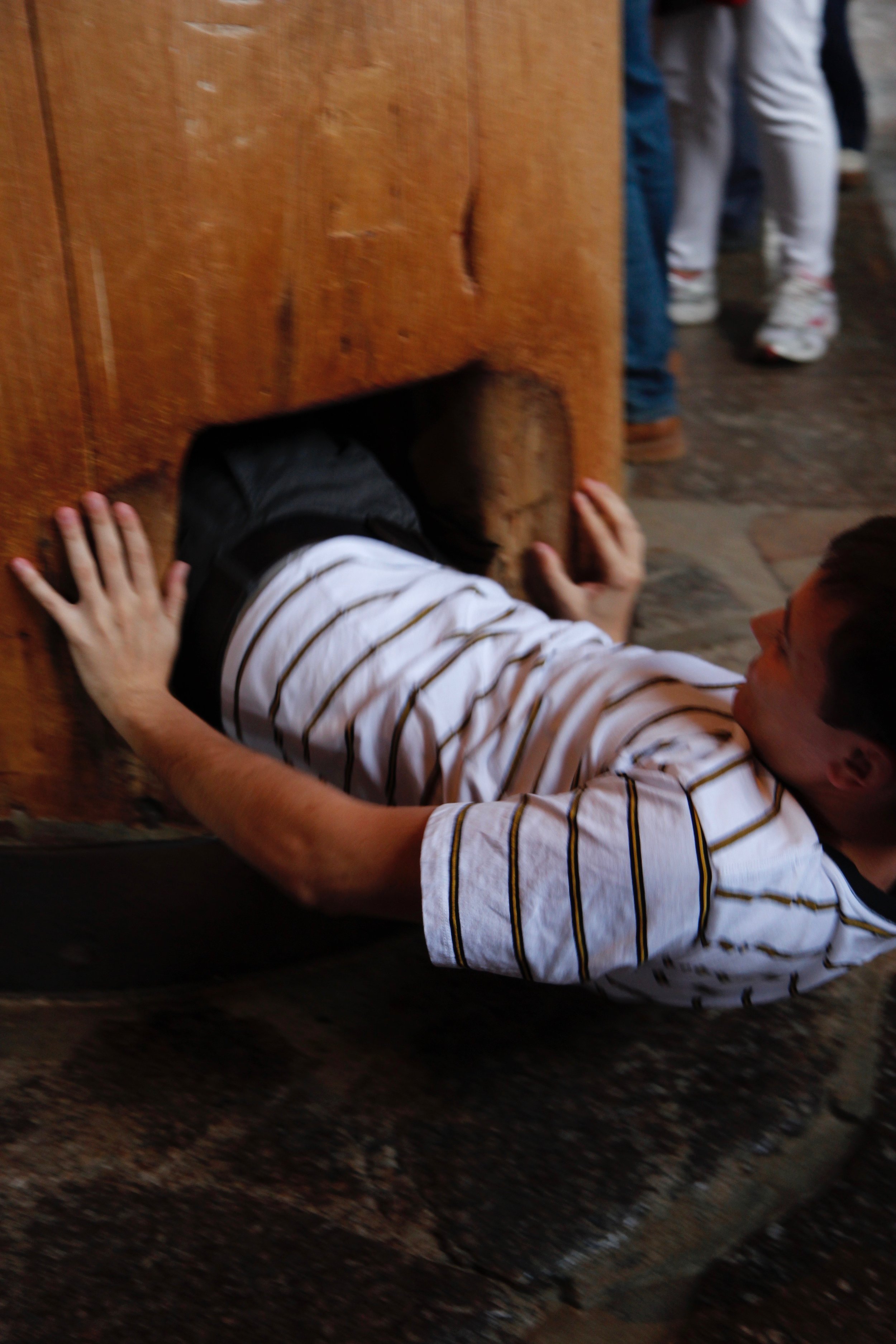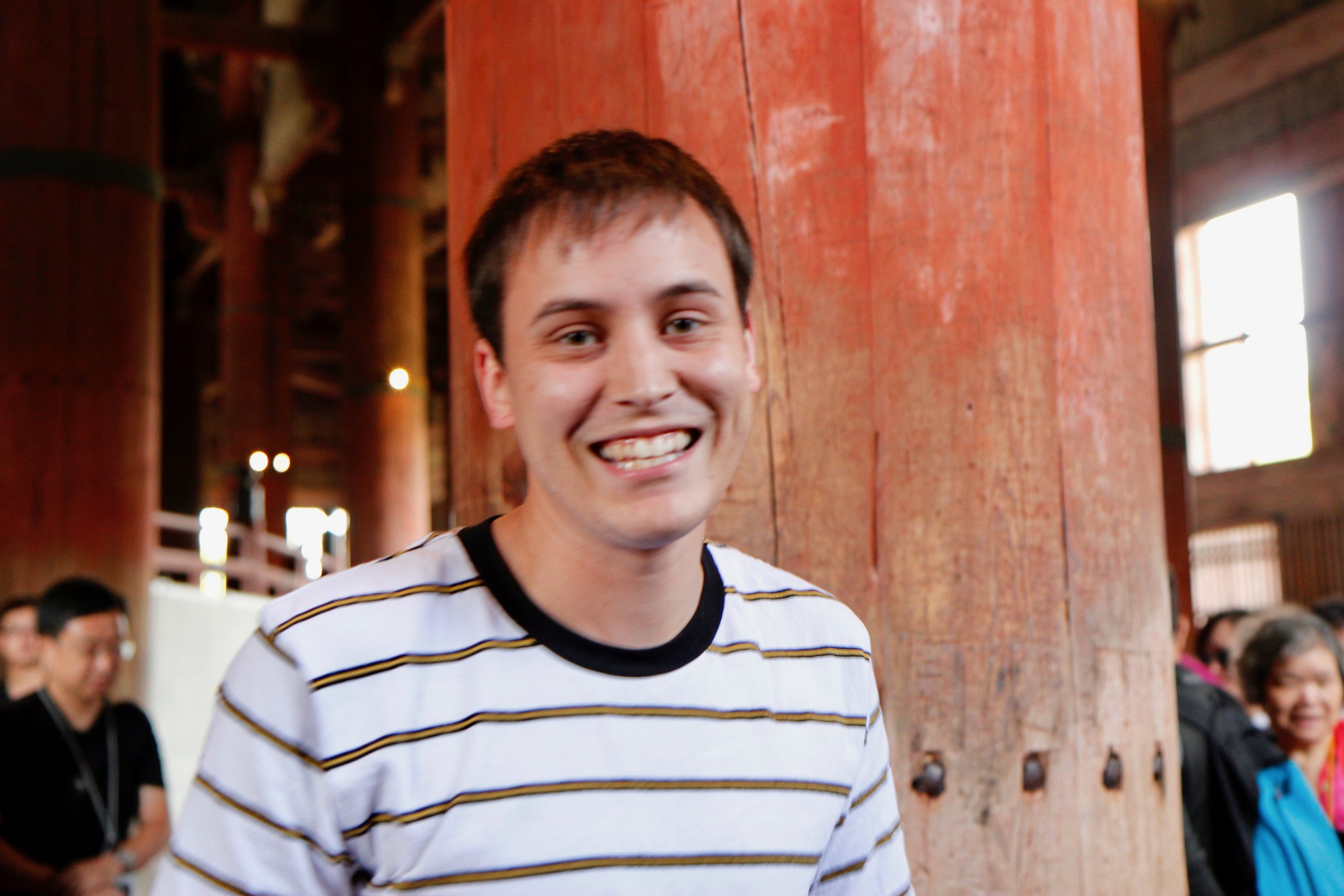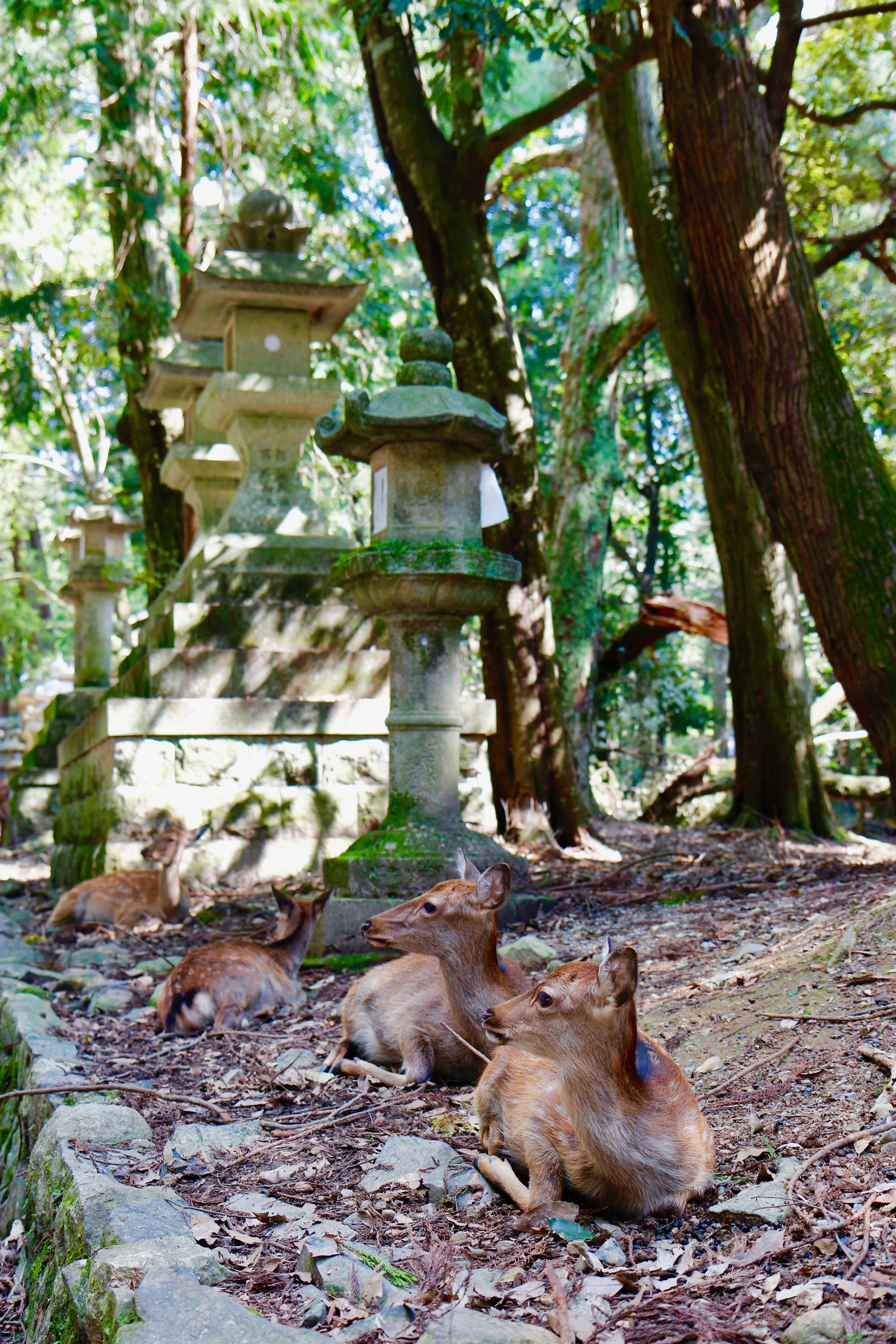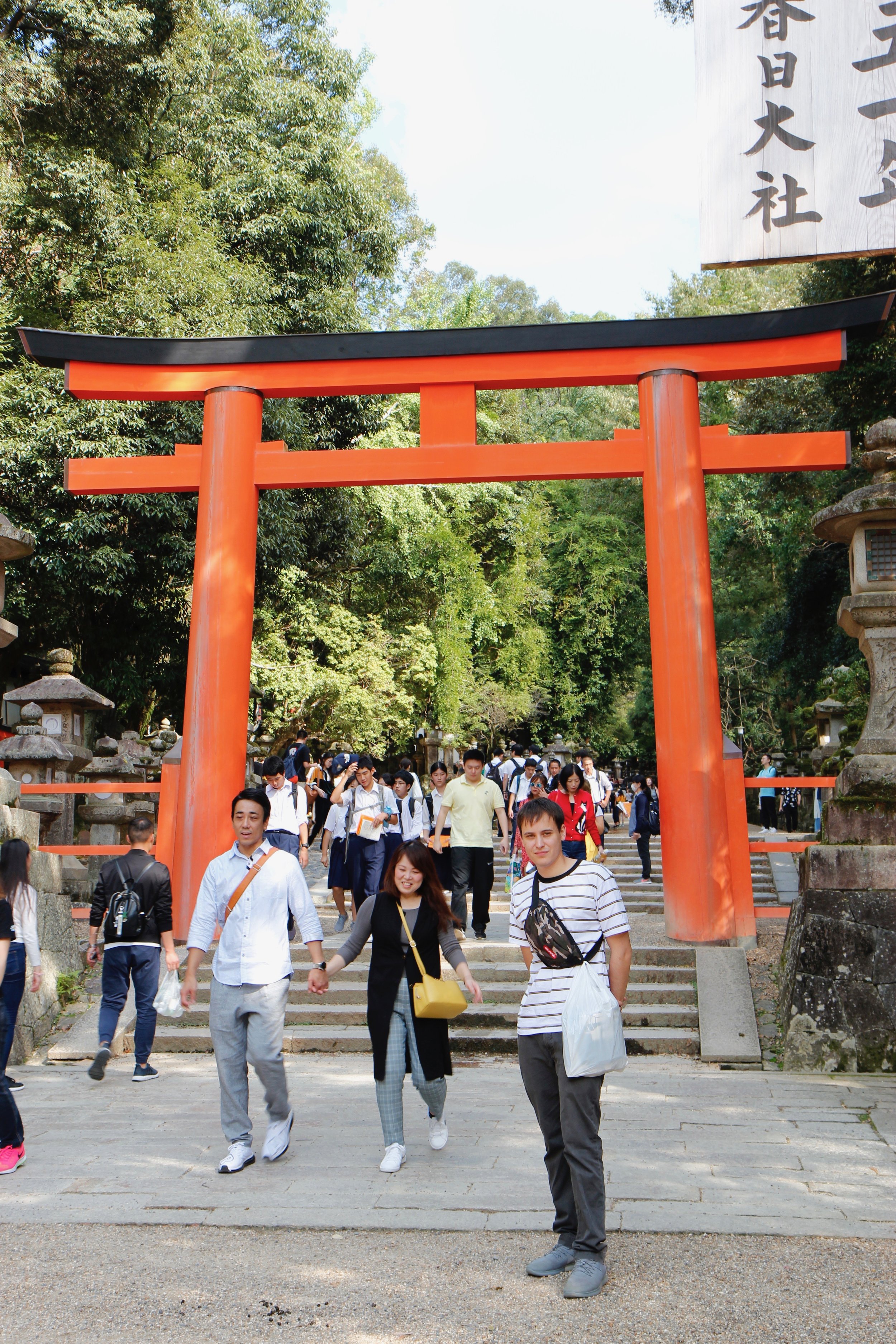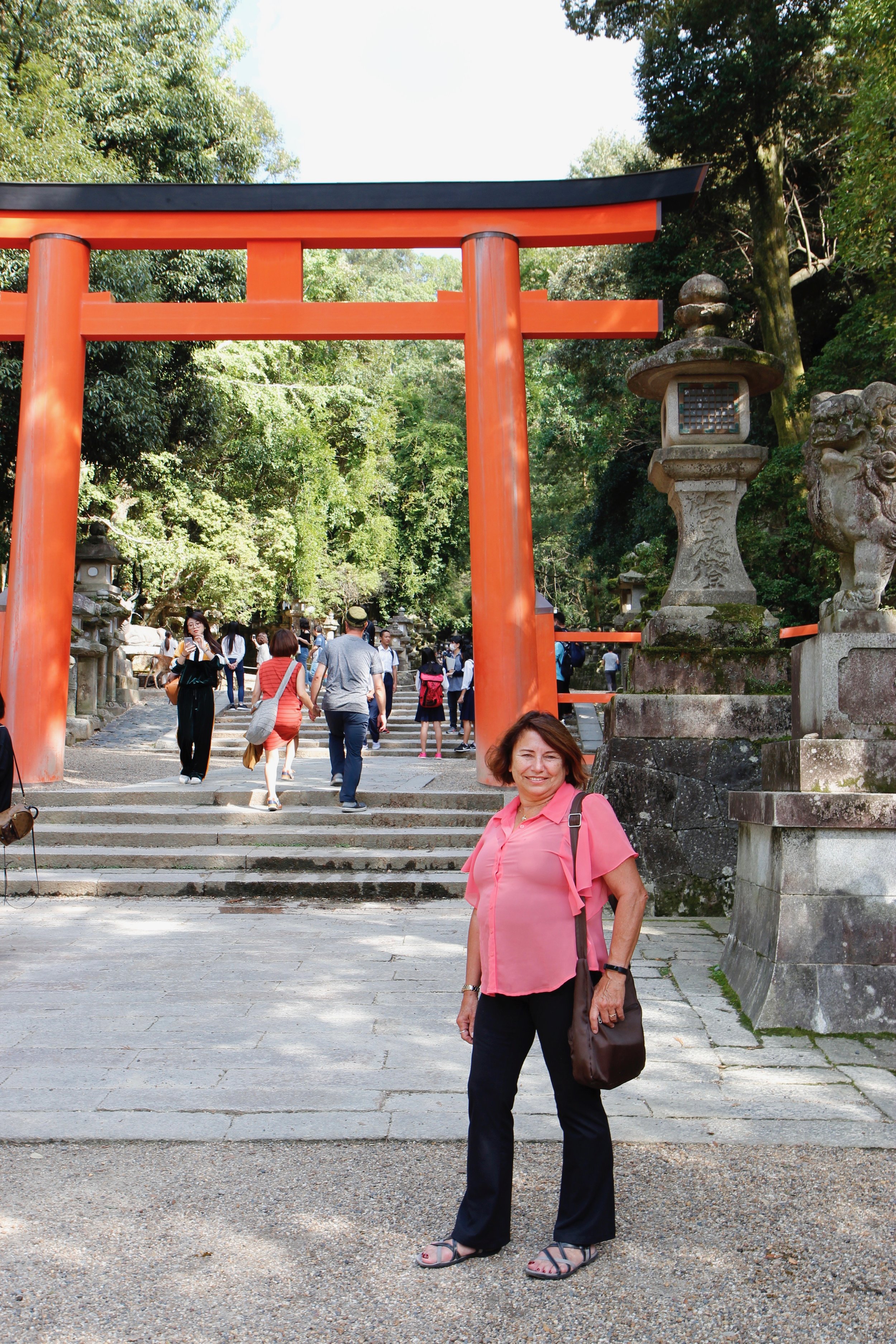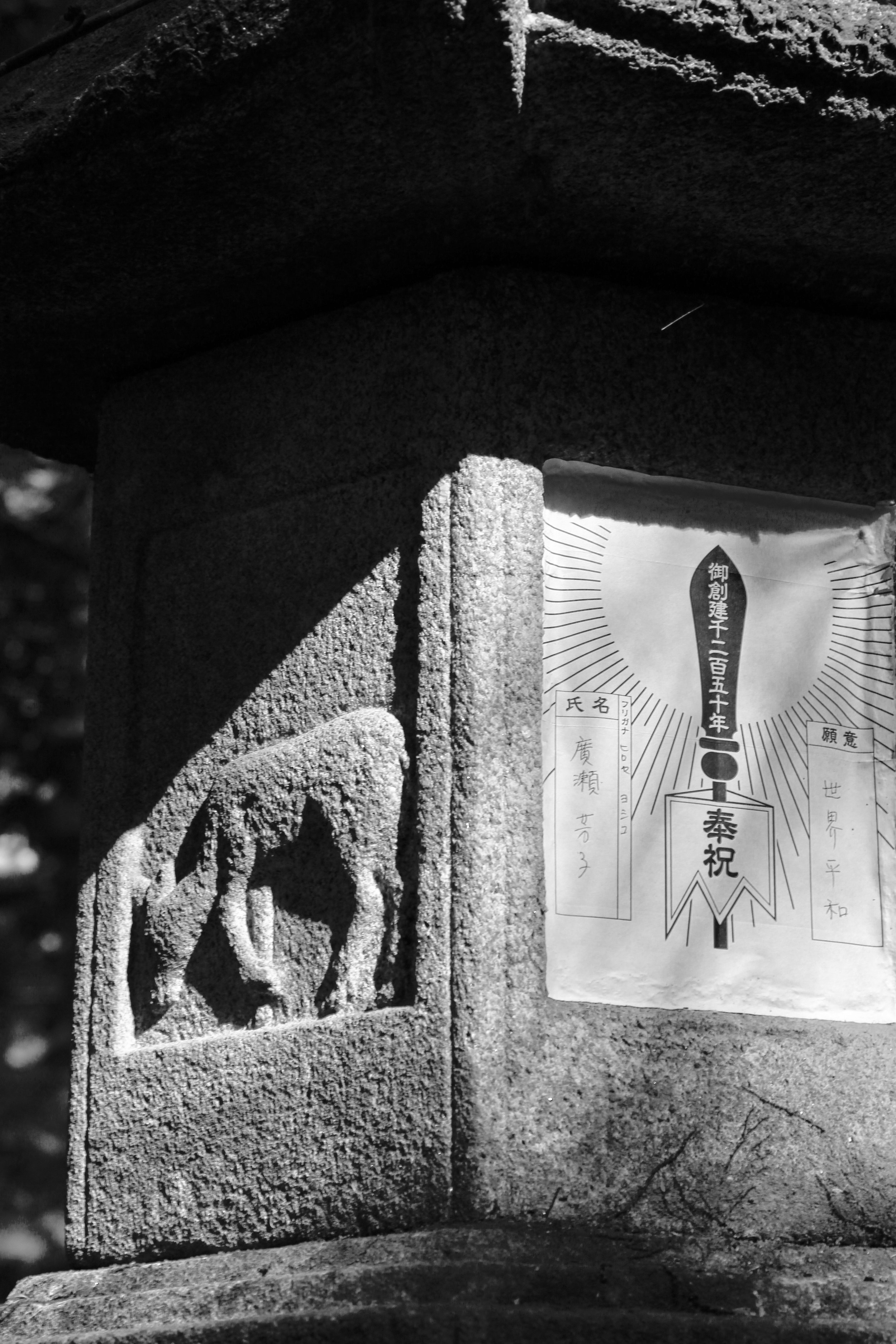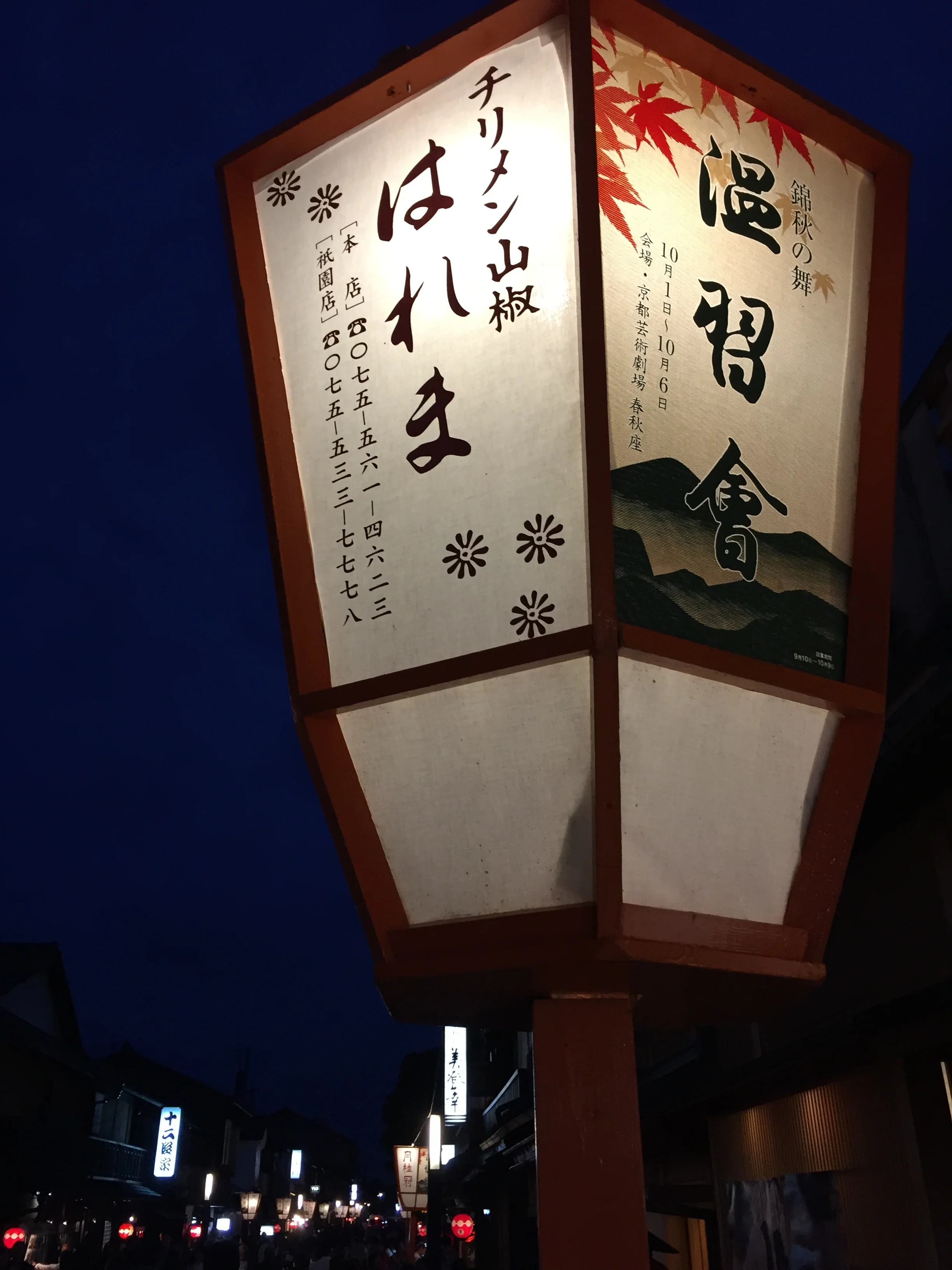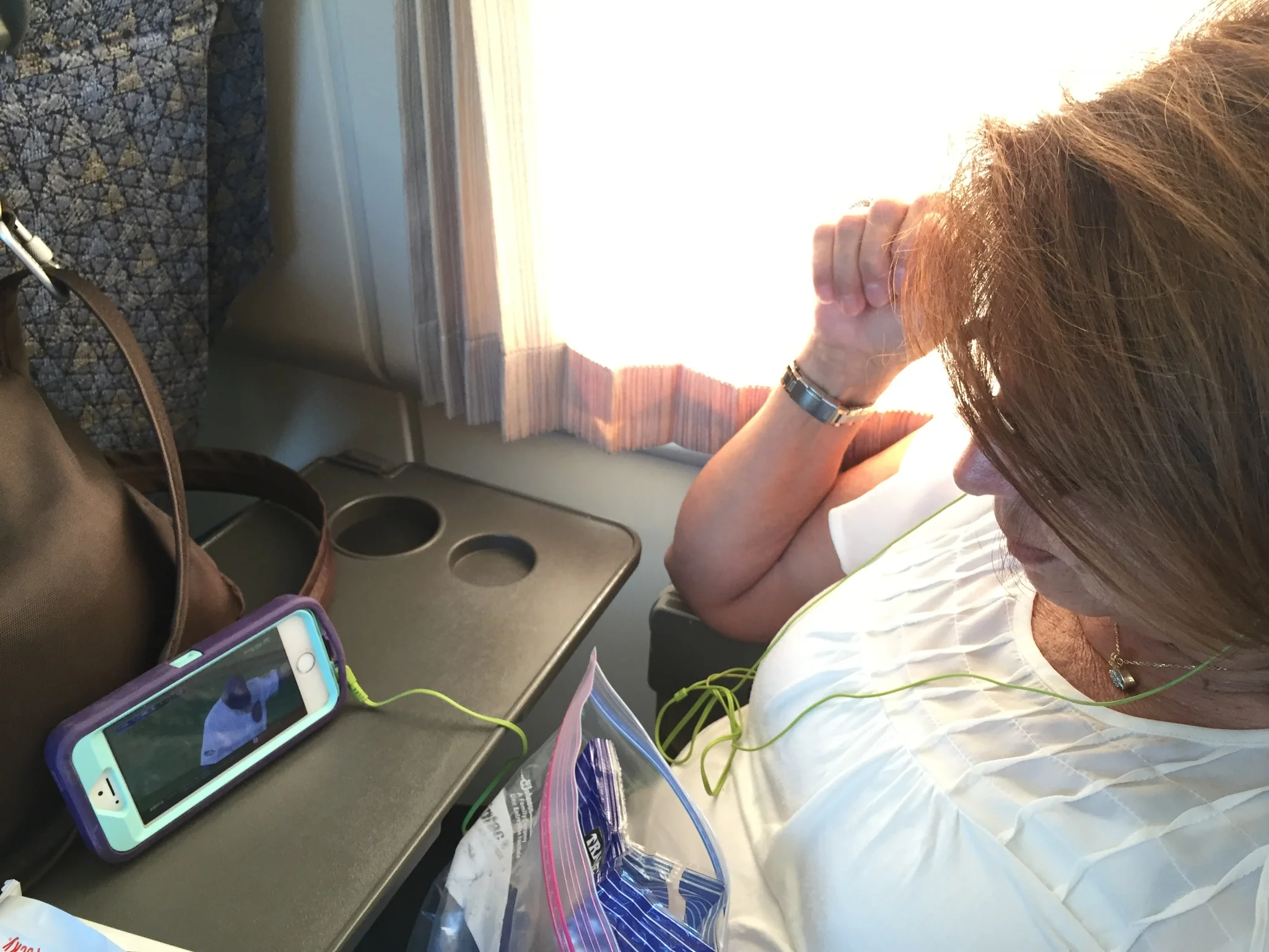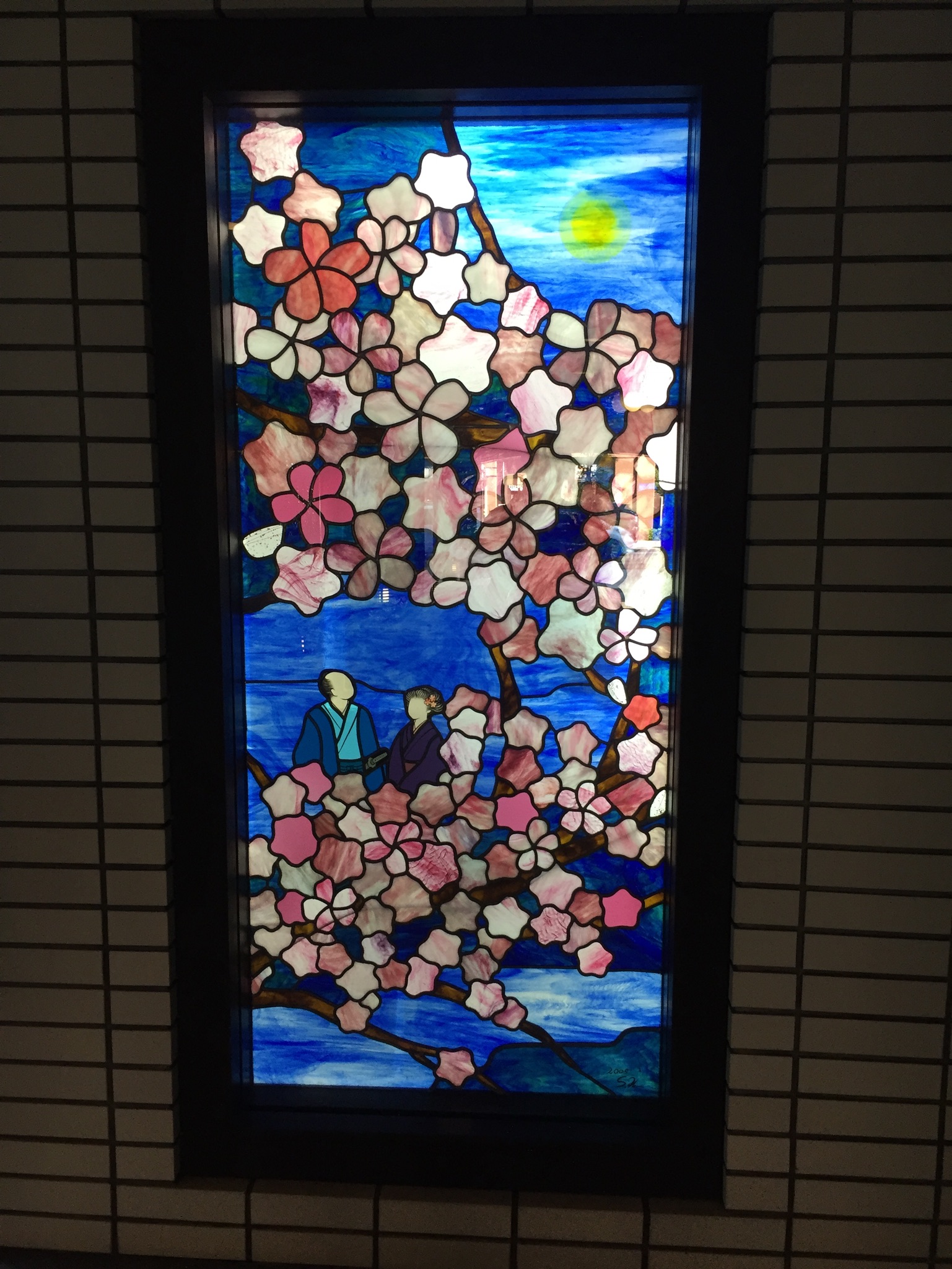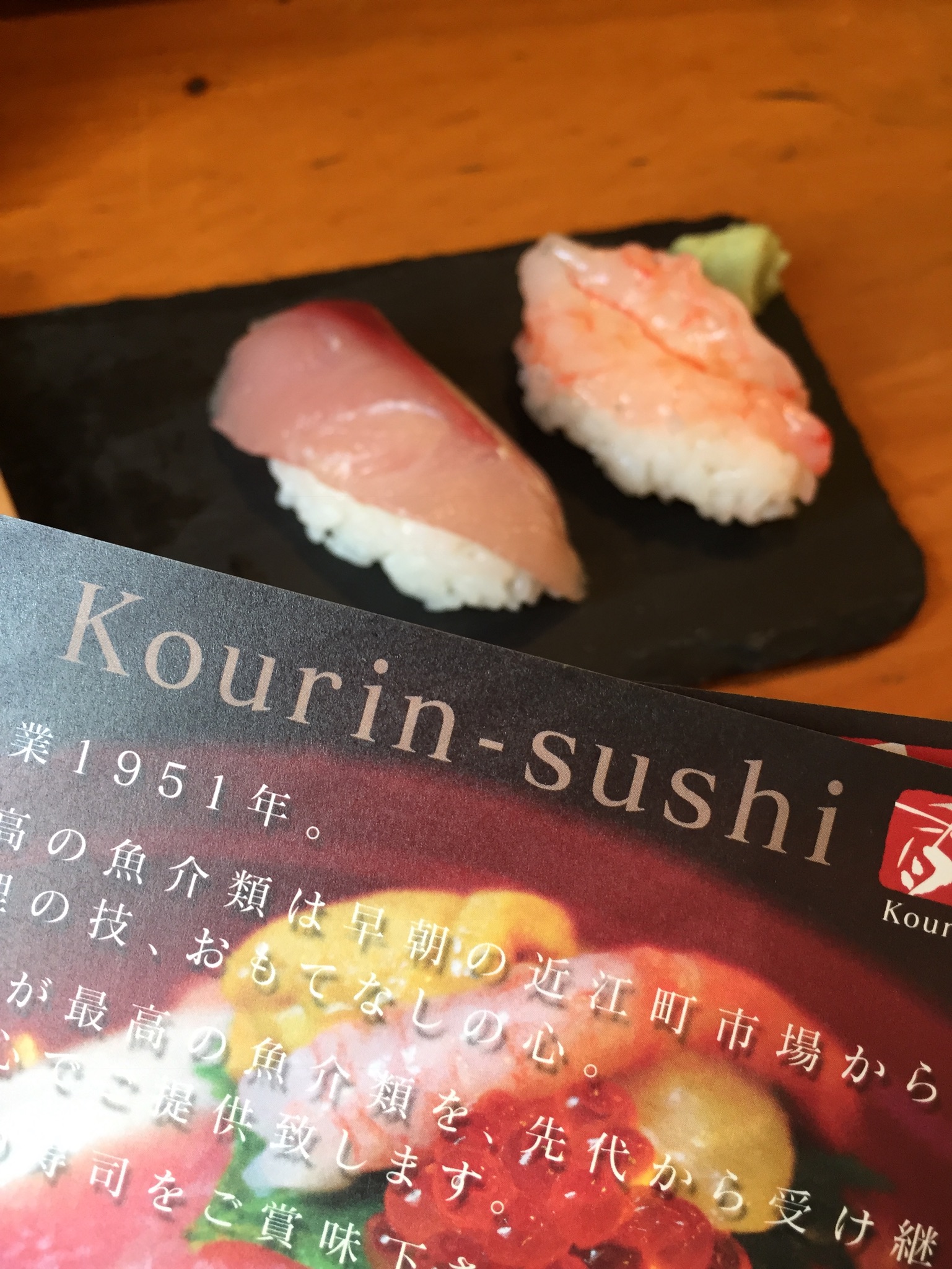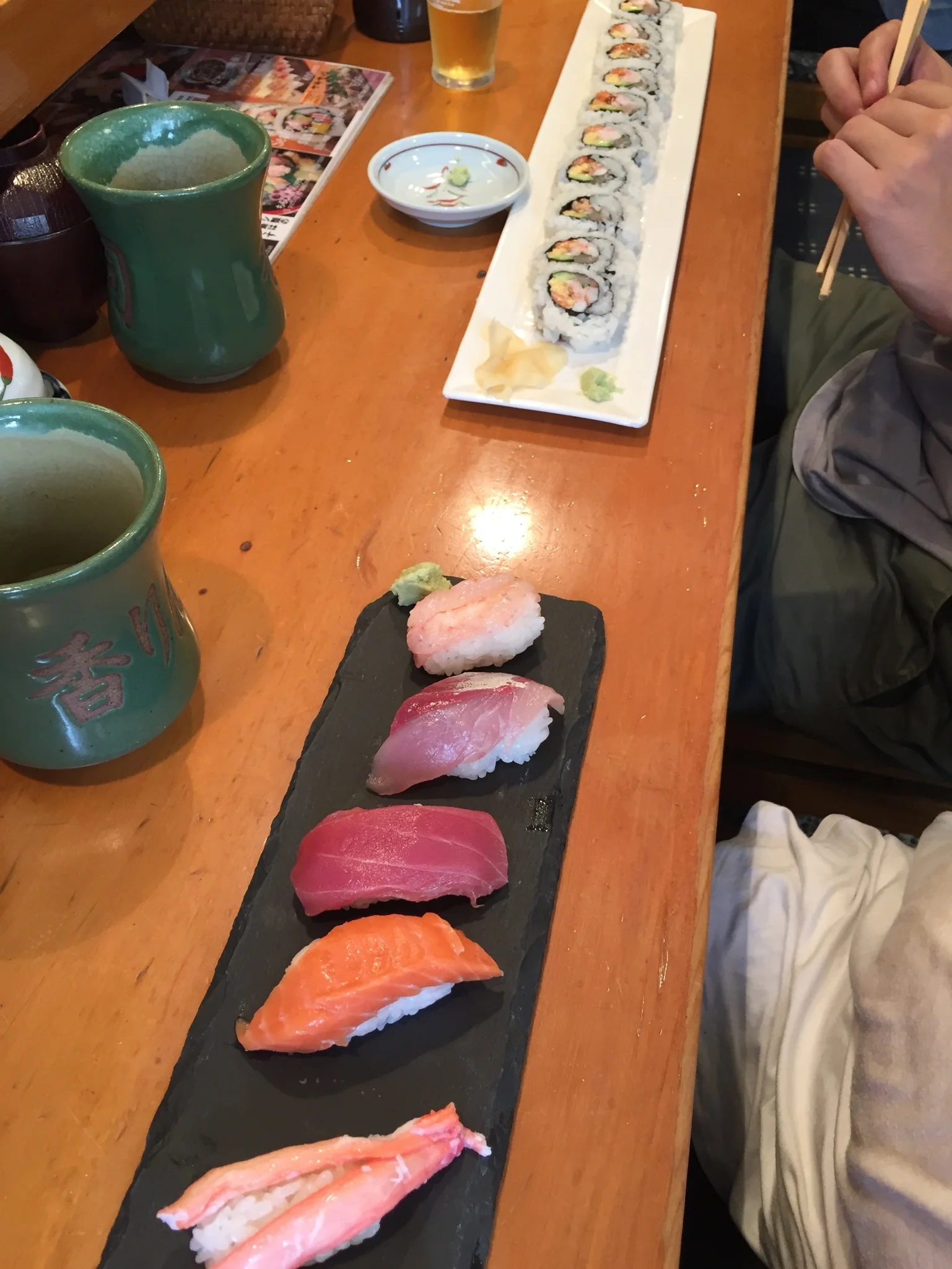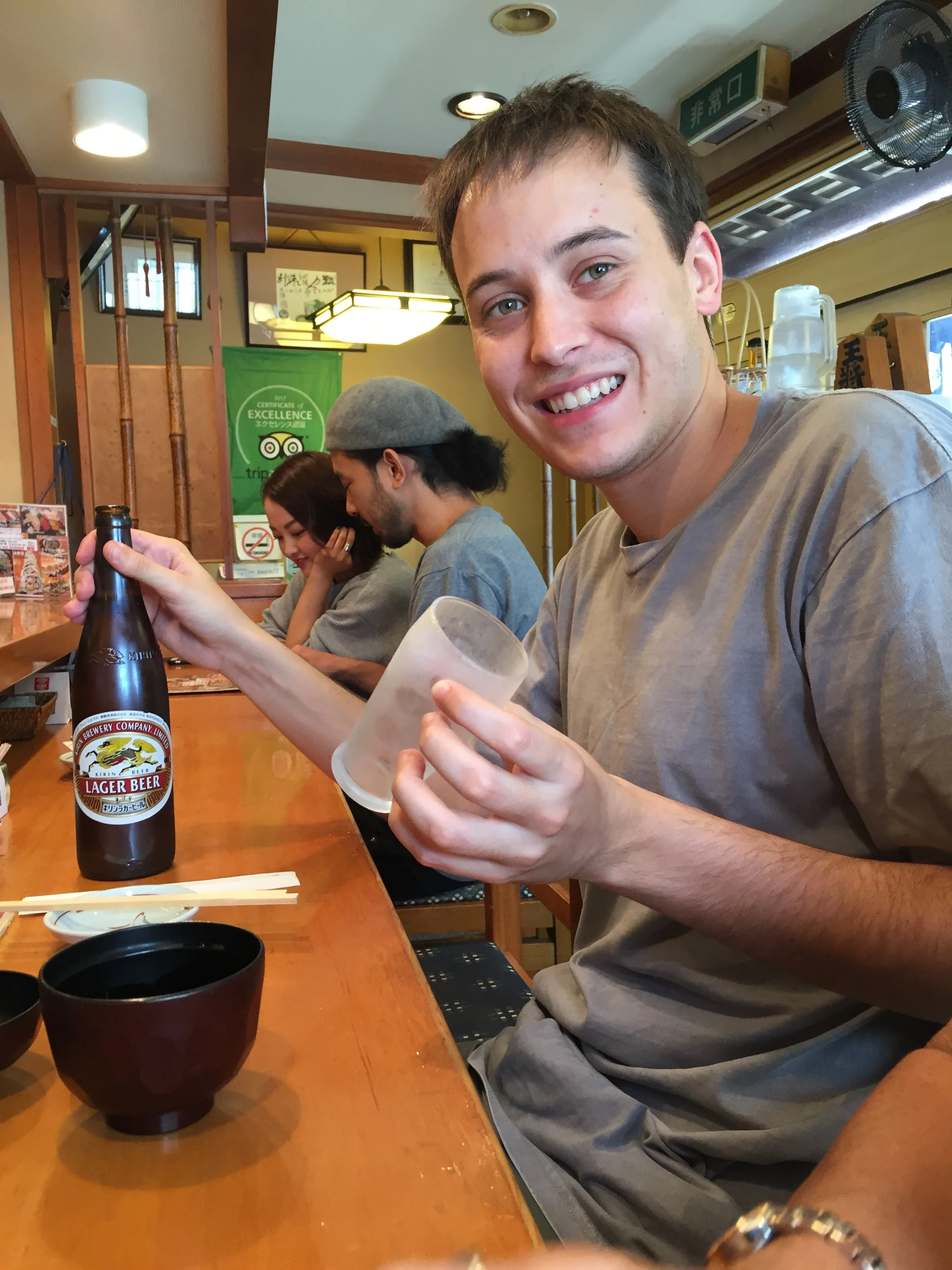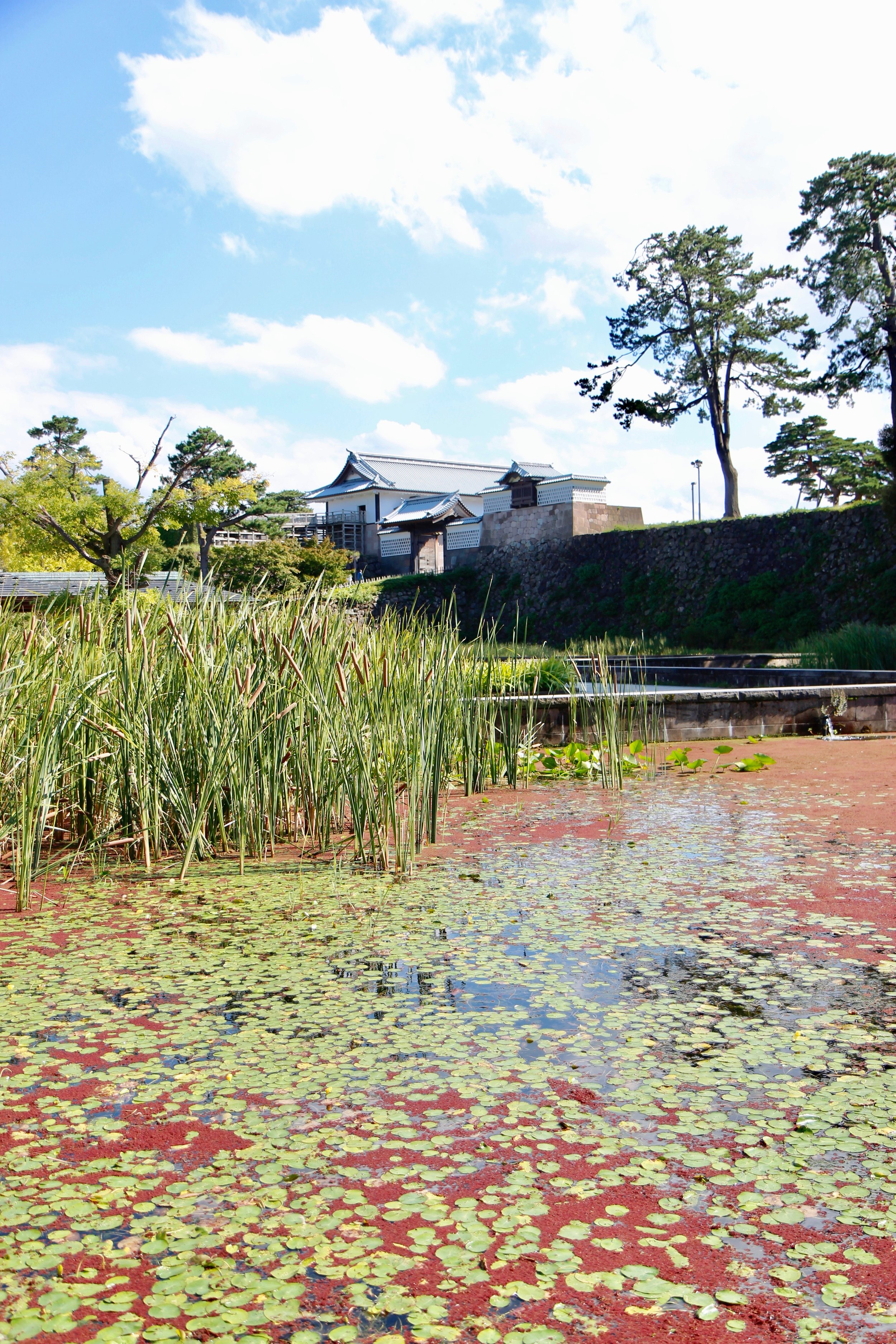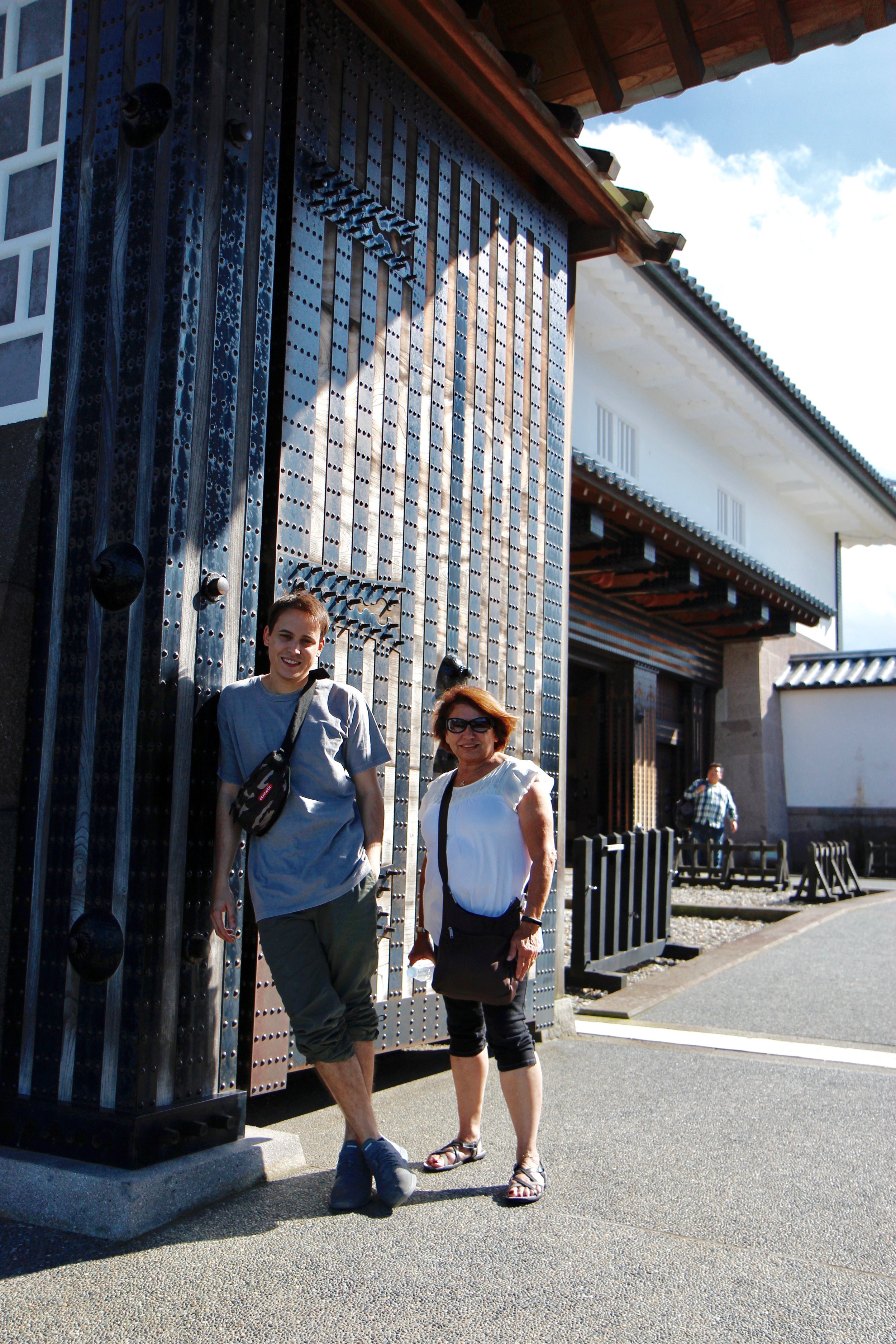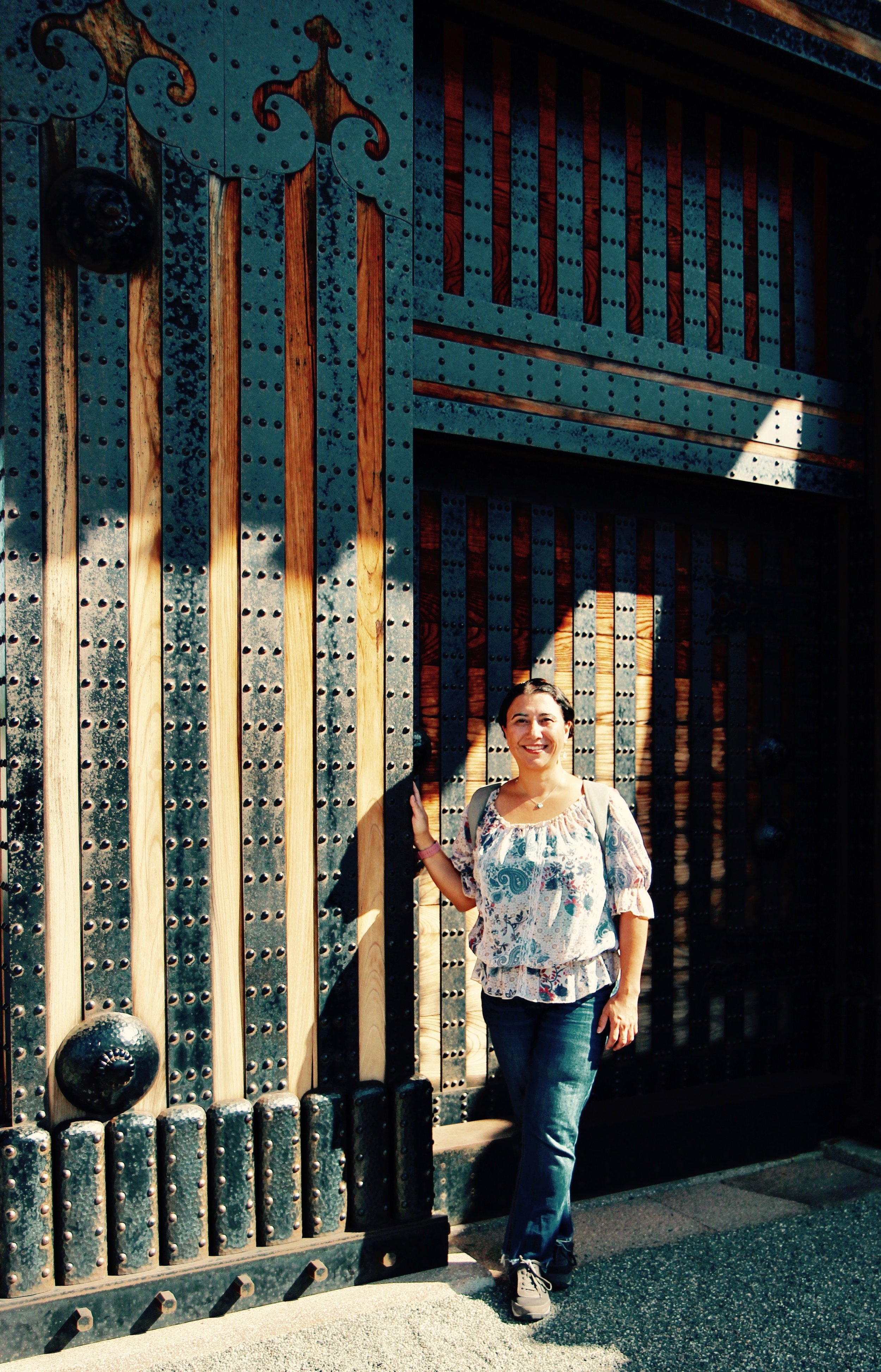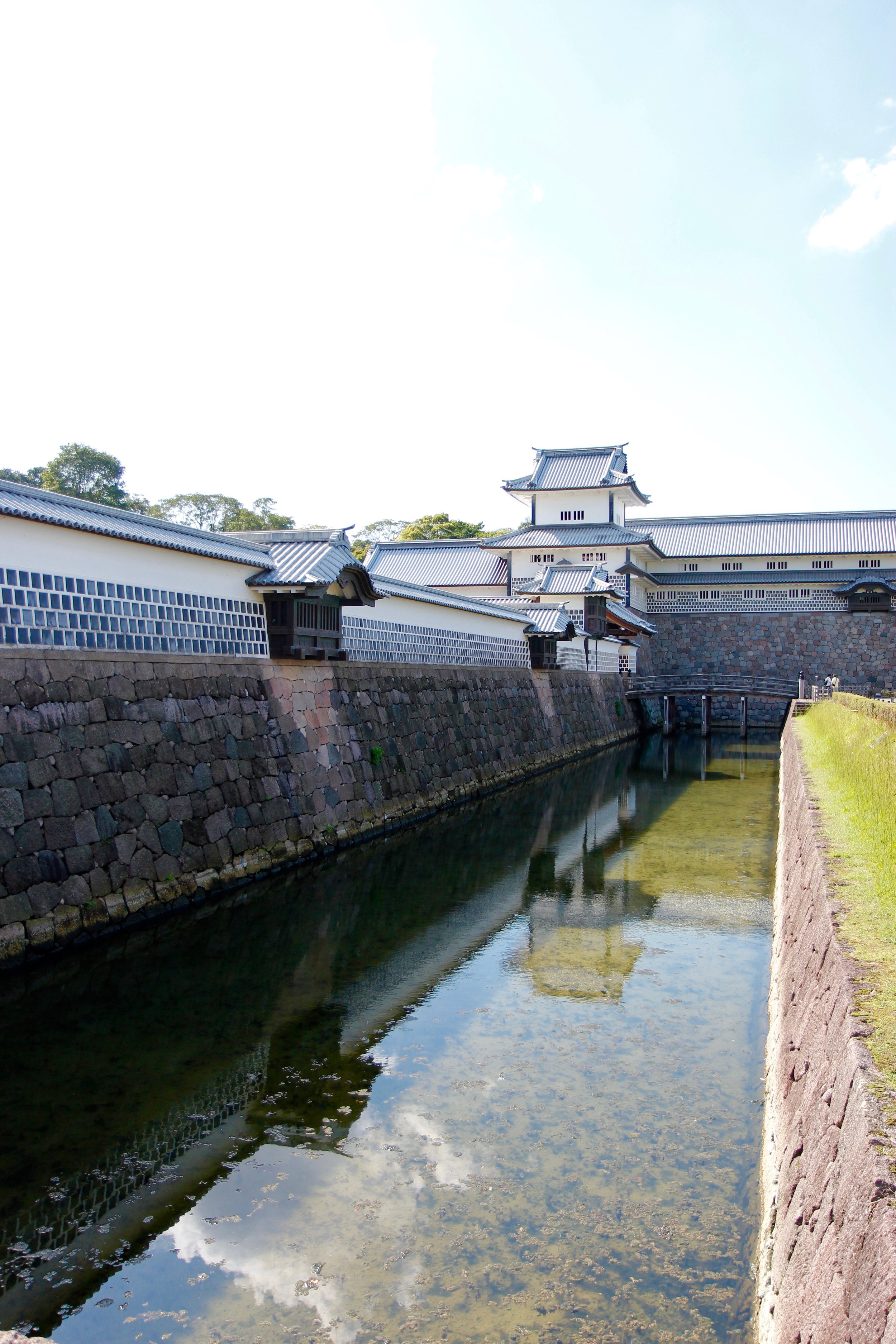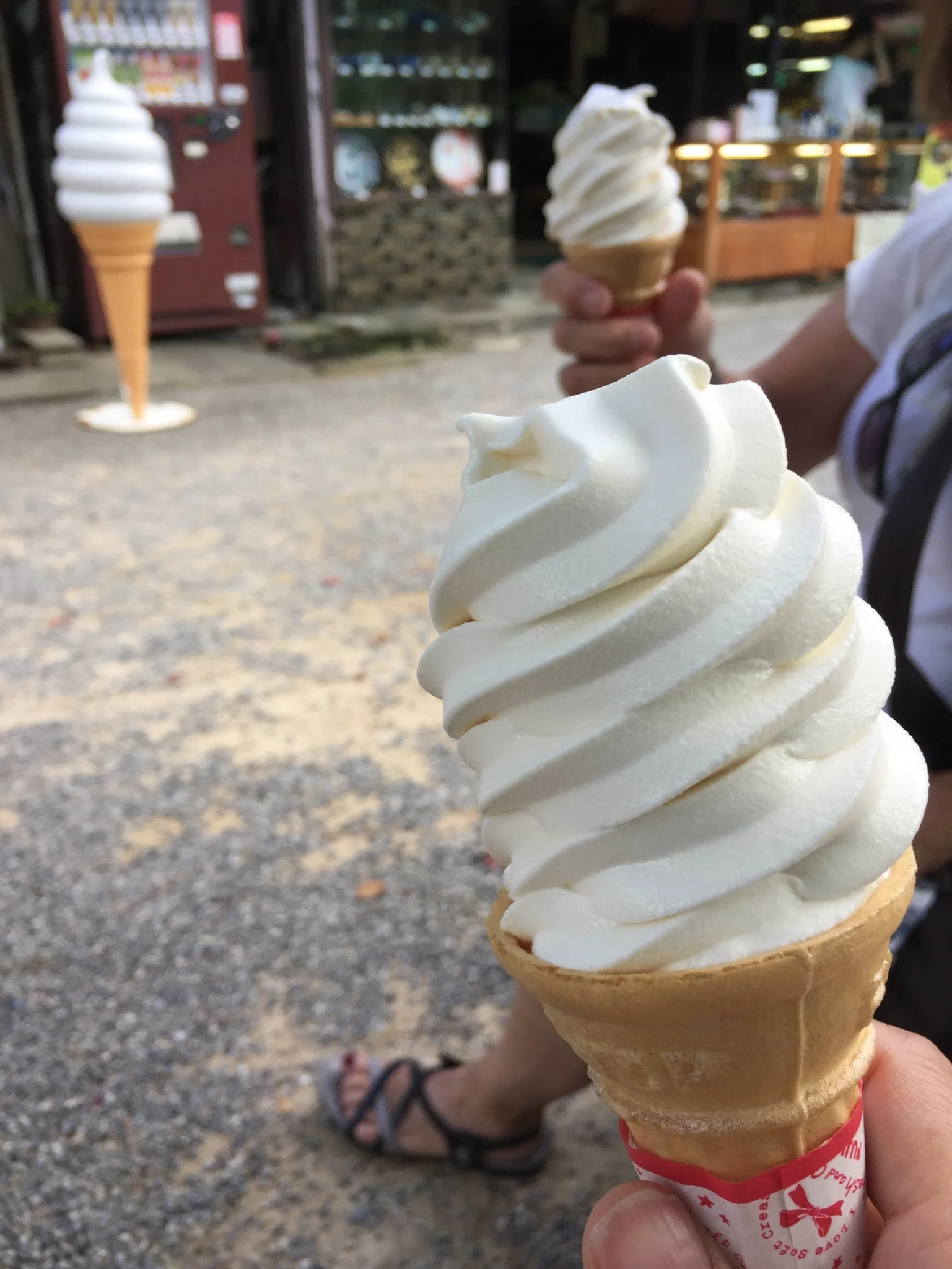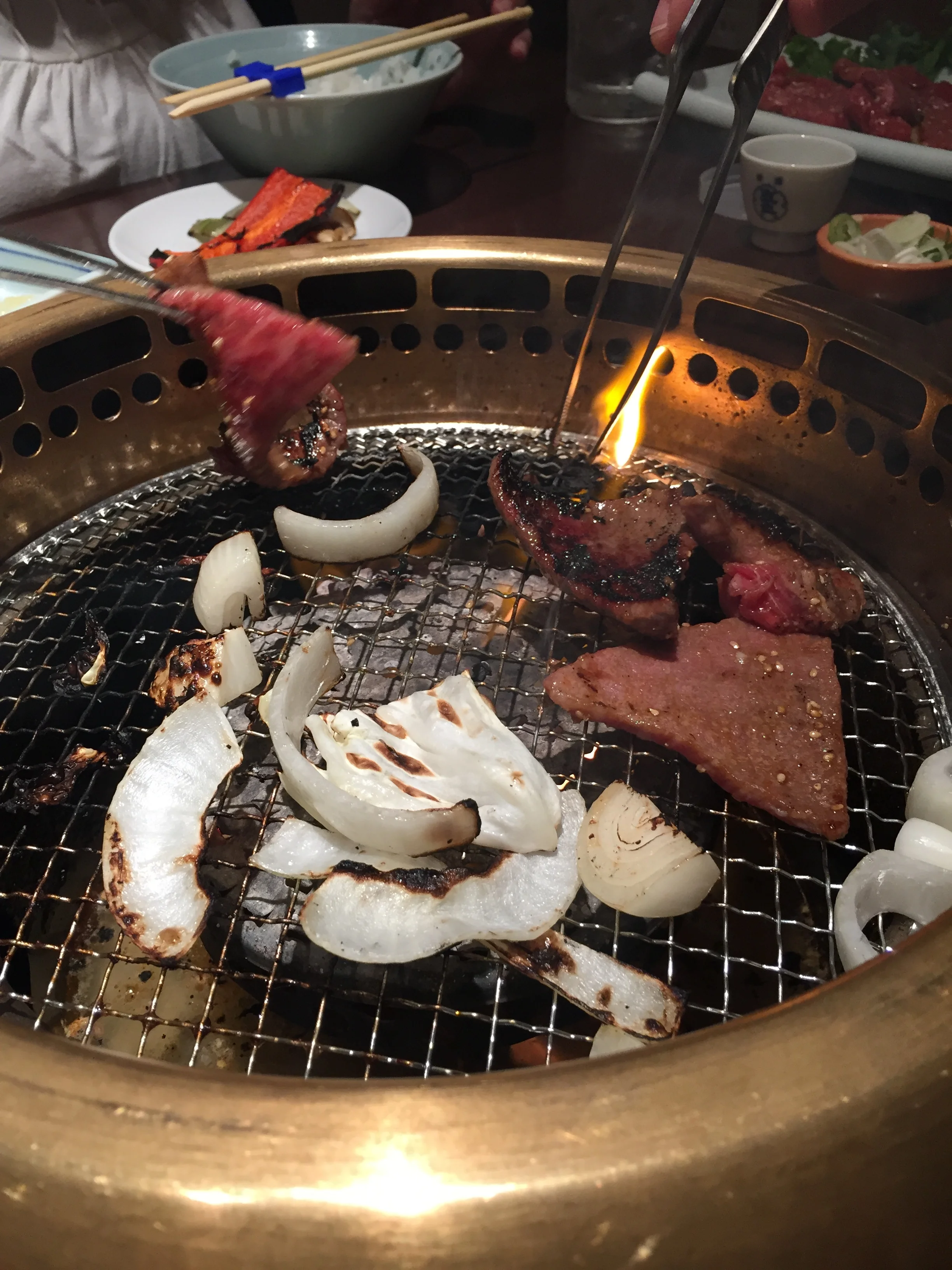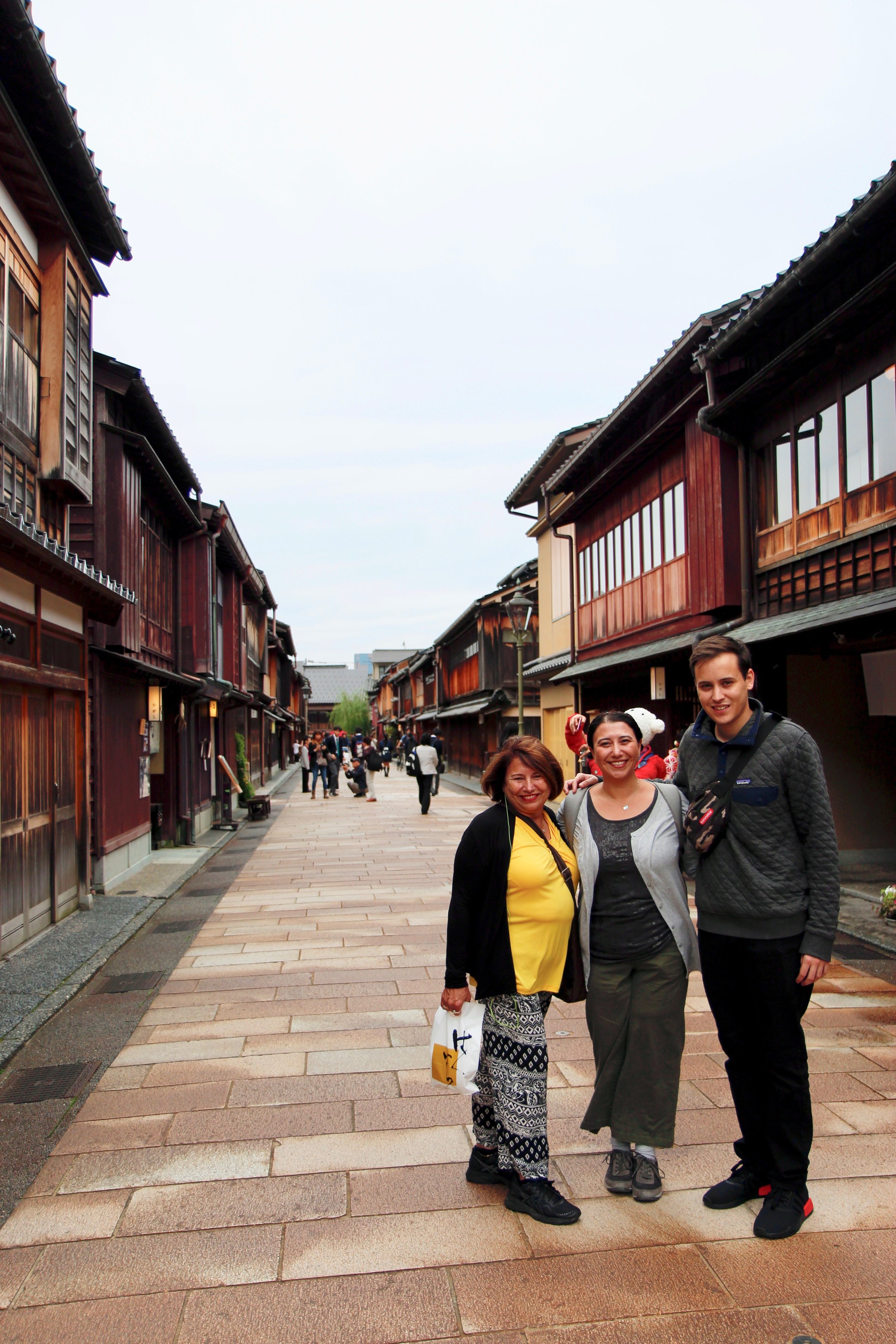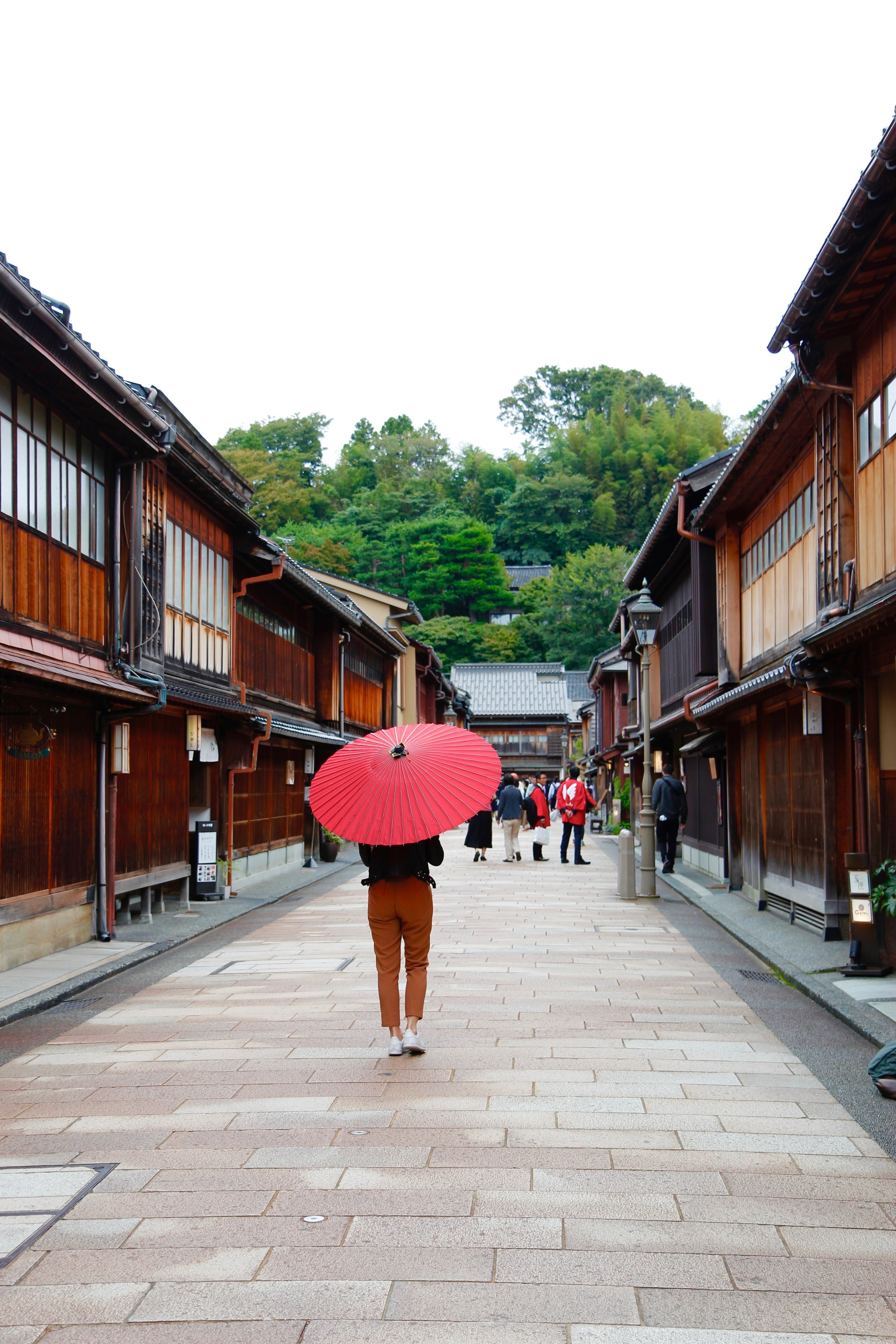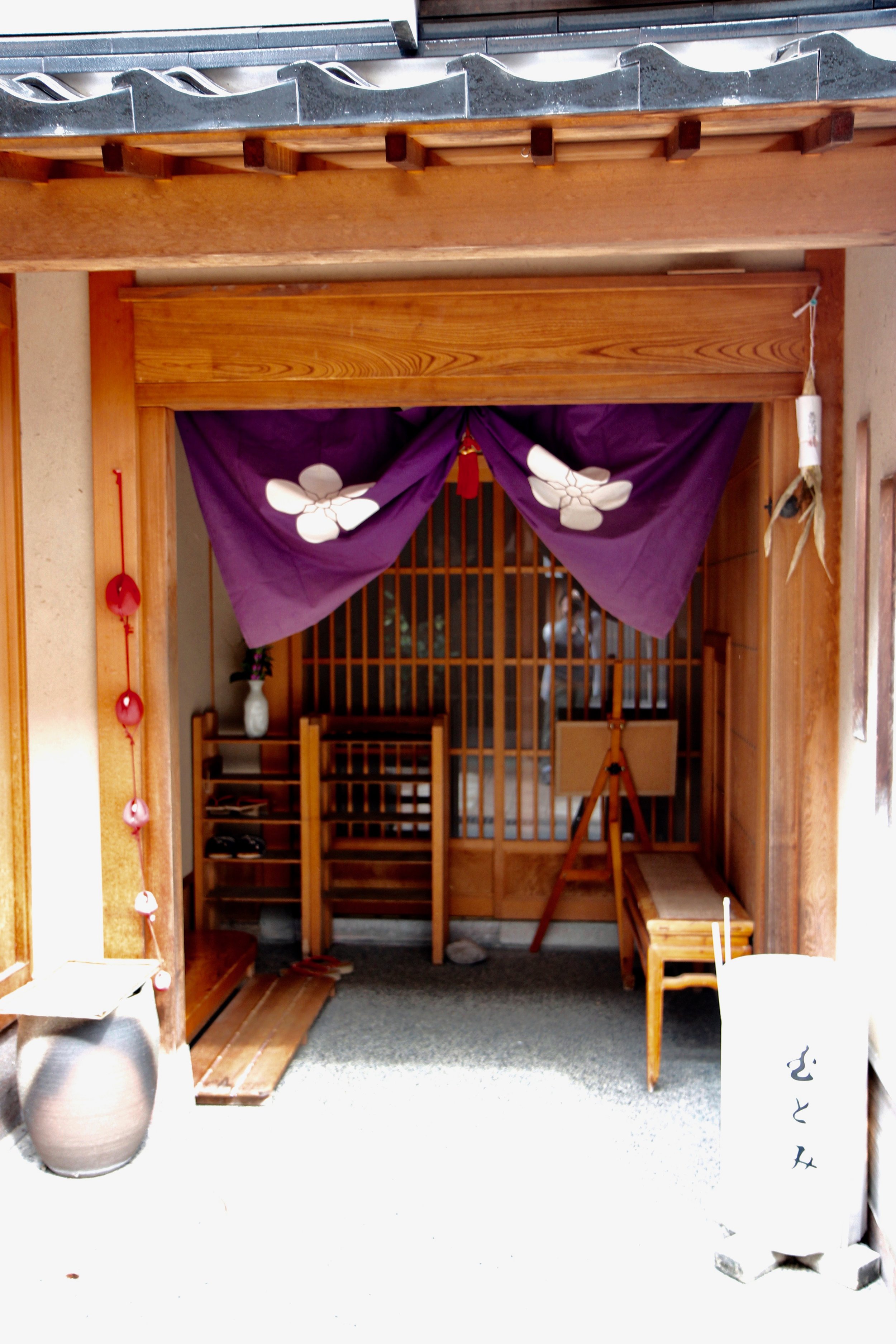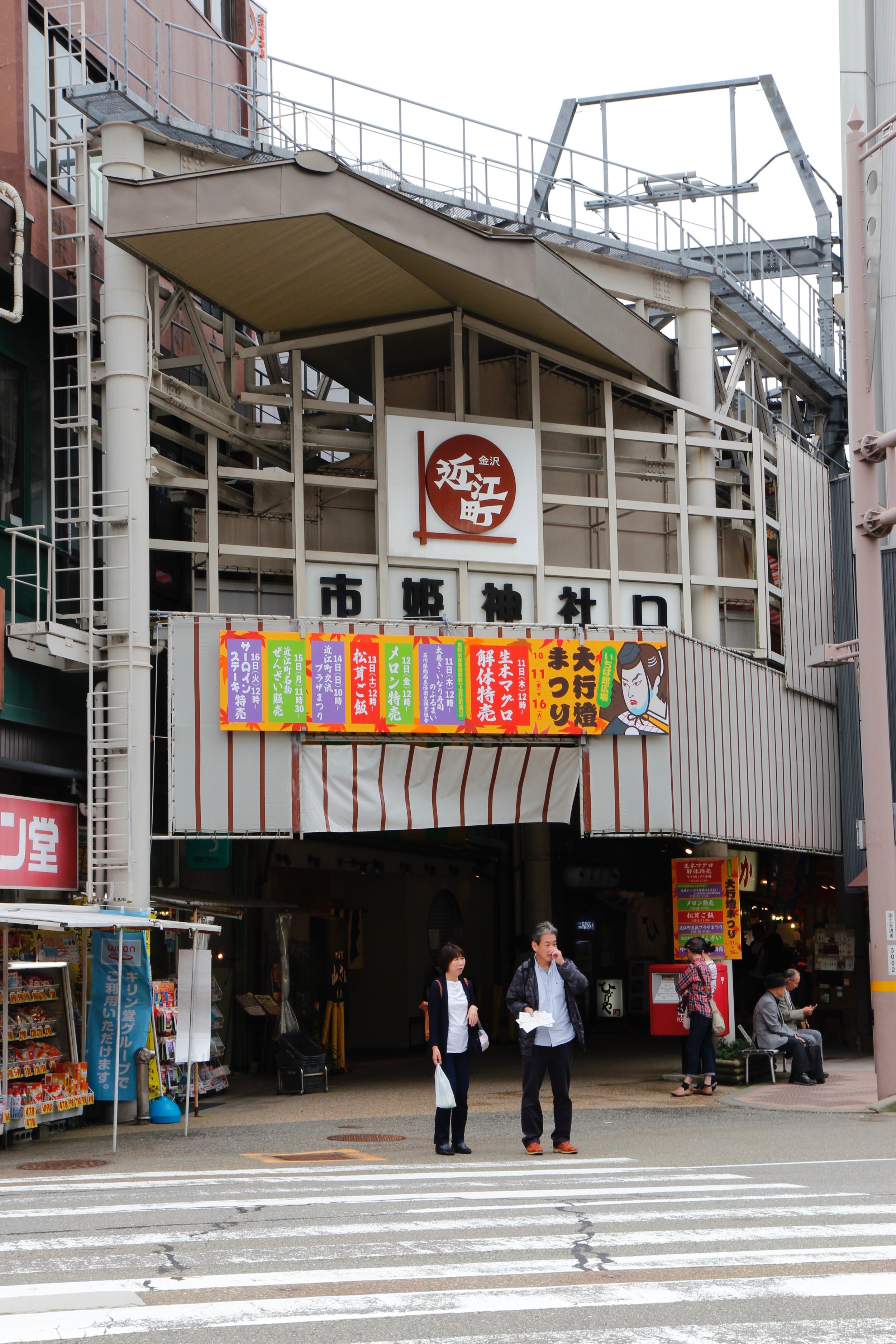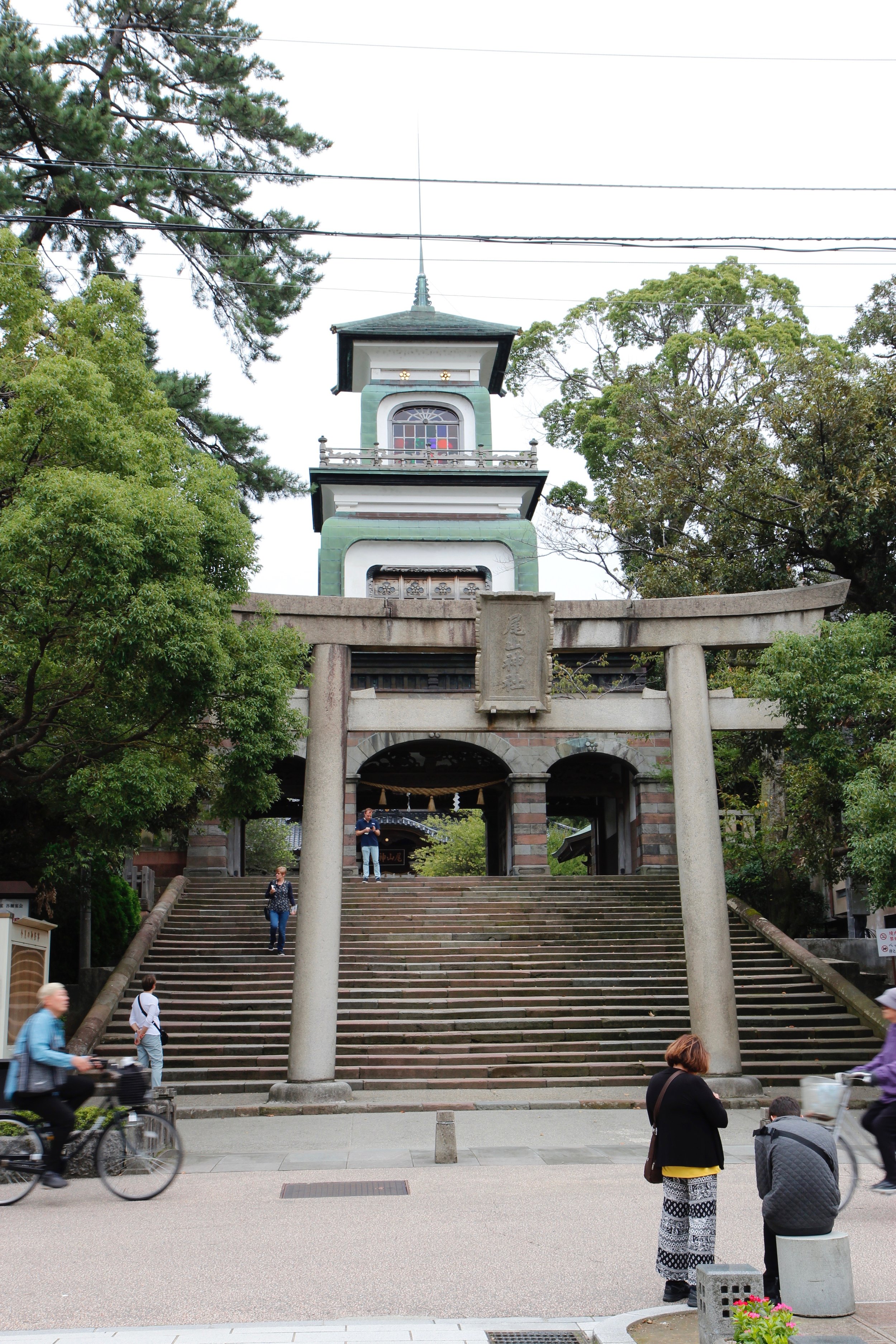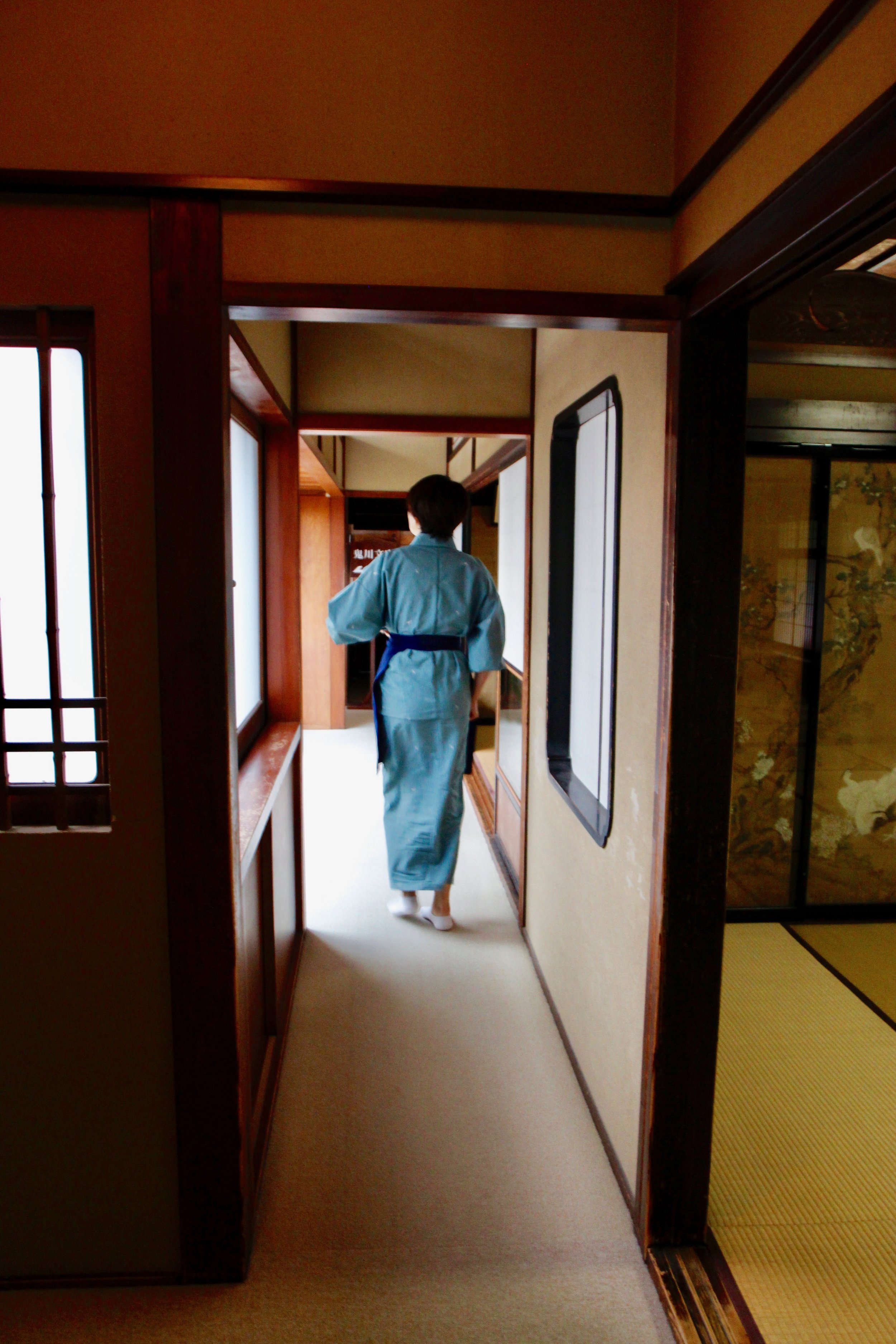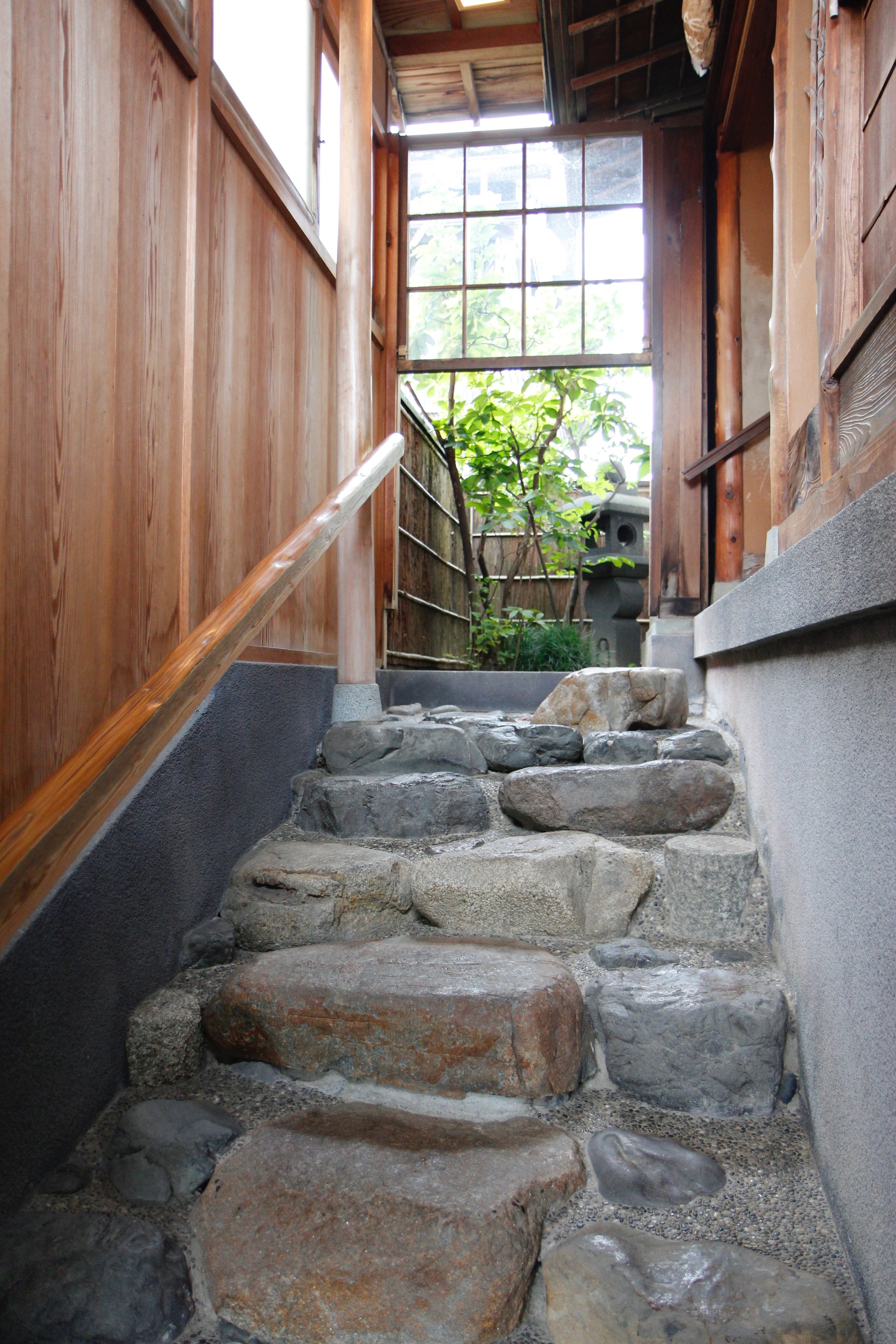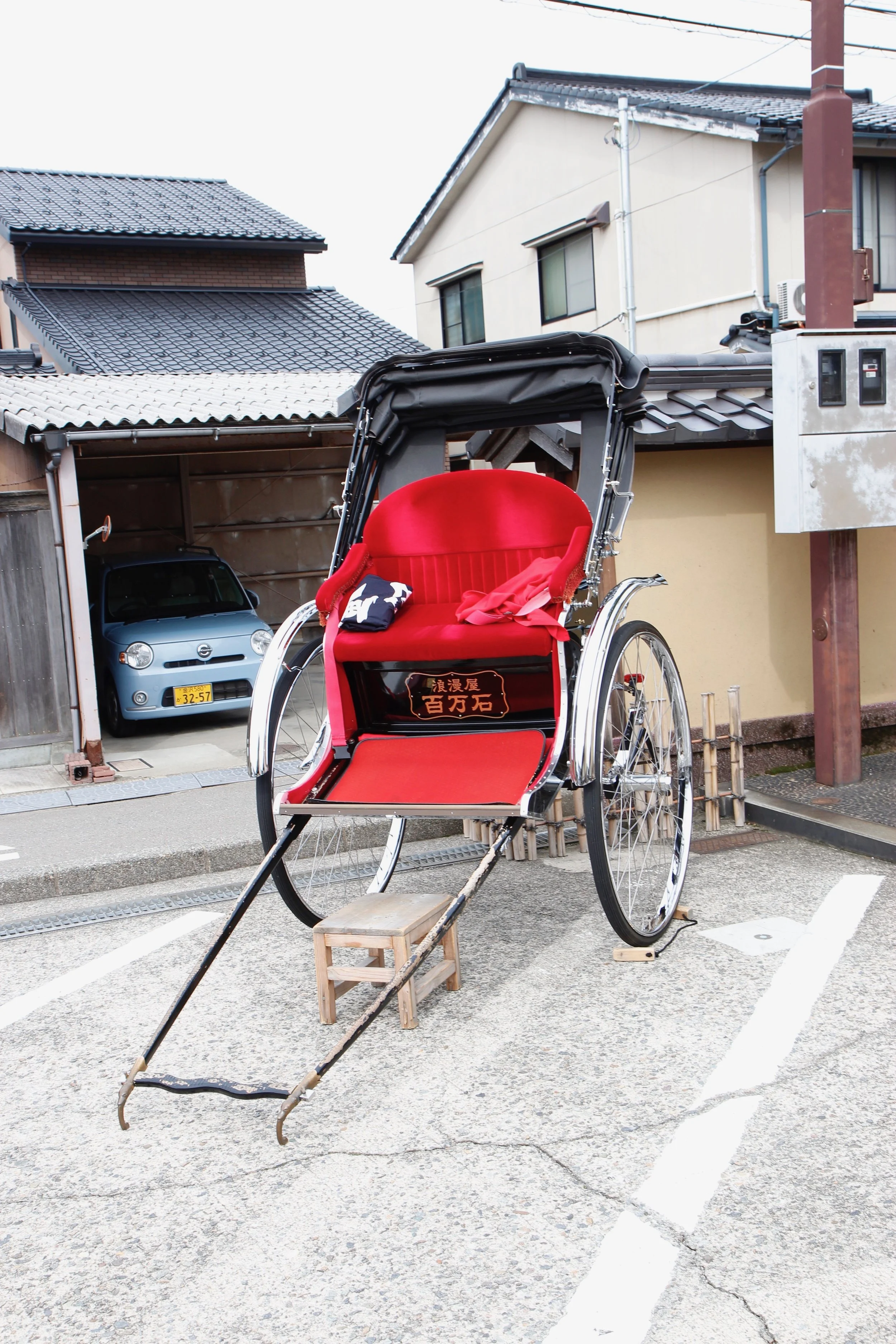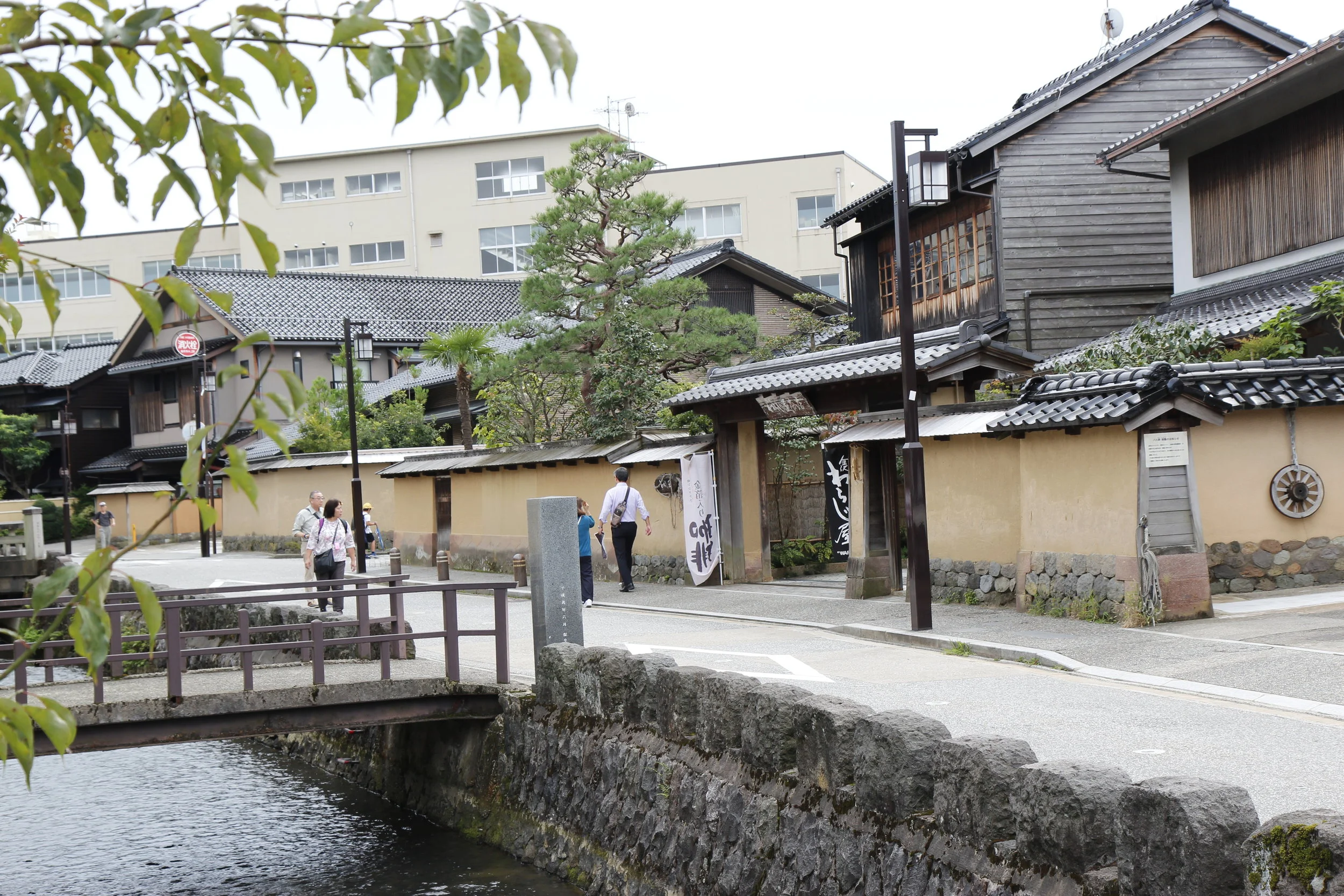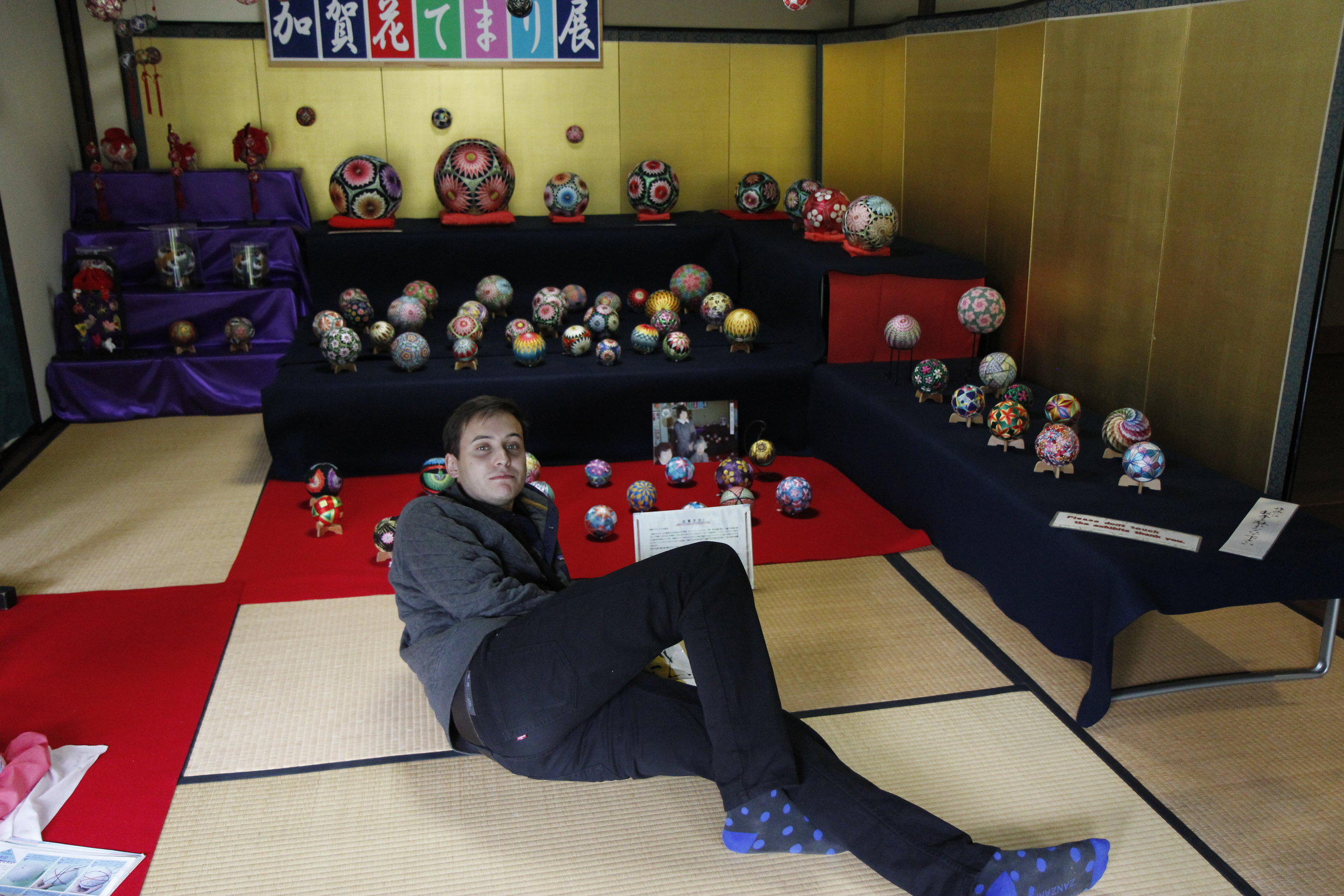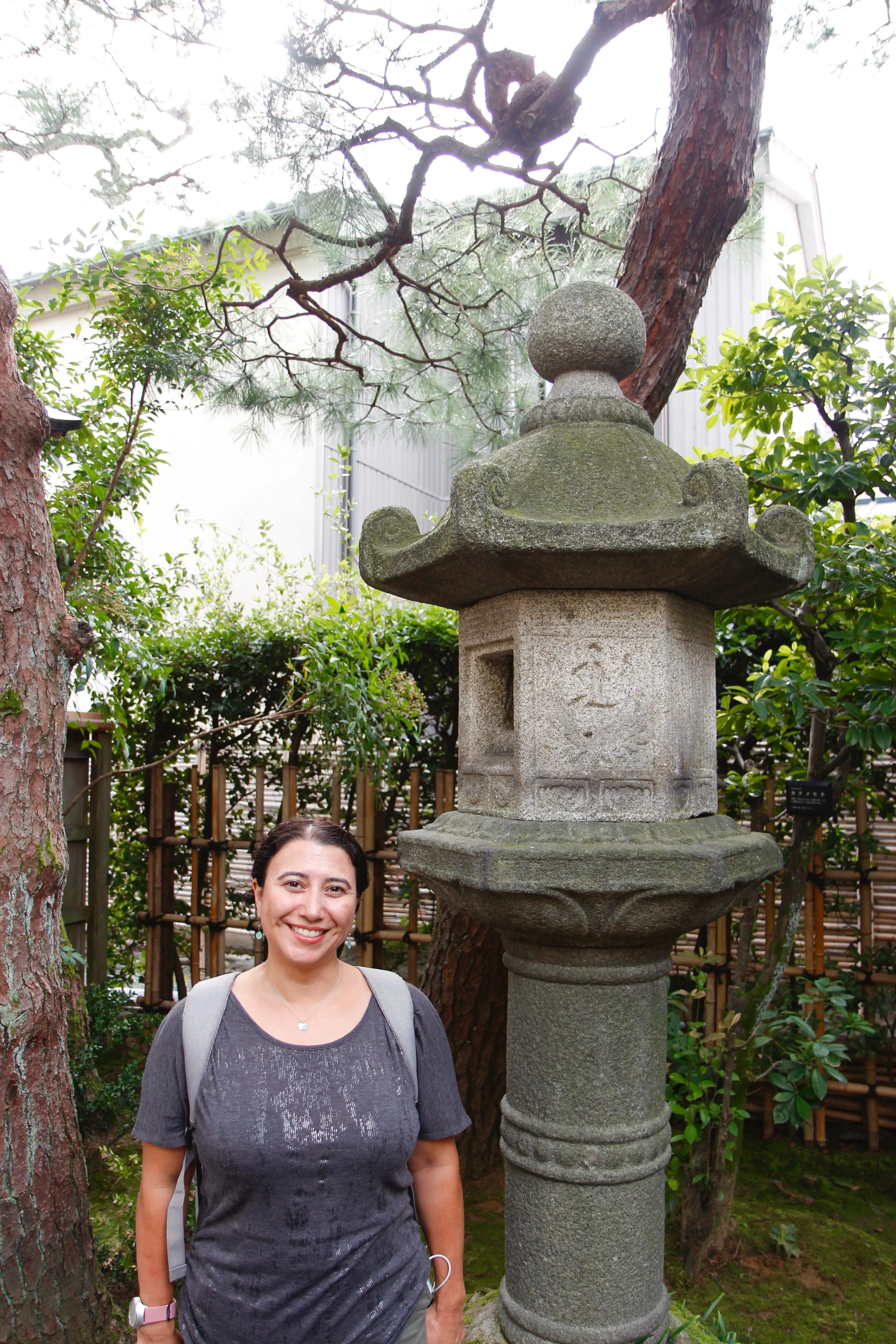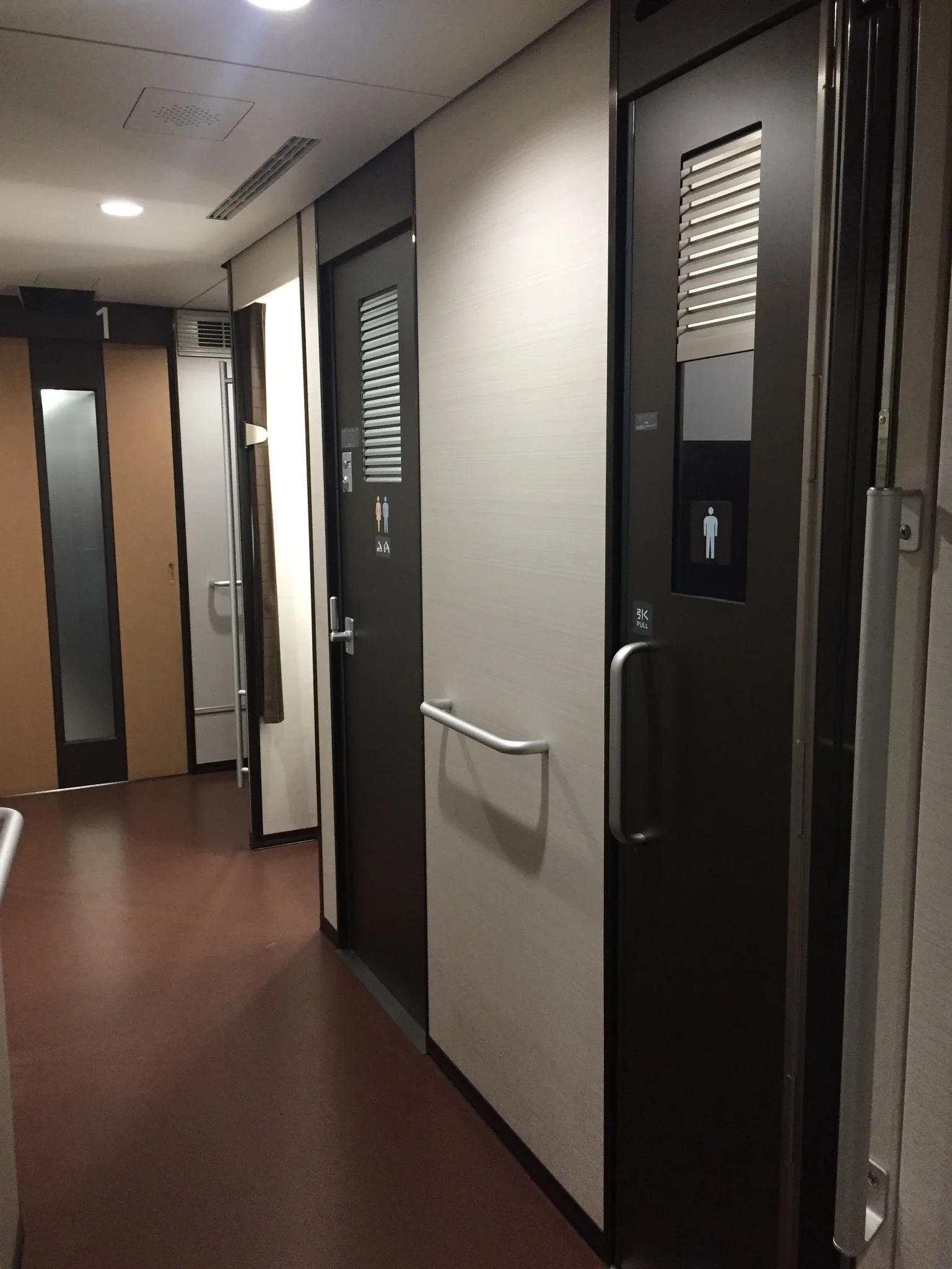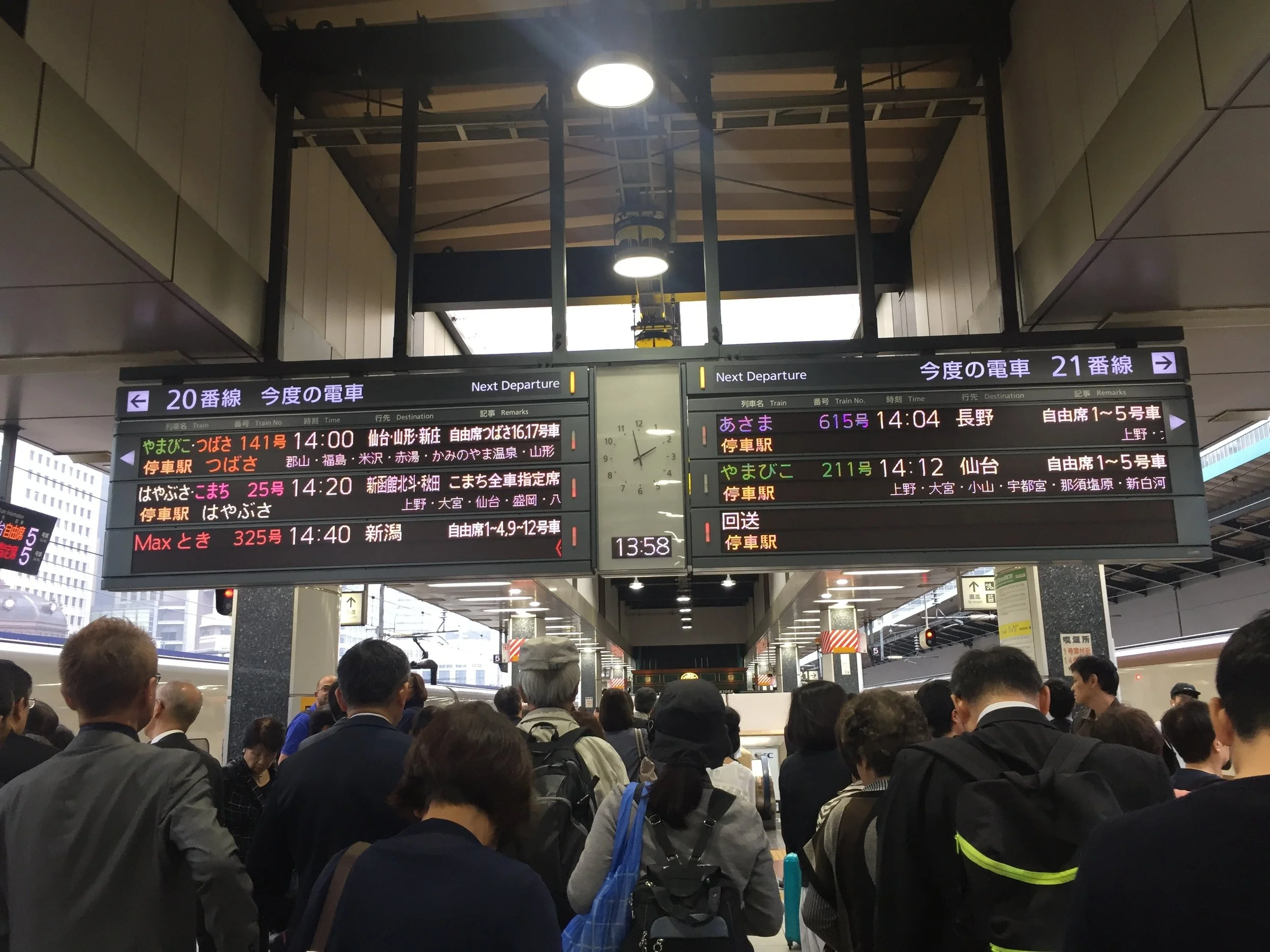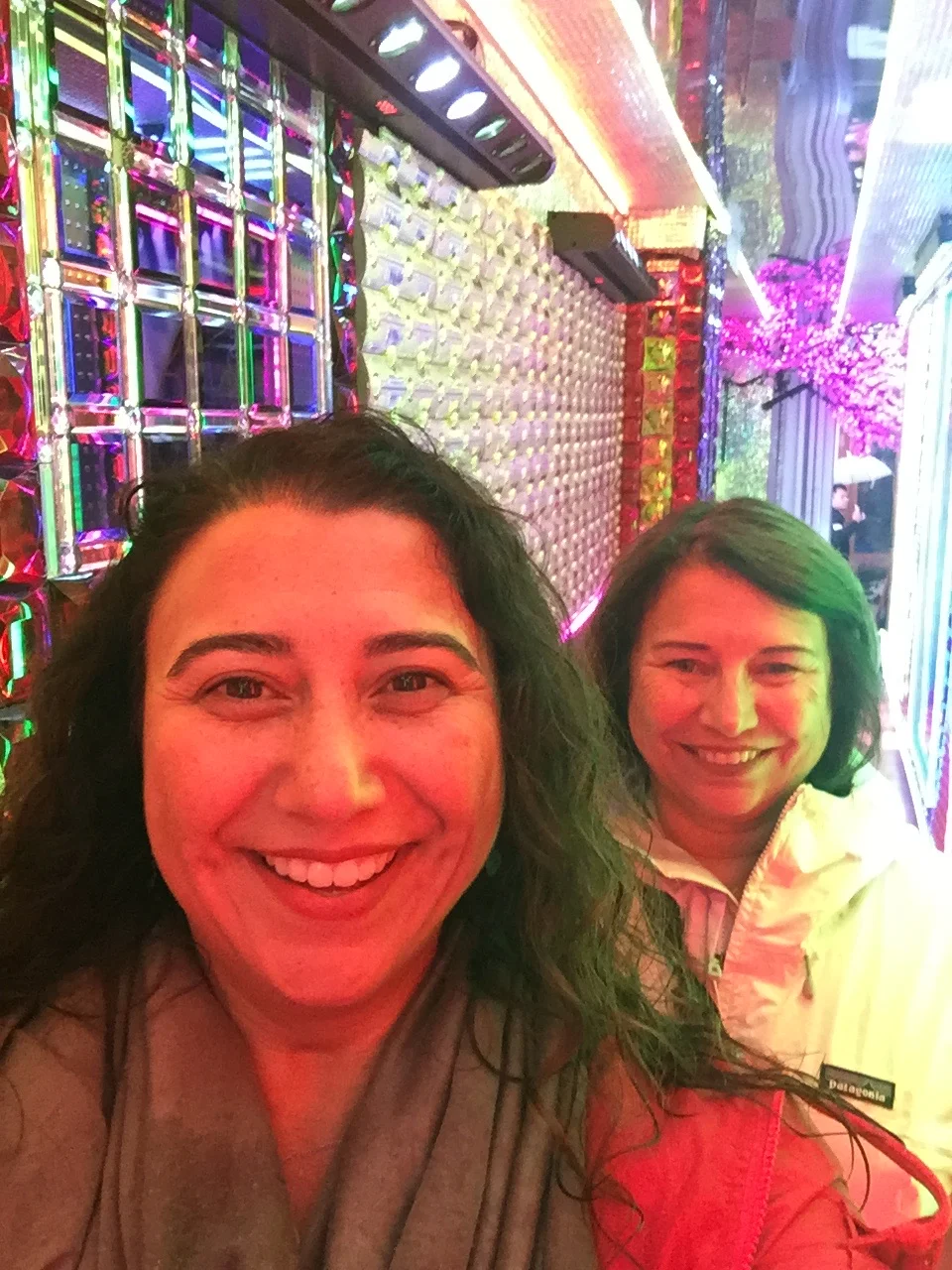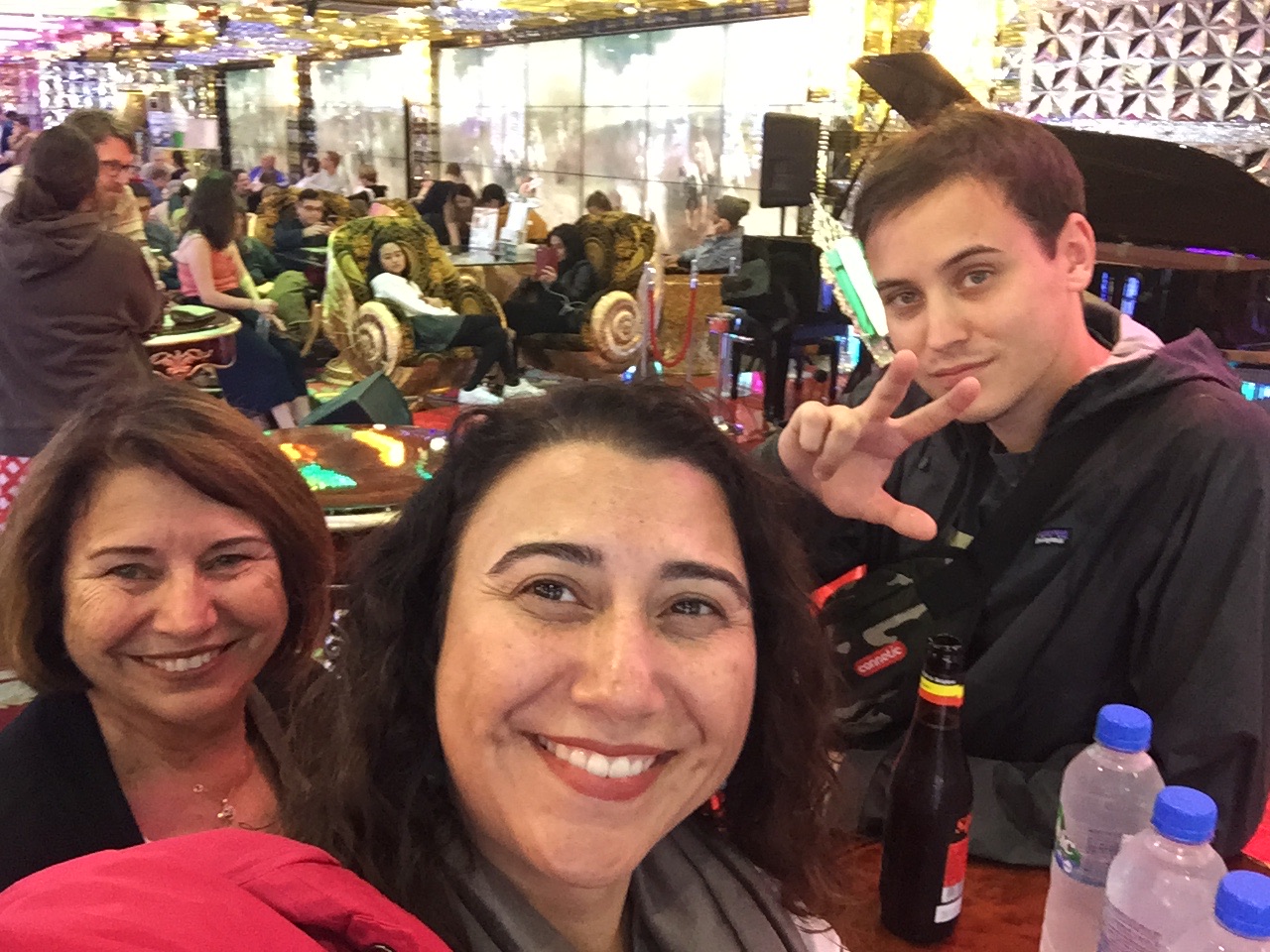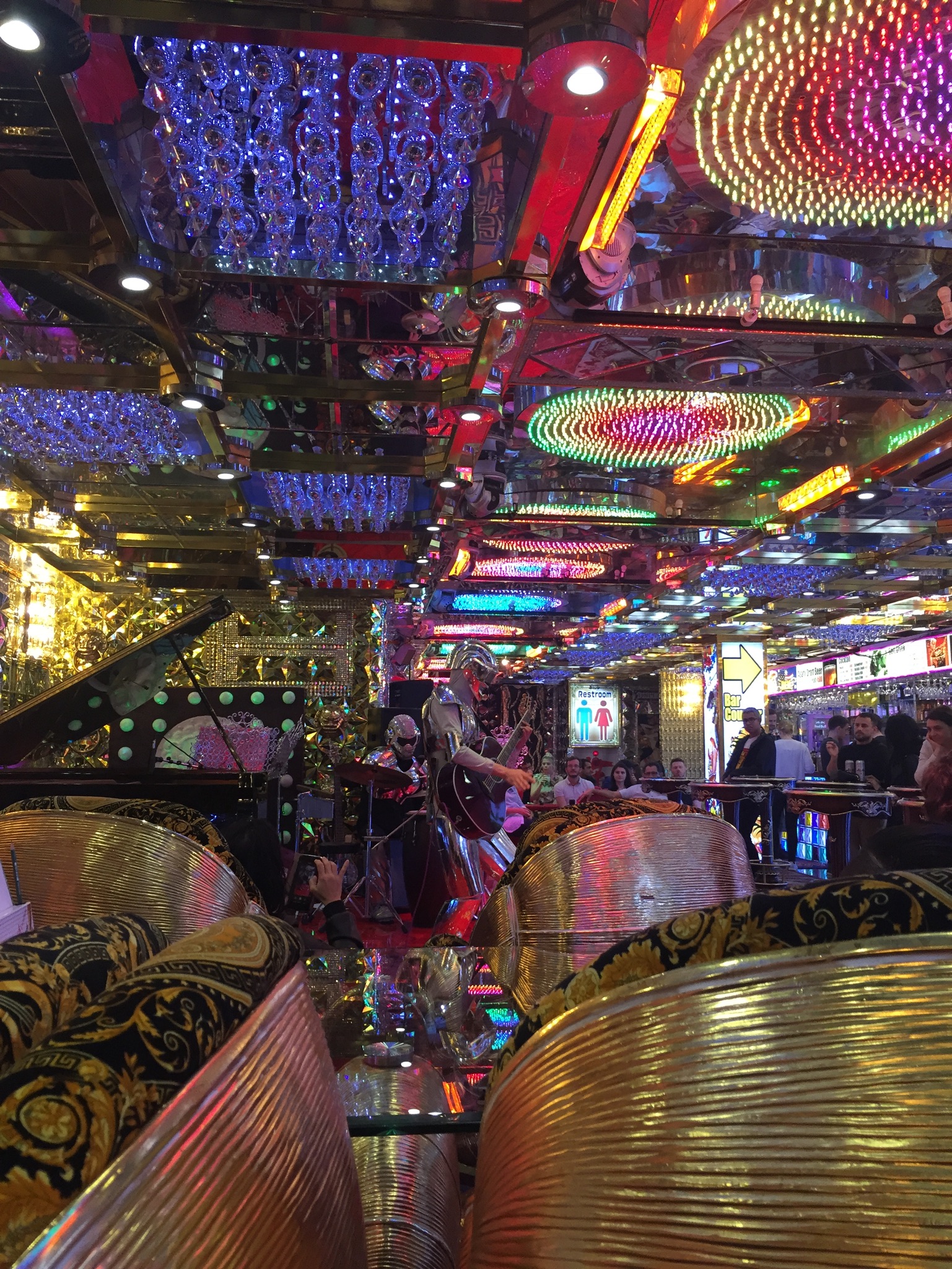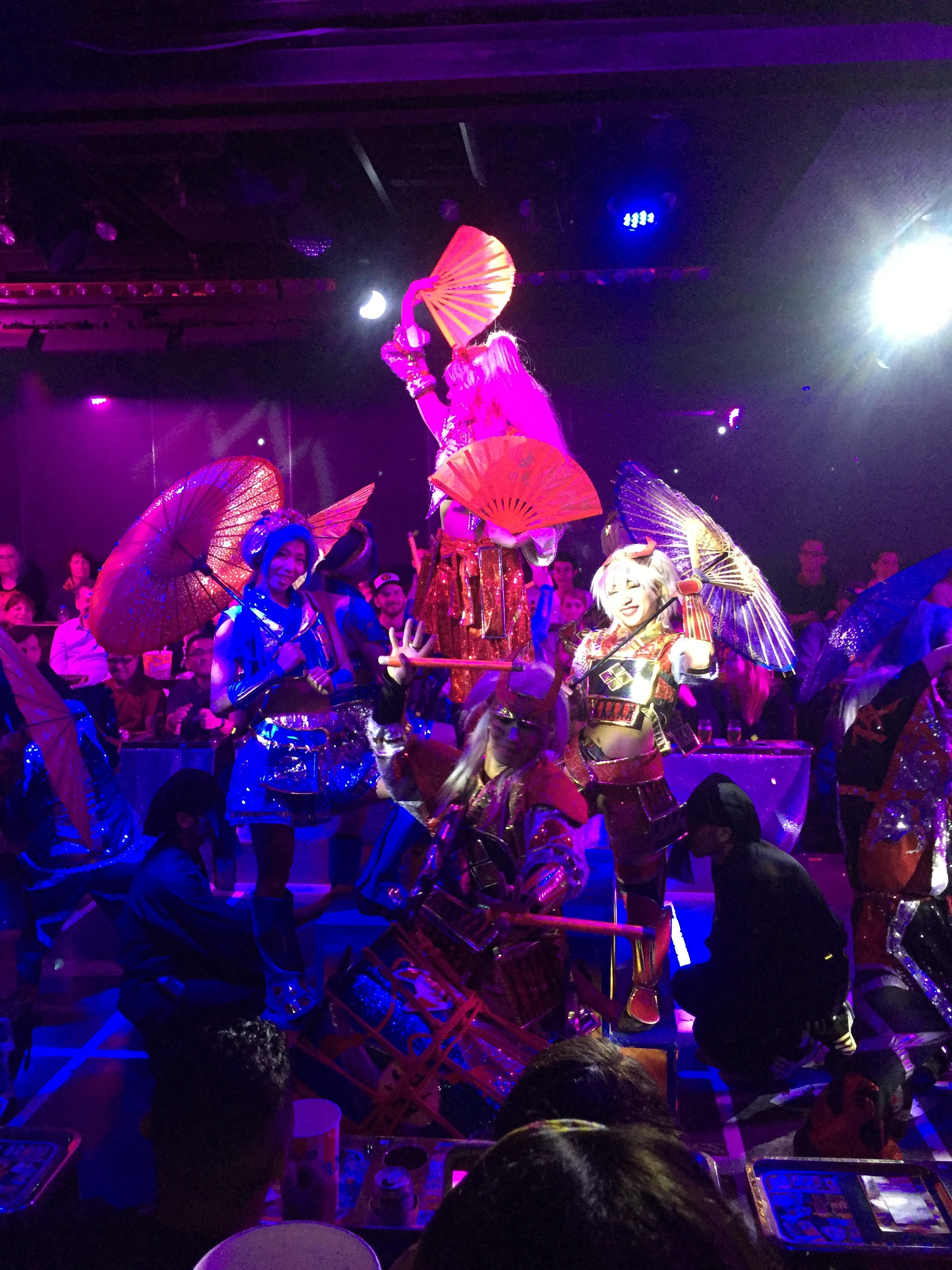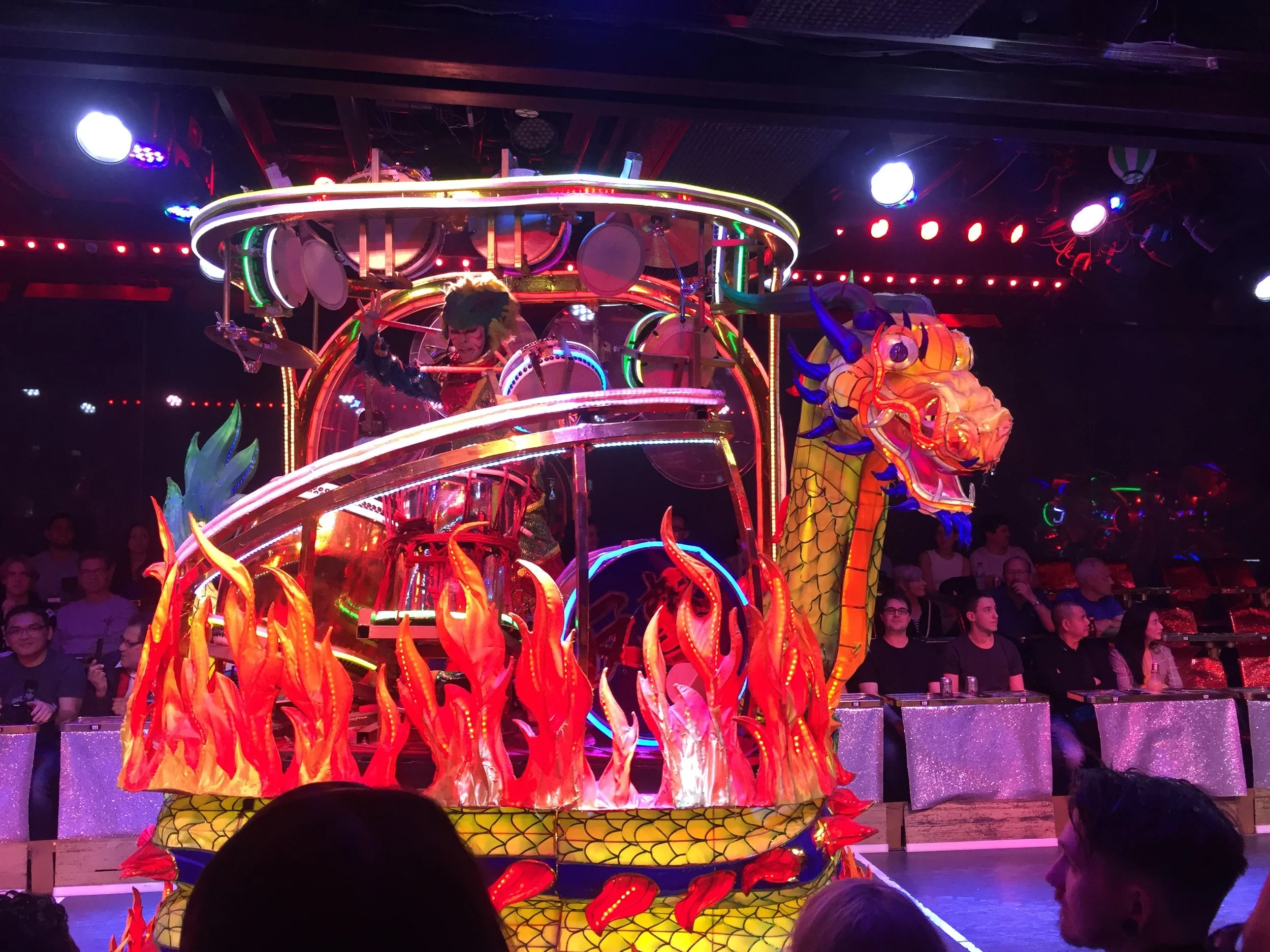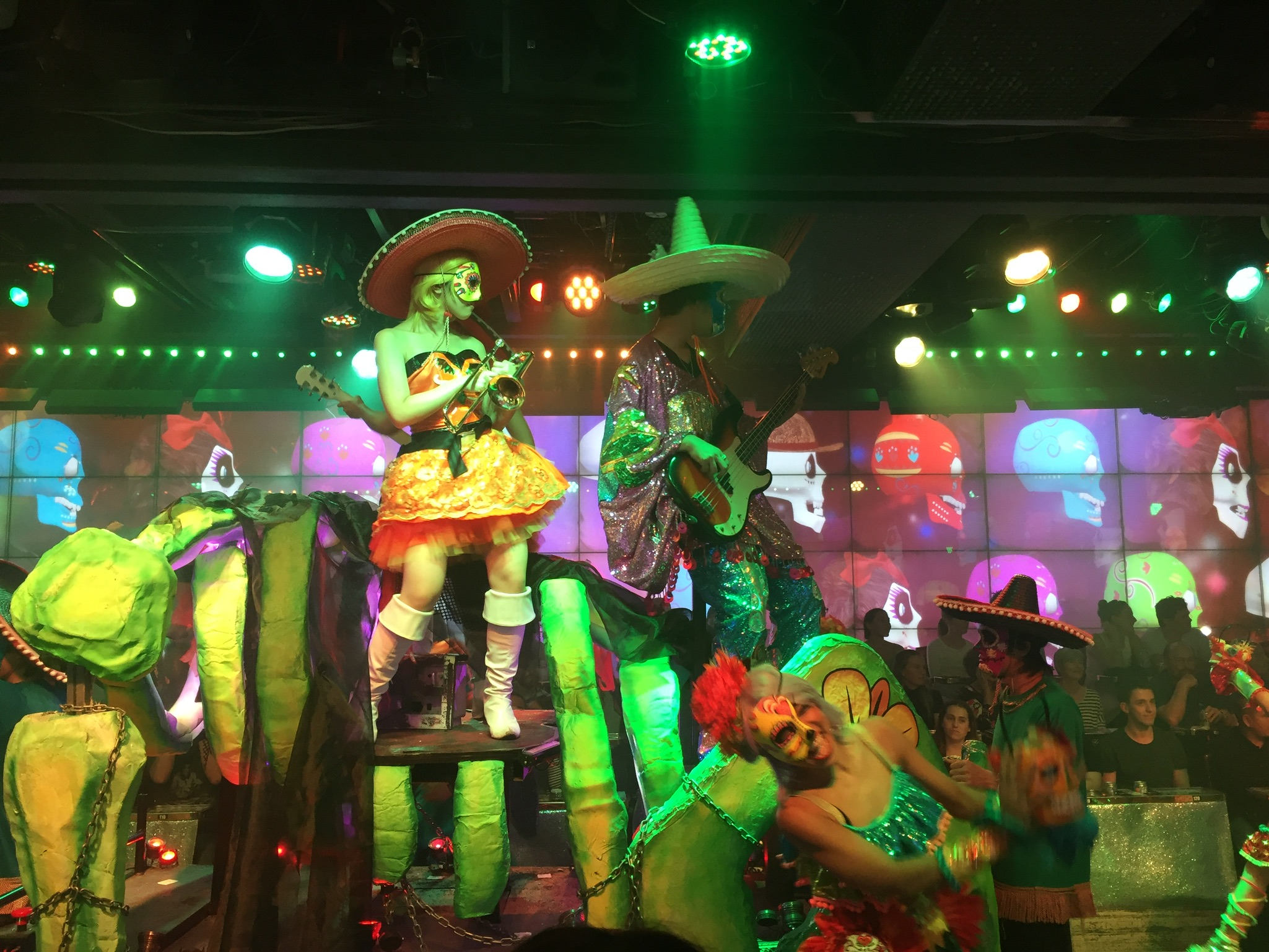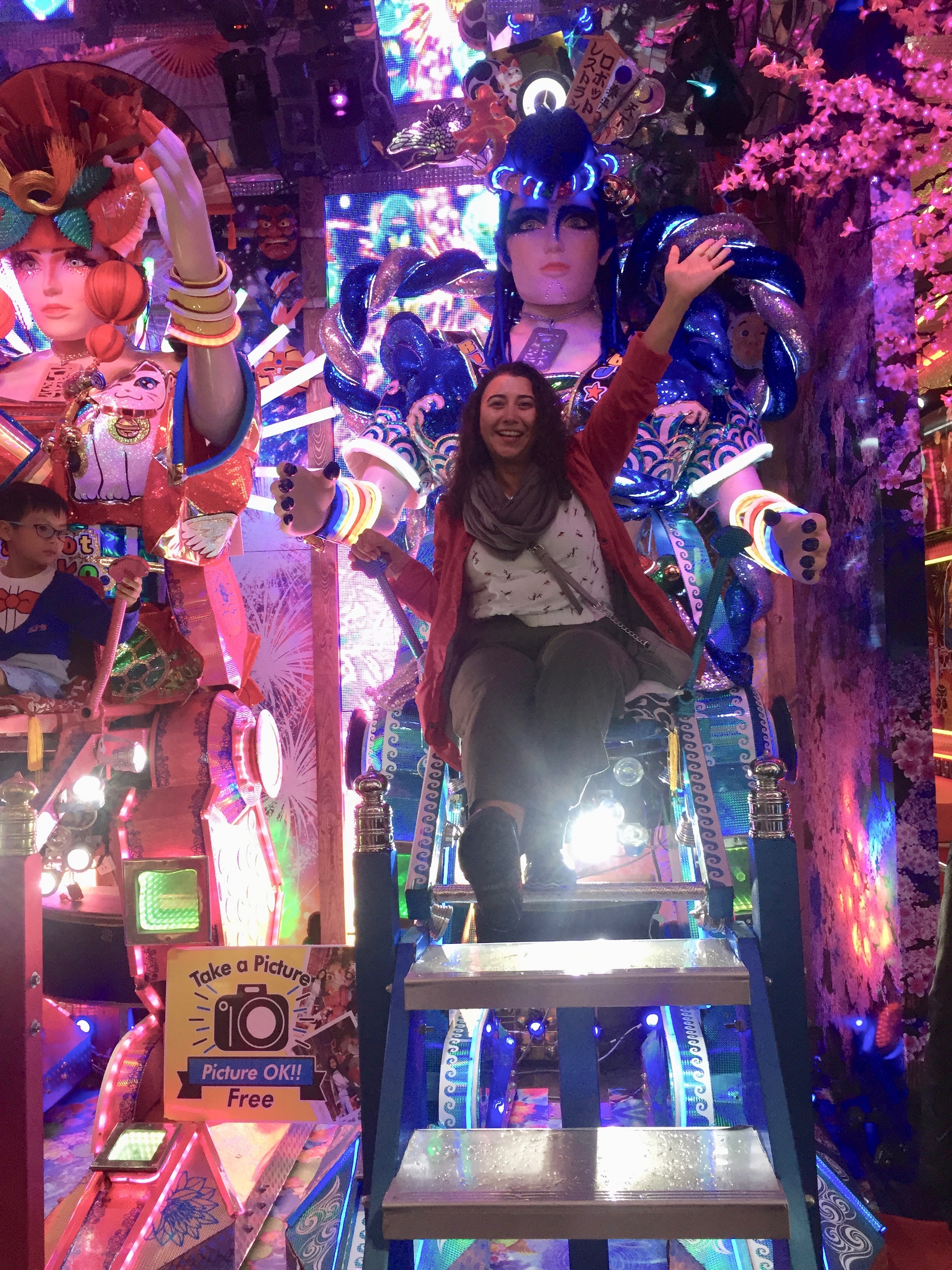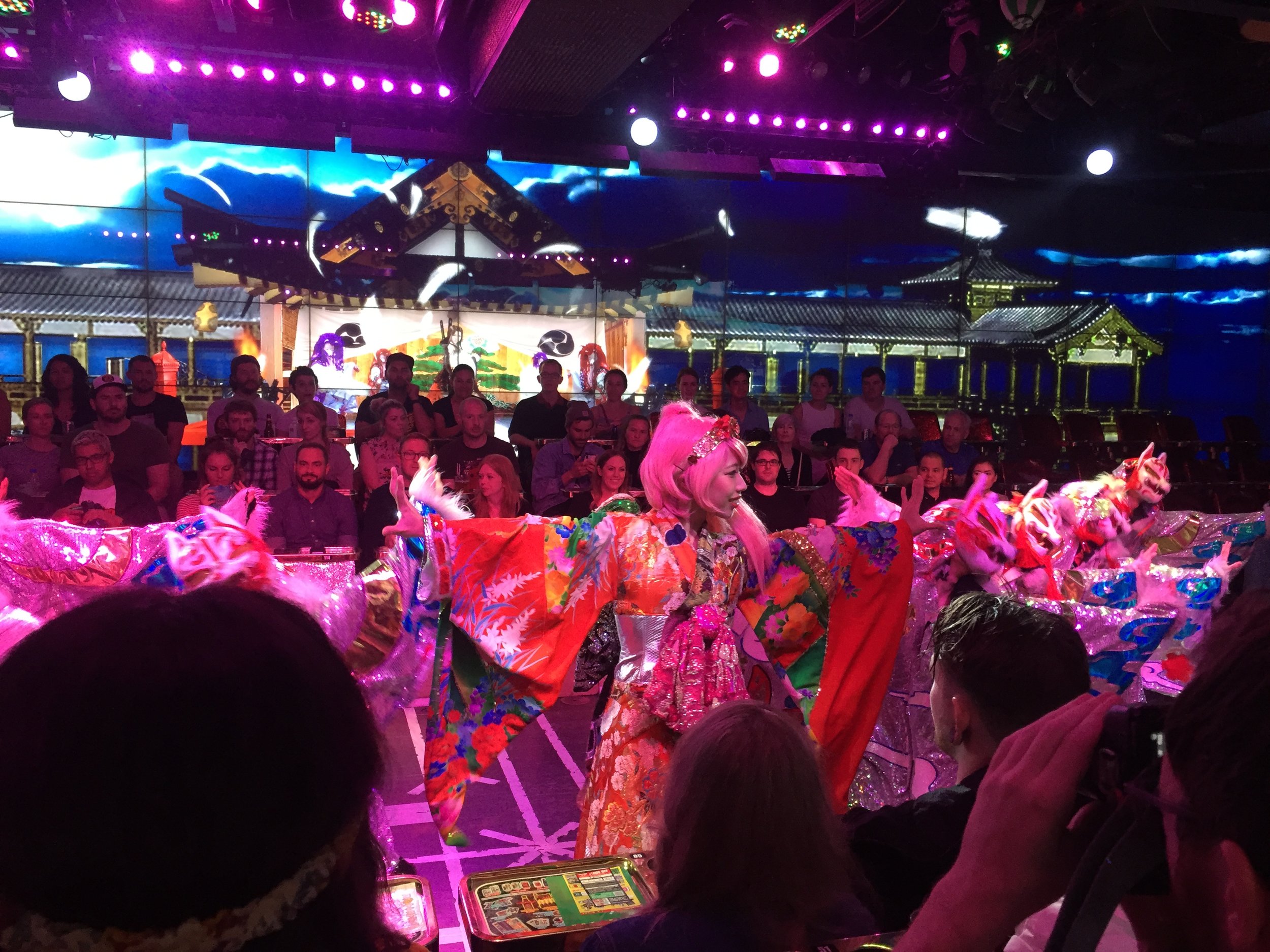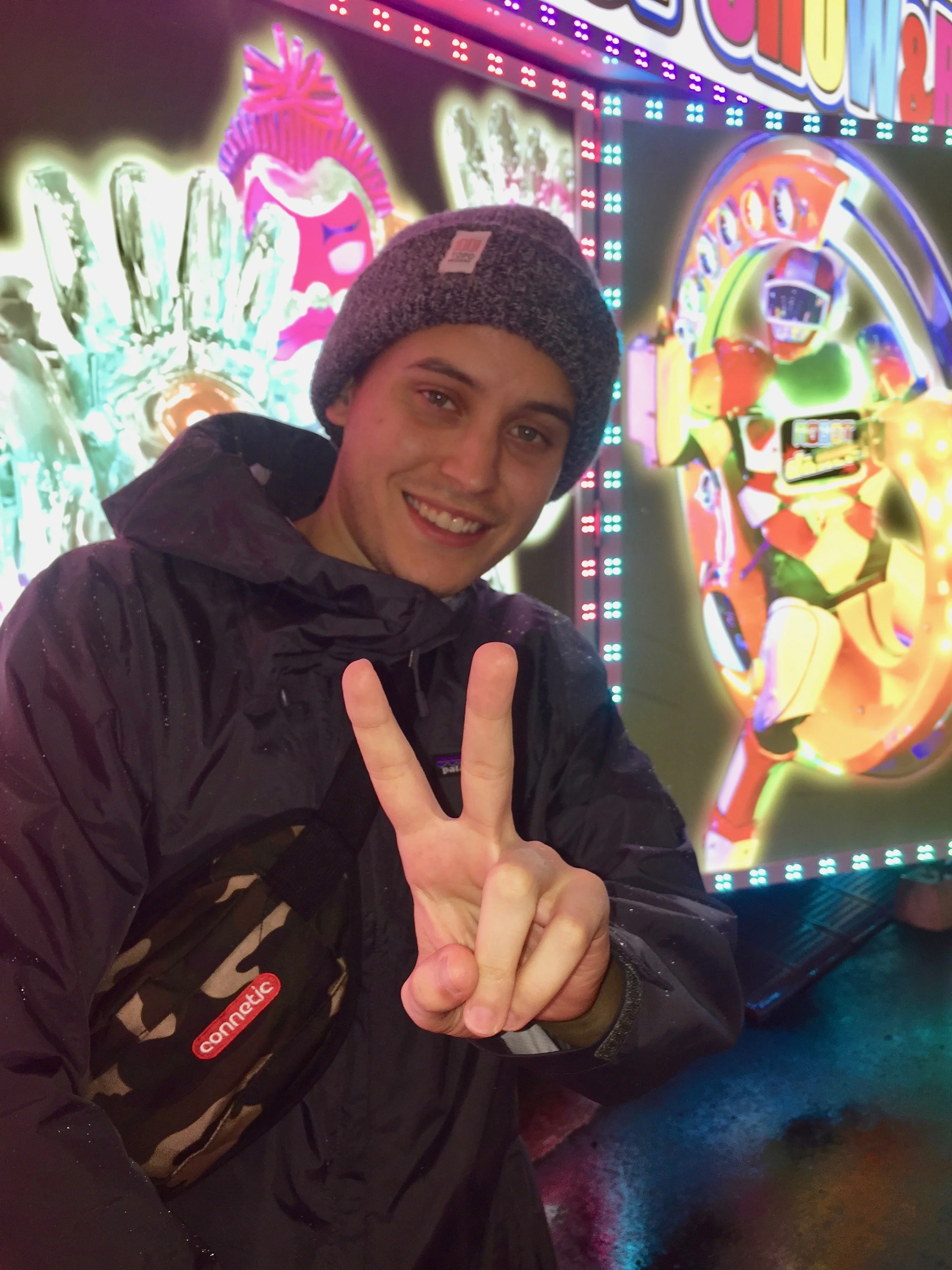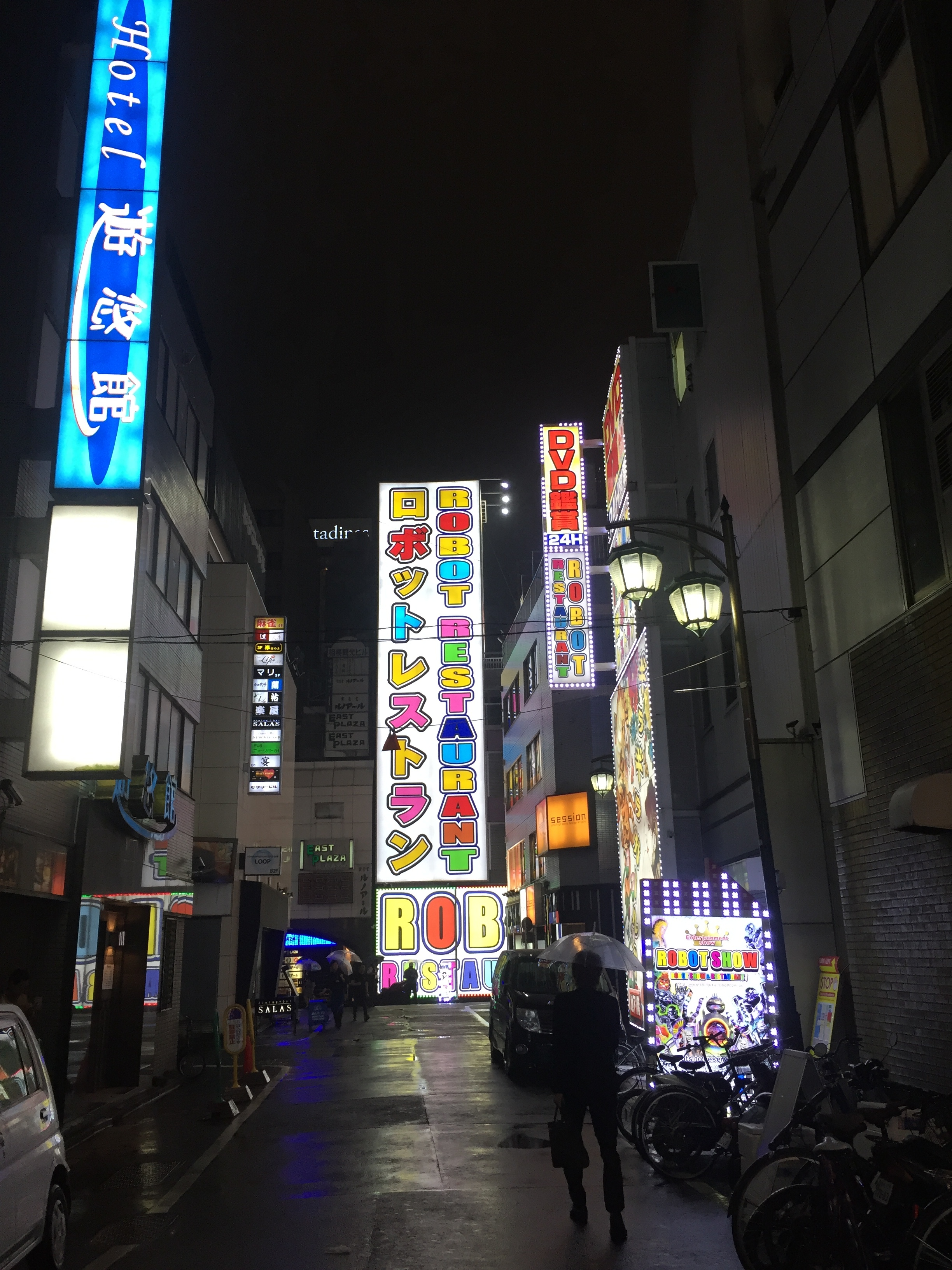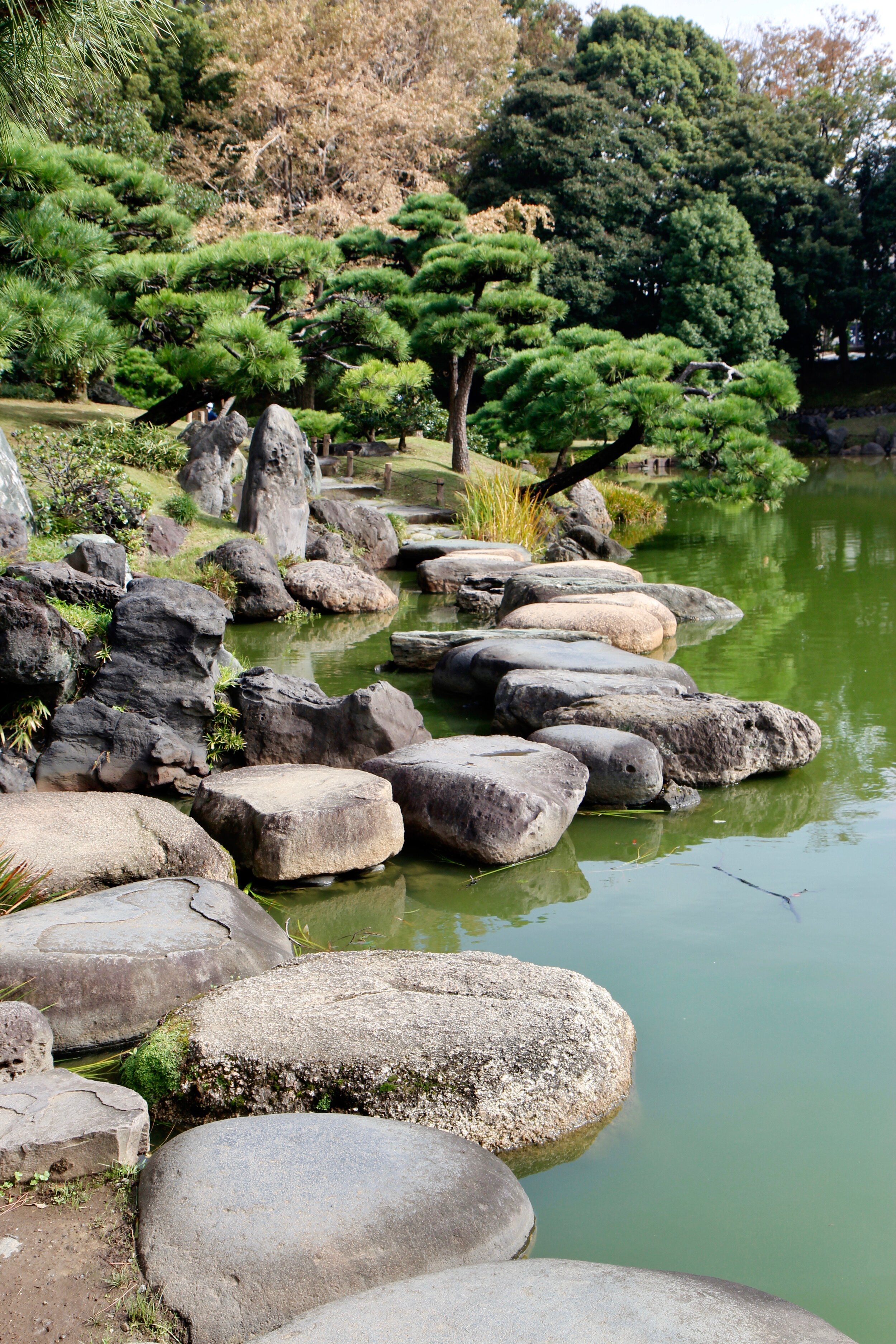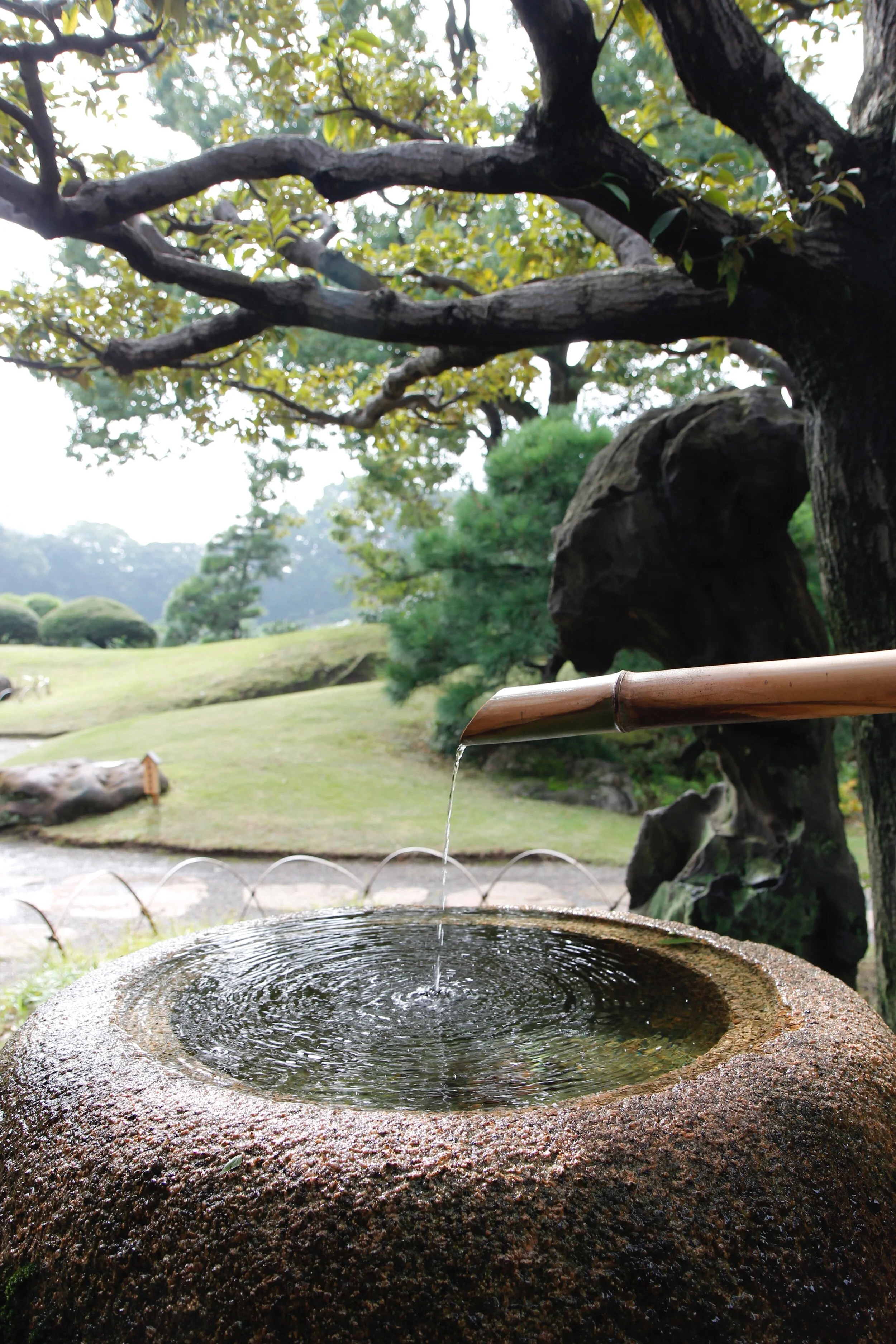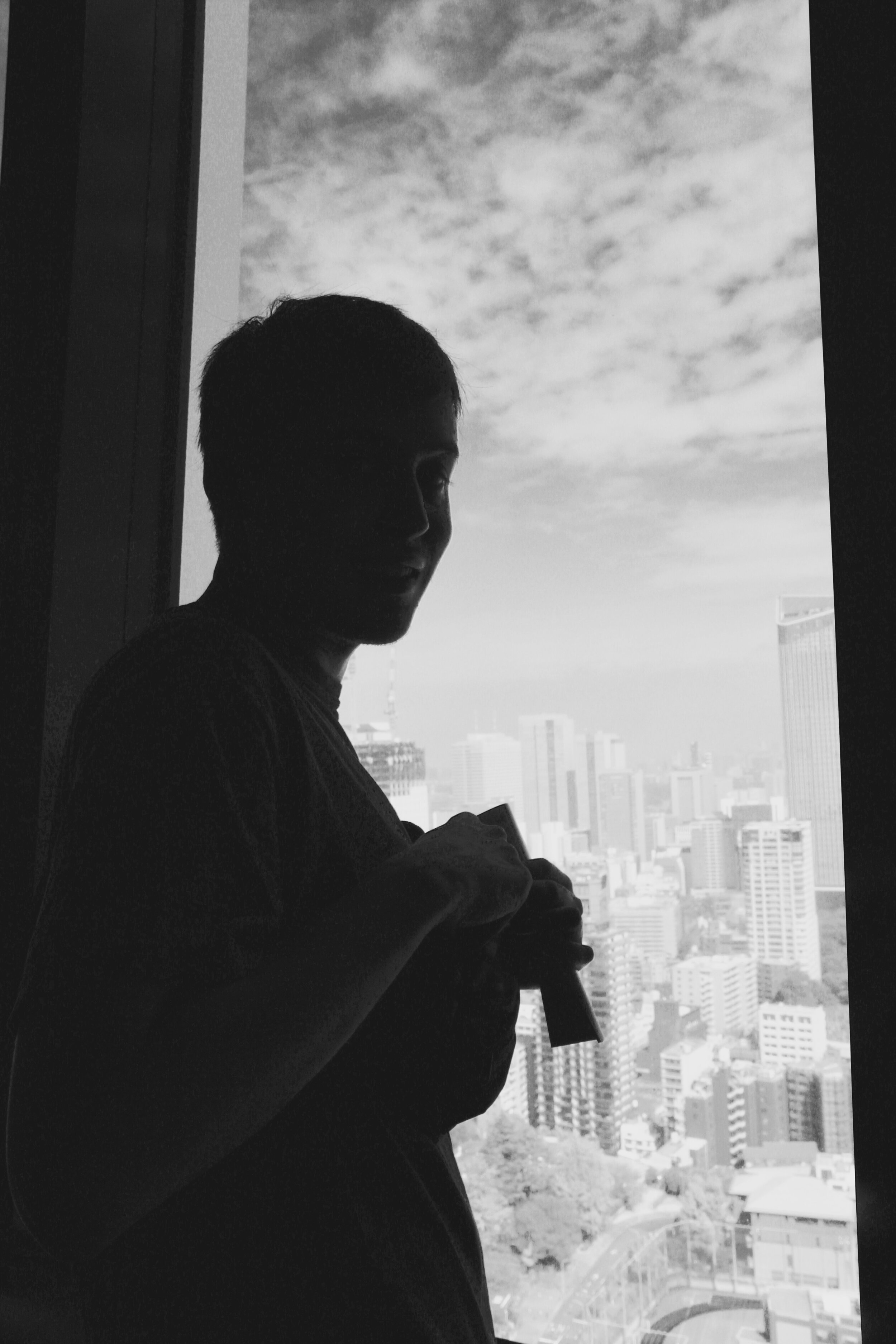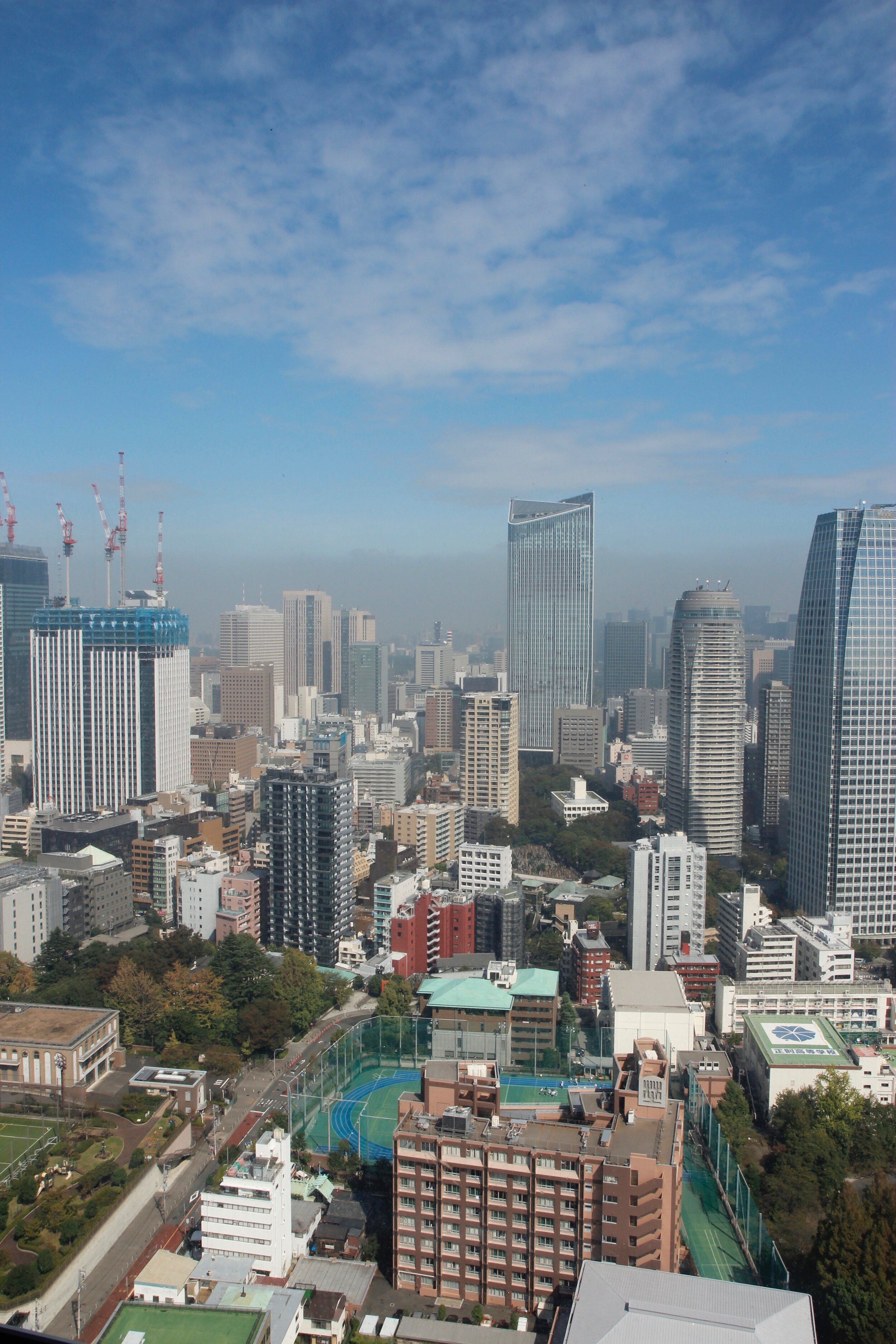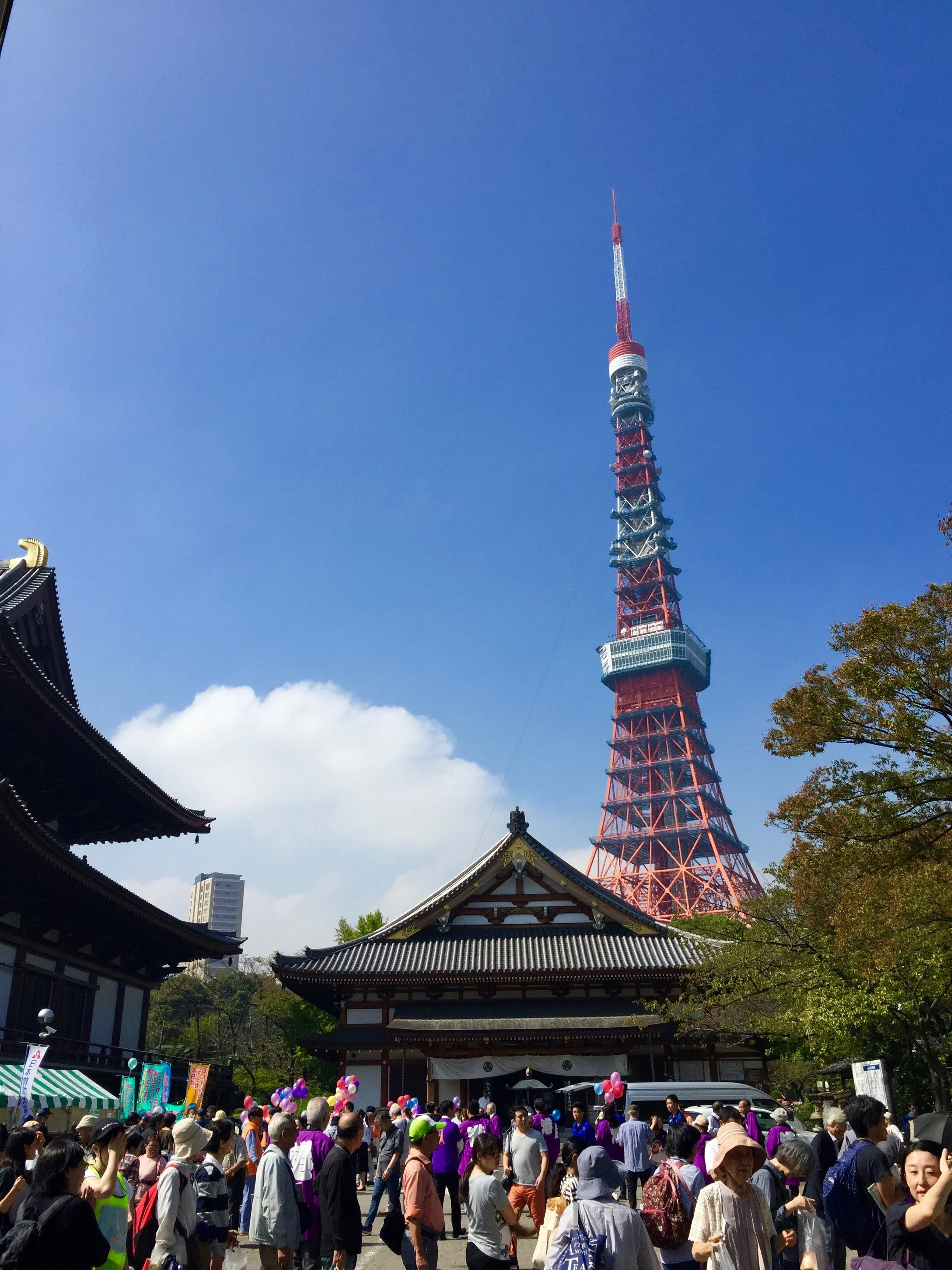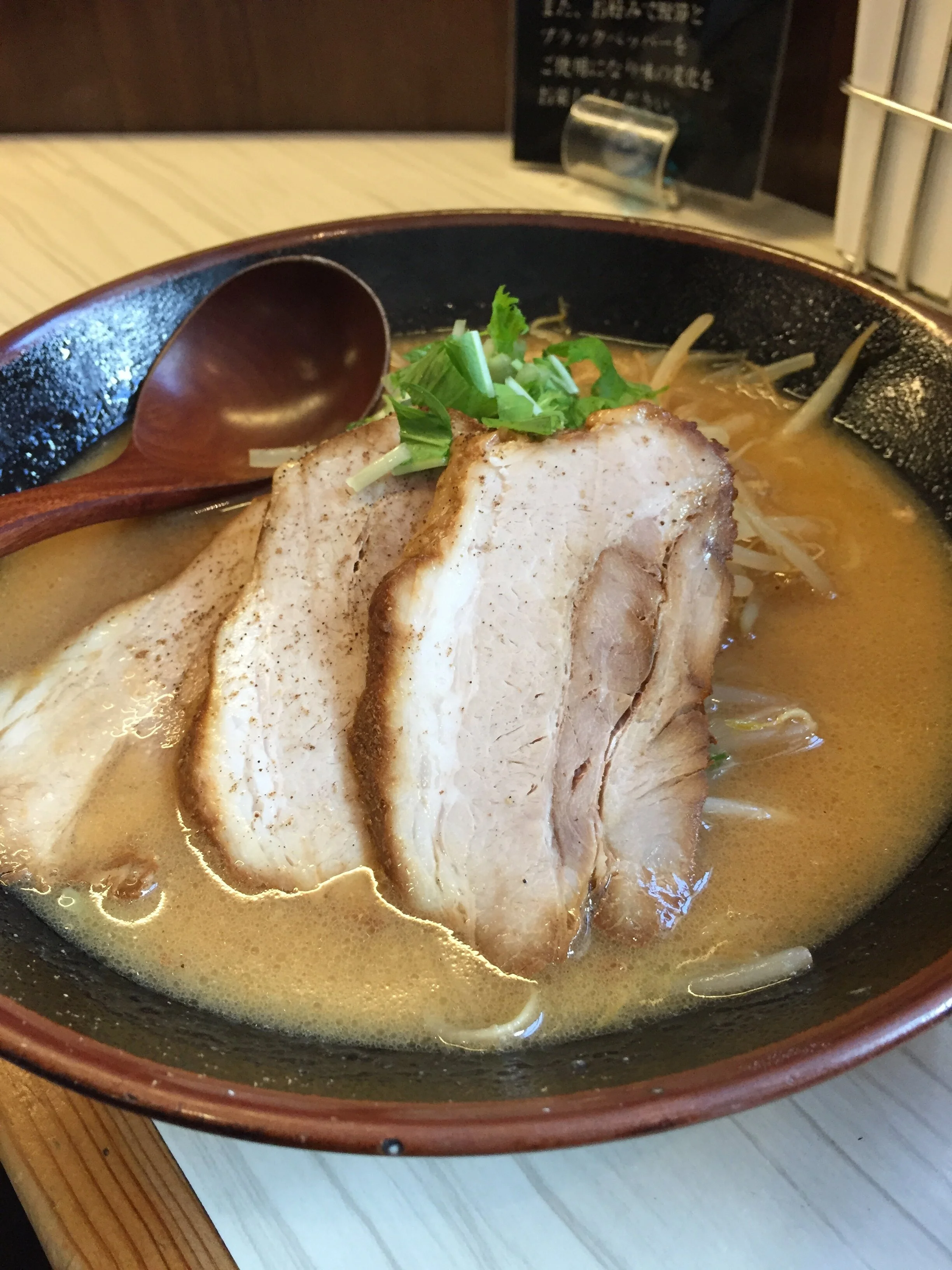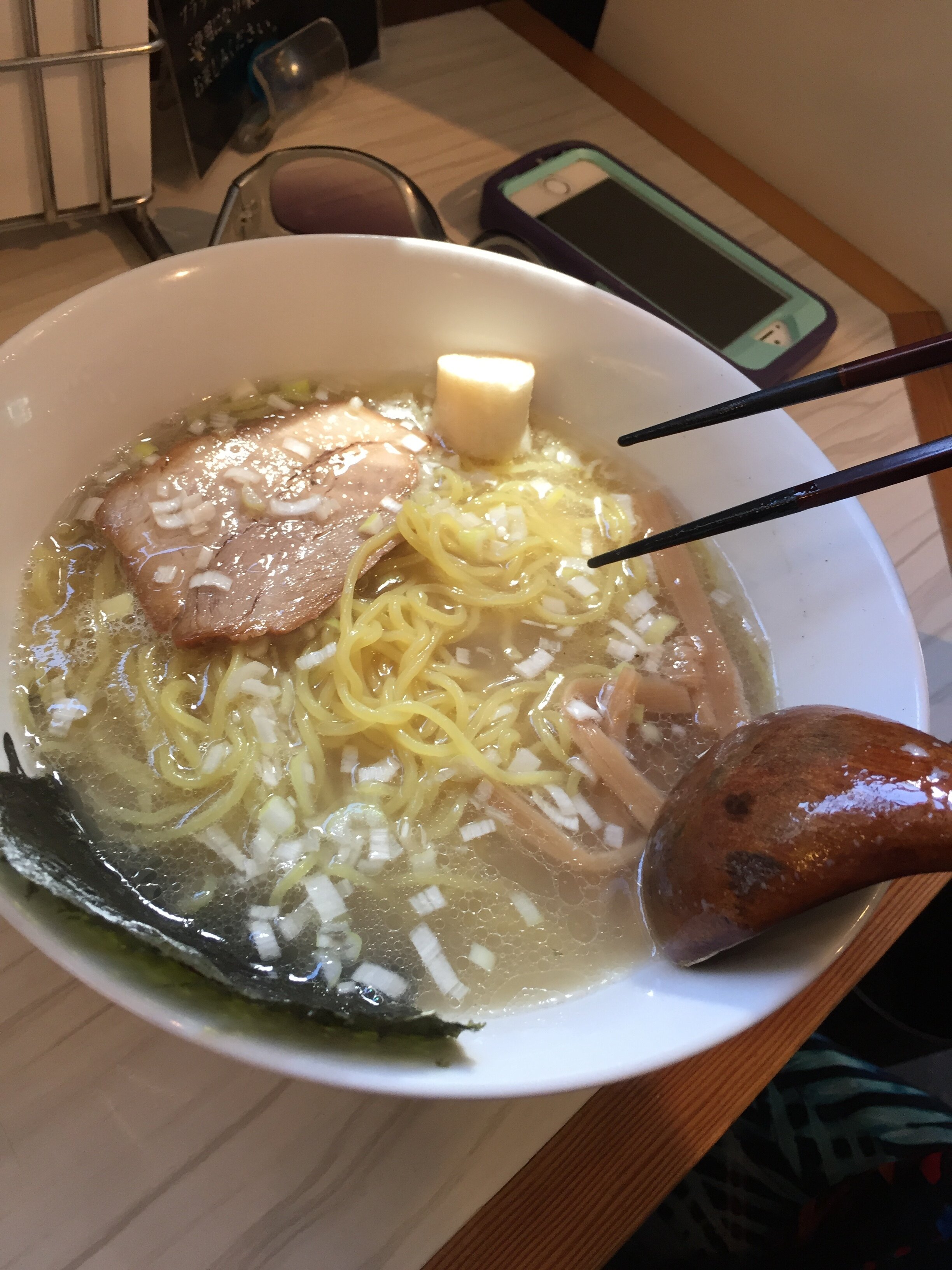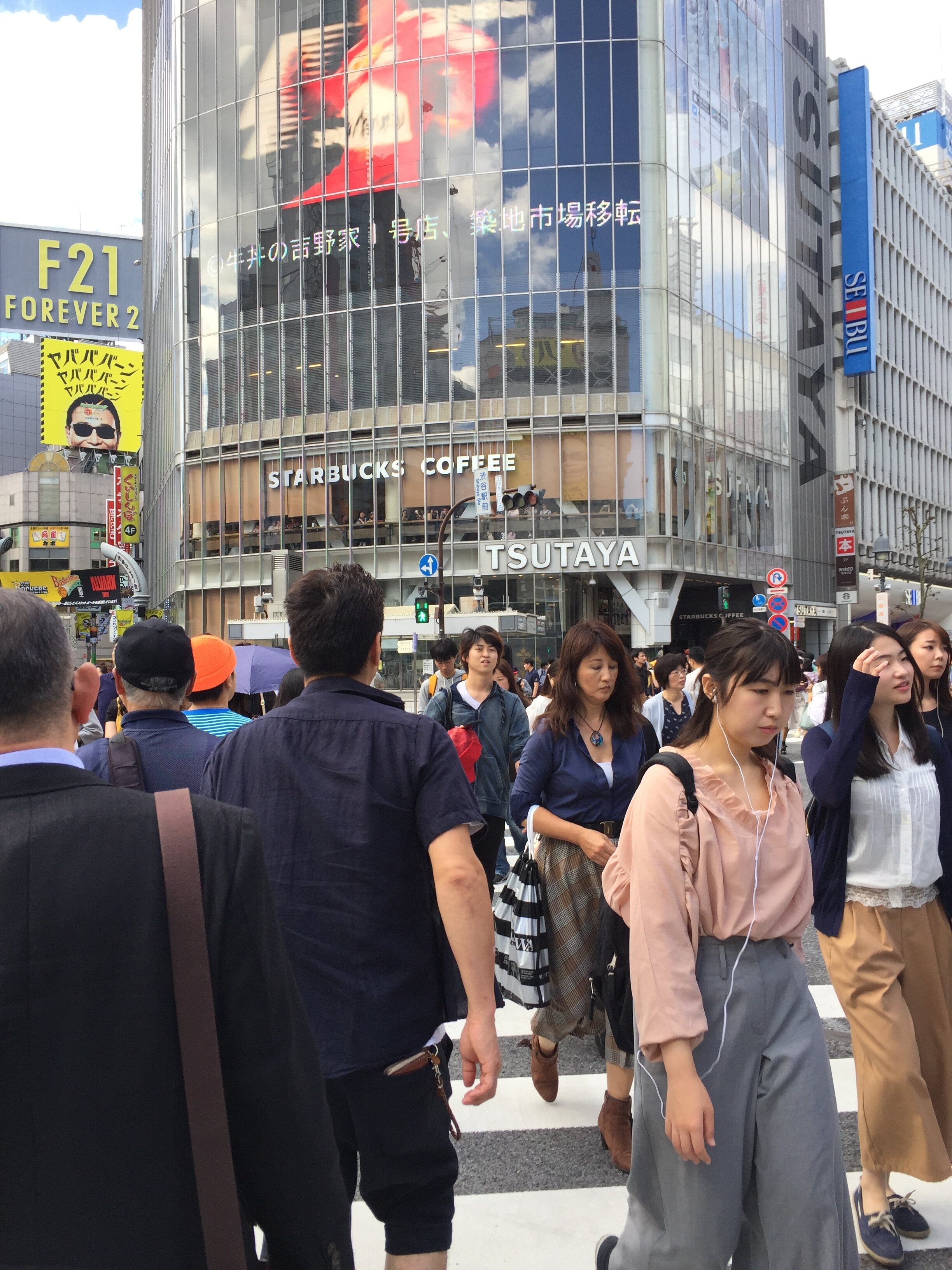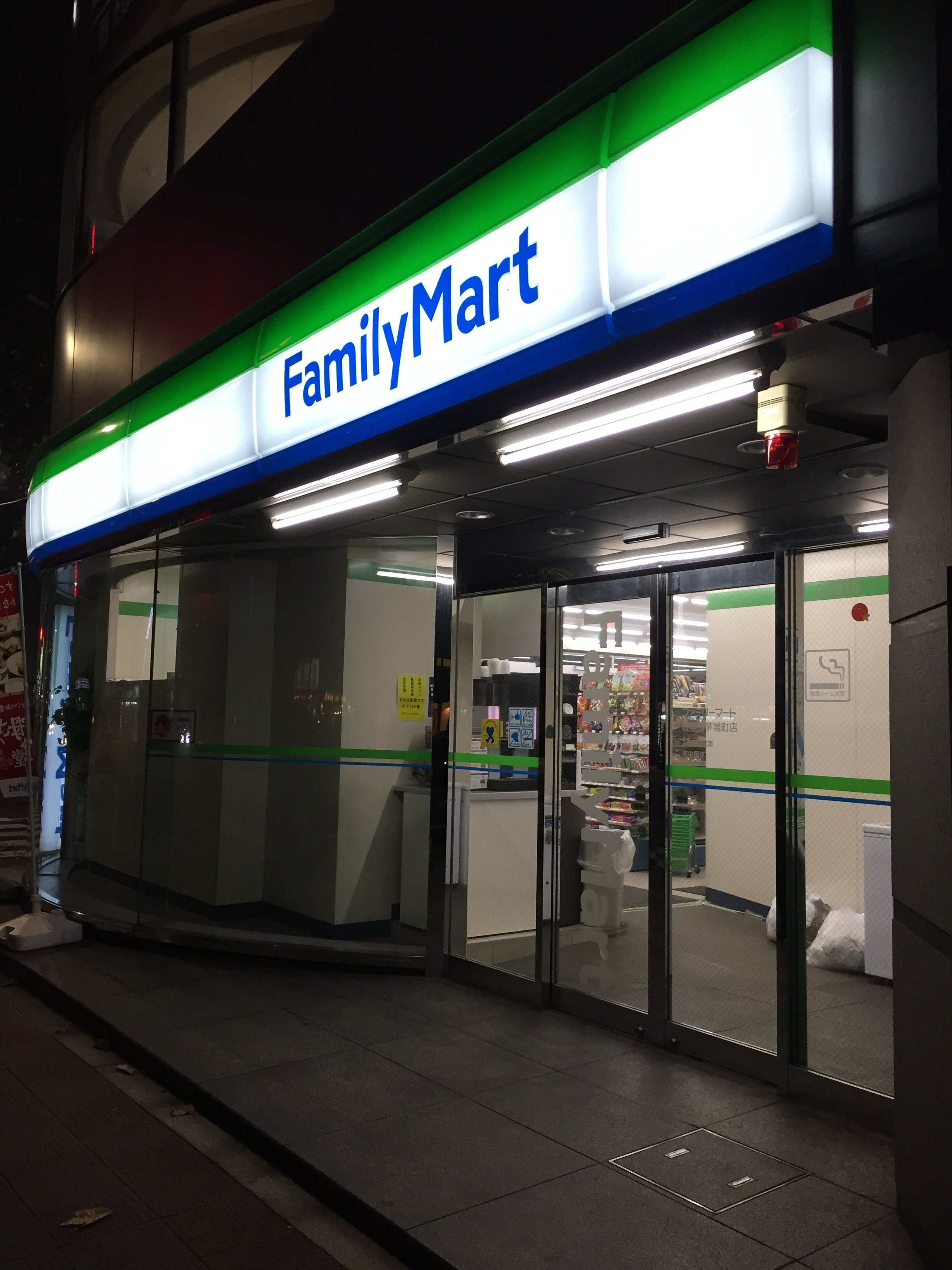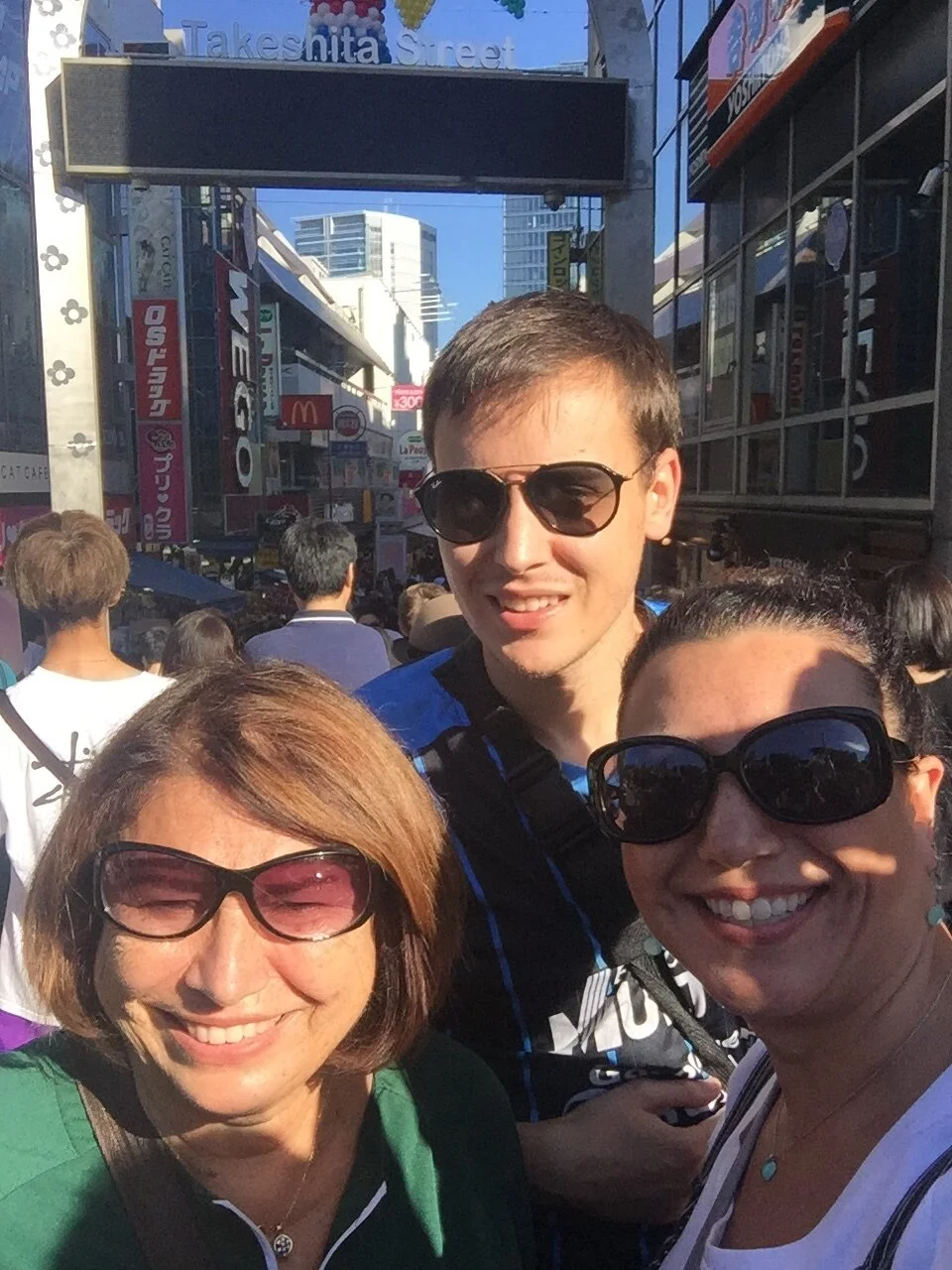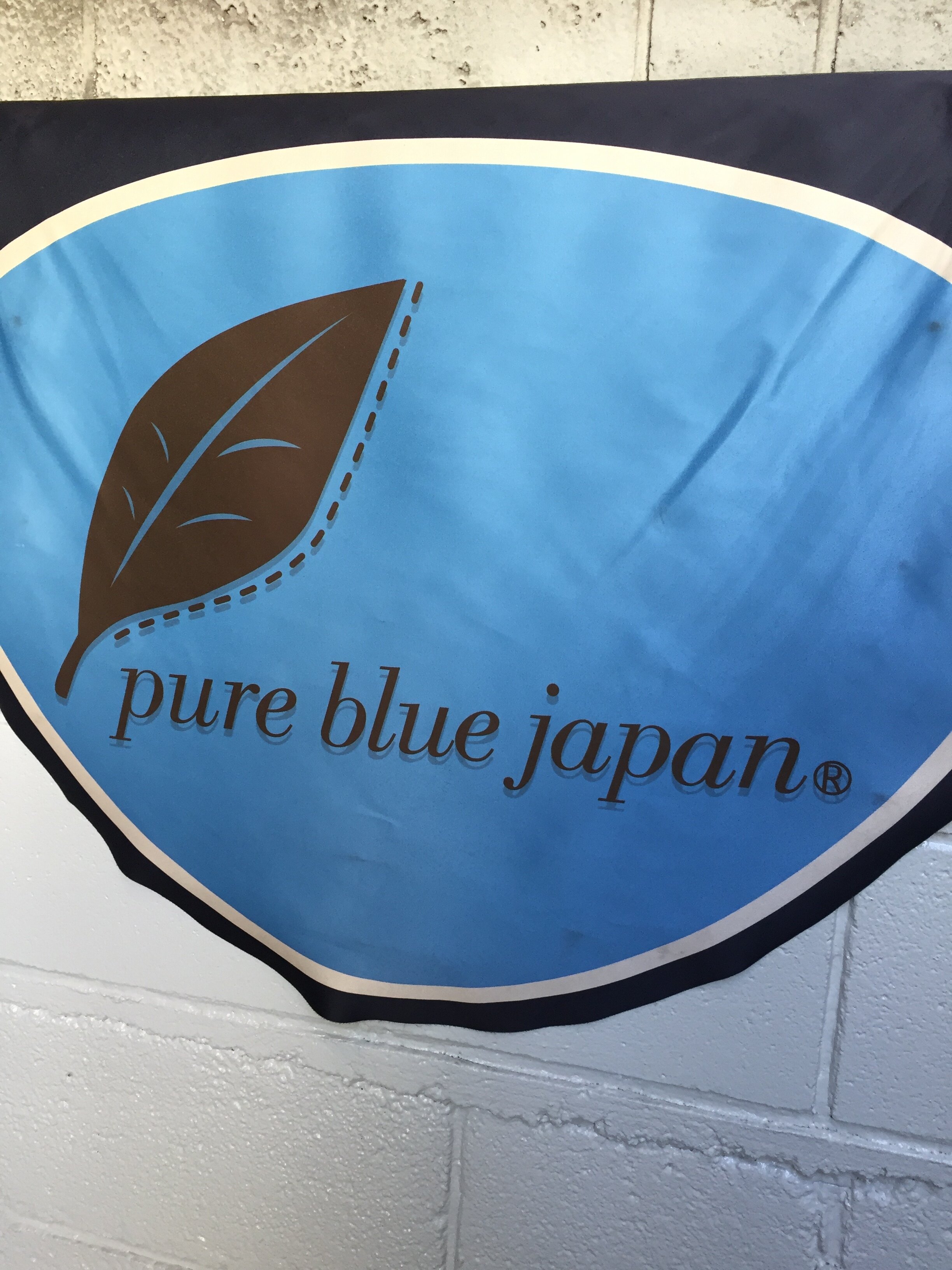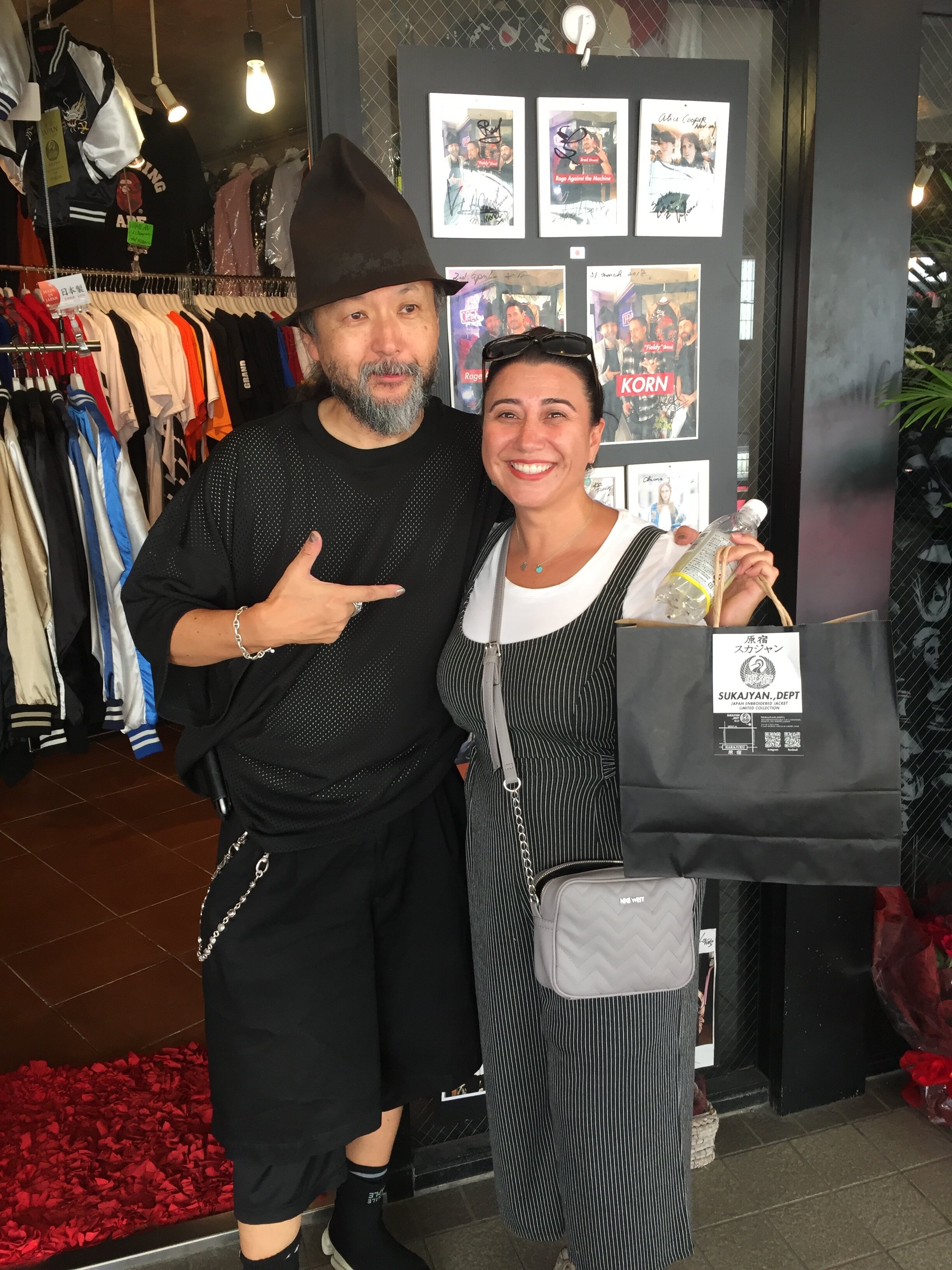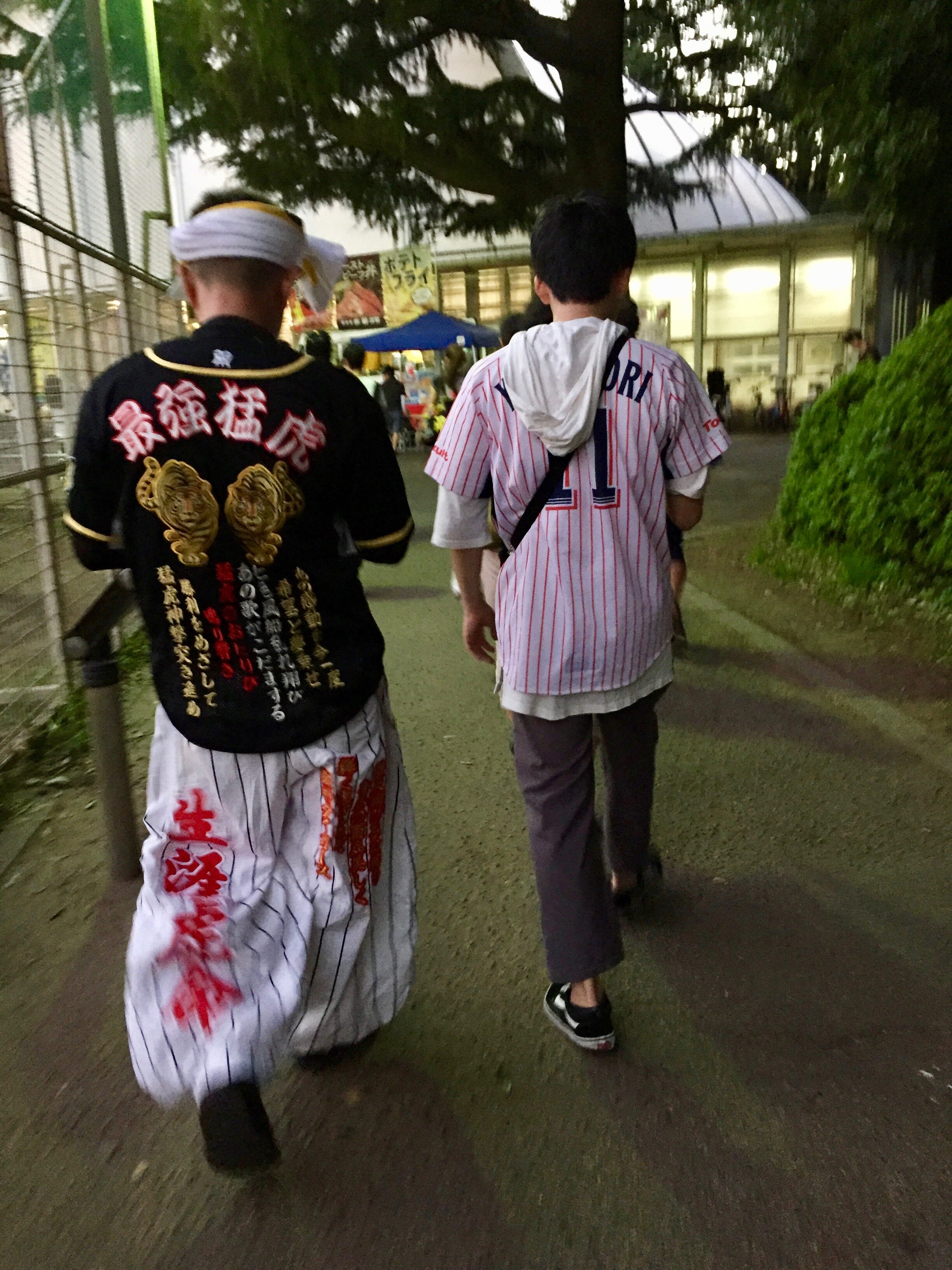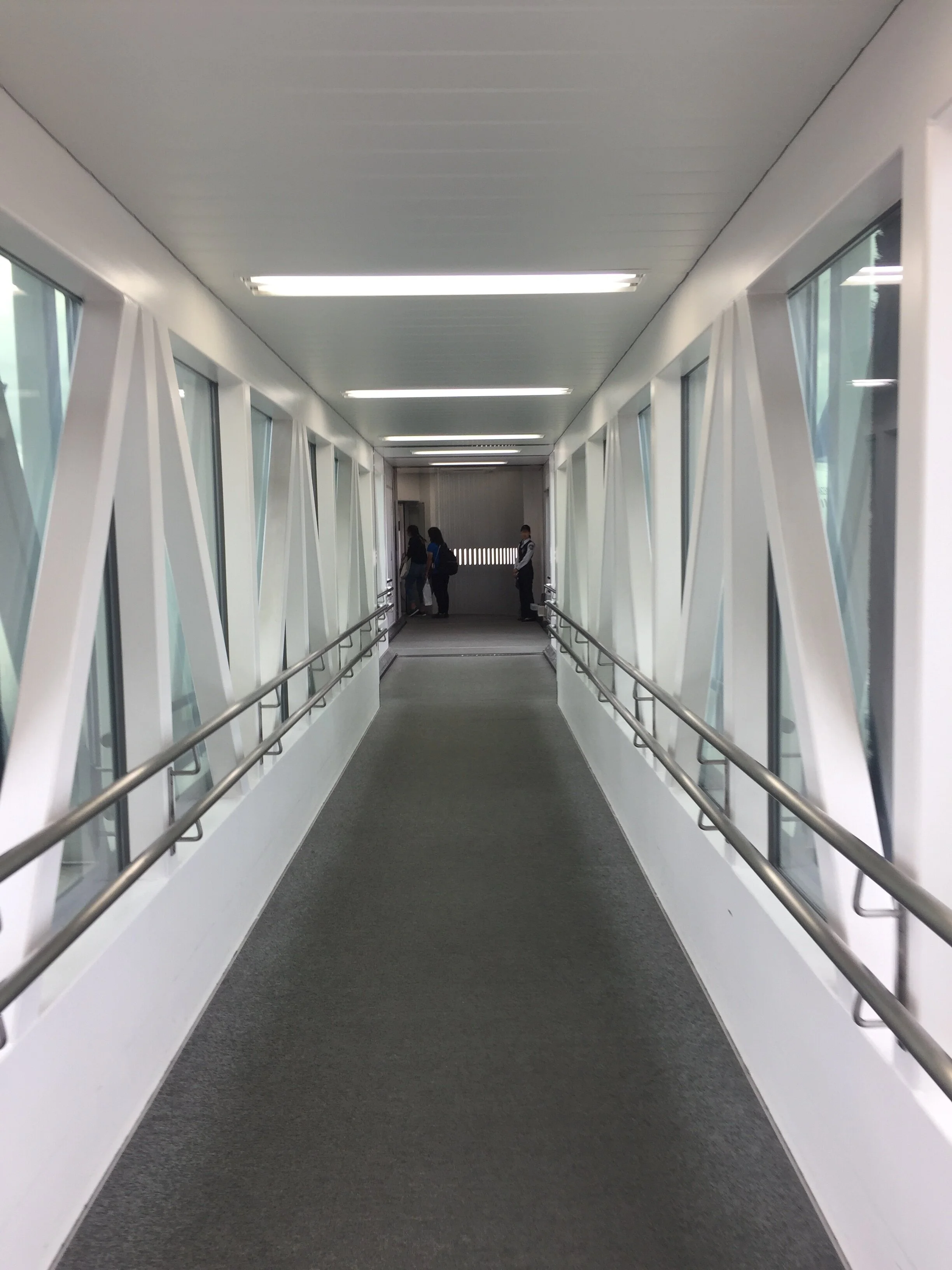Part 2 is a continuation of our story as we left Osaka before Typhoon Trami made landfall in Japan. If you’d like to know what our trip was like before we made it to Kyoto, please read Part 1 in my blog posts.
Day 7 - September 30, 2018 - Osaka to Kyoto, Japan - CONTINUED
As I mentioned in Part 1 of Lost in Japan blog post, our hotel advised we stay put in Osaka and not travel to Kyoto due to the approaching Typhoon Trami. However, we made a collective decision to pack quickly and give it our best try to make the 30 minute JR train to Kyoto before all transportation was stopped in anticipation of the typhoon.
We drove via taxi on deserted streets to the Osaka train station. And, we made it onto one of the last trains before the train station was closed. Upon arrival in Kyoto, we took a 10 minute taxi ride to our hotel, the Kyoto Ryokan Shoei, a traditional 8-mat tatami Ryoken. The lobby was full of baggage and people. Our hotel in Kyoto was in the same situation as we had in Osaka. People were waiting the arrival of the approaching typhoon and unsure if they should venture to their next destination. Thus leaving us without a room to check into. The very pleasant staff said it would probably be several hours before our room was ready since we arrived around 10:00am. We made the decision to walk around the neighborhood and find a place to eat. This would prove harder than we anticipated. Thank goodness for Family Marts!
Lunch at Family Mart during Typhoon Trami.
Family Marts are like 7-11 here in the States, but way better. They have really fresh food, snacks, drinks, travel necessities, clean bathrooms and a counter to eat your lunch at. Since everything was closed, we had no other option than to eat our lunch and grab more supplies from the Family Mart. The selection was good and affordable. I purchased a selection of fresh finger sandwiches (egg, tuna and meat & cheese), potato chips (like Pringles), a rice and bean snack and chocolate. The selection of drinks was also really interesting. Zachary really liked a milk soda and I enjoyed the sparkling water with lemon and also a Sprite-like carbonated drink. Grammy found herself enjoying the coffee cold brews. All of which could be found in vending machines throughout Japan.
After lunch we slowly wandered back in the direction of our hotel. And, tried to view a shrine or two, but they were all closed. Since it was pretty quiet on the streets, we thought it would be a good idea to head back to the hotel and check the status of our room. The staff said it would probably be another hour or two. We charged our phones then off we went again to venture to a local park nearby to get some air and kill time before we could check in.
It was hot and muggy but it was better than sitting inside the packed hotel lobby just waiting. We walked about 15 or 20 minutes toward a park near our hotel, and just enjoyed being outside. There were families enjoying the park and no one seemed particularly concerned, so we did as the locals did.
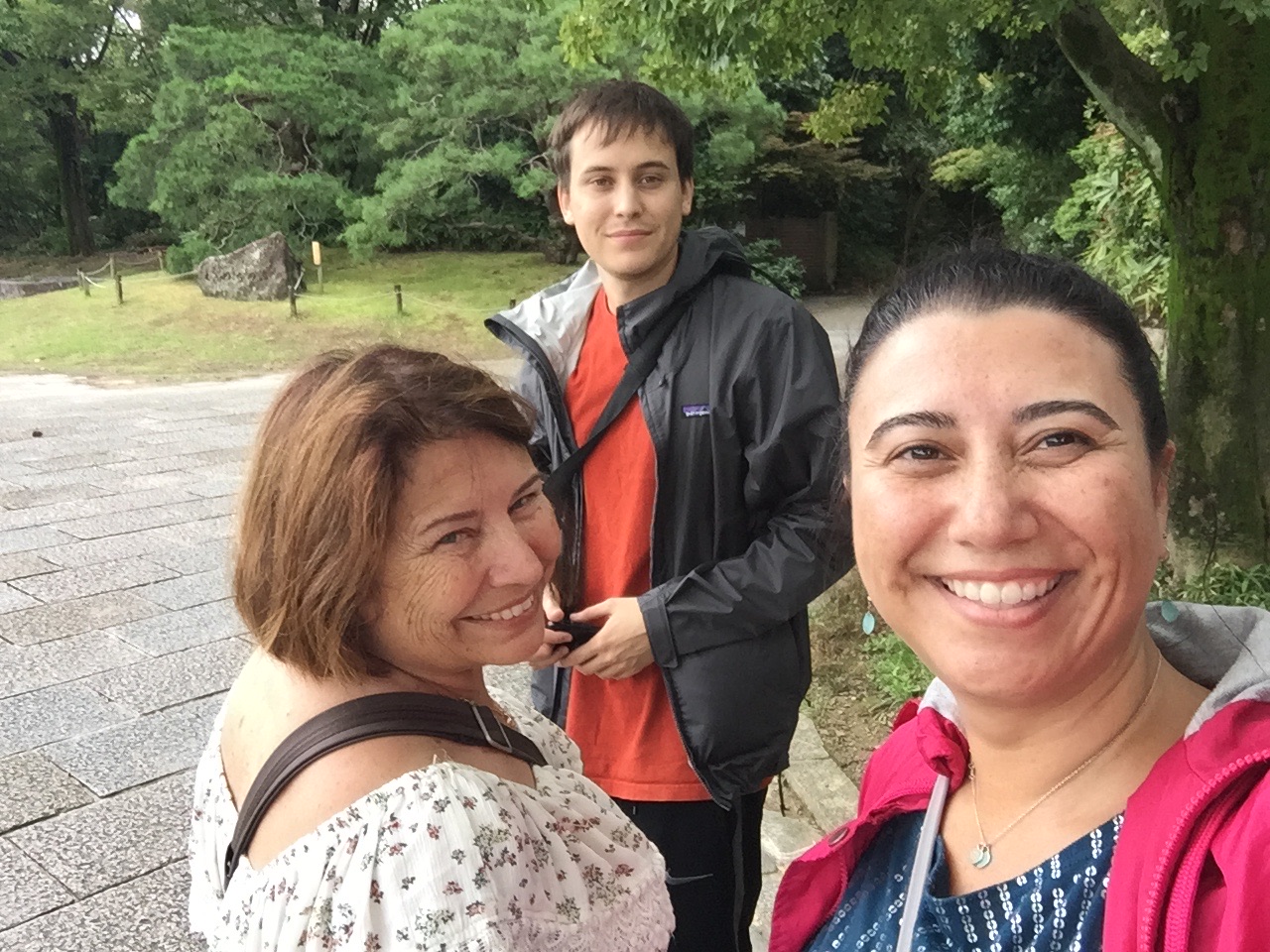
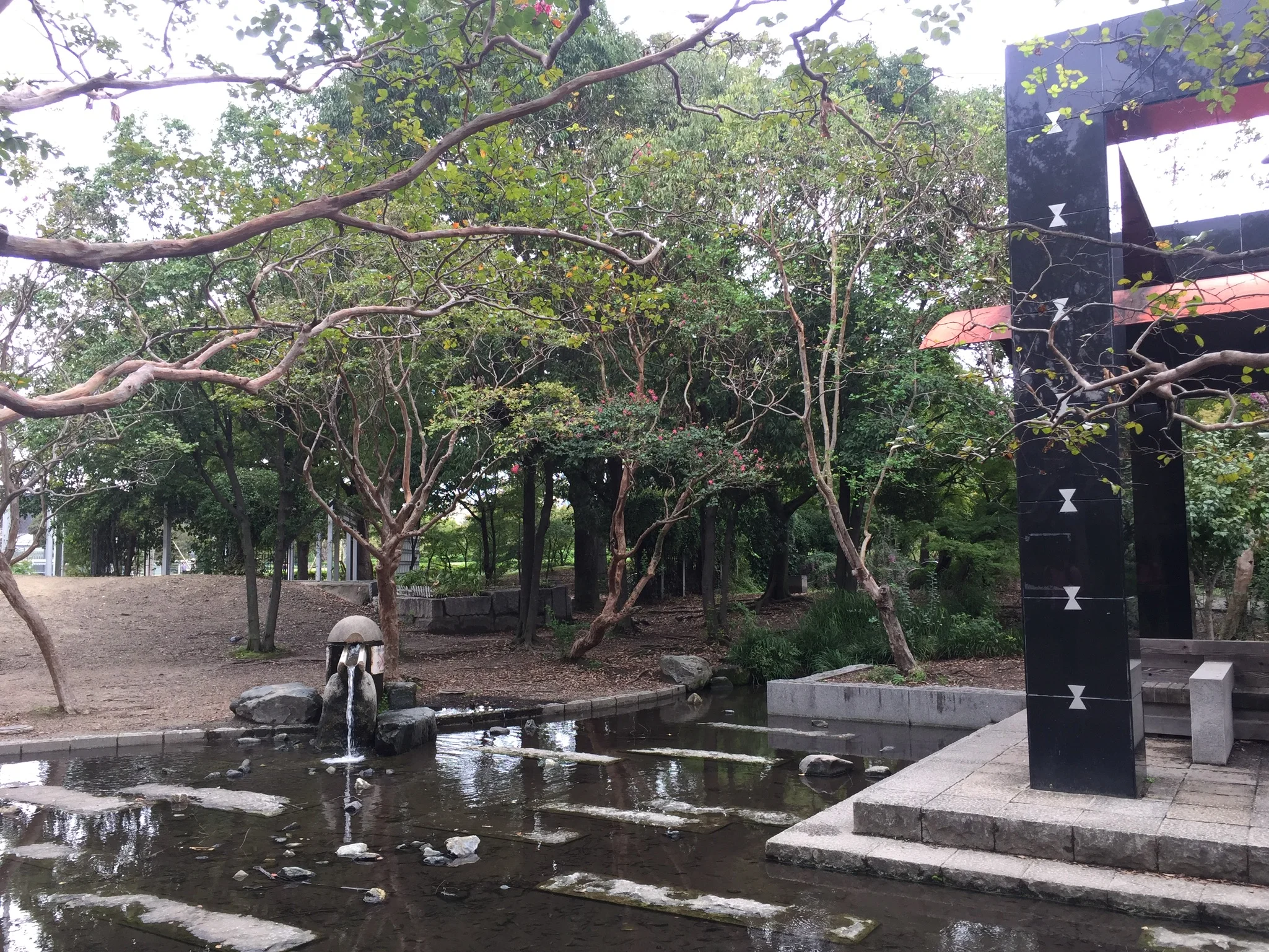
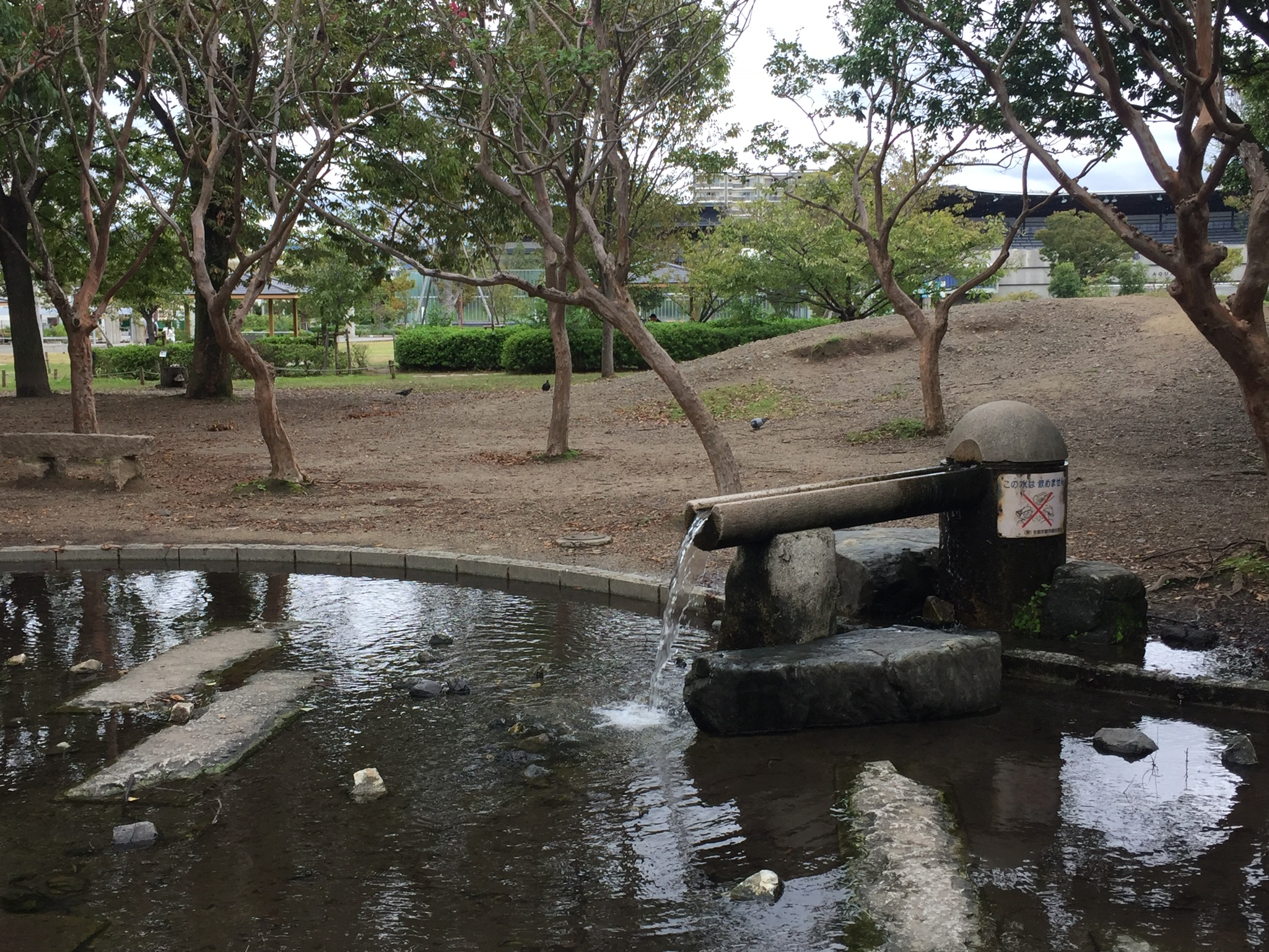
After a couple of hours of wandering around we headed back toward our hotel. Along the way, Zachary found a barber and decided to get his hair cut. We left Zach to his haircut and Grammy and I walked back to the hotel. On our way back we saw “preparation” for the typhoon that was going to come inland later that same day on several homes. Nothing too extensive from what we could tell. When Zach came back to the hotel, he said his haircut and service was the best he ever had. It consisted of warm towels, attention to detail and a huge language barrier. But, he said the experience and price was worth it.
Once we arrived back at the hotel we were finally able to enter our room. It was our first opportunity to stay in a ryokan with a traditional 8-mat tatami room with three futon beds on the floor. Our ryokan also had an onsen. We were brought to our room by one of the staff and so happy to finally be in our room. Grammy and I were hungry and wanted to try the onsen. Zach decided to rest in the room while we gave the onsen a shot. We then had dinner at our ryokan’s restaurant. The English was very limited, but we got by and enjoyed a nice dinner and relaxing evening soaking in the indoor and outdoor natural hot springs as it finally began to rain.
Onsen etiquette for the inexperienced:
An onsen is a shallow pool with a natural hot water spring and due to a lot of volcanic activity in Japan, you’ll be able to find them around the country. There are various types both indoor and/or outdoor, attached to hotels or ryokans. And, some are independent of hotel or ryokans. As a foreigner, I was excited to experience a natural hot spring, in theory. And, we were all for it before we traveled to Japan and made sure we were going to stay in a few on our trip. After a long day of sightseeing, what would be better than a hot water bath to soak in? Doing it completely naked in front of strangers or with my mother was another thing to consider. As long as you follow a few basic rules, keep your eyes to yourself, you’ll be fine. Onsens have been used for centuries socially by families, friends and businessmen alike.
First, only enter the side of your gender. Be aware, establishments will usually switch it up every other day to give patrons an opportunity to have another experience. Once inside, you’ll enter into a locker room with baskets or lockers. Undress, put your clothes into the basket or locker, take your key, if applicable, grab a washrag for modesty and head into the shower room. Don’t worry about your belongings, Japan is safe and honest. But, do not bring anything of value, just incase as there are foreigners there as well. Sit on one of the stools in front of a shower stall and wash your entire body while sitting, including your hair. There are products there to be used, use them and not your own, as they are environmentally friendly. Once you wash all the suds away and clean all your bits you can now enter the hot spring pools.
The washrag you grabbed earlier, should never touch the water of the pool, it will cross contaminate it. Place it on the side of the pool or fold it and put it on top of your head like the locals do. Most onsens have several pools of varying temperatures, so enter gently and only stay as long as you can handle. On average, we stayed about 5 minutes per pool and then cooled off. Some even have an ice bath and sauna. Once you are done, head back to the locker room to towel off. The natural hot springs have minerals, etc in the water and typically people do not wash off after using the onsen. There are lotions, blow dyers, etc to make yourself beautiful, if you so desire. The best part is just getting dressed and going back to your room to relax and sleep.
One note about tattoos and onsens: I have one and it’s not easily covered up. Know that if you have a tattoo you can be turned away from an onsen. Traditionally they are looked down upon in Japan and associated with gangs and anti-social people. Since I was a guest in another country I wanted to respect their traditions and I covered my tattoo up with natural skin tone colored KT tape, which stayed in place in the water. I did receive a few looks, but thankfully I was not asked to leave. Just know Japan is deeply traditional and values respect so you be the best judge in your own situation while you are a guest in Japan.
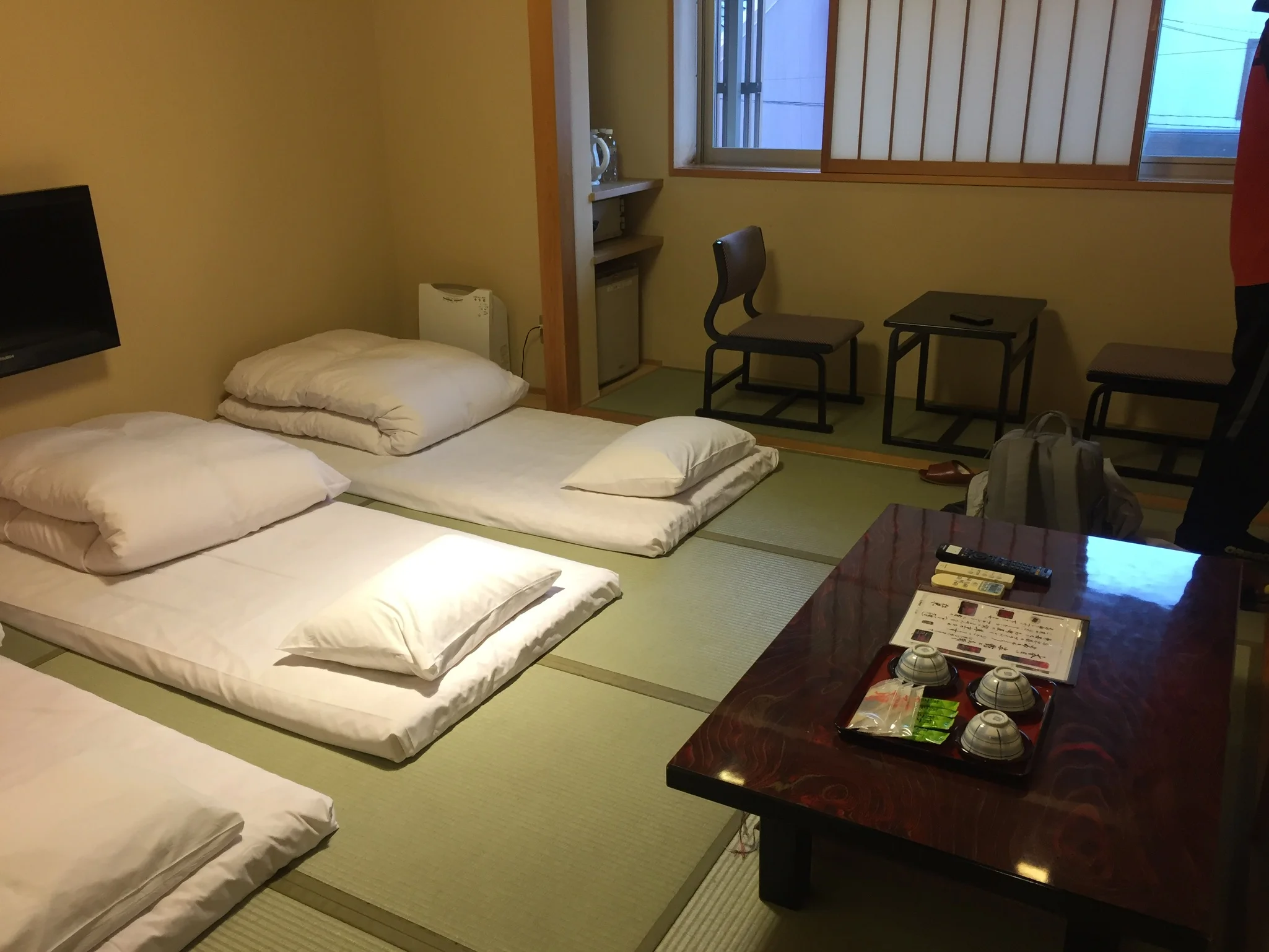
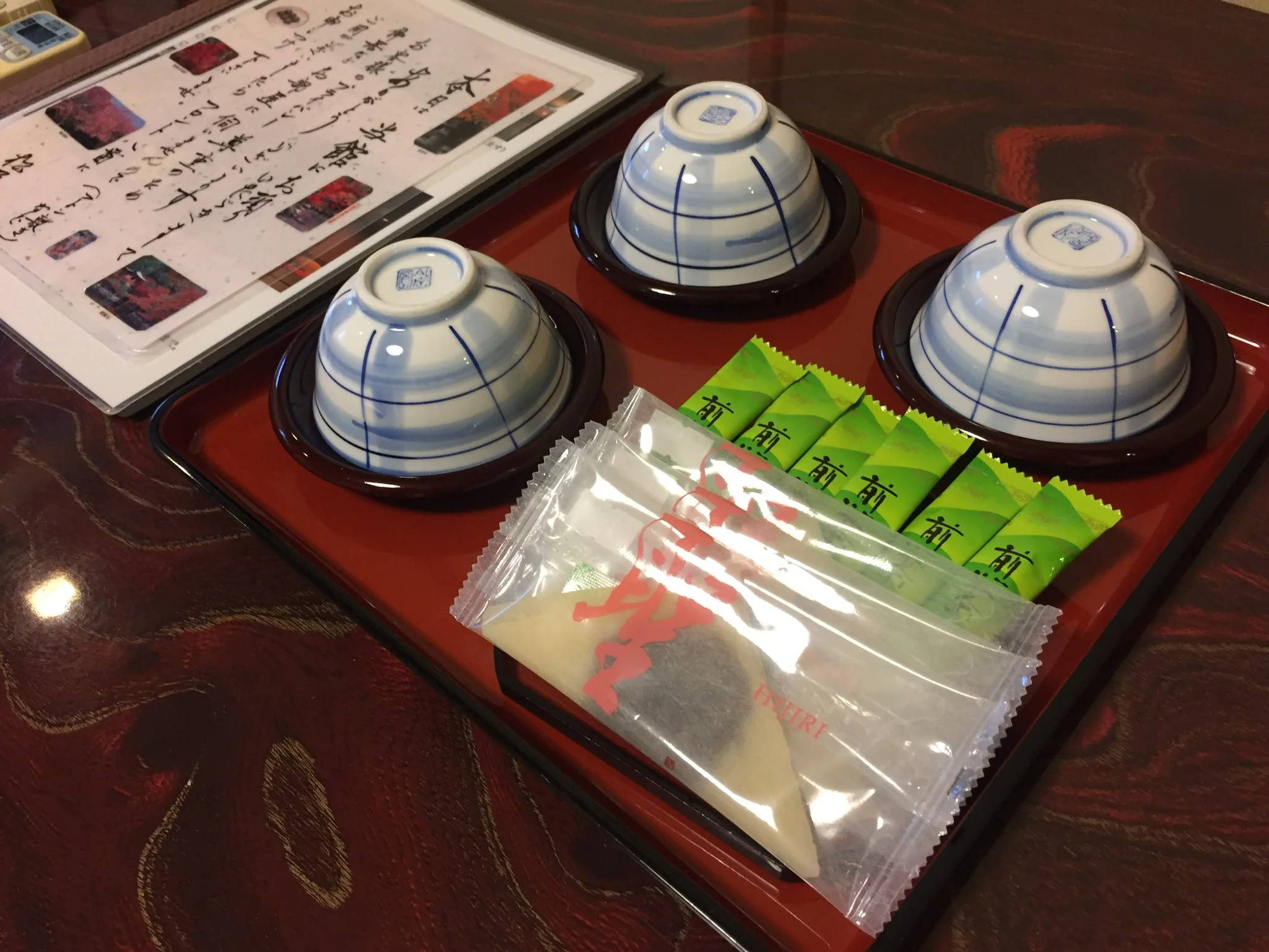

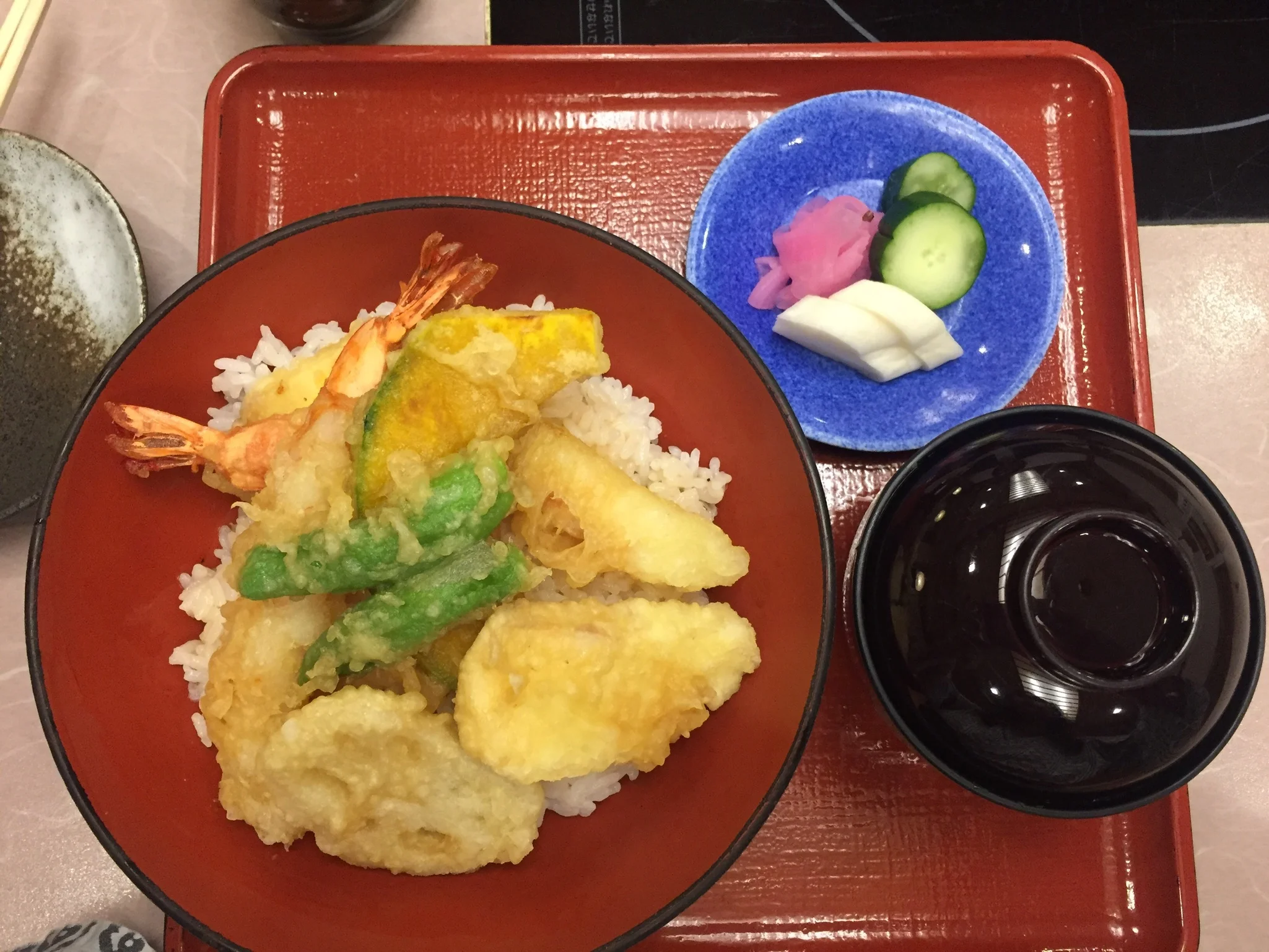
Day 8 - October 1, 2018 - Kyoto, Japan
Overnight we heard the wind and rain, but nothing too crazy. By morning Typhoon Trami had blown out and we went back to our itinerary. After tea and a bean paste pastry at our ryokan we walked to Nijo-jo Castle & Gardens, a Unesco World Heritage Site. The castle was built in 1603 in the middle of Kyoto. The grounds were huge and we spent a few hours viewing the buildings and taking in the views.
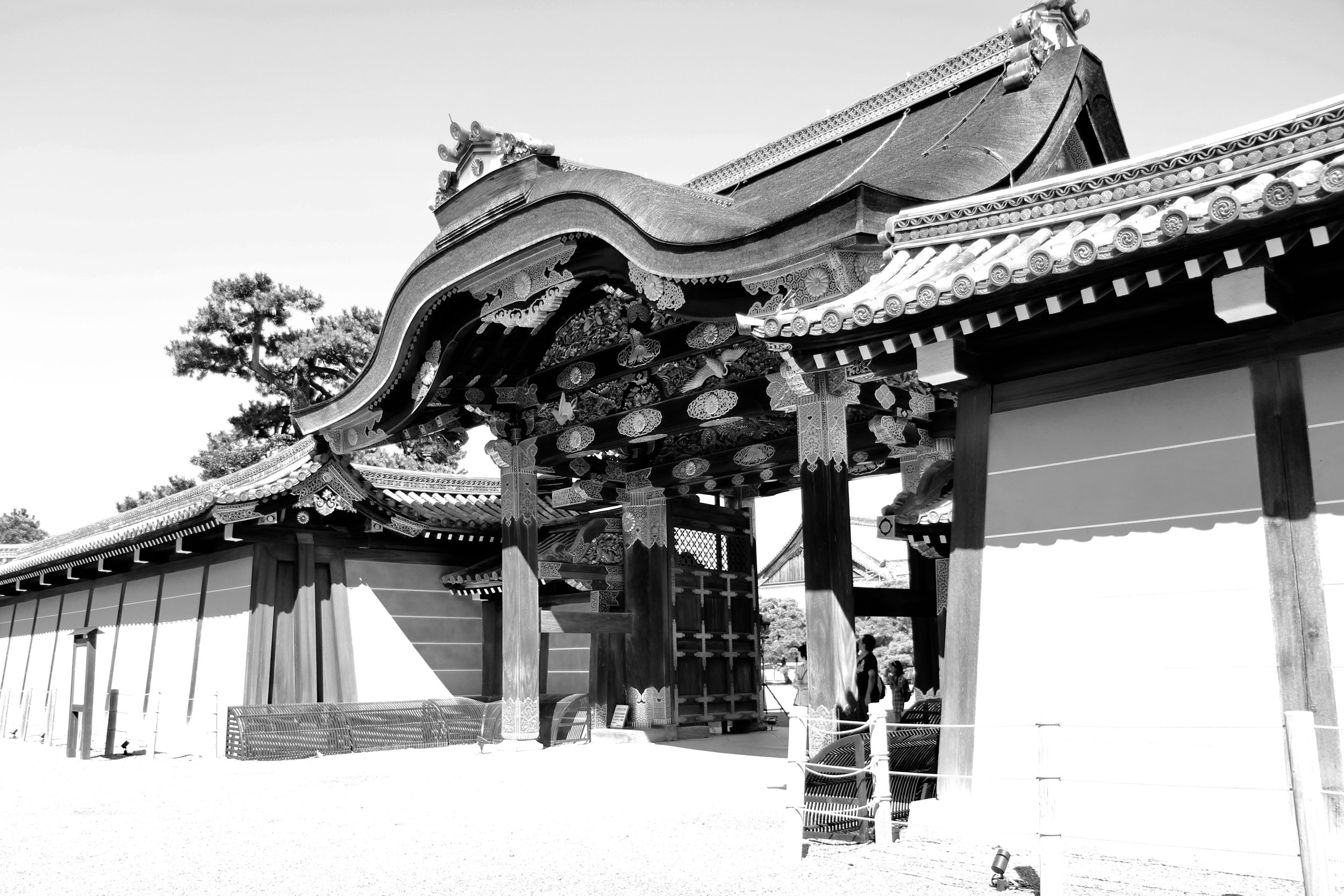
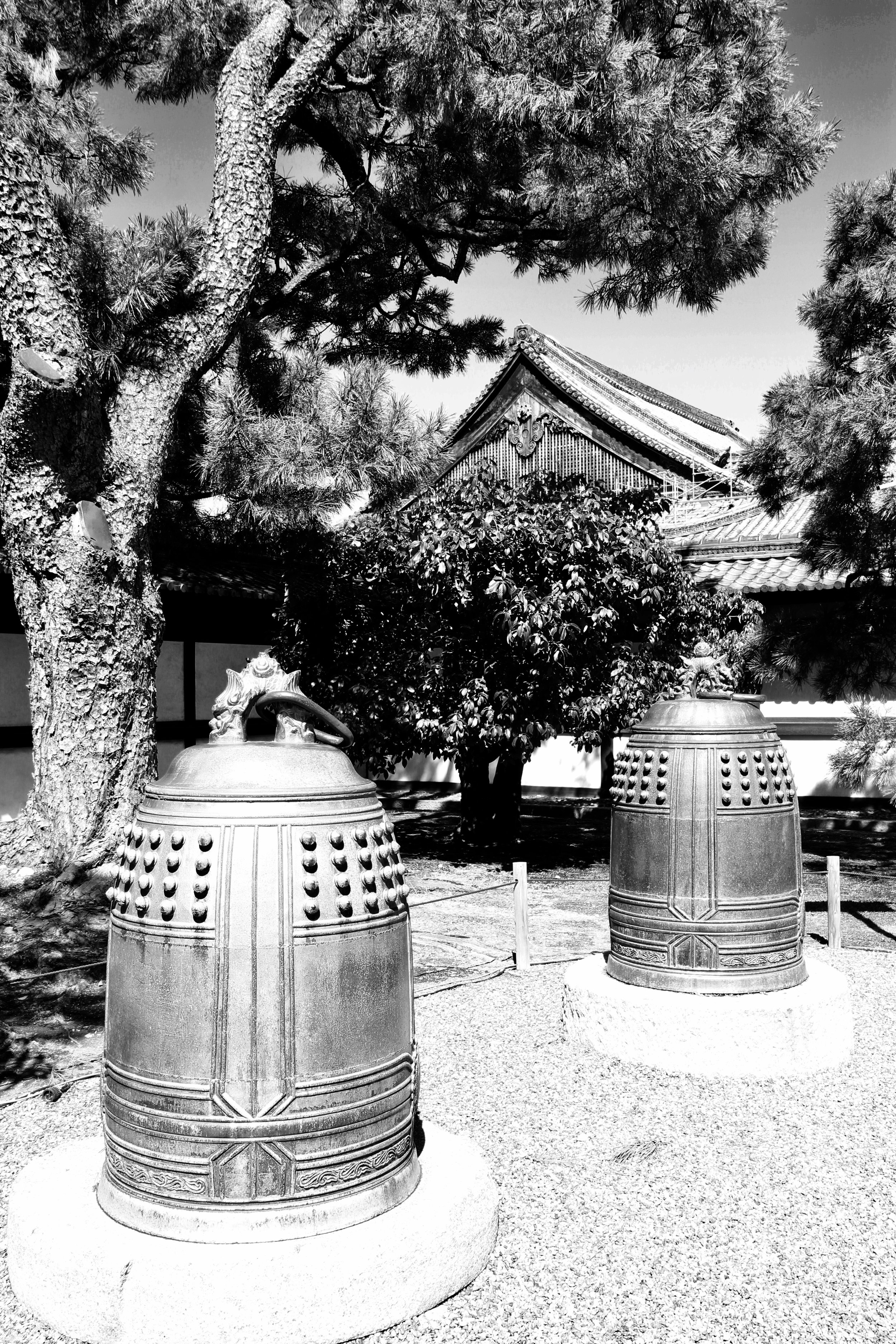
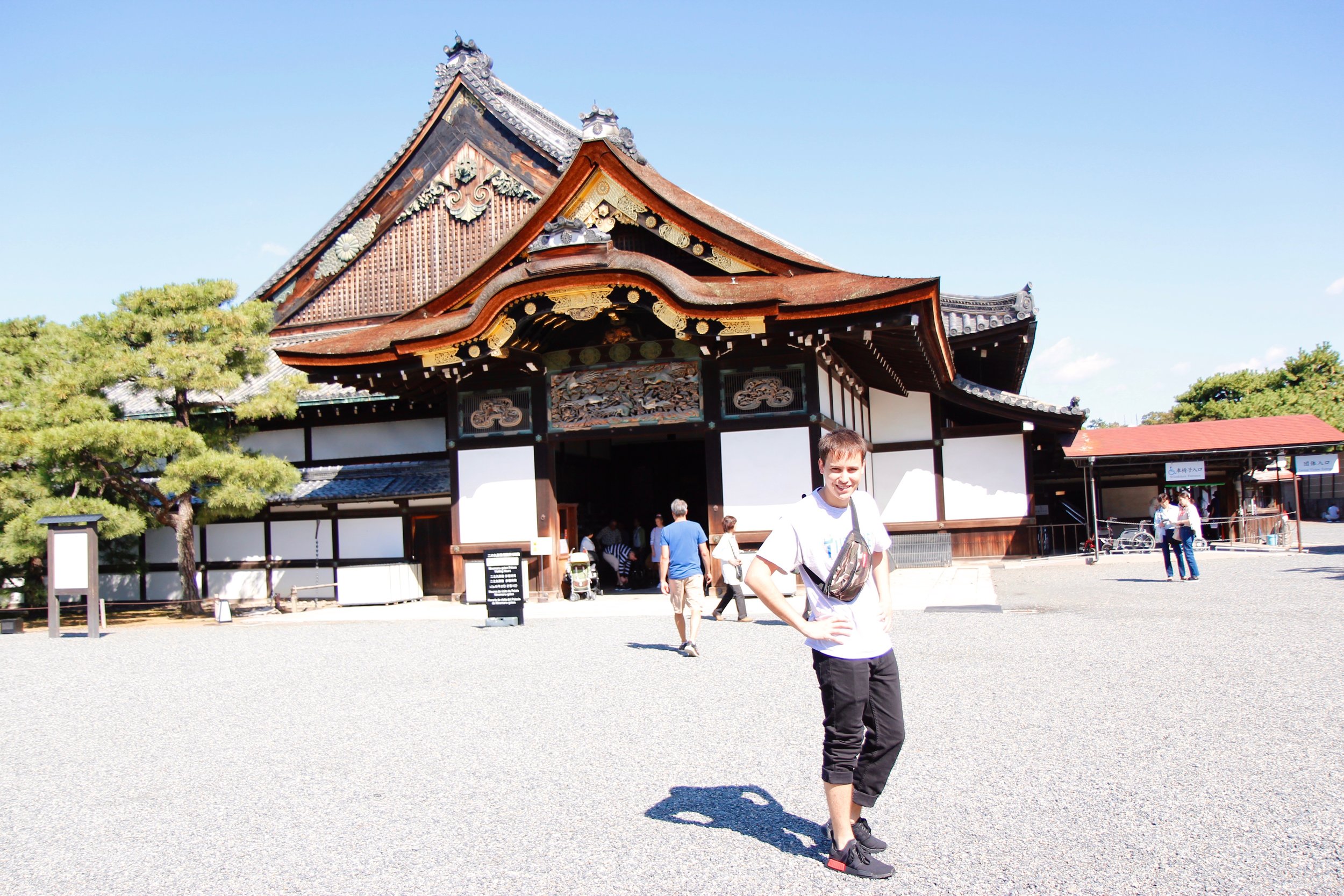
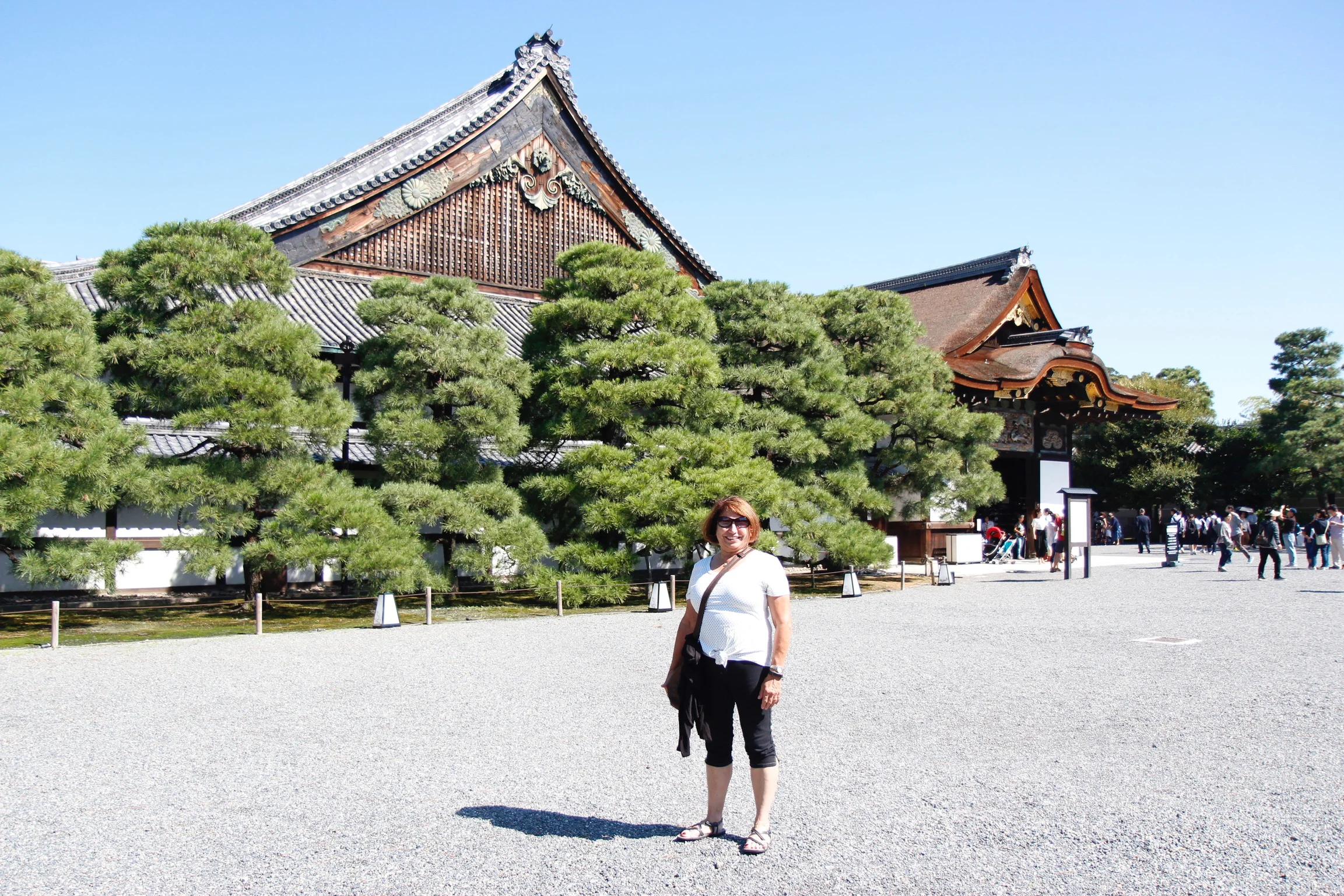

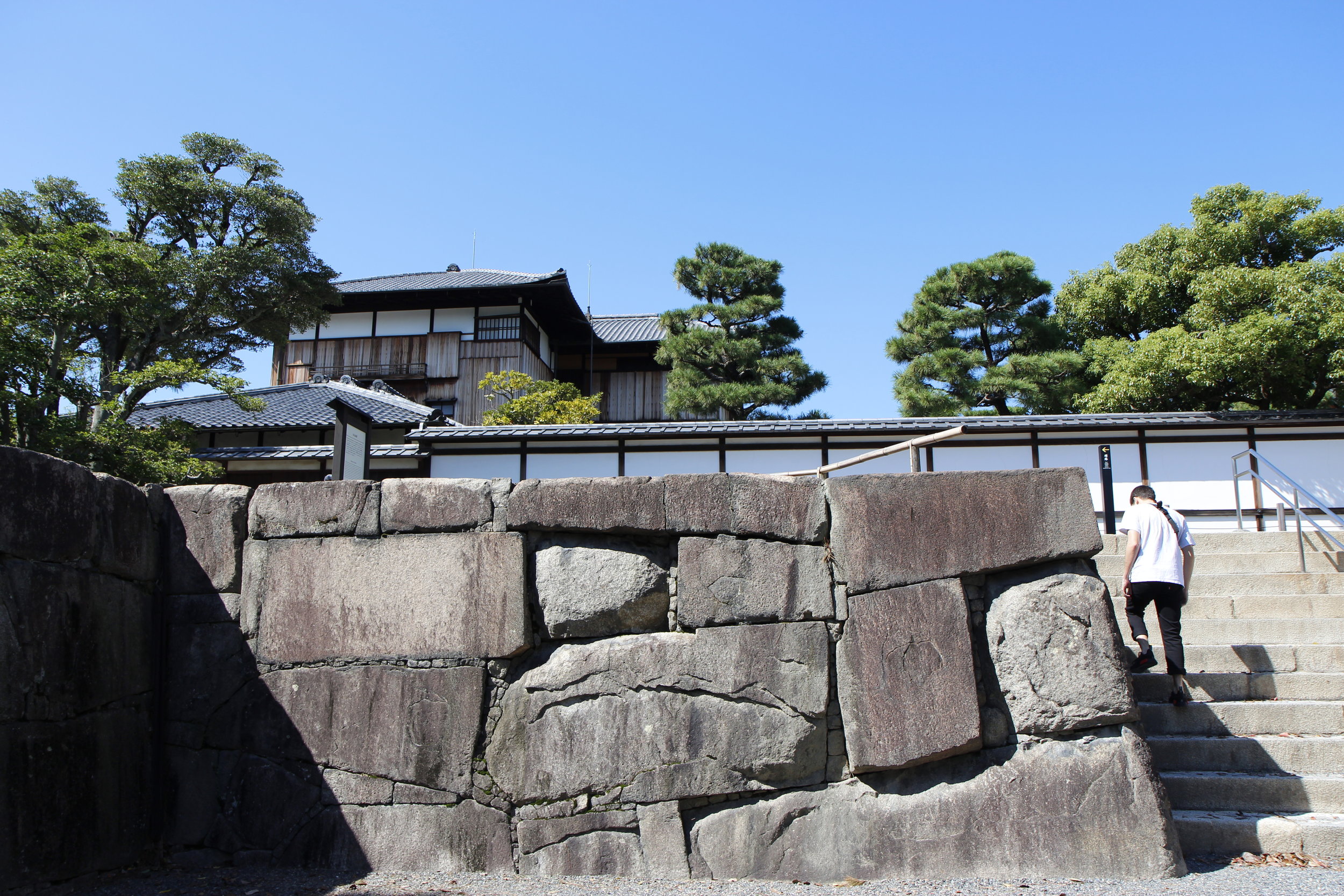

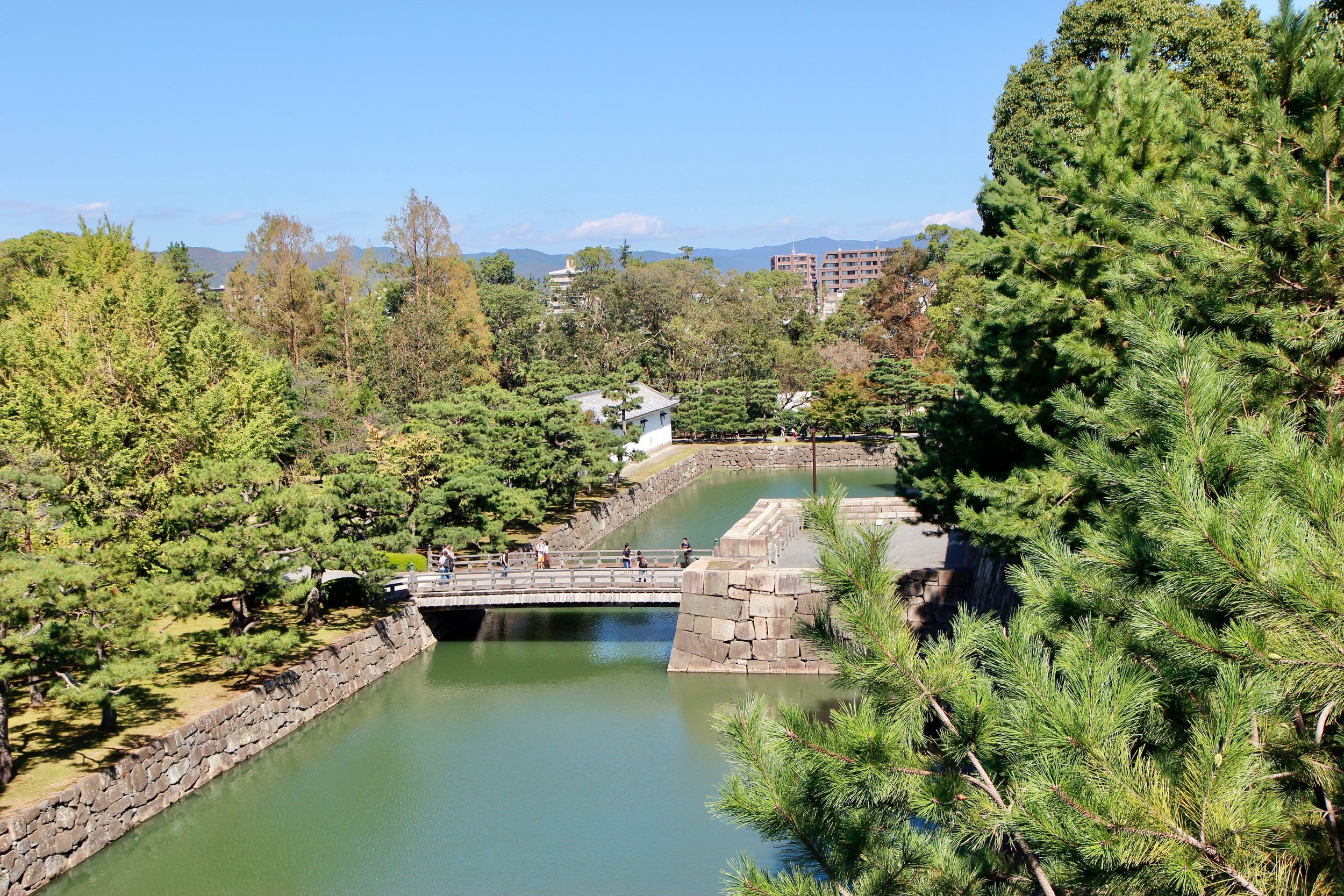
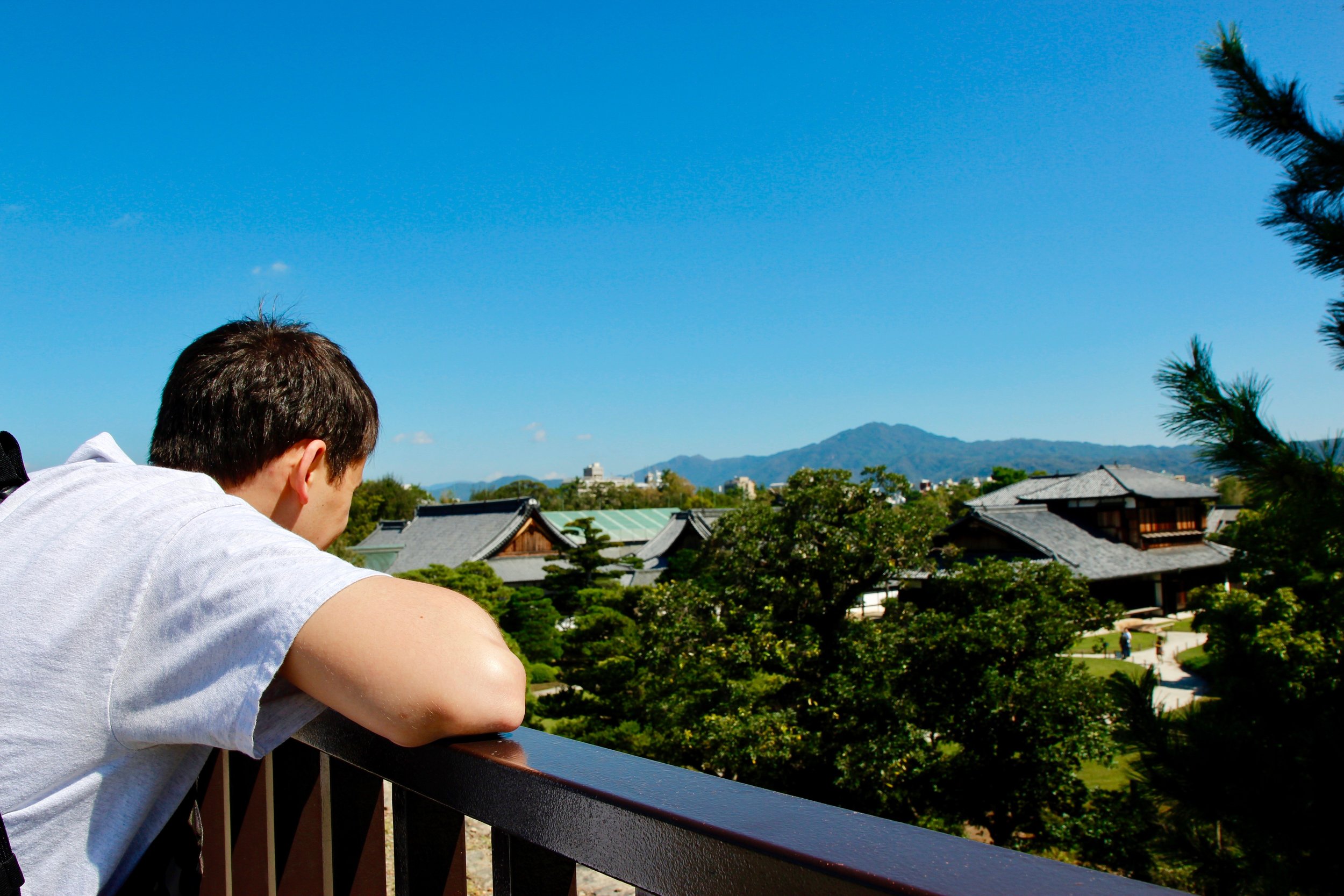

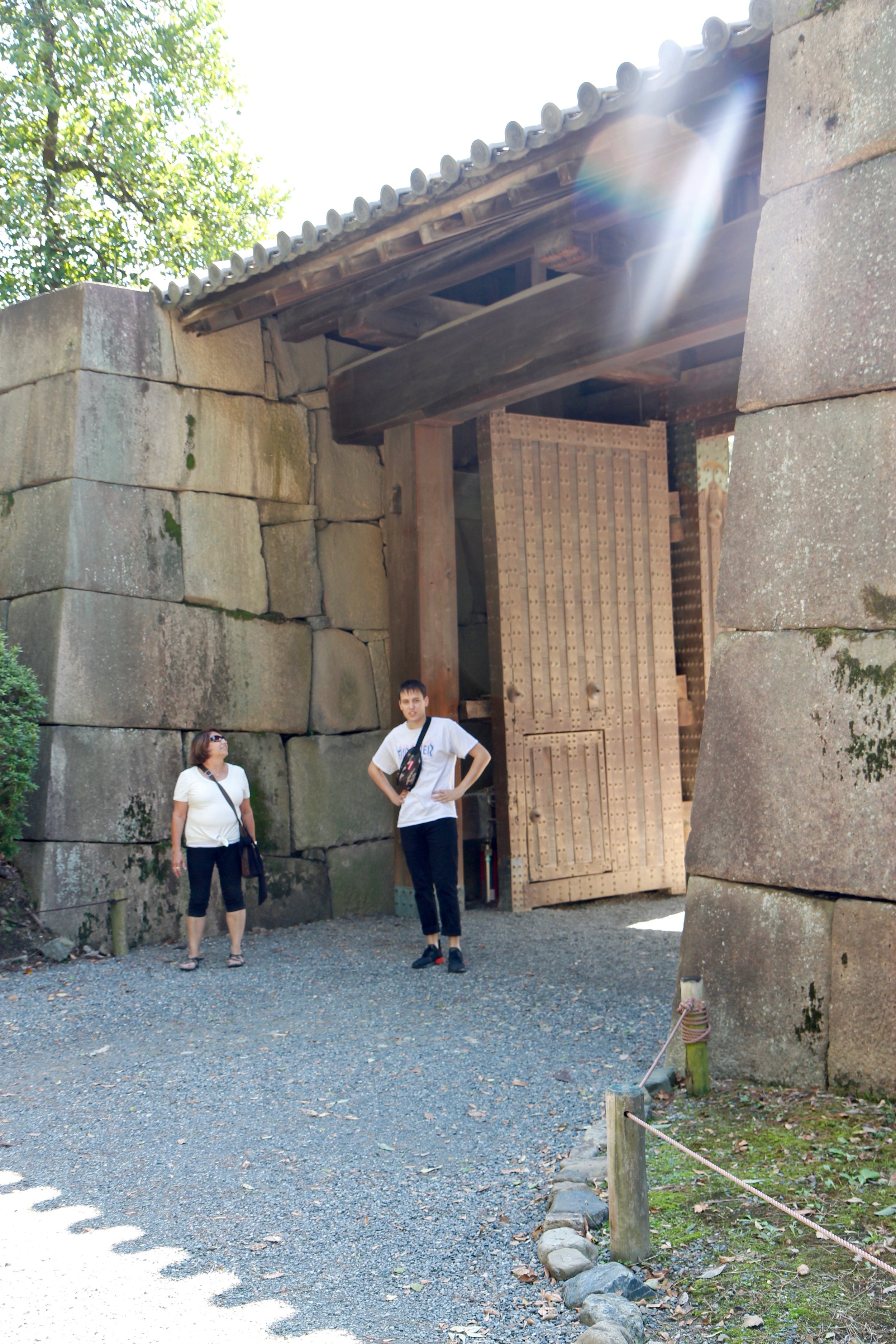
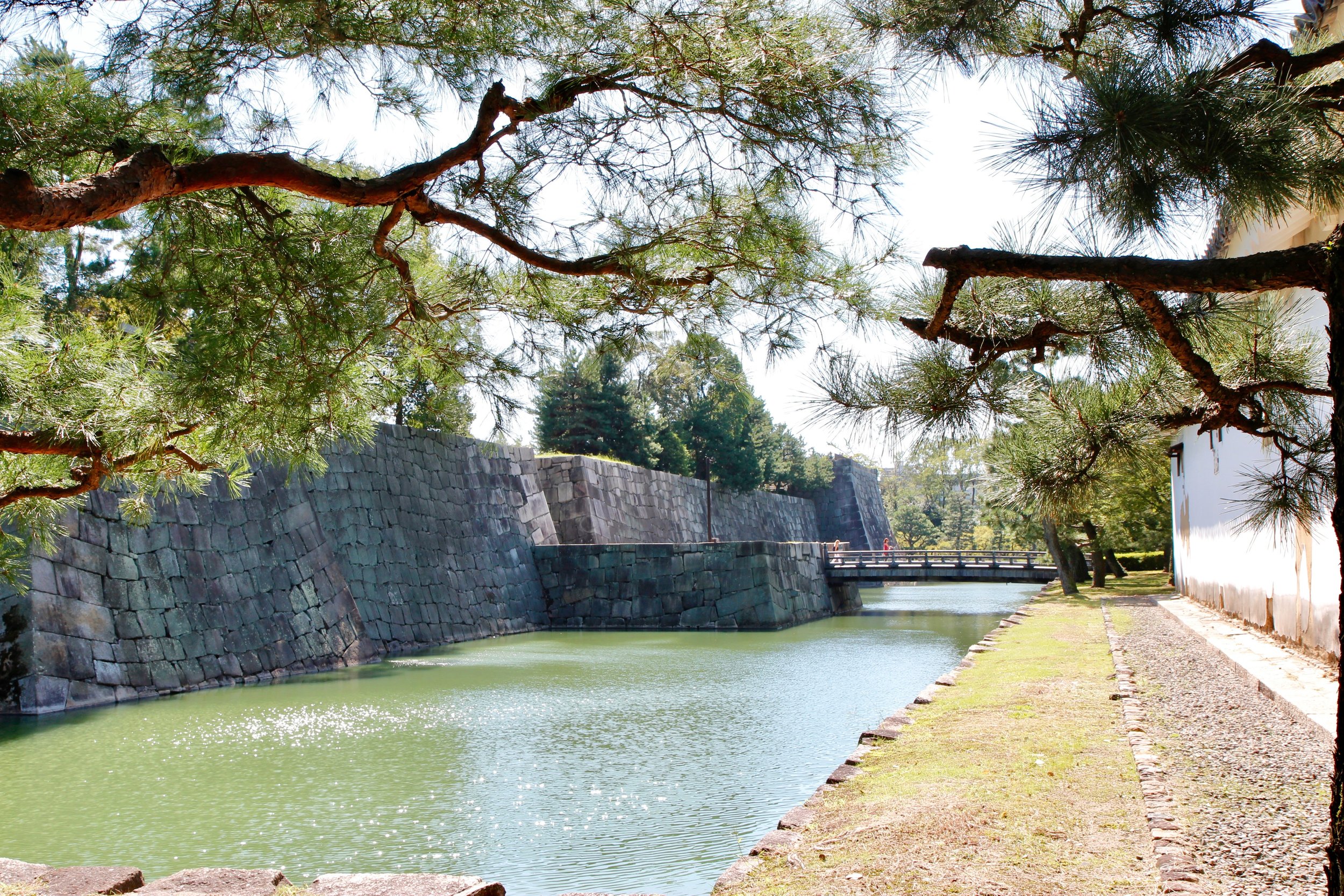
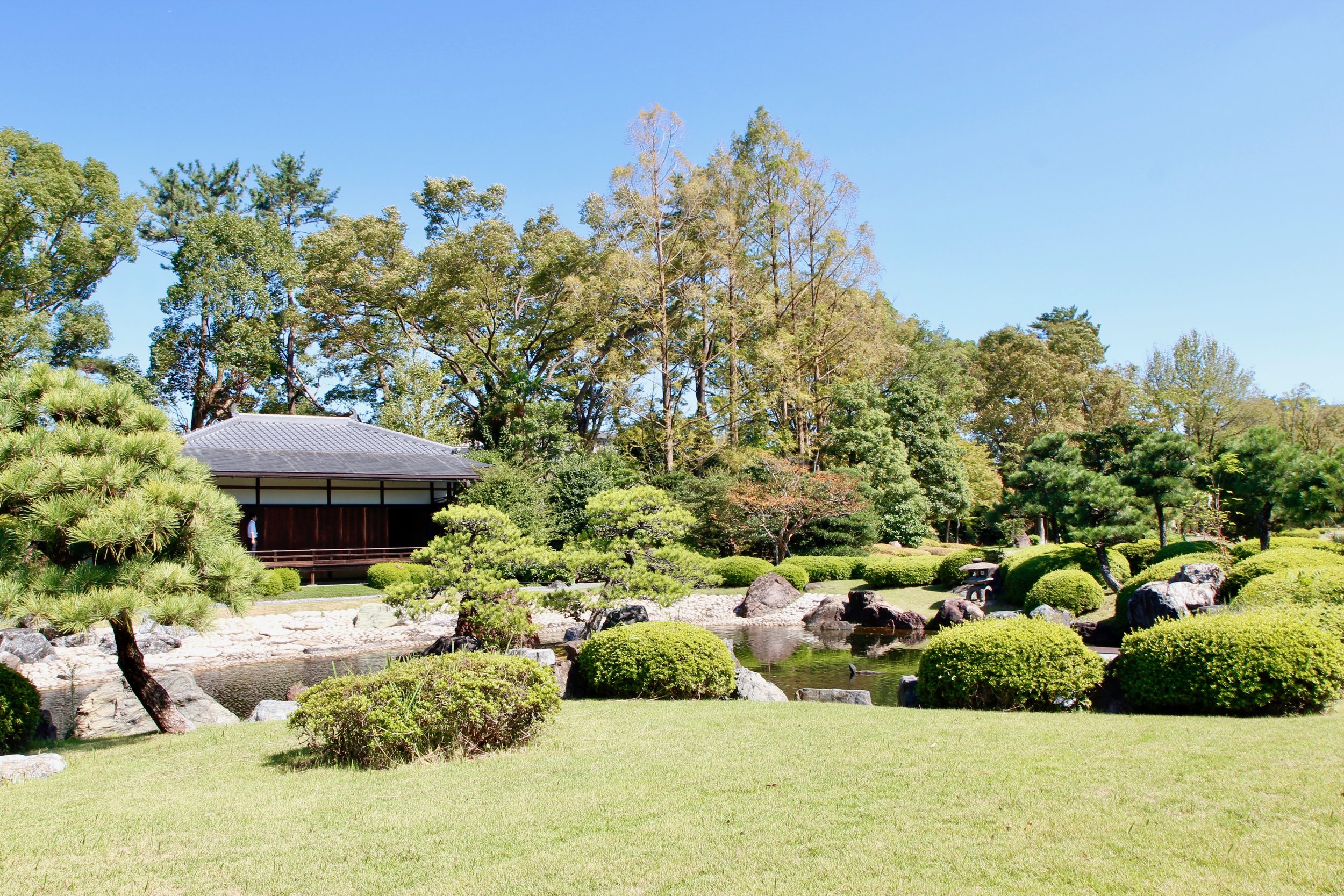
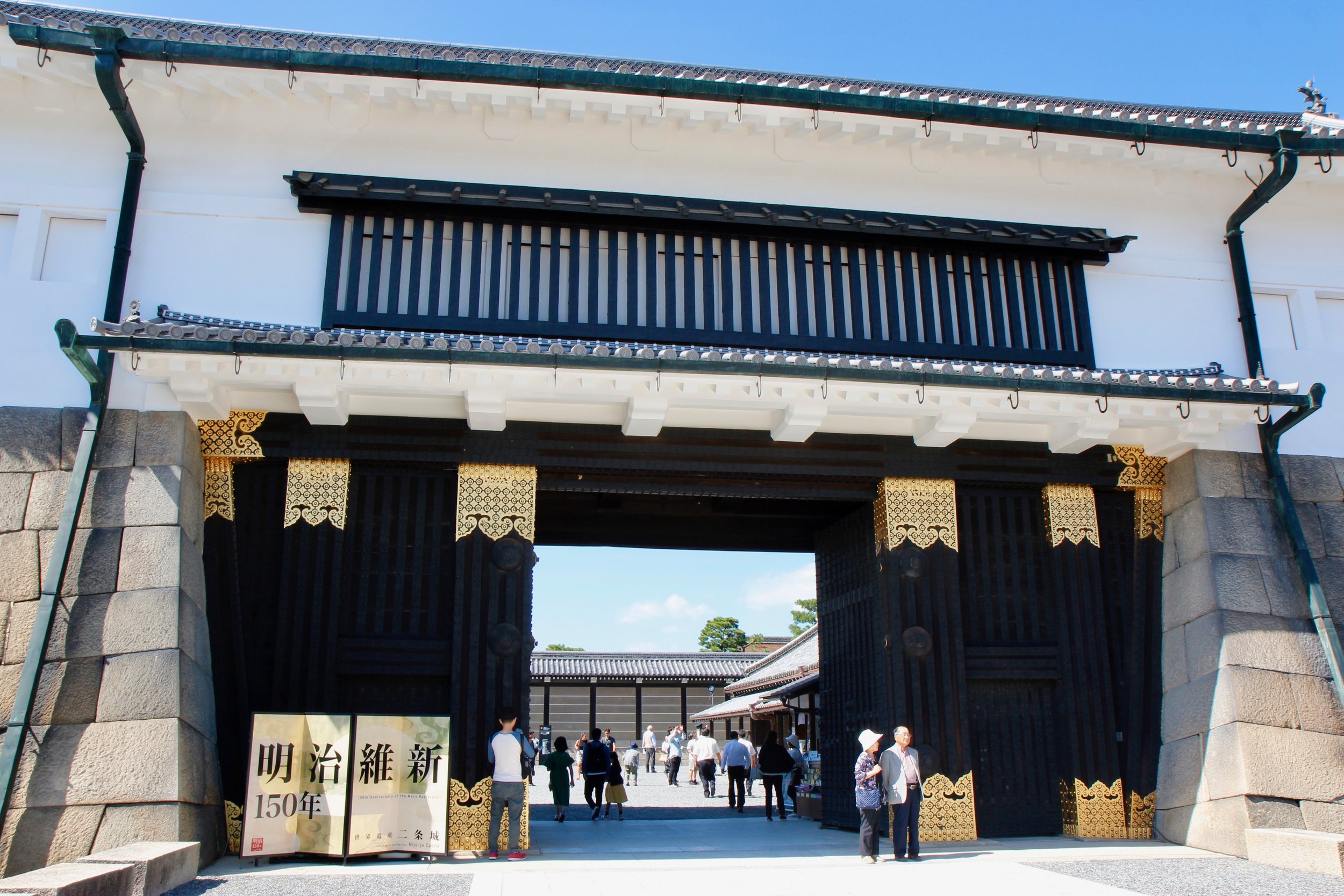

After we had our fill at Nijo-jo Castle and Gardens, we worked our way over to the Nishiki Market via city bus. Nishiki Market is a marketplace in downtown Kyoto, near the train station. It’s rich with history, tradition and the market is known to obtain many of Kyoto’s famous foods and goods. We sampled food, bought gifts and just took in the many sights and sounds of the market.
Dressed in our traditional kimonos and samurai outfits and ready for our traditional tea ceremony with Maikoya Kyoto in Fushimi Inari.
We had originally booked a Traditional Tea Ceremony with Maikoya Kyoto in Fushimi Inari on Saturday. However, we had to reschedule it for the next day due to the storm. We took the subway to the Fushimi Inari neighborhood. And, after getting lost we finally made it to the location. We were taken to a dress shop where we were able to pick out kimonos and samurai outfits. We even had our hair done. Poor Zach had to wait for us to be dressed, in several layers of clothes, by the shop helper. Once we were finally ready, we walked about five minutes, slowly, to our appointment.
We were met by our host, Chikage, who was a wonderful host and teacher. She taught us the meaning and purpose of a tea ceremony. We were able to watch her as she explained the process. Then we were invited to join in and participate ourselves. After the ceremony we took lots of photos. It was a really great experience.

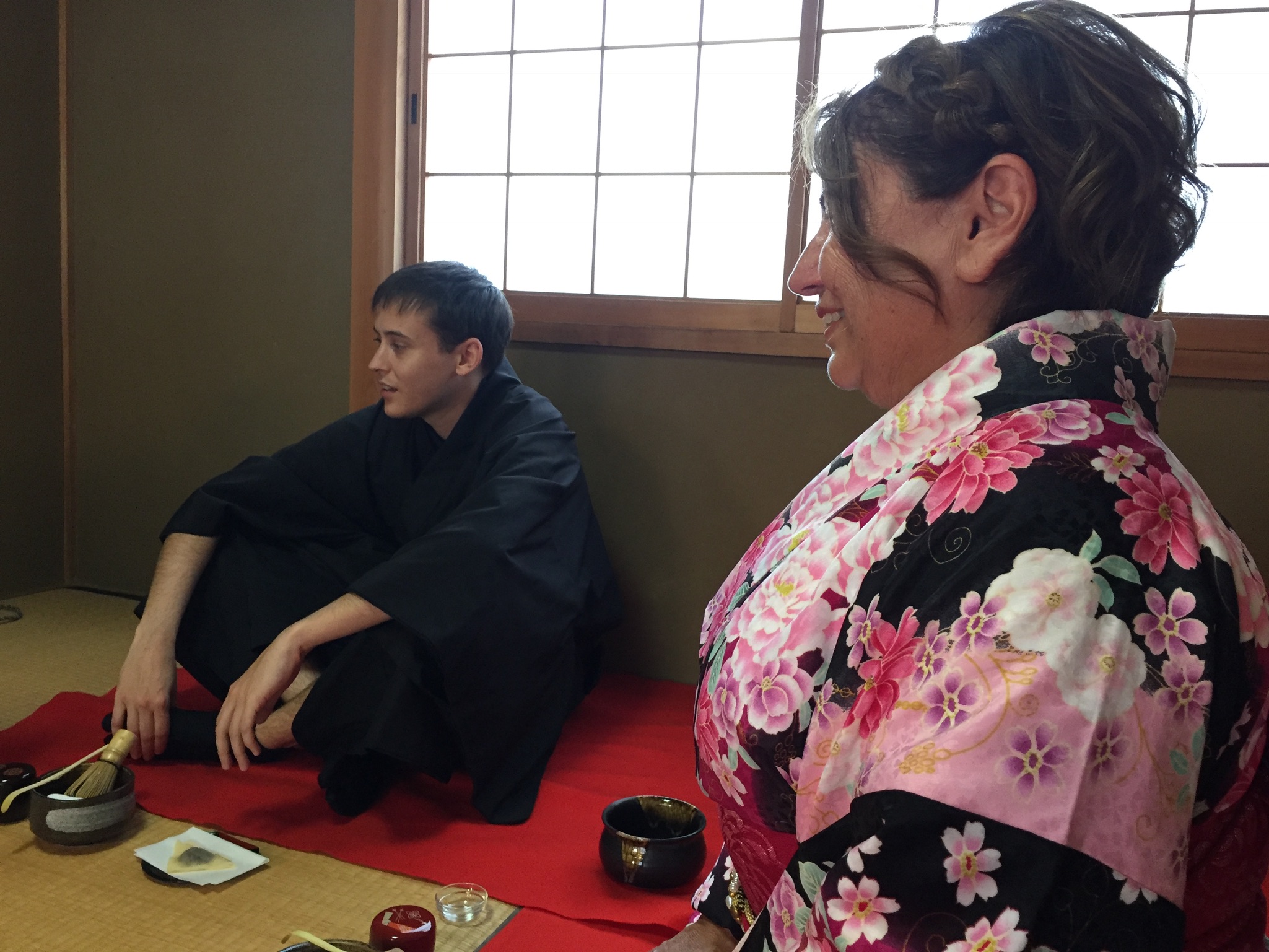
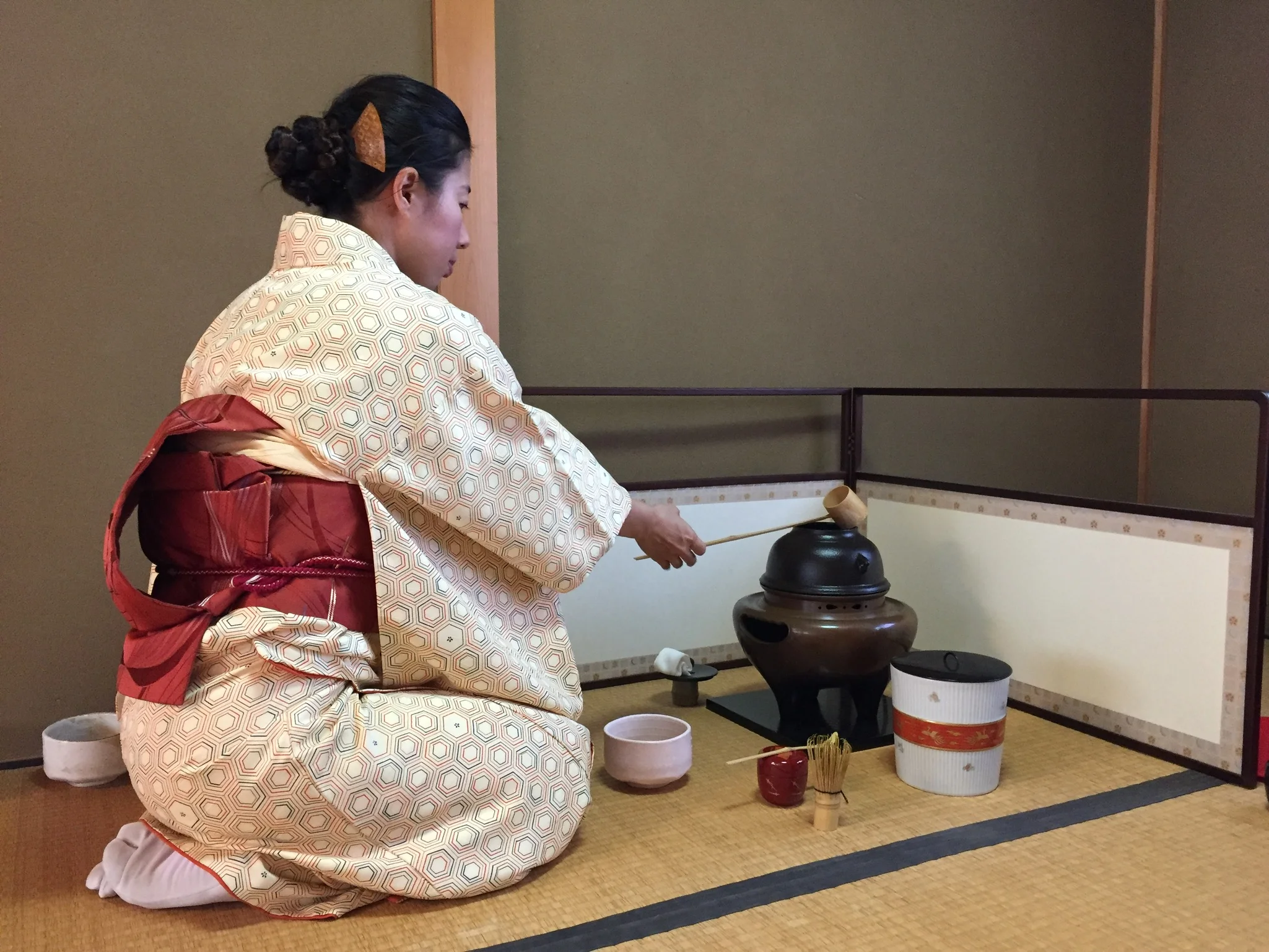
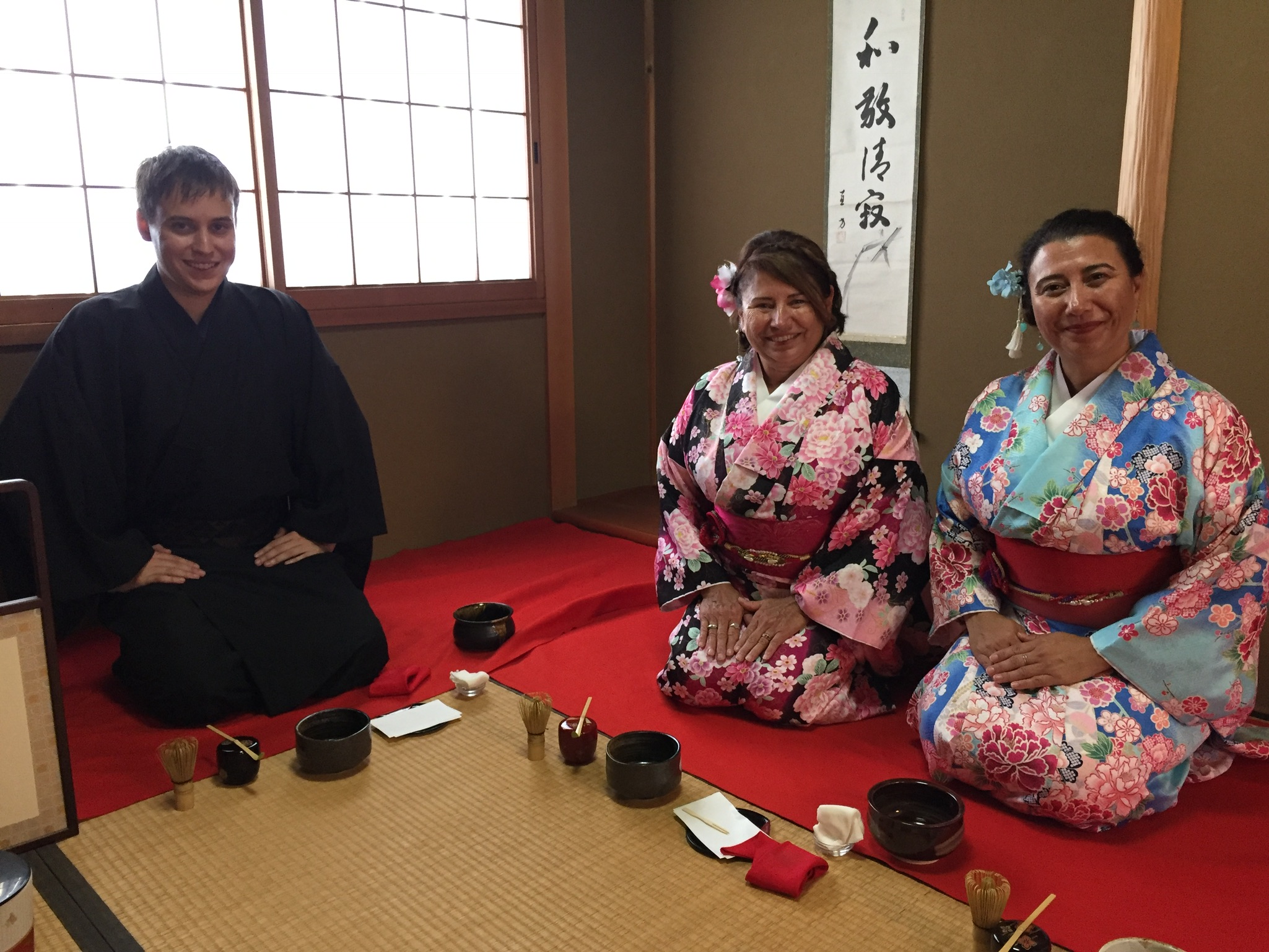








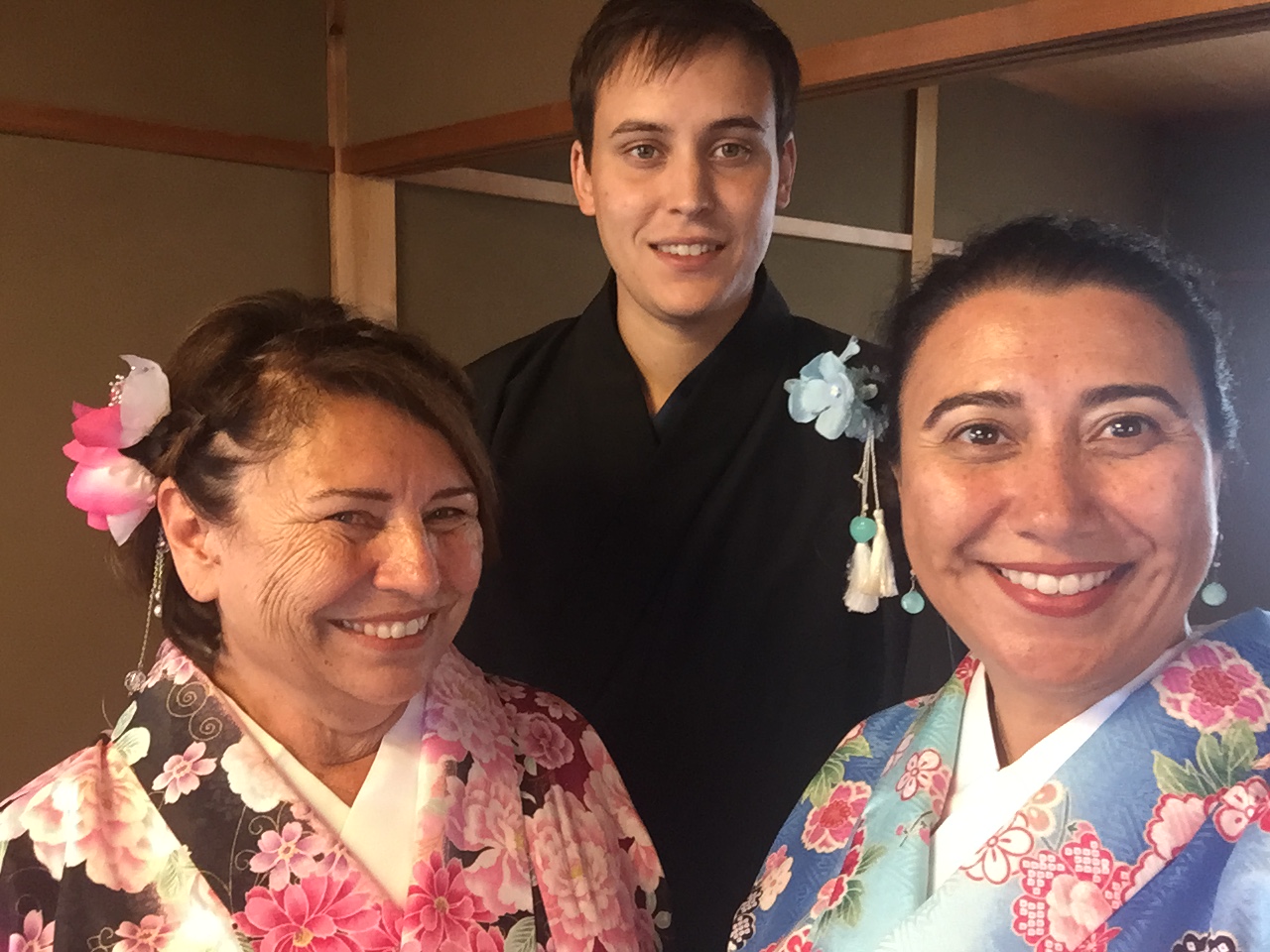
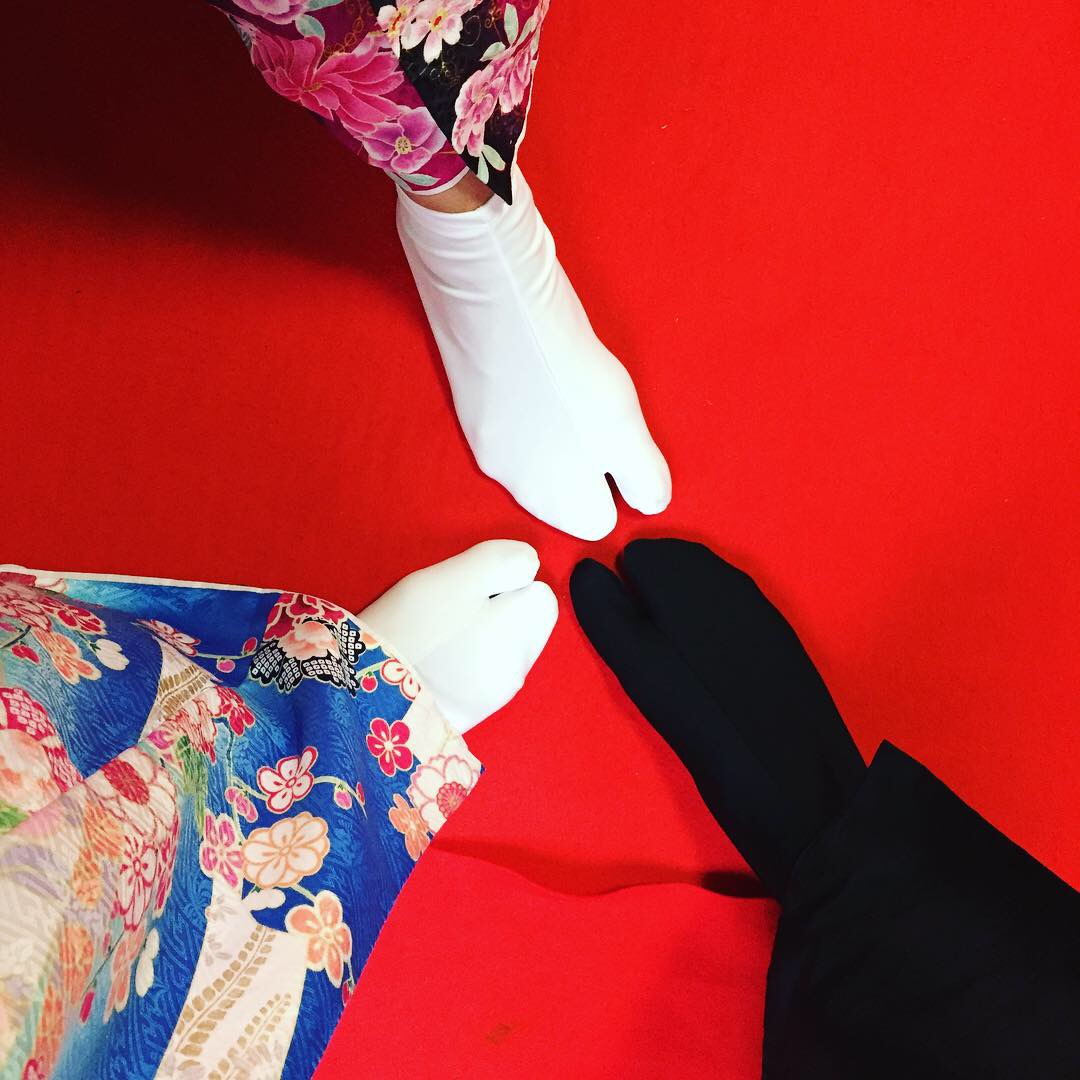
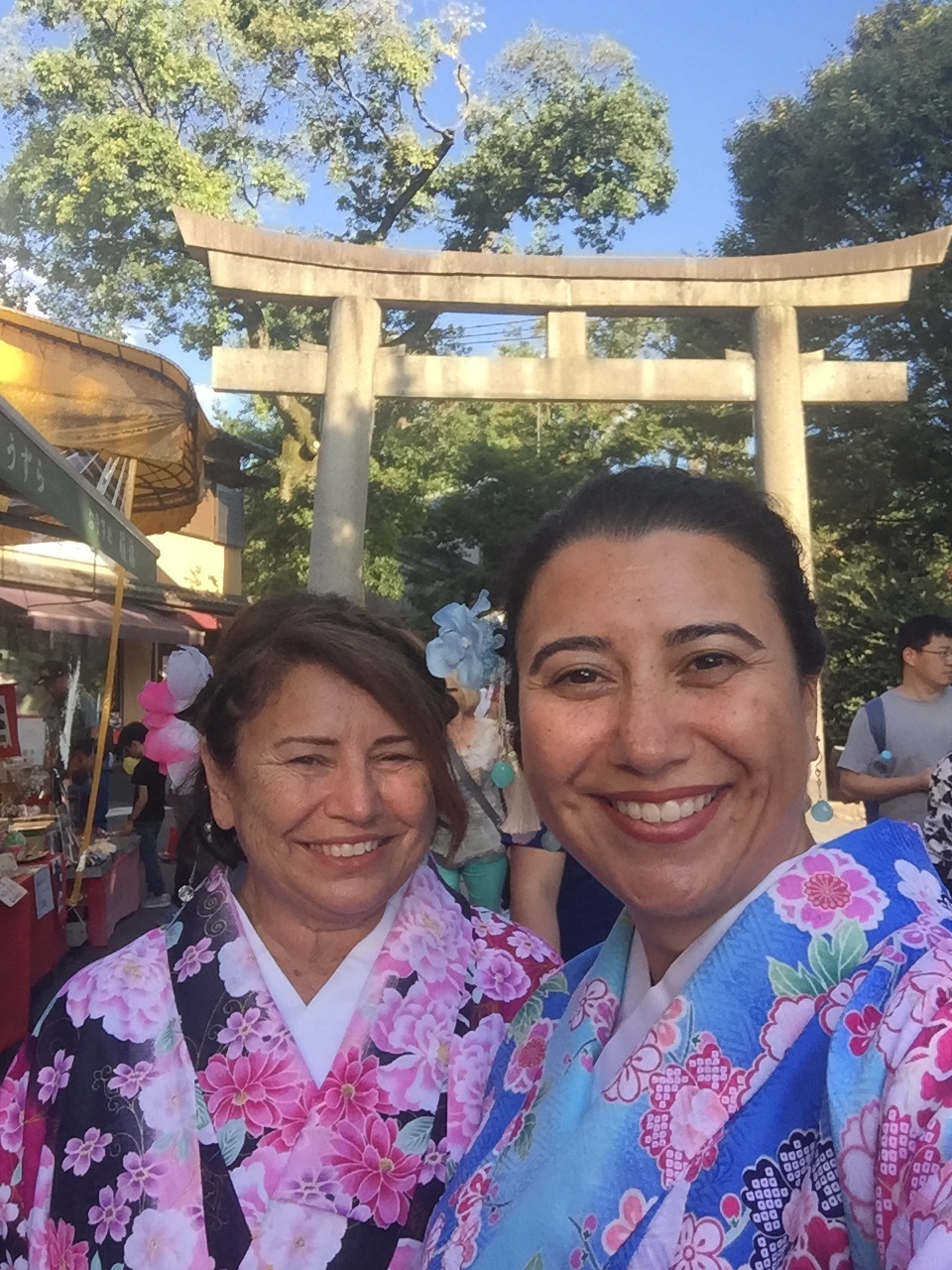
After the tea ceremony we could have walked around the town and up to the Fushimi Inari Shrine in our traditional outfits. However, we thought we’d be more comfortable in our own clothes climbing the shrine since the outfits were a little restrictive. So we went back to the dress shop and changed back into our own clothes. It was truly amazing how many layers we had on. Again, it was a really great experience.
Fushimi Inari Shrine
Since we were so close to the Fushimi Inari Shrine, we decided to venture up some of the path to view upwards of tens of thousands of torii gates.
Torii gates are commonly found at the entrance of or within a Shinto shrine, where it symbolically marks the transition from the mundane everyday life to the sacred.
The Fushimi Inari Shrine is about a three mile hike up into the mountains as you cross under the torii gates. We did not climb all the way to the top, but we did walk about a mile in.
Since the shrine is very popular, you have to wait until the path is clear for a photo without someone in it. But, the wait is totally worth it.
We stopped for a snack of street food before heading back on the subway to our hotel.
After a long day of sightseeing, we had dinner back at our ryokan’s restaurant. Then enjoyed another evening relaxing in the onsen.
Day 9 - October 2, 2018 - Nara, Japan
Collectively we decided to take a day trip from Kyoto to Nara. Nara is a short 50 minute ride on the high speed JR Miyokoji Kaisoku Express train. The cost is included in the JR Pass. We considered visiting Arashiyama where there is a bamboo forest and lots of monkeys, but opted for Nara instead. We didn’t feel we could do both locations in one day as they are located in opposite directions from Kyoto and wanted to give Nara a good visit without cutting it short. We’ll have to visit Arashiyama on another visit in the future.
Nara was the capital of Japan from 710-794 AD in the 8th Century and is located in south-central Honshu. It is known for free-roaming deer, one of the largest wooden structures which houses a bronze budda and a shrine dating back to 768 AD.
Upon arrival at the JR Nara train station, we took a short taxi ride to Nara Park. As we were driving into the park we could see deer in the street, on sidewalks and just roaming around. We were let out of our taxi and were amazed at all the deer just hanging out everywhere. You can buy special biscuits, called shika senbei, for a few Yen and then almost immediately you’re swarmed by the deer. Most of the deer were pretty tame and bow three times before you feed them. Yes, even the deer are polite in Japan!

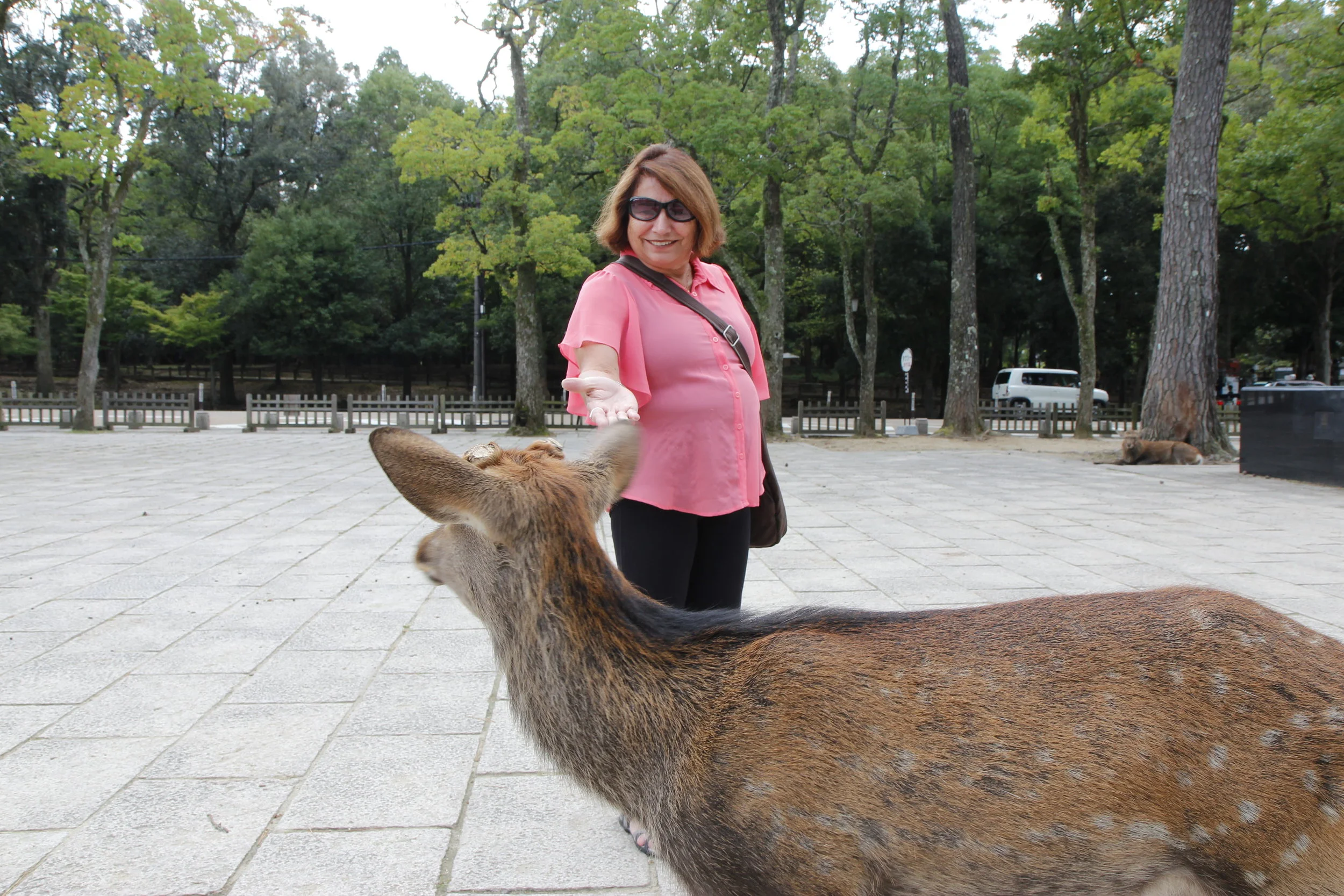



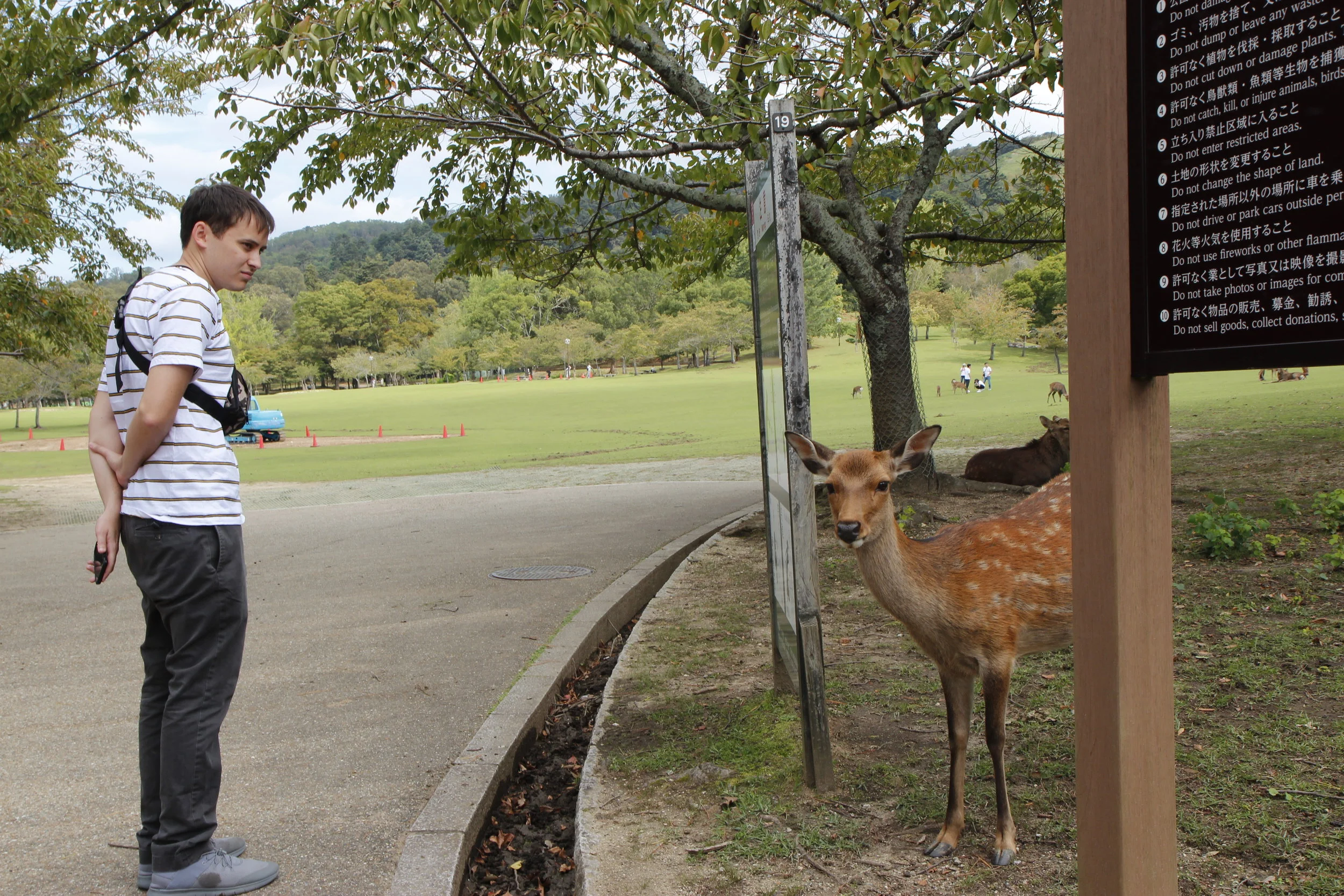
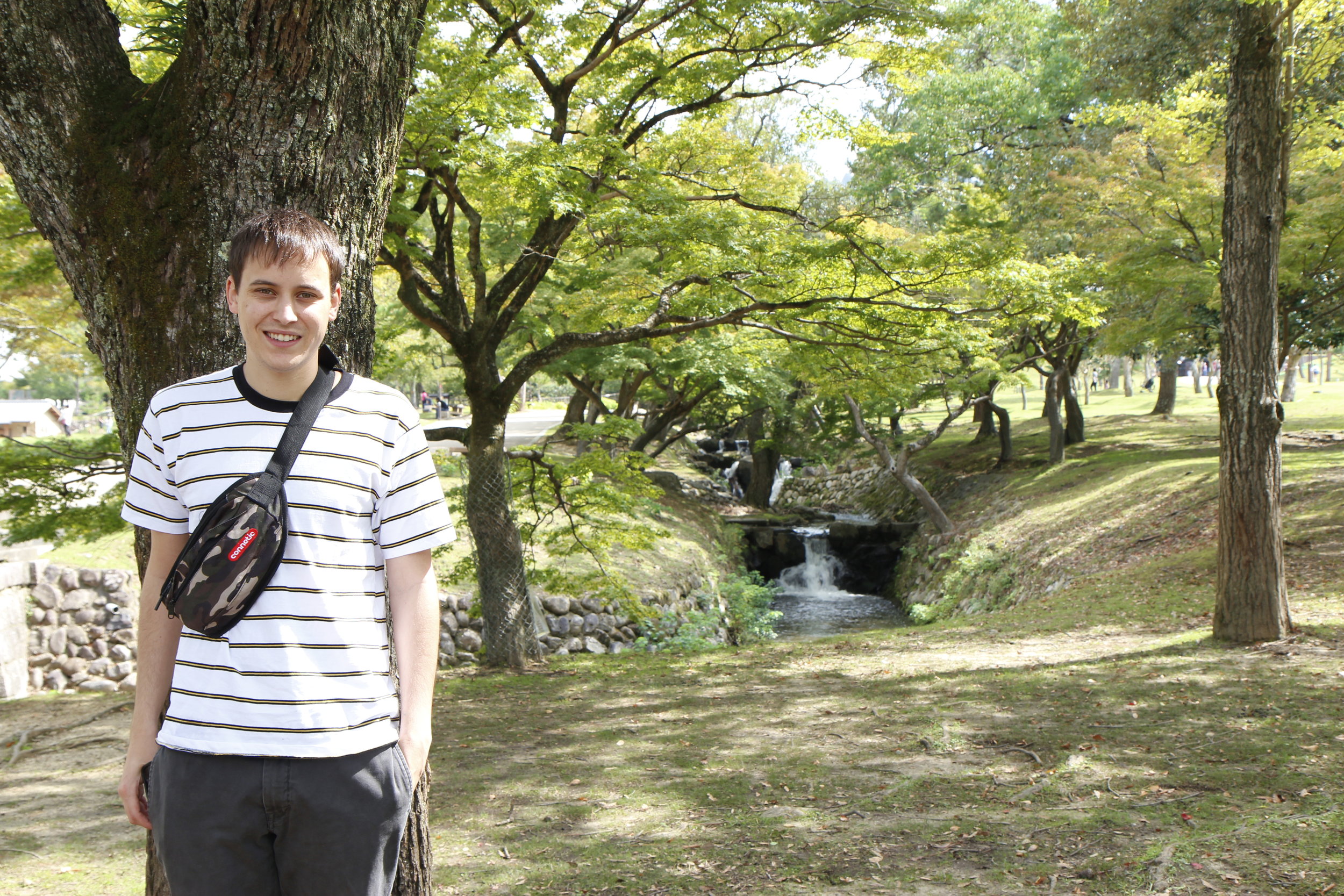

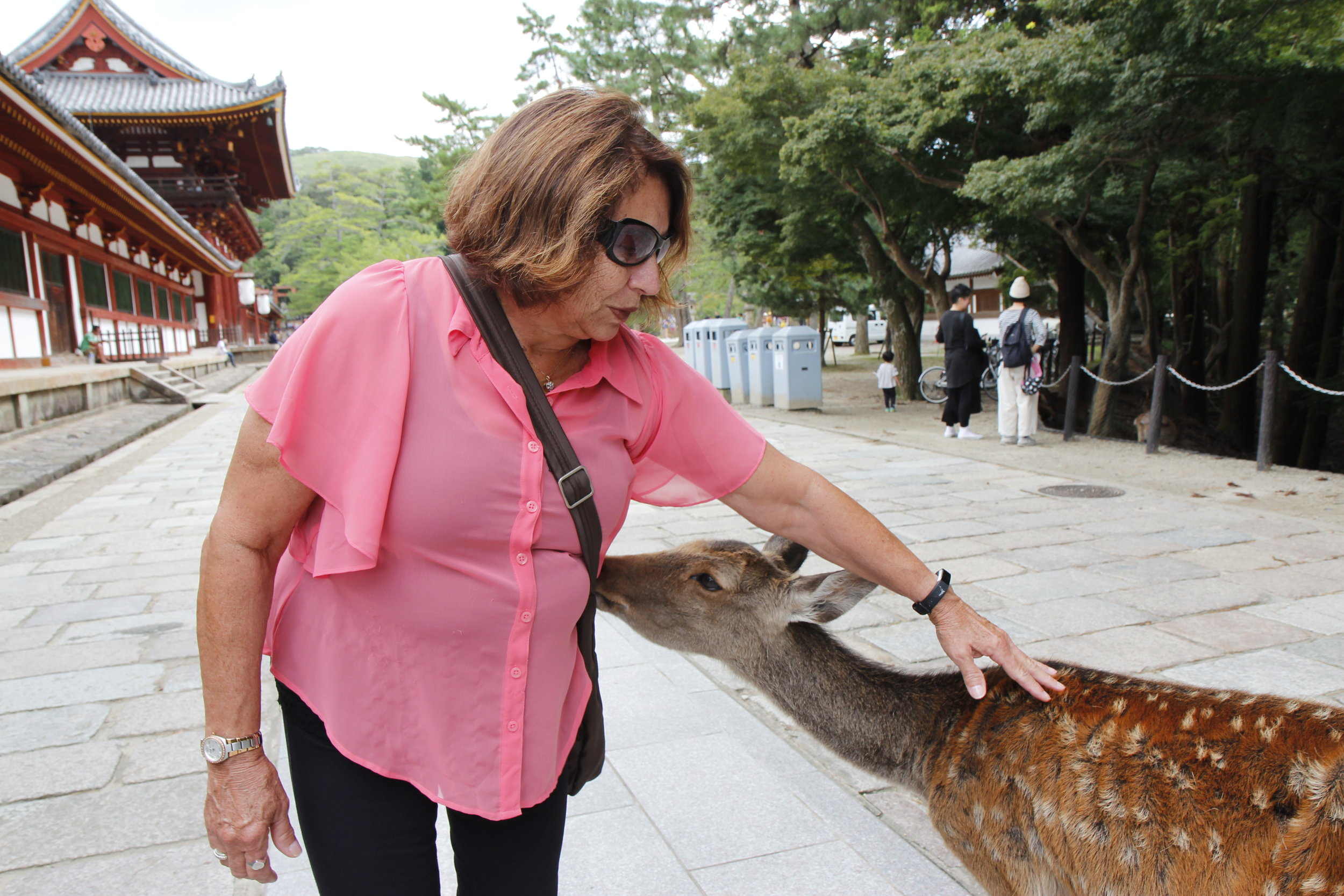

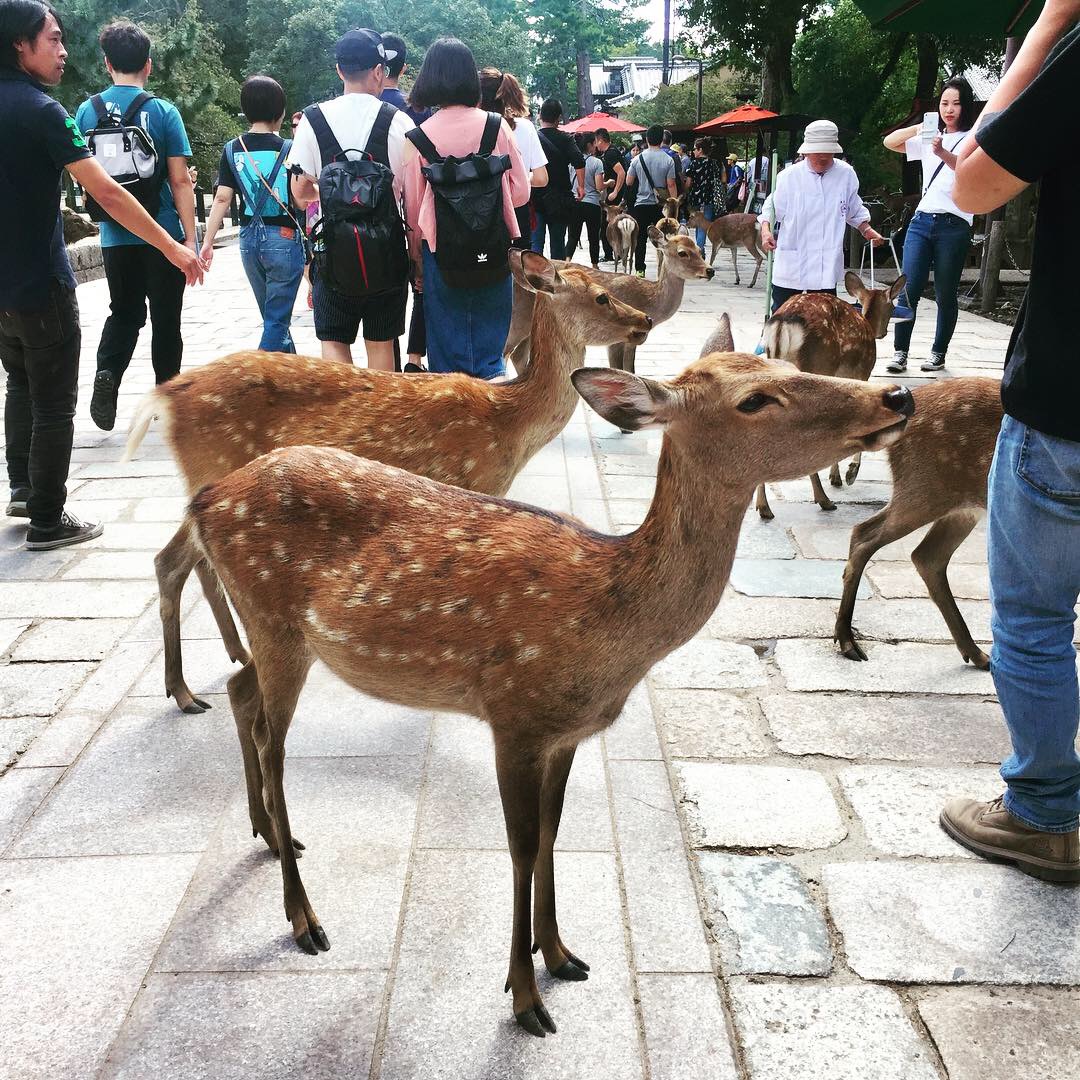
We walked further into the park toward the World UNESCO Heritage site, Todai-ji Temple. Todai-ji Temple was the largest wooden building in the world until 1998. Inside it houses one of the largest Budda’s in Japan. We paid five Yen to have a local guide explain the significance of the grounds, the temple and overall history. As we approached the shrine with our guide, we had it explained to us what the fountain outside the shrine was for and rules for visiting a shrine.
Zach and Grammy being taught how to visit a shrine and use of the purification fountain by our guide outside Todai-ji Temple.
How to visit a shrine from the website www.japan-guide.com:
Behave calmly and respectfully. Traditionally, you are not supposed to visit a shrine if you are sick, have an open wound or are mourning because these are considered causes of impurity.
At the purification fountain near the shrine's entrance, take one of the ladles provided, fill it with fresh water and rinse both hands. Then transfer some water into your cupped hand, rinse your mouth and spit the water beside the fountain. You are not supposed to transfer the water directly from the ladle into your mouth or swallow the water. Do not return any water from the ladle into the fountain, but dispose of it next of the mountain. You will notice that quite a few visitors skip the mouth rinsing part or the purification ritual altogether.
At the offering hall, throw a coin into the offering box, bow deeply twice, clap your hands twice, bow deeply once more and pray for a few seconds. If there is some type of bell or gong, use it before praying in order to get the kami’s attention. Photography is usually permitted at shrines, except inside the buildings. Watch for signs.
After we listened to our guide, we entered the shrine on our own to view inside. Looking up at the large bronze budda, it’s hard to get the scale of how large it actually is. For scale, the open hand of the Big Buddha, or Daibutsu, is as tall as a average-sized human being. We took our time wandering around and taking in just how old the wooden structure and budda were. It was pretty awe-inspiring.
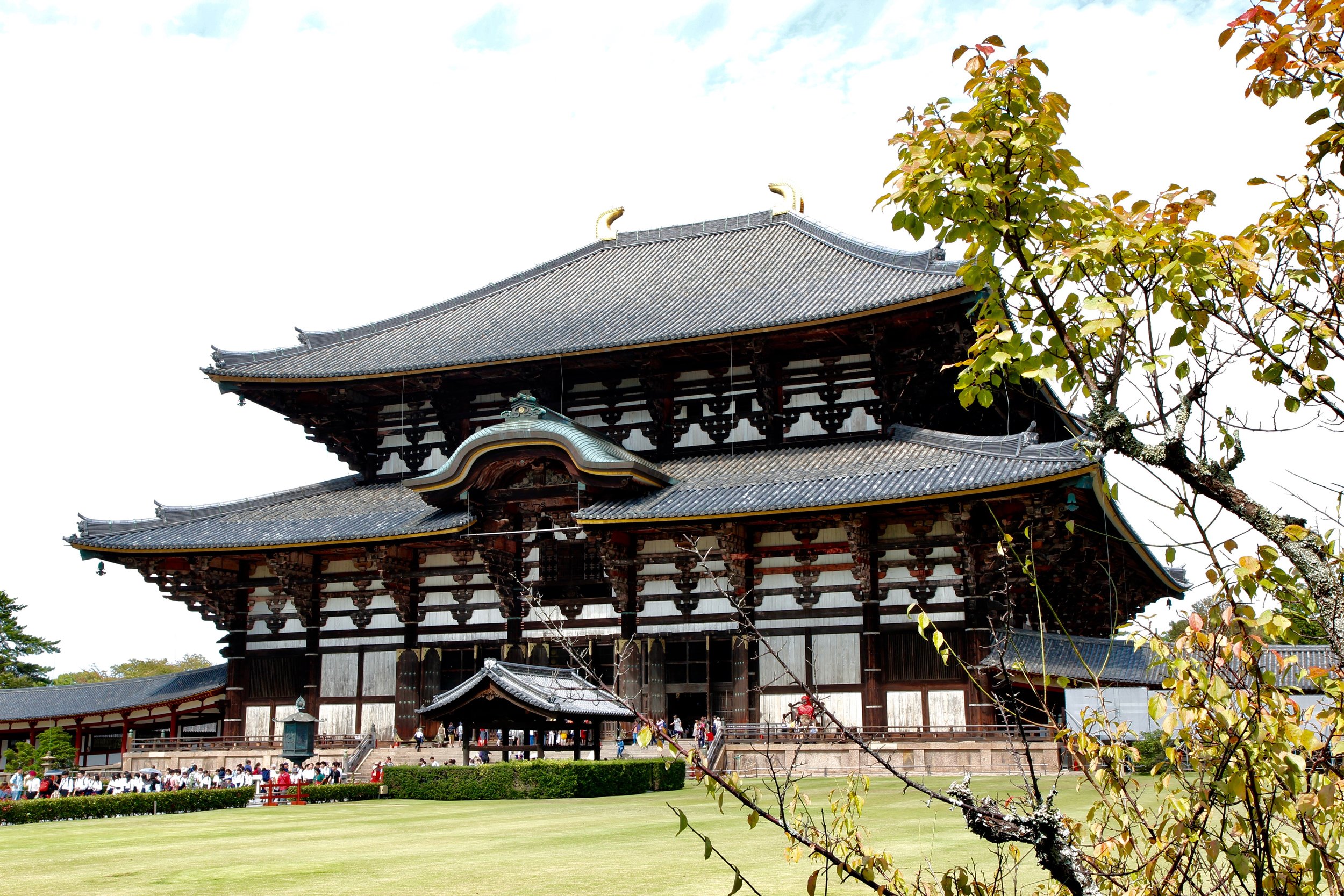
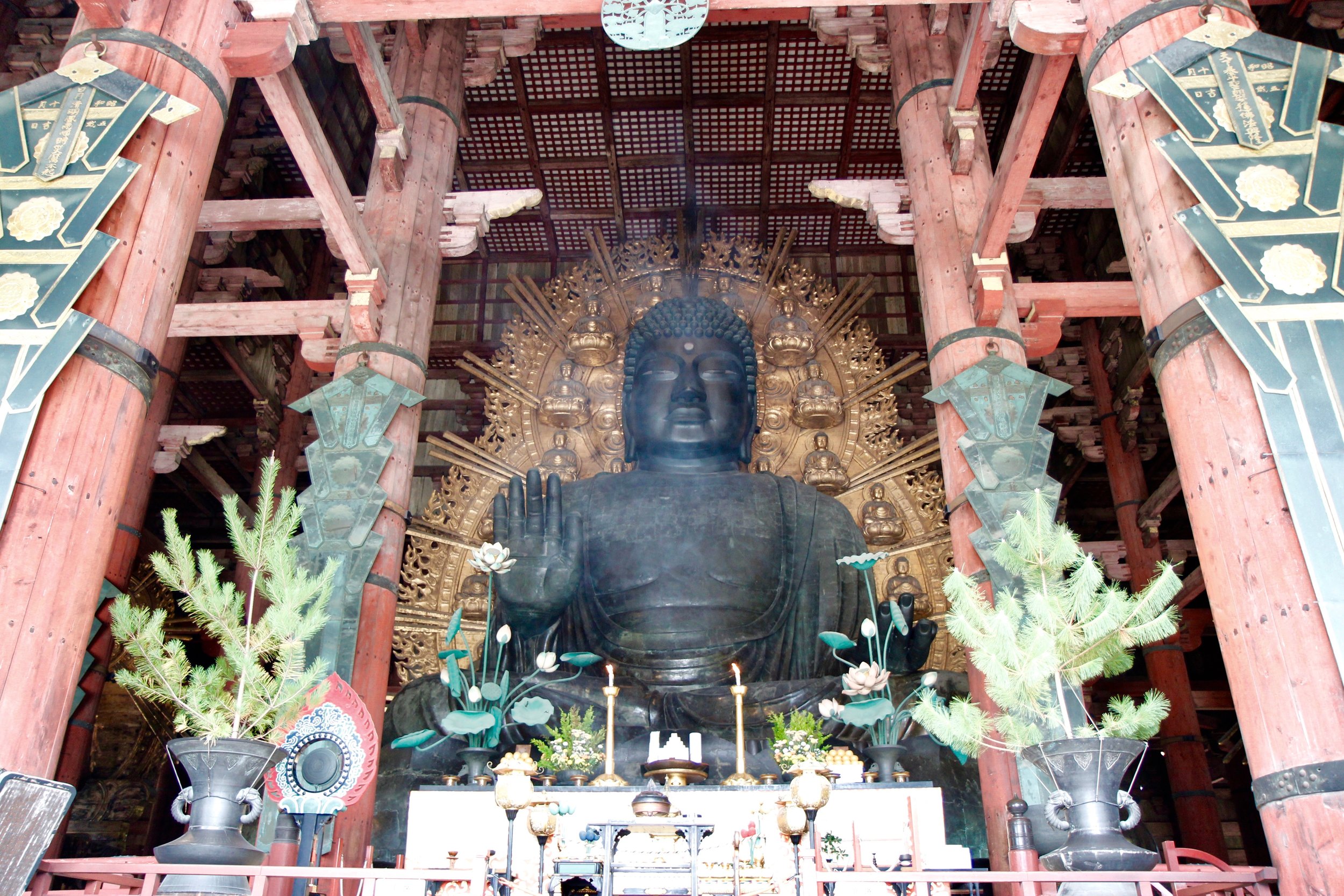
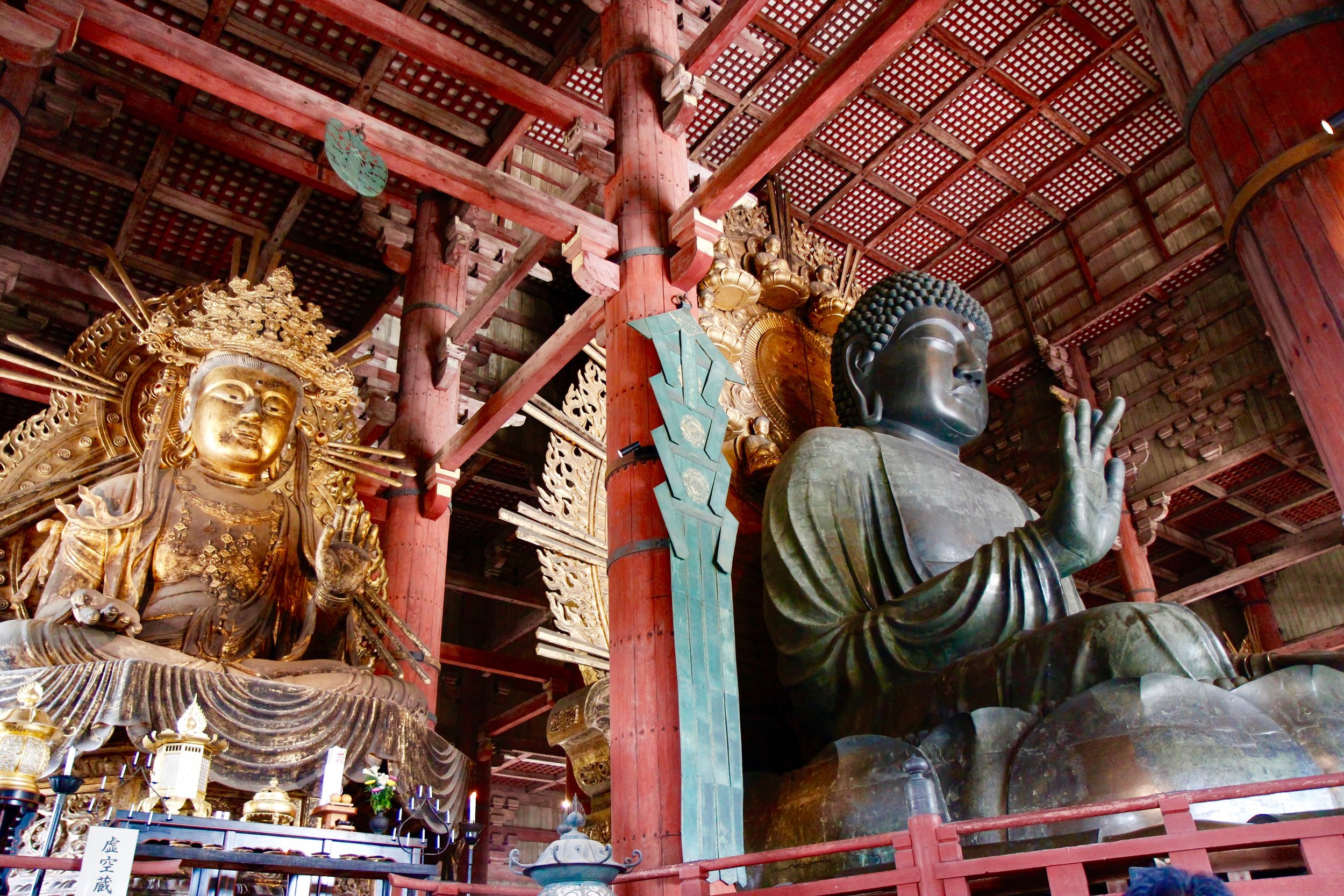
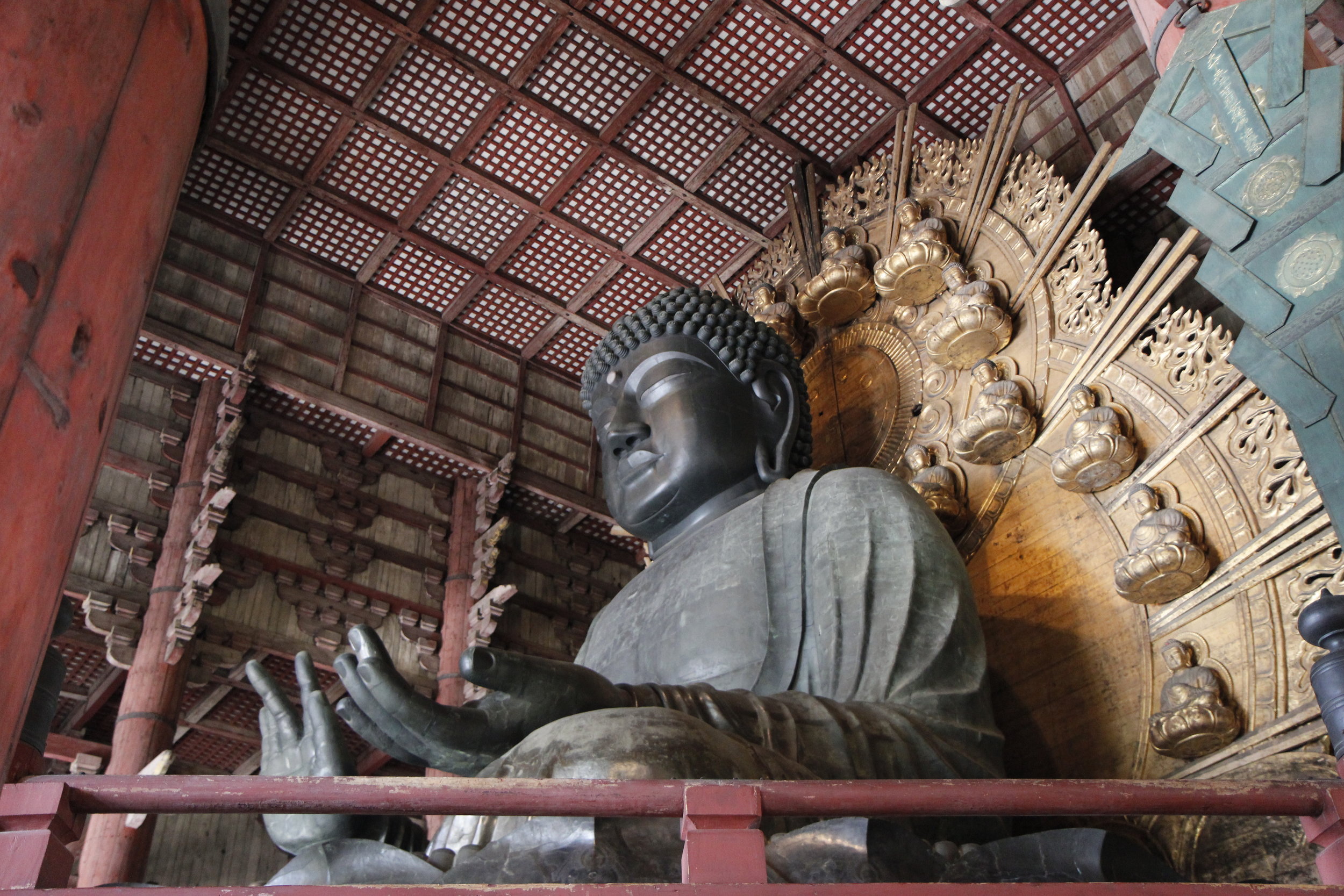
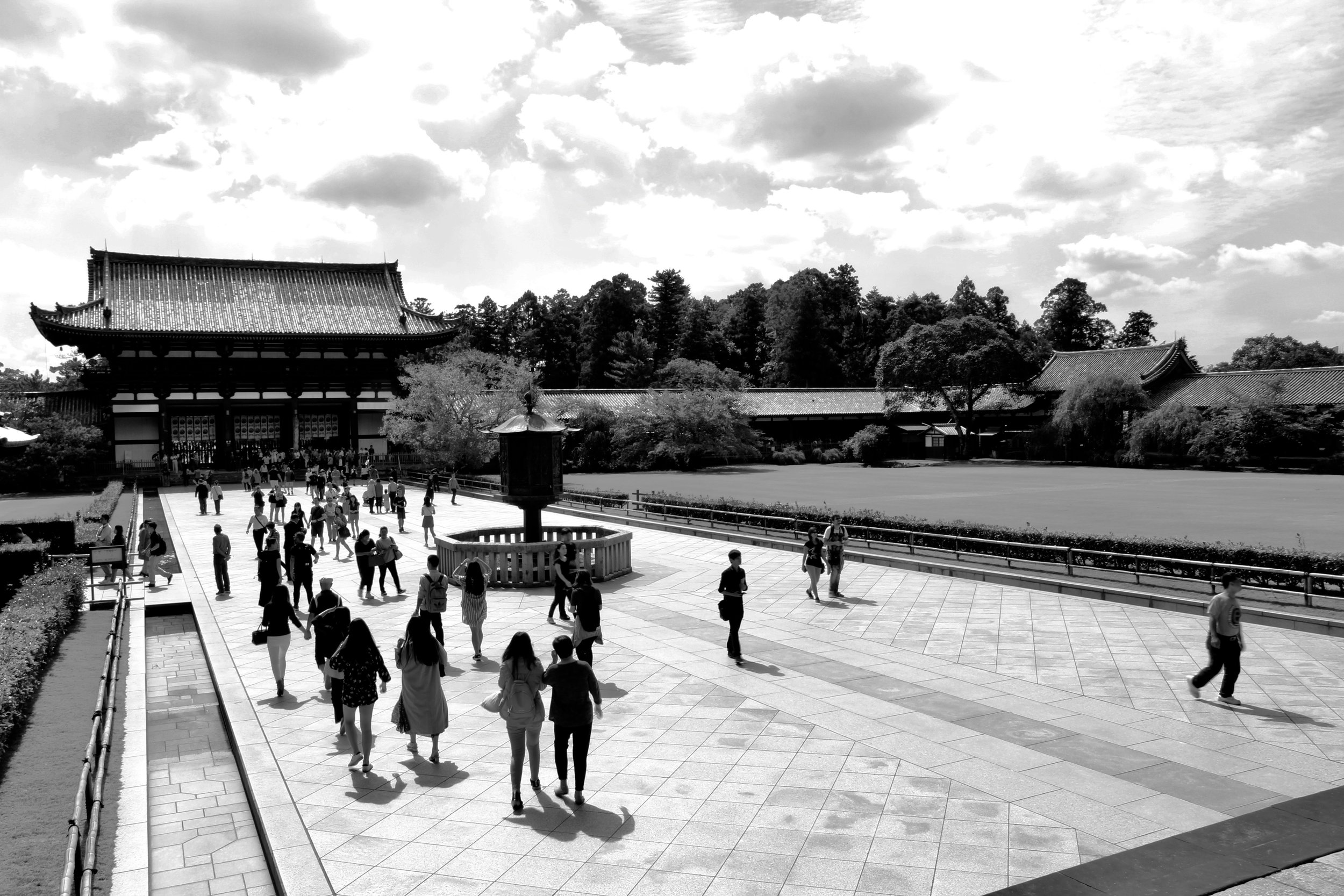
Inside the shrine toward the back, there is a pillar with a hole in it. People were lined up waiting to go through the small well-worn hole in this massive pillar. Kids of course had no problem going through the small hole. But, there were also adults waiting to go through as well, which was questionable. We waited and watched a few folks go through. My nephew, Zach, is a tall 6’1, but svelte. After standing there a few minutes with adults and children alike egging each other on, Zach decided he’d give it a try. He squatted down and looked at the size of the hole. He laughed nervously and then quickly figured out the best way to attack it. He dove head first and shimmied his way through. I quickly moved to the other side of the pillar to capture him coming out the other end. People clapped and were excited for him. We later learned the well-worn hole is supposed to be the size of one nostril of the large budda statue. And, those who pass through are supposed to achieve enlightenment. Here’s to your enlightenment, Zach!
After lunch near the shrine, we walked about 10 minutes further into the park to Kasuga Taishi Shrine of 10,000 lanterns, which is another UNESCO World Heritage site. It was deeper into the woods and less crowded, except for all the roaming deer. The lanterns are only lit twice a year during two Lantern Festivals, one in early February and one in mid August. And, I bet it’s a sight to see when they are all lit up. This location was magical.


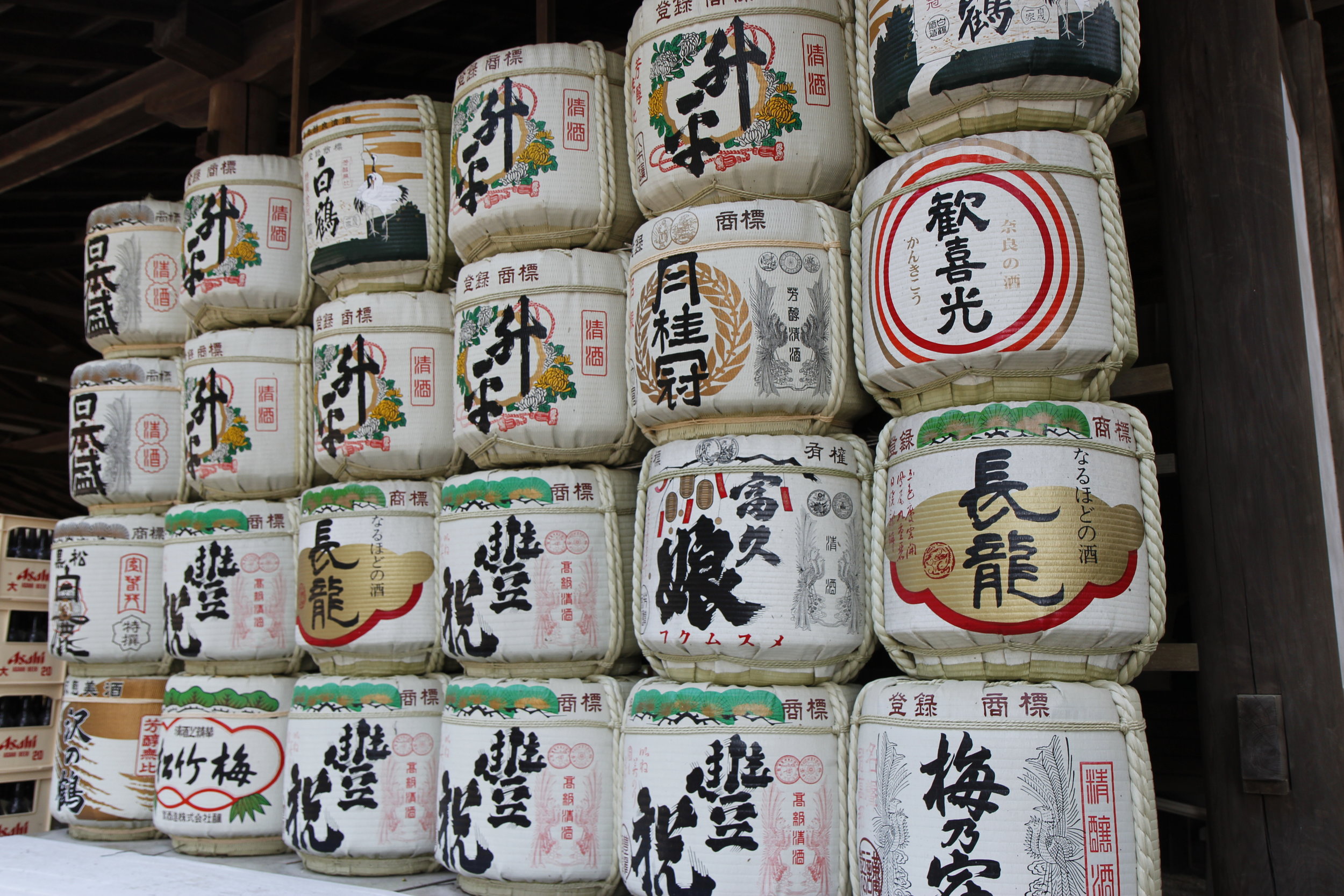
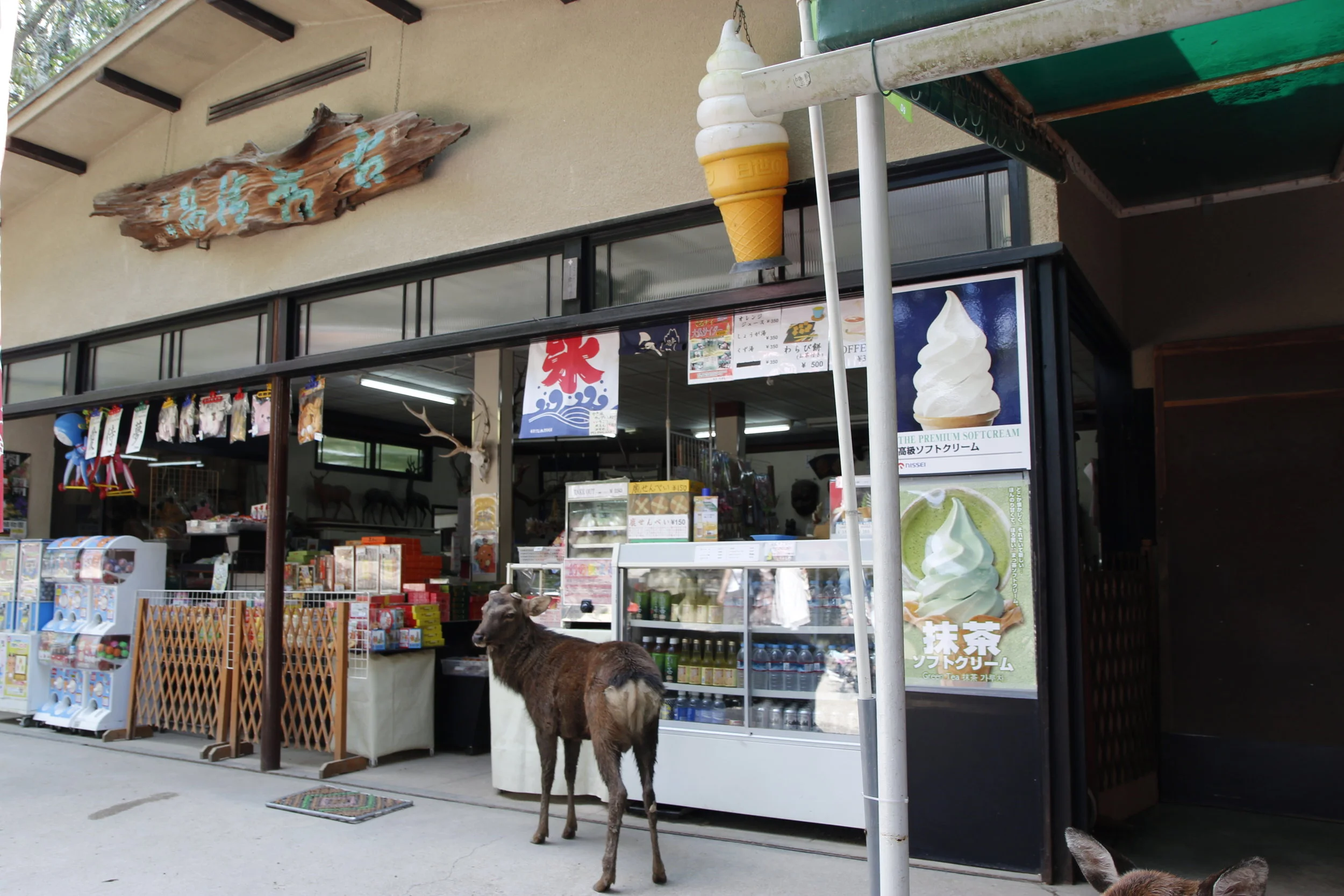

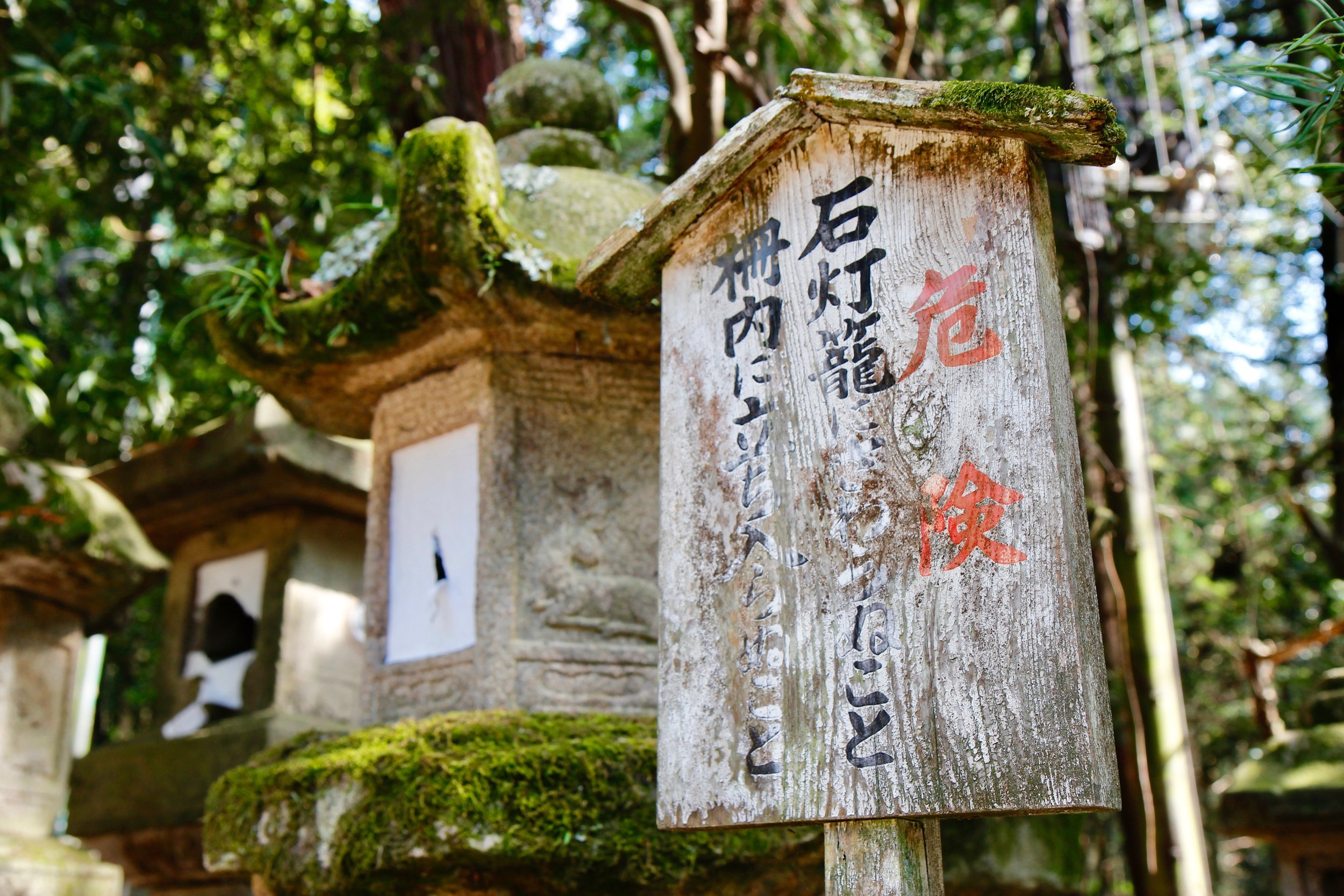
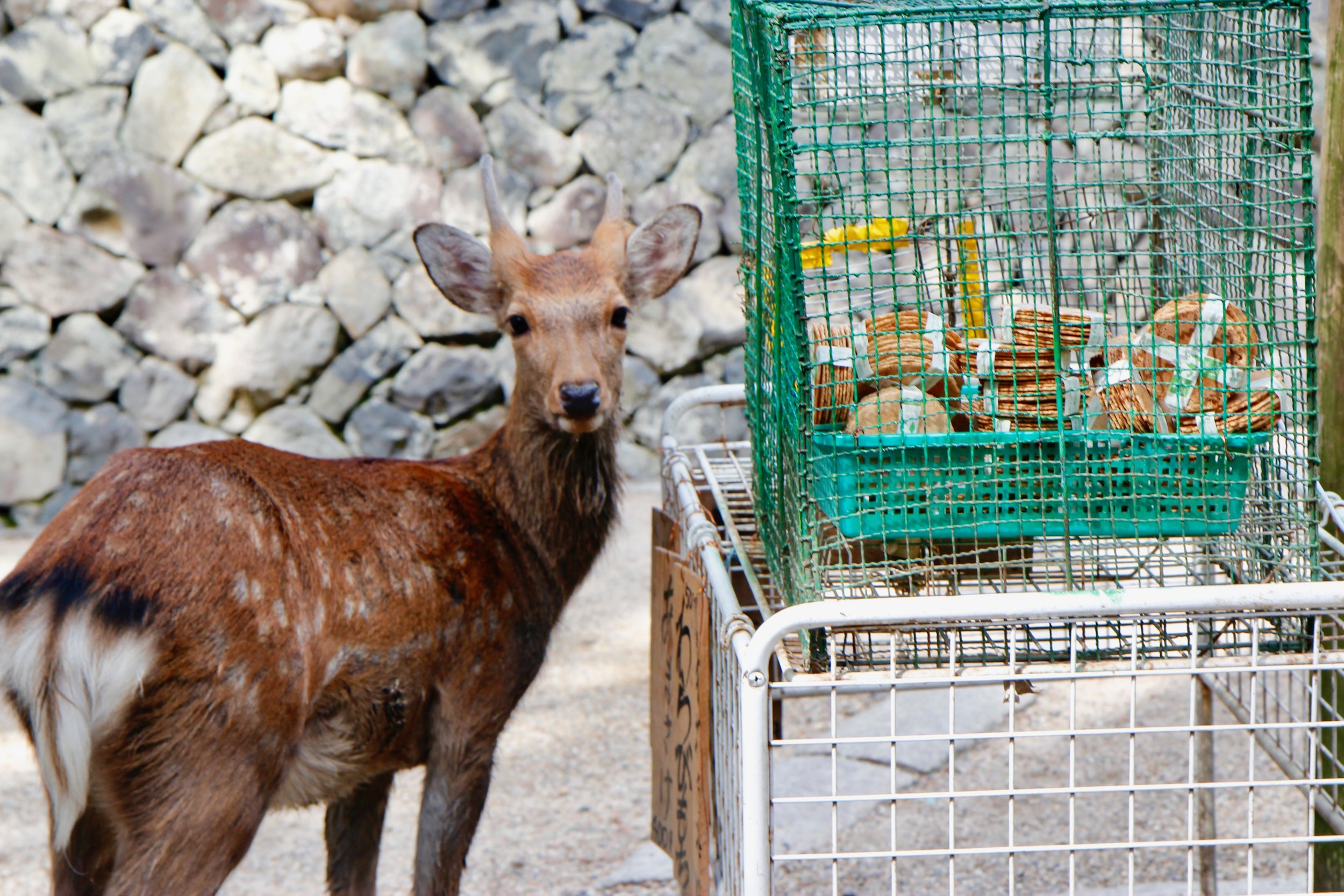

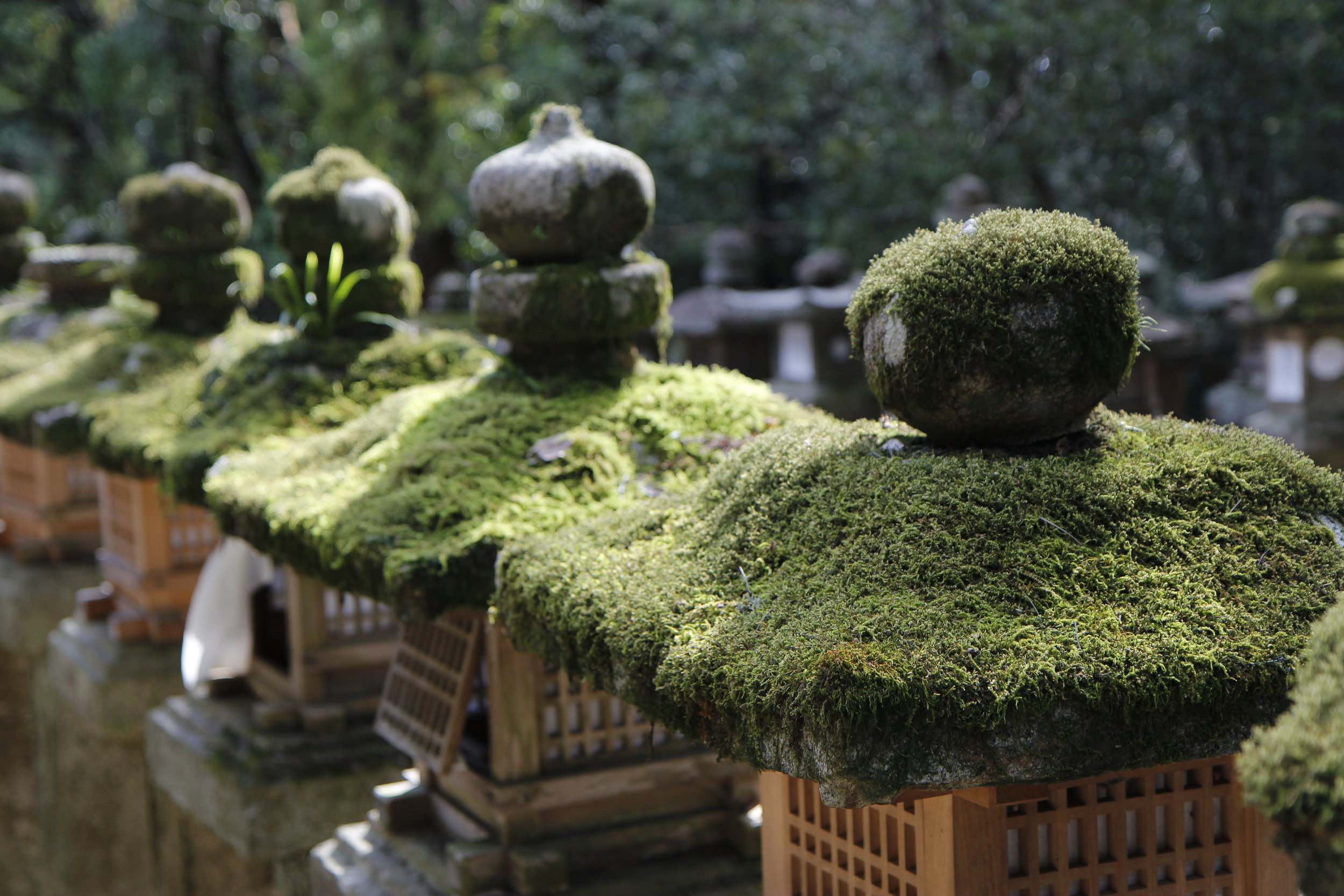

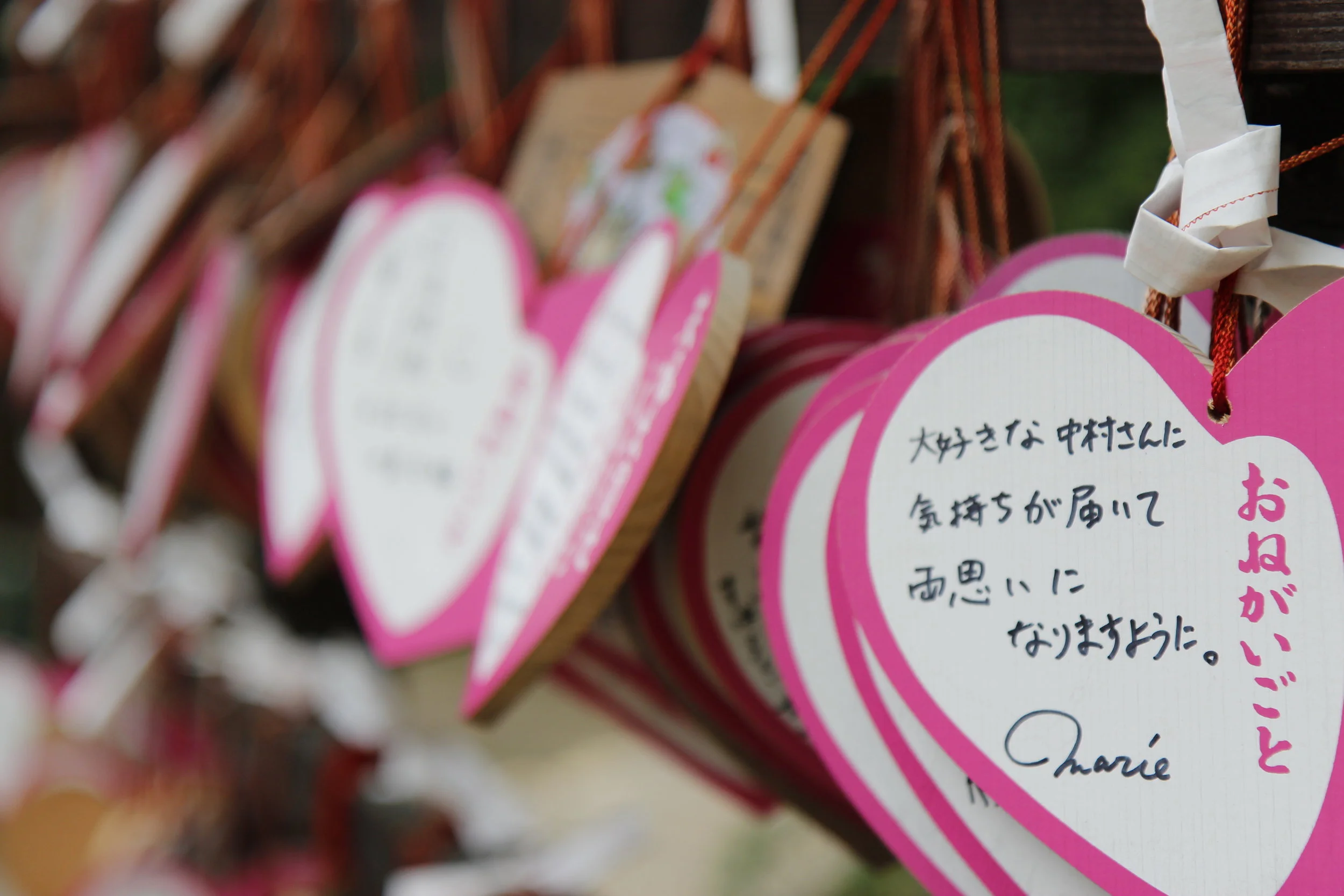
After we enjoyed the peaceful surroundings of the shrine, we walked about 30 minutes through the neighborhood alongside Nara Park to the bus stop. Then took a city bus about 15 minutes to the JR Nara Station for our 50 minute ride back to Kyoto.

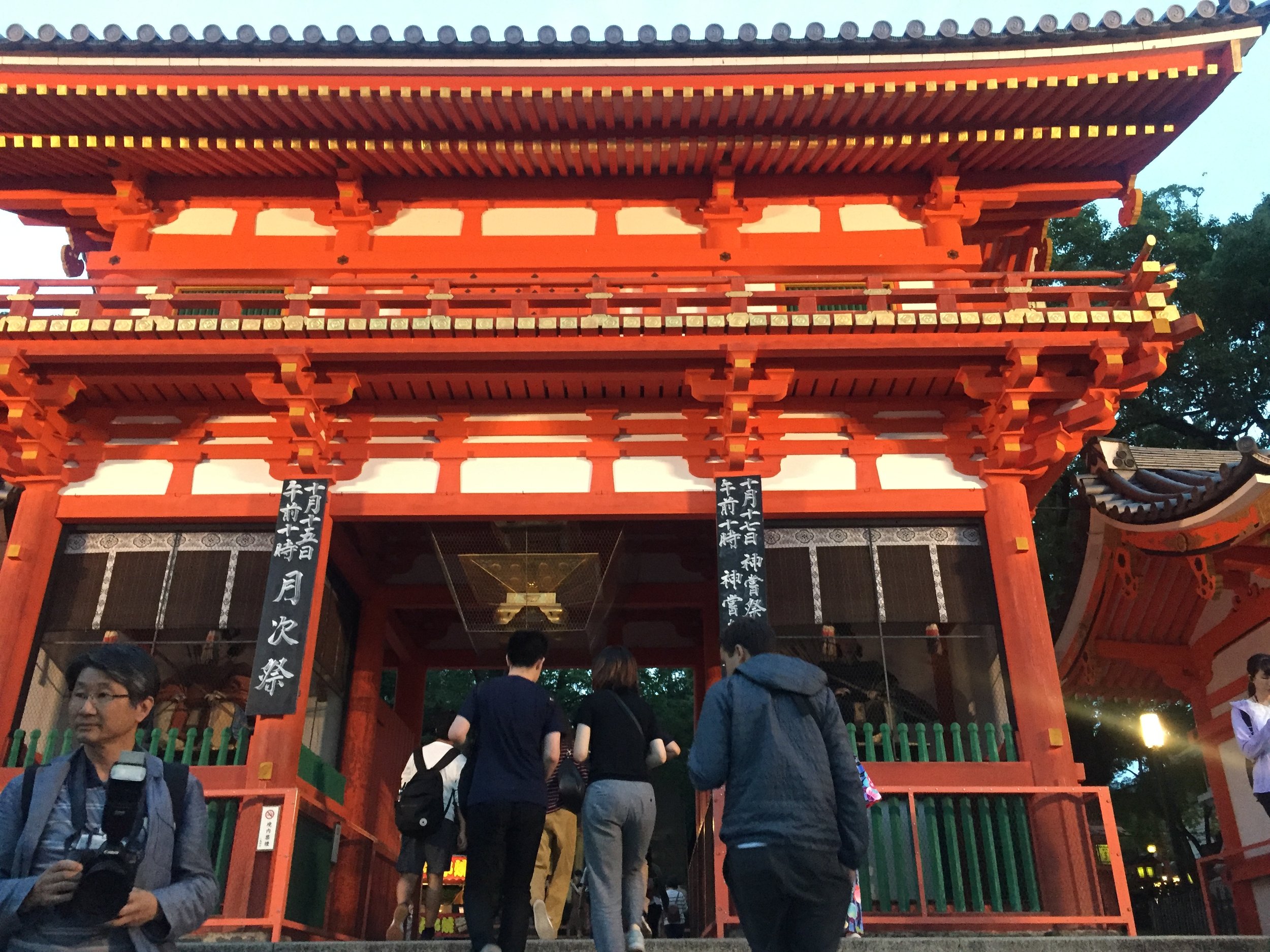




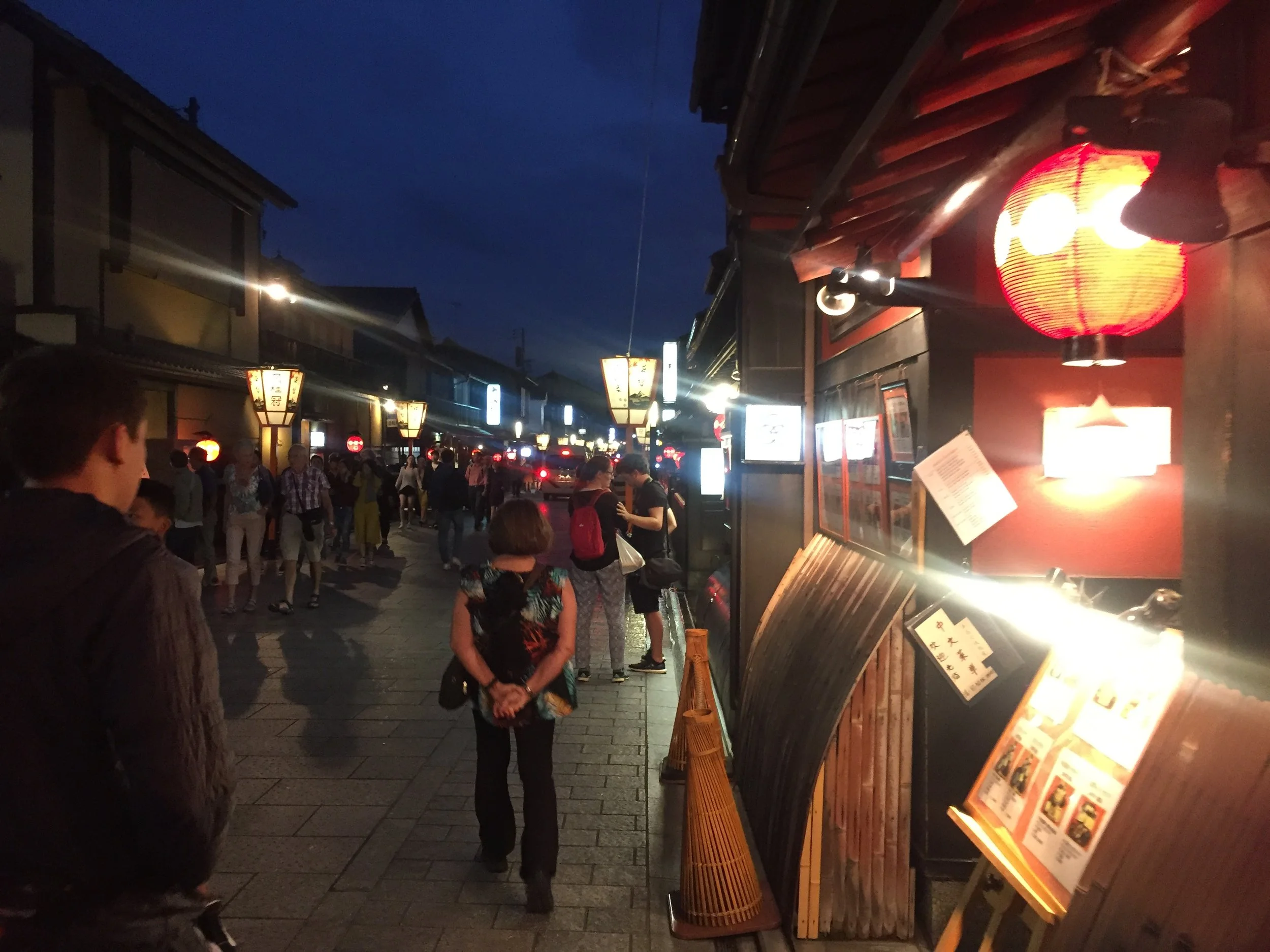
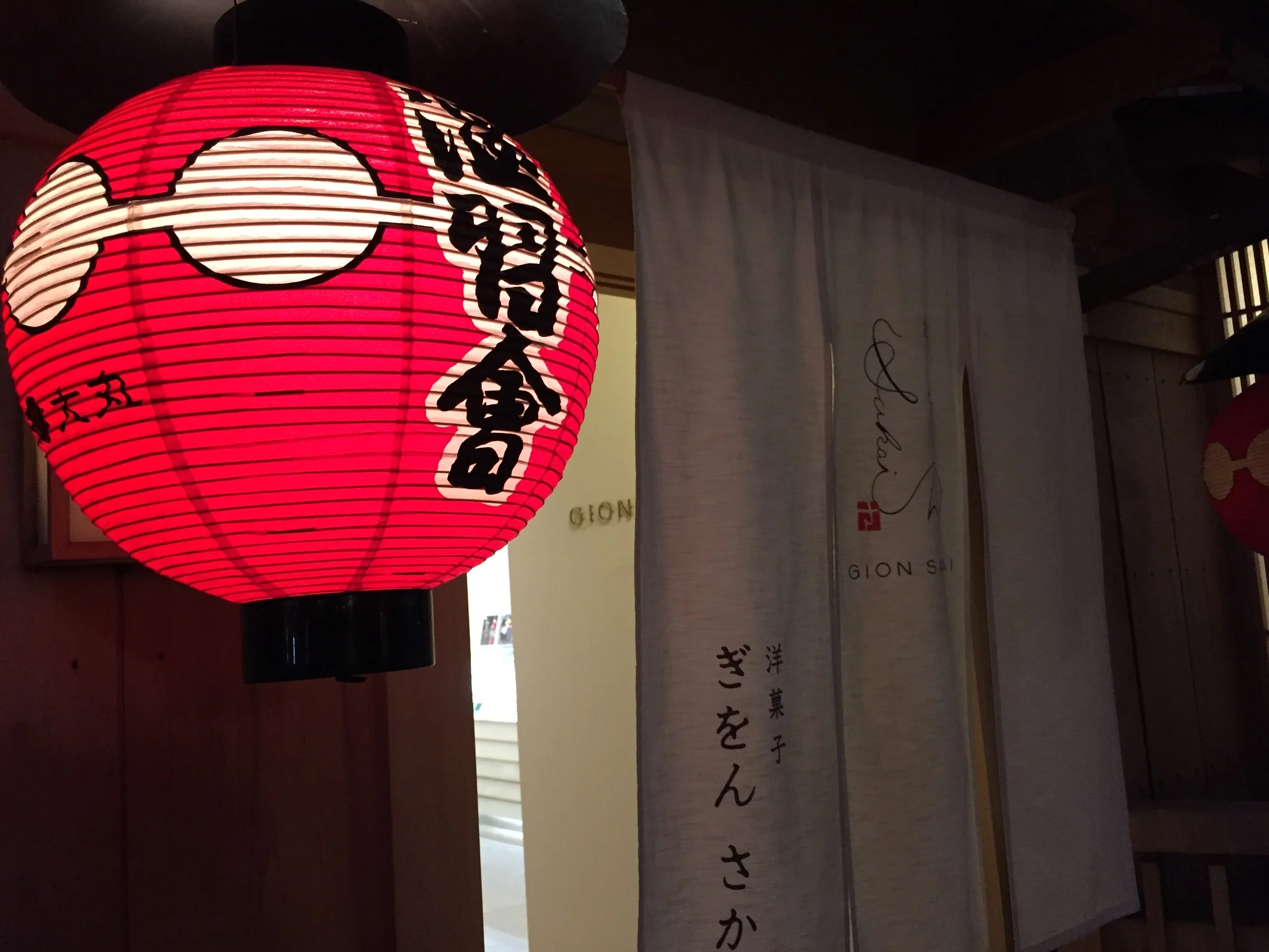
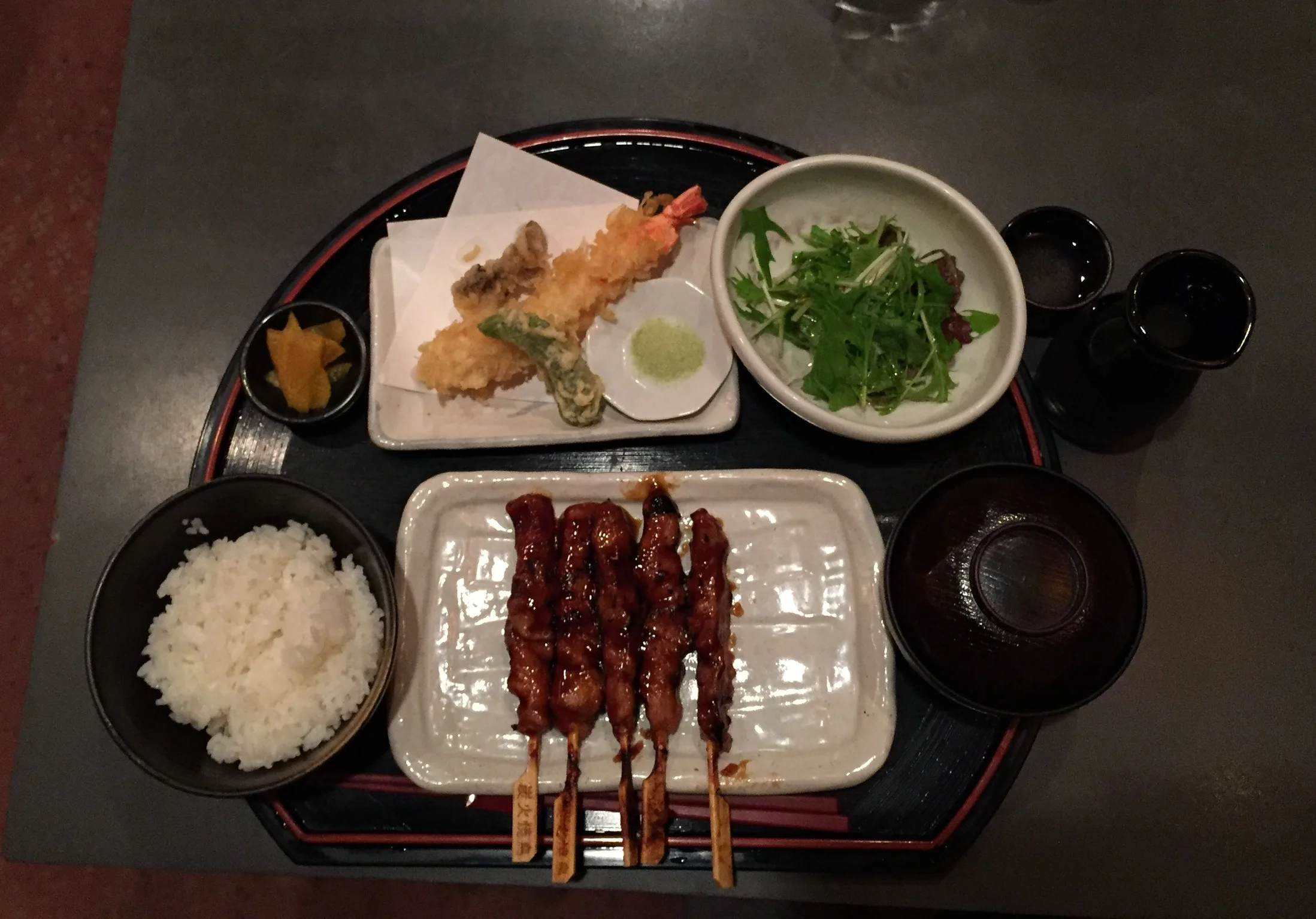
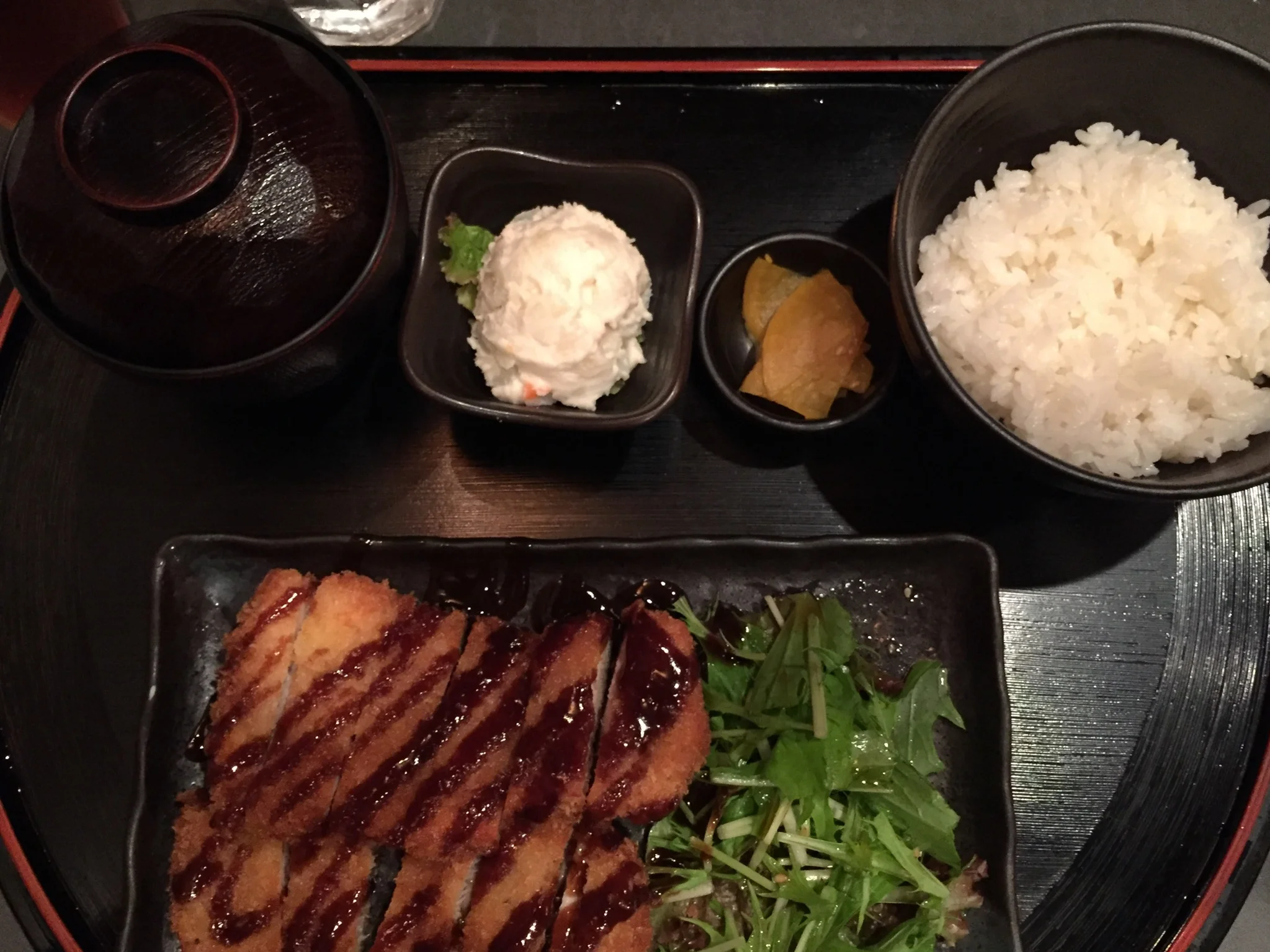
When we arrived back in Kyoto, we took a taxi to Gion, Kyoto’s Geisha District. We wanted to arrive around dusk so we could attempt to see geisha or maiko (apprentice) hurrying off to an evening engagement, but we were out of luck.
Instead we visited Yasaka Shrine, wandered around the Higashiyama District and enjoyed a nice dinner in Gion.
Geisha misconception:
Geisha, or geiko and maiko, are professional entertainers who accompany guests during meals, banquets and other occasions. They are trained in various traditional Japanese arts, like dance, music and art of communication. Their role is to make guests feel at ease with conversation, drinking games and dance performances. They are not prostitutes.
Watching the MLB Post-Season on our phones during our train ride. Let’s go A’s!
Day 10 - October 3, 2018 - Kyoto to Kanazawa, Japan
We could have stayed in Kyoto for another day or two, but we checked out of our ryokan and proceeded to take the JR Thunderbird Express train from Kyoto to Kanazawa as planned. During our two hour train ride, we watched the MLB Post-Season on our phones. Our home team, the Oakland A’s were playing and we were rooting them on any chance we could.
Kanazawa was the 2nd largest city, behind Kyoto. And, during WWII it somehow escaped bombing raids by the U.S., therefore preserving many of it’s districts in original form. Kanazawa is known for having the best sushi, well preserved Samurai & Geisha districts, Kenrokeun Gardens and anything gold leaf, a speciality of the city.
Upon arrival in Kanazawa we took a taxi to our hotel, the Kanazawa Hakuchoro Hotel Sanraku, which is located in the Higashi Chaya-gai area and near Kenrokuen Garden. Our hotel was very nice and classy, which was also a good value. It is styled in vintage Taisho era style. The service was exceptional and they also had an onsen, which was different than at our last hotel. It was smaller, but still very nice. They had a very good all-you-can eat buffet style breakfast is a blend of local dishes and Western style breakfast foods. Plus they offered a restaurant onsite, Mahoroba, serves the local Kaga style cuisine. Kaga-ryori is an original cuisine which utilizes seafood, vegetables, and ingredients from the local Kanazawa area and served in multiple courses in beautiful dishes. If you want to eat at the hotel restaurant, I’d highly recommend making a reservation and be prepared to pay on average around 100 yen.
After a short rest, we walked about 10 minutes to a small sushi restaurant, Kourin-sushi. We had to wait a few minutes for the guests before us to finish and exit before we were invited inside to three seats at the bar, in front of the sushi chef. I will admit, I’m not a big sushi person, however, this meal was delicious. I’ve never had sushi melt in my mouth the way that meal did. And, it was very affordable as well. Both Grammy and I did 5 nigiri pieces each, which came with soup and hot tea. Each of our meals were only about five to ten yen! It was very good.

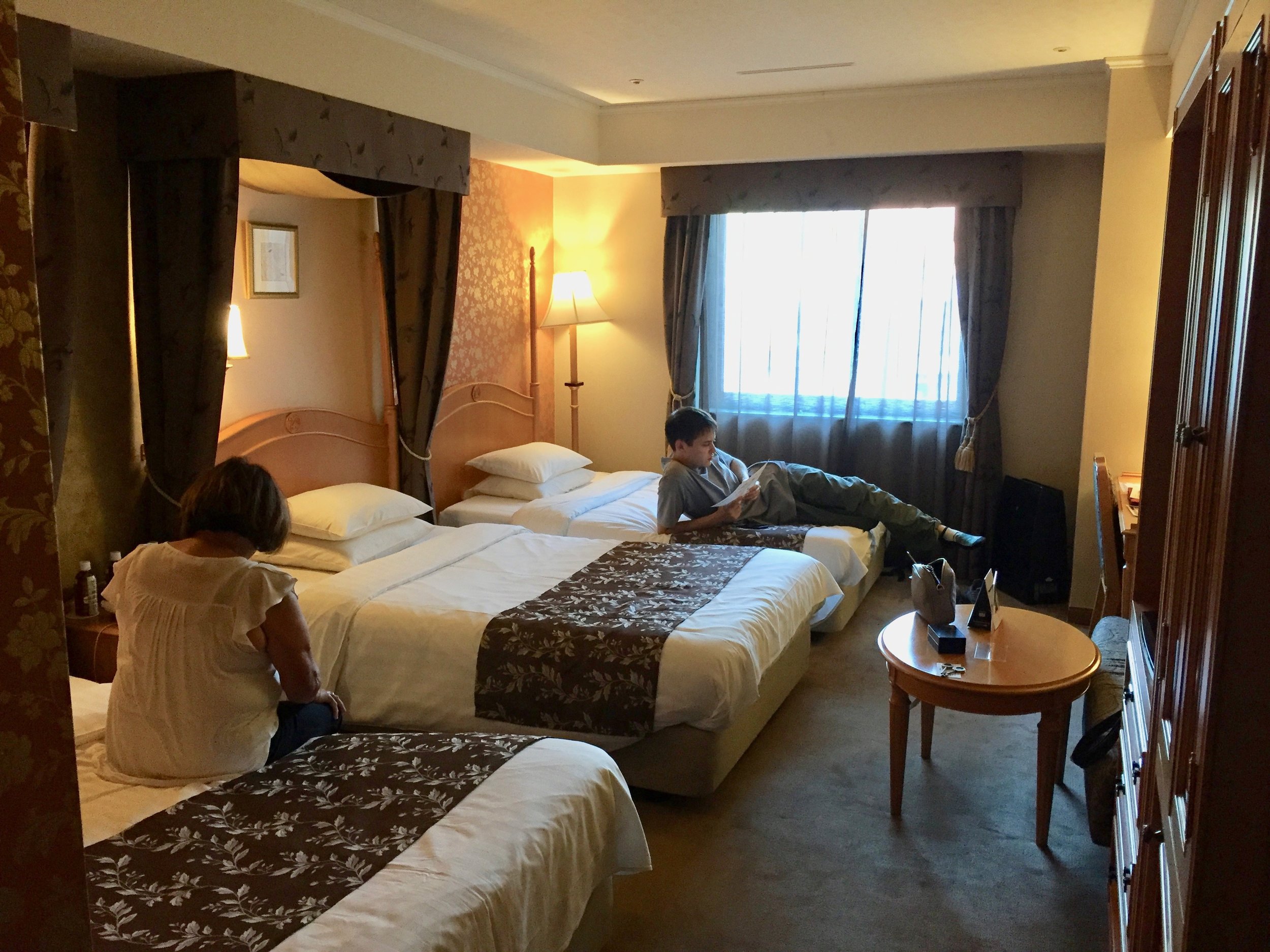


After lunch we walked a short distance into the park to view the Kanazawa Castle and Kenrokuen, Japan’s most celebrated landscaped gardens.
The Kanazawa Castle was the former seat of the powerful Maeda Clan, lords of Kaga. The Castle and the gardens of Kenrokuen are massive and beautiful. The gardens are part of the three Perfect Gardens of Japan.
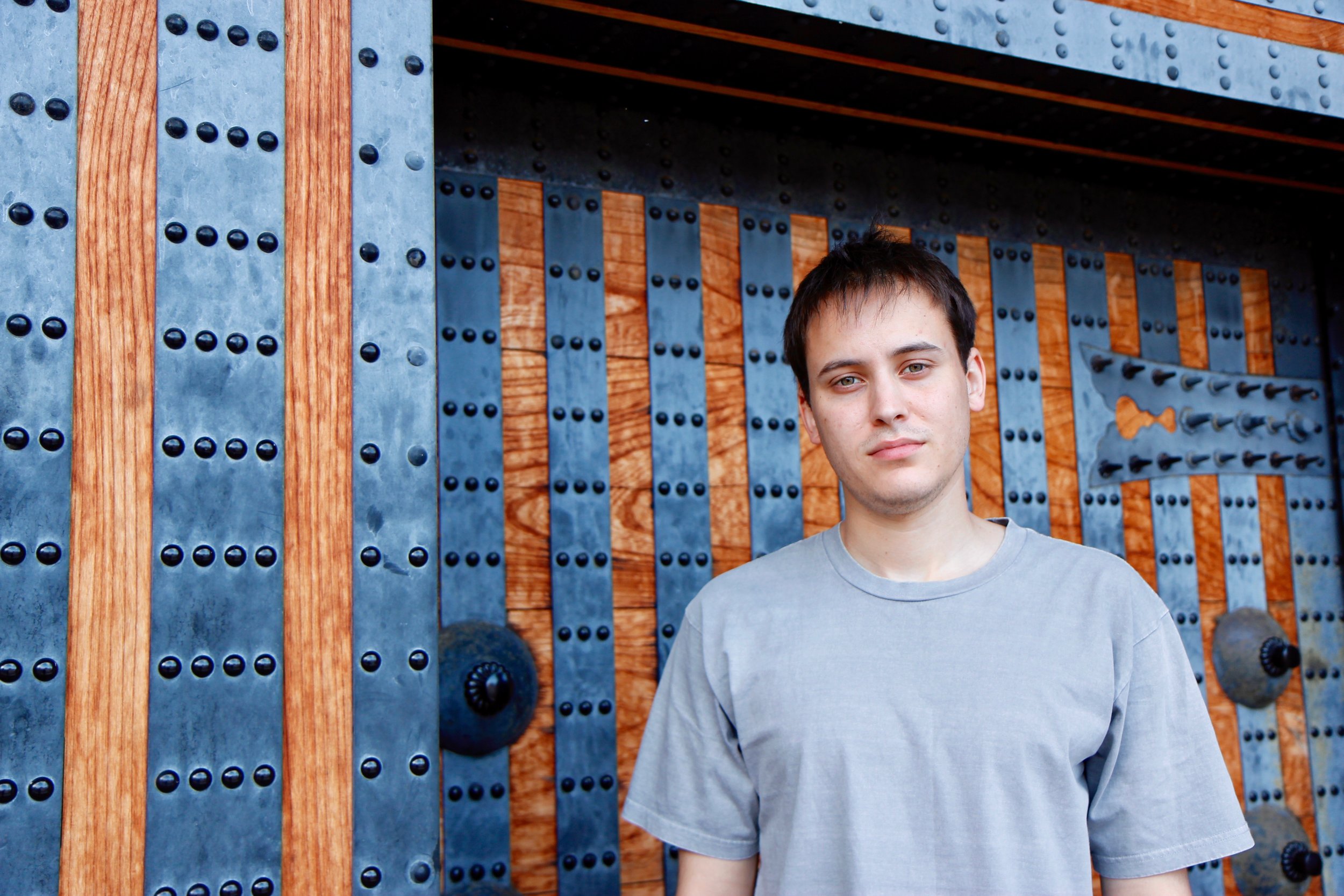
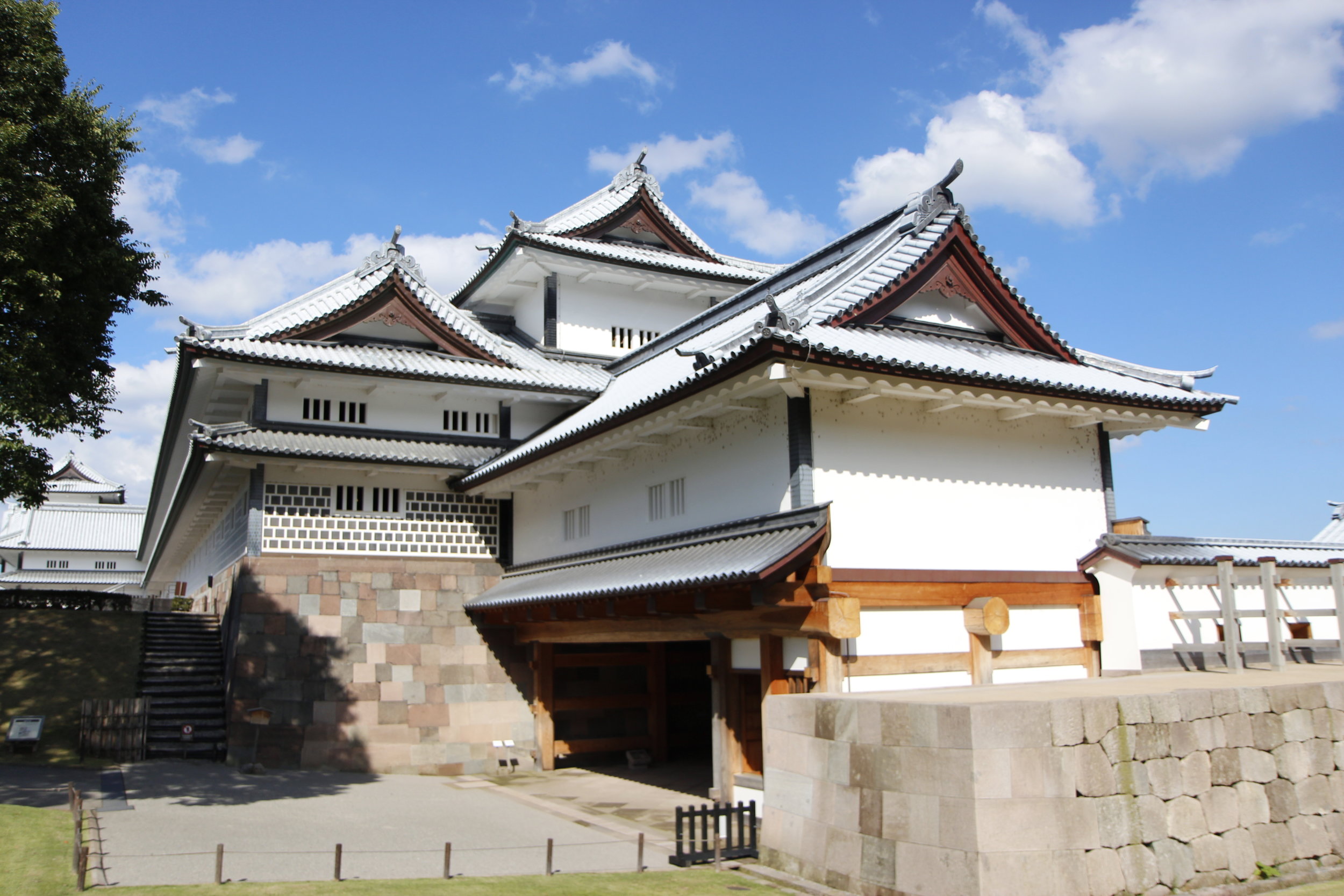
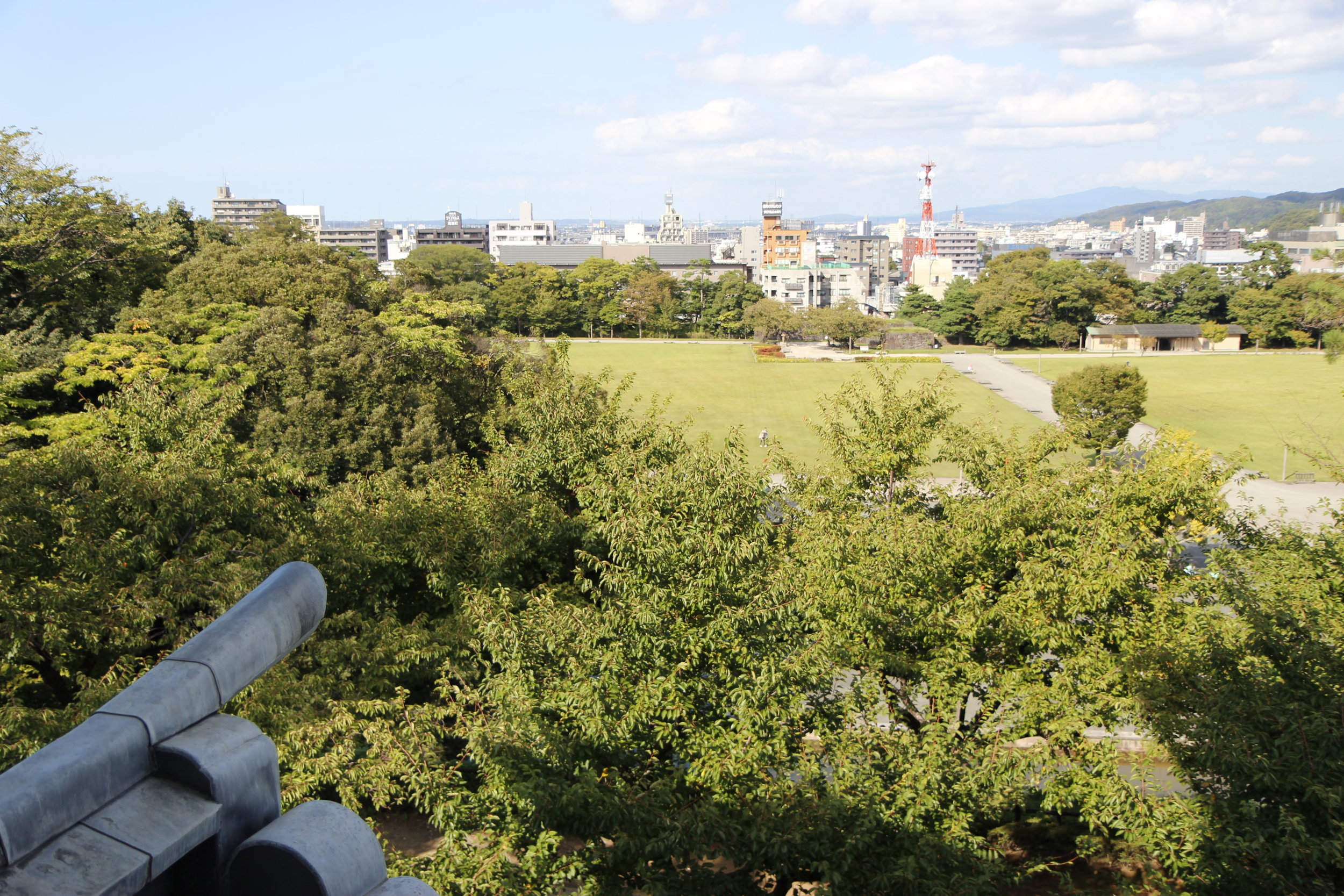
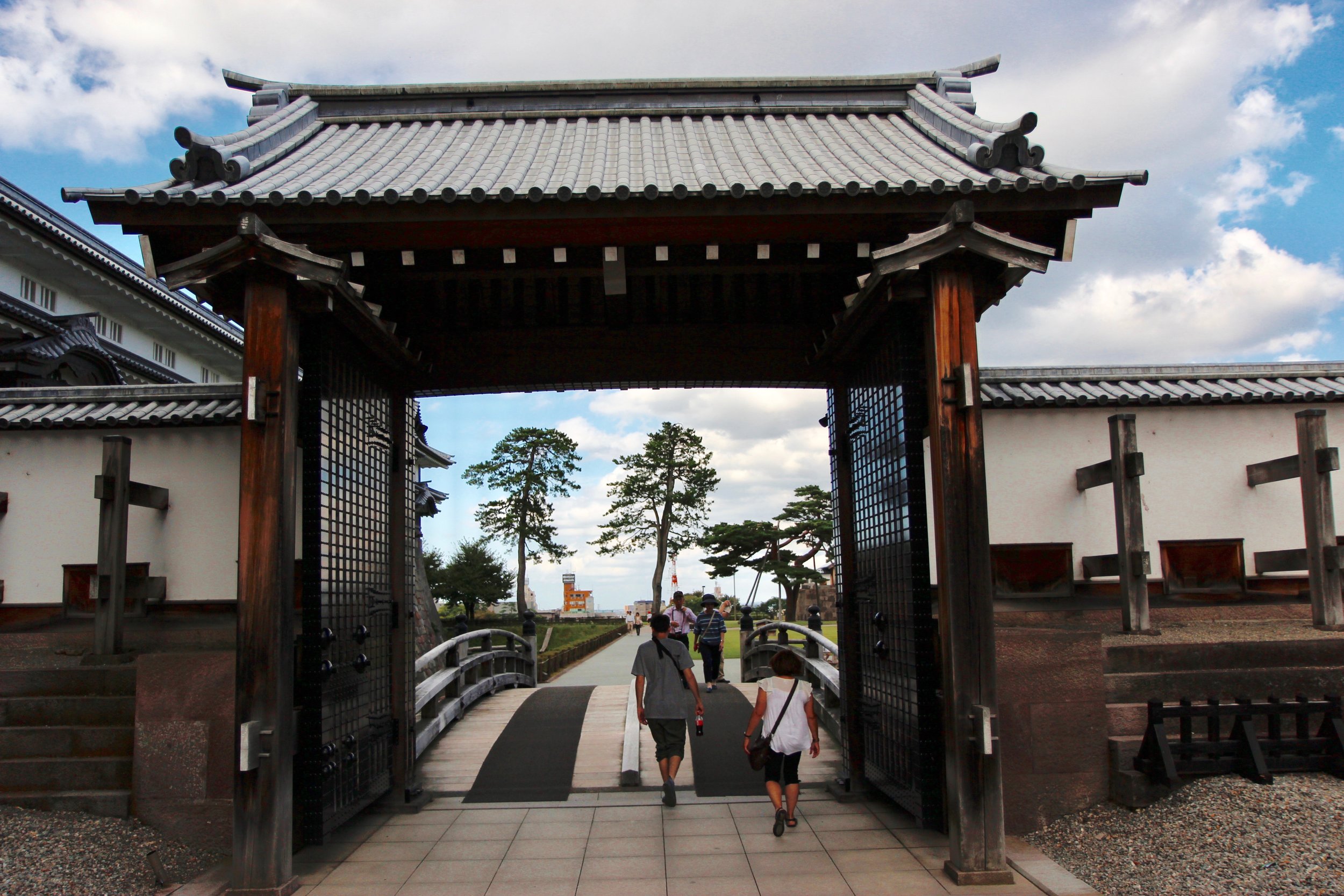
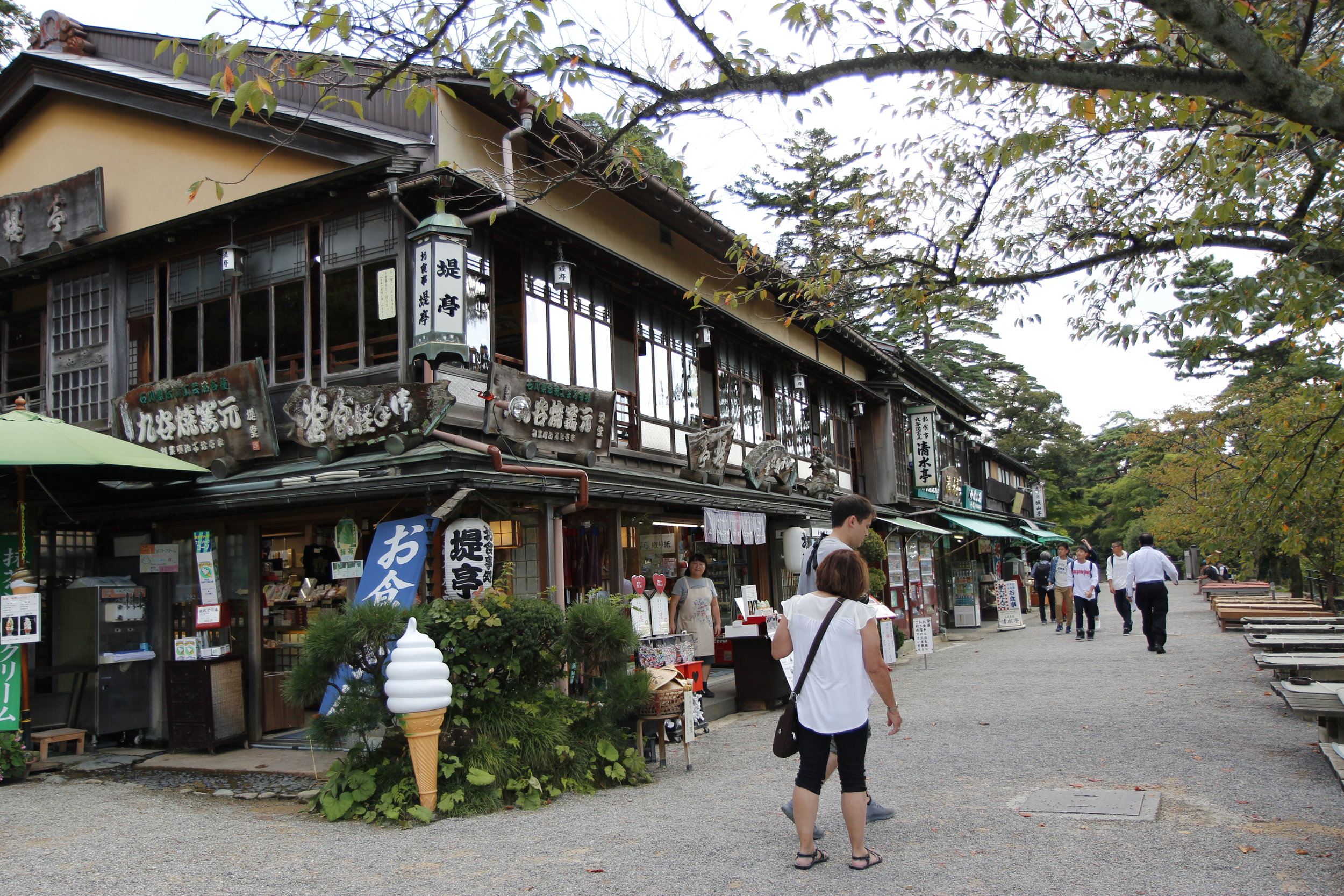
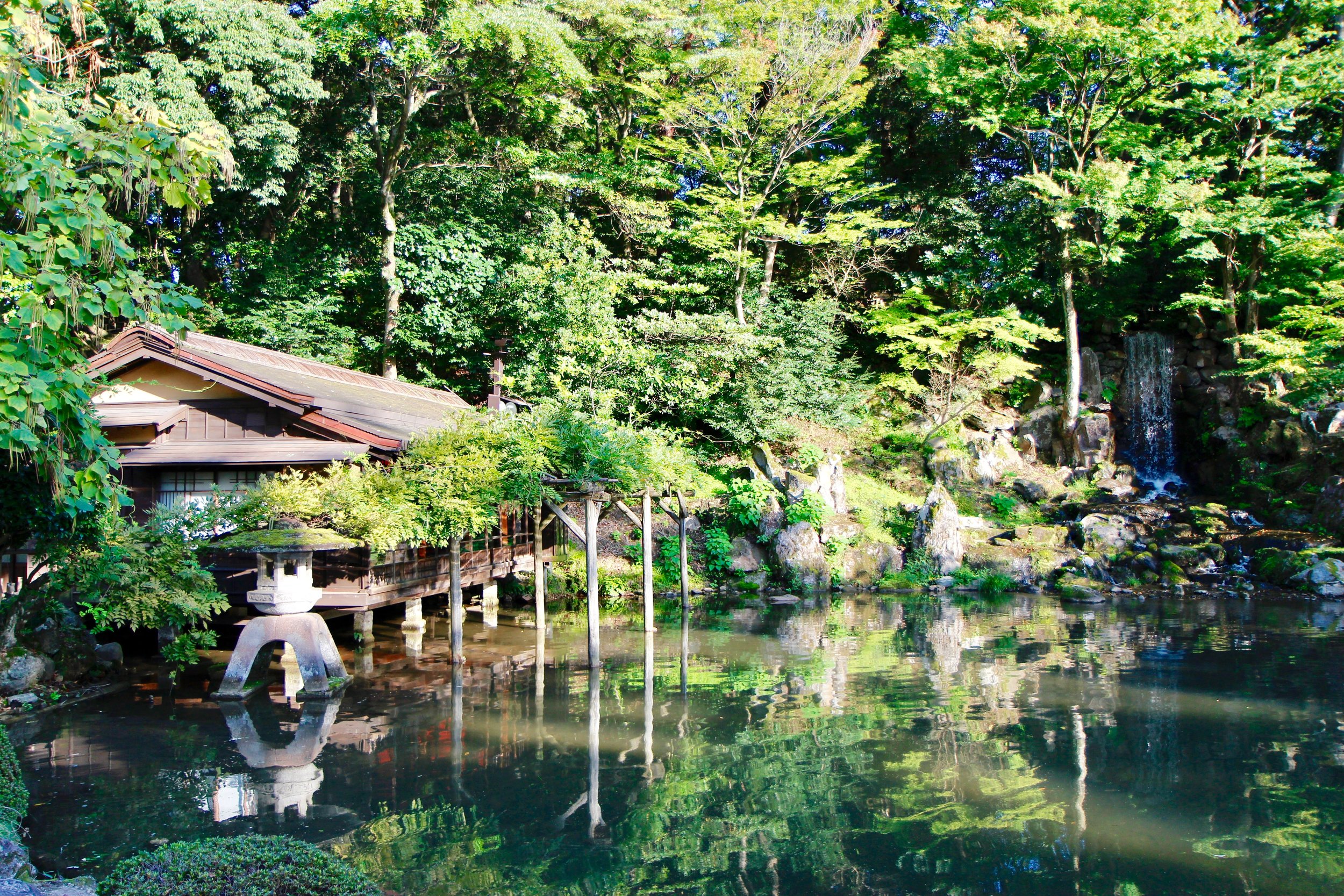
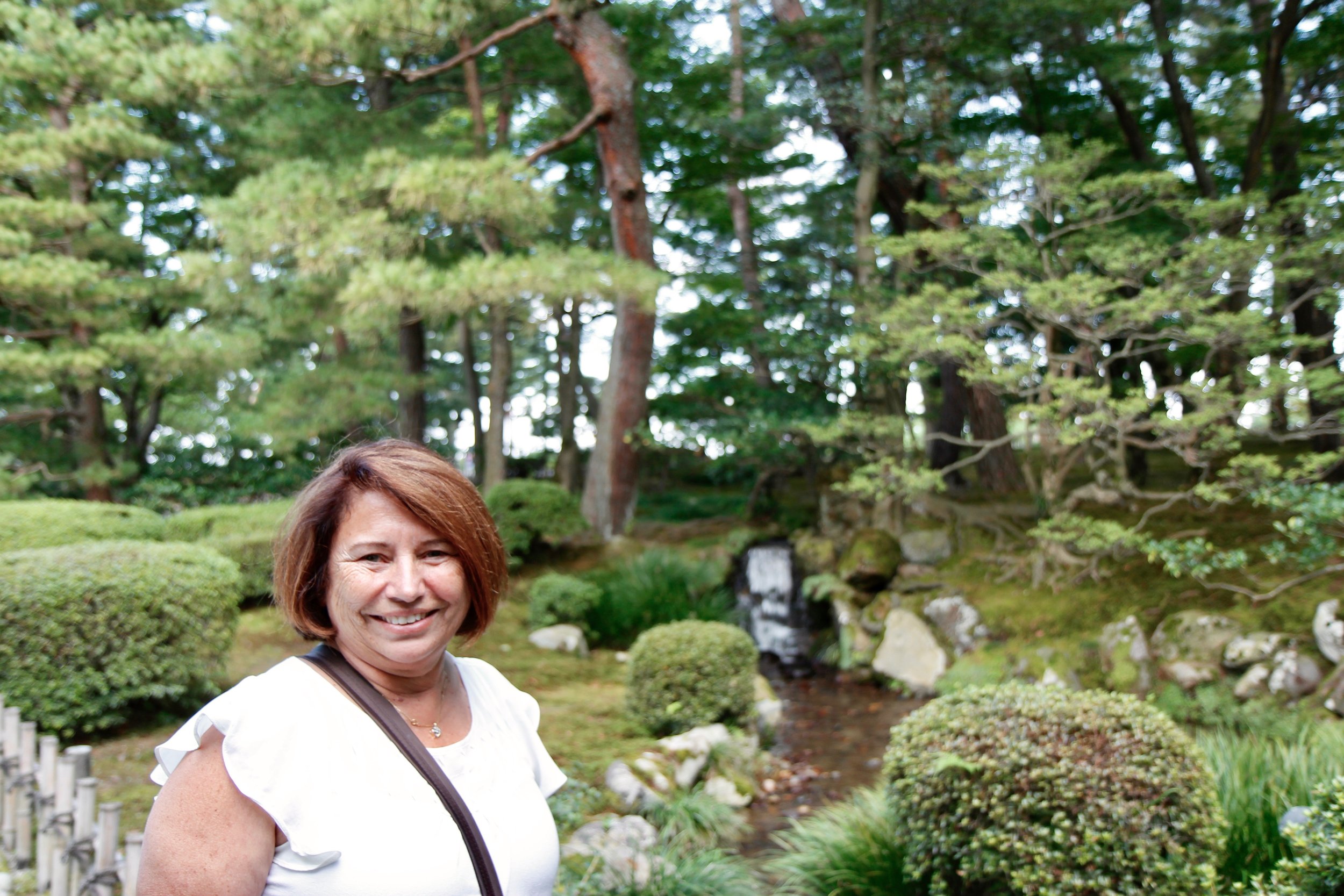
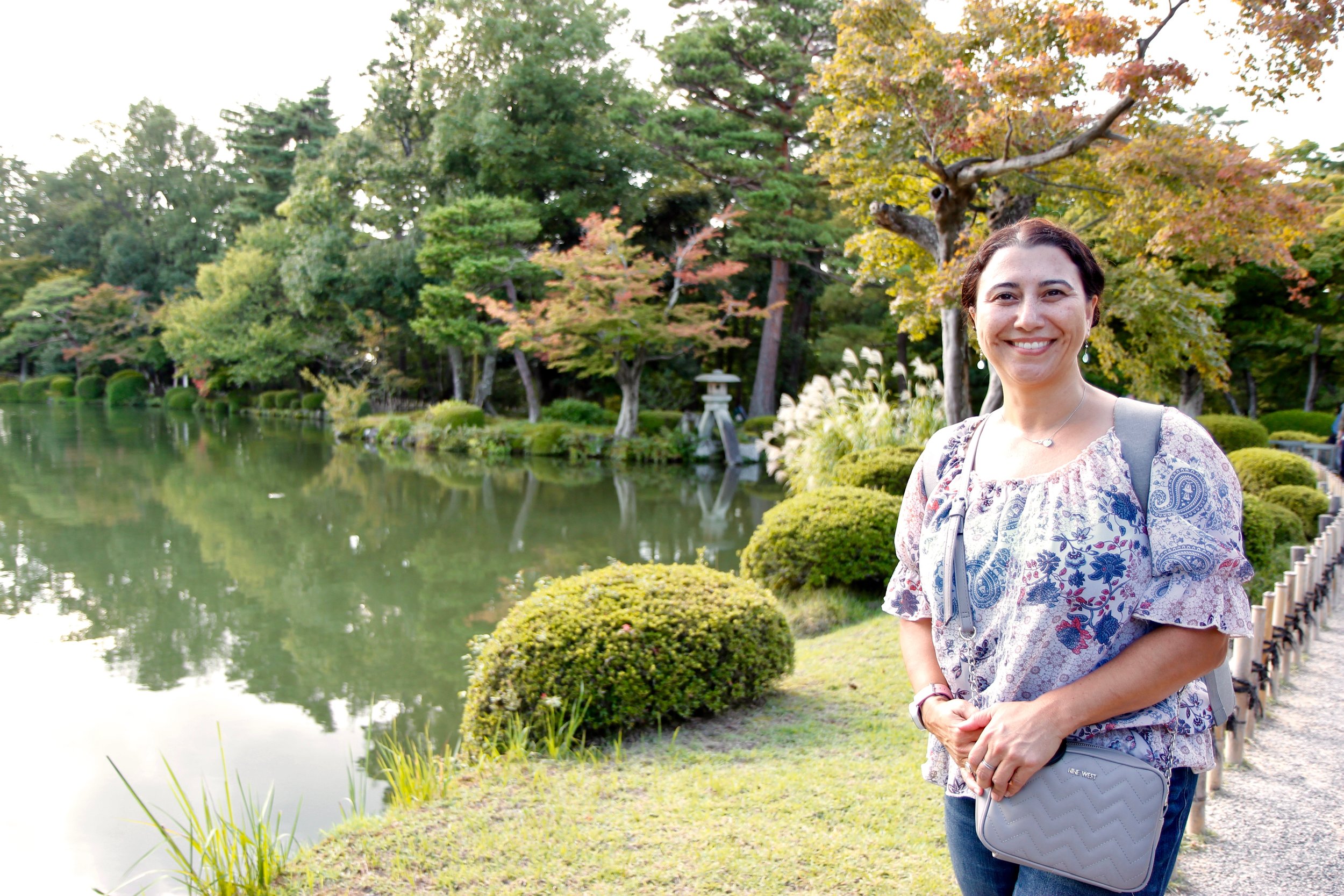
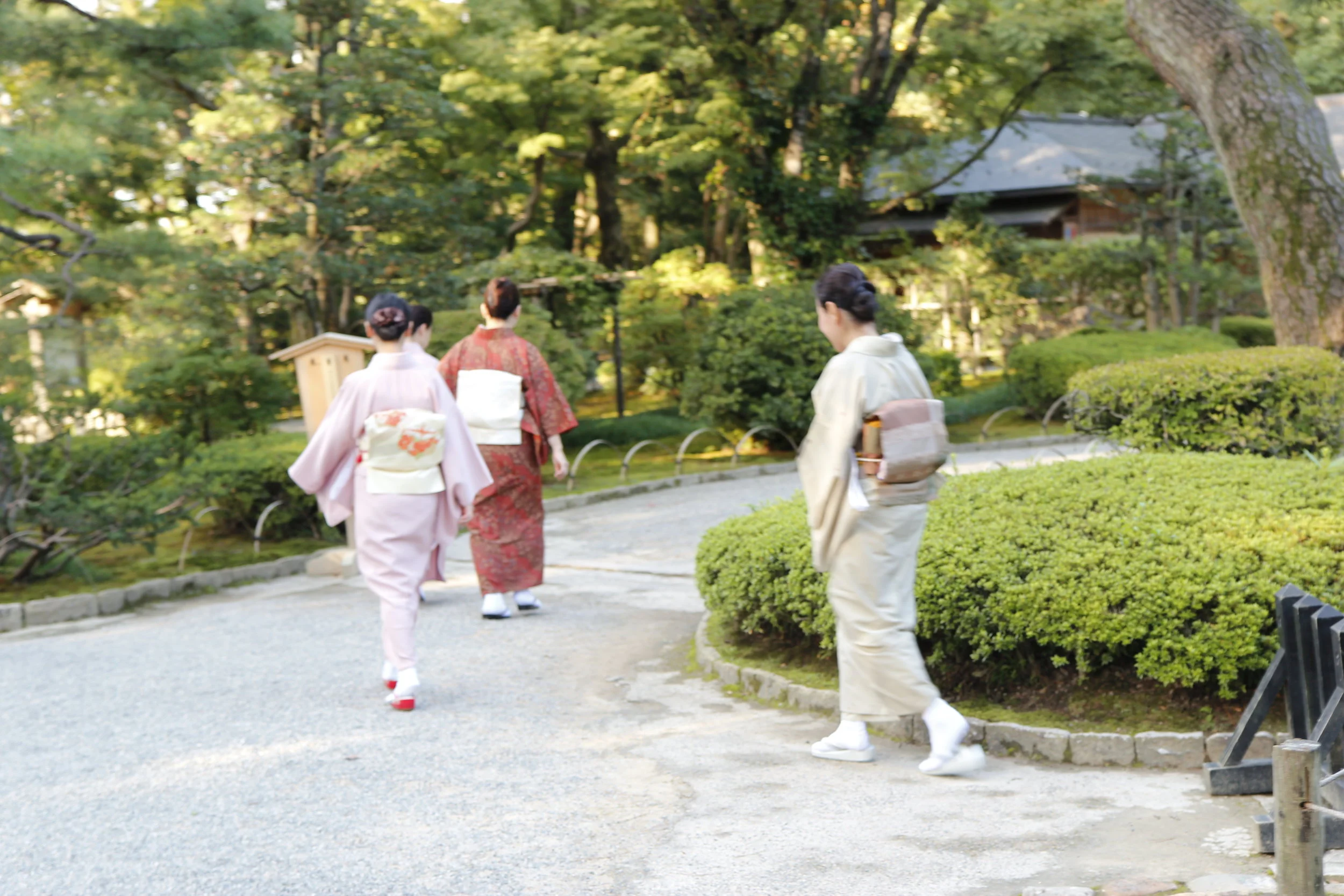
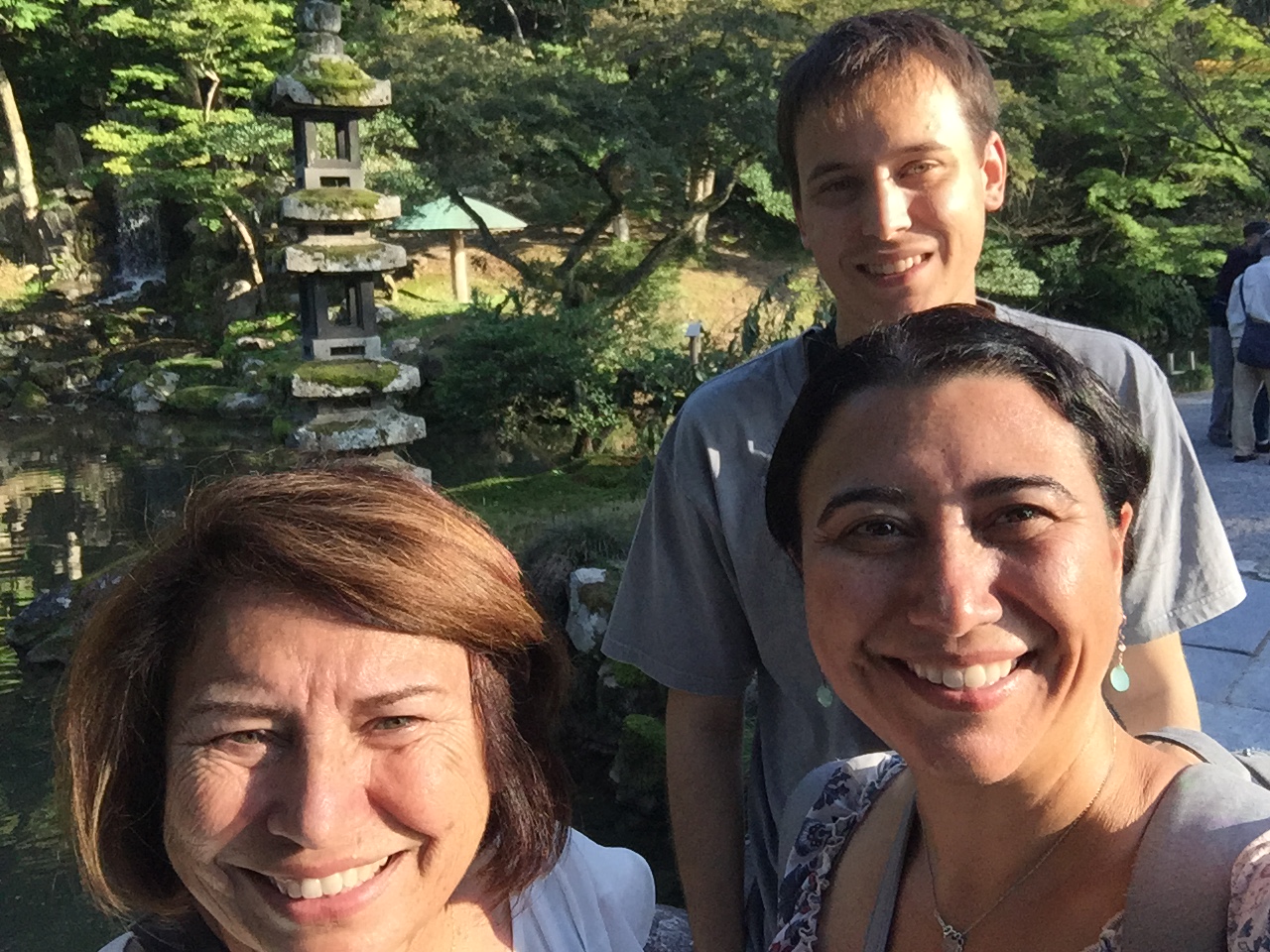
Japanese BBQ at Hana-Link Midouen in Kanazawa
After a little rest back at our hotel, we went out to dinner at Hana Link Midouen for more Japanese BBQ.
After dinner, we enjoyed a night cap at a bar nearby. Then Grammy and Auntie ended our evening back at our hotel in the onsen. The perfect way to end a day of sightseeing.
Day 11 - October 4, 2018 - Kanazawa, Japan
After breakfast at our hotel, we watched our Oakland A’s play in the MLB post-season American League Wild Card game in our hotel room. Unfortunately it did not go our way.
We then went out for the day and started at the Higashi Chaya District, one of the well preserved Geisha Districts. Overall, Kanazawa is well preserved due to escaping any bombings in WWII.
We saw many shops where they sold gold leaf items in knick knacks and even on top of ice cream! None of us were tempted to try it, as I’m sure it was more of a novelty then really gold. I think?
After trying to figure out the bus schedule and no buses stopping for us, we opted to walk about 20 minutes to the Oyama Jinja Shrine, which was built in 1599.
And, then walked another 15 minutes or so the Omicho Market to have a look. It was nothing like the market in Kyoto, but a nice pit stop.
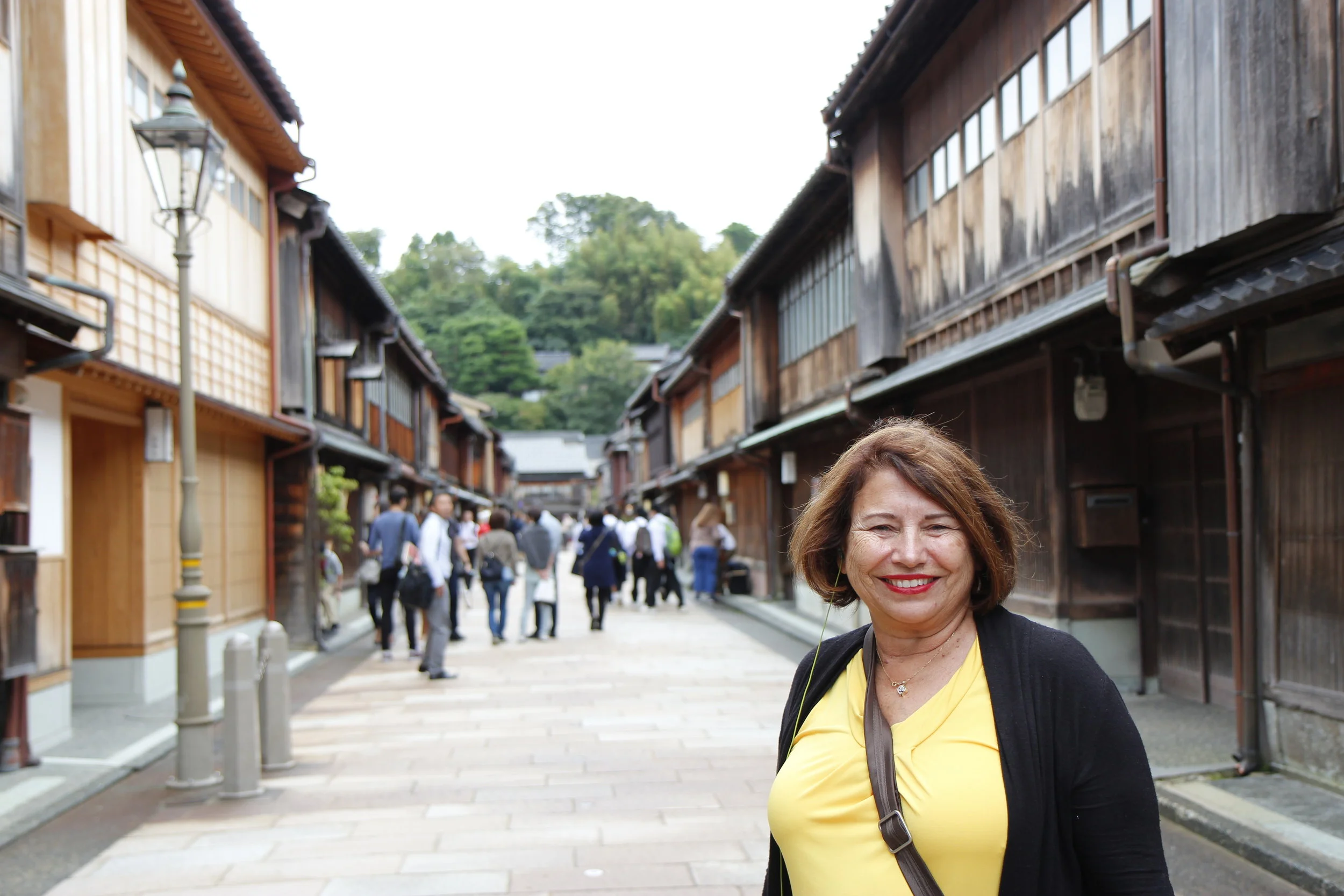
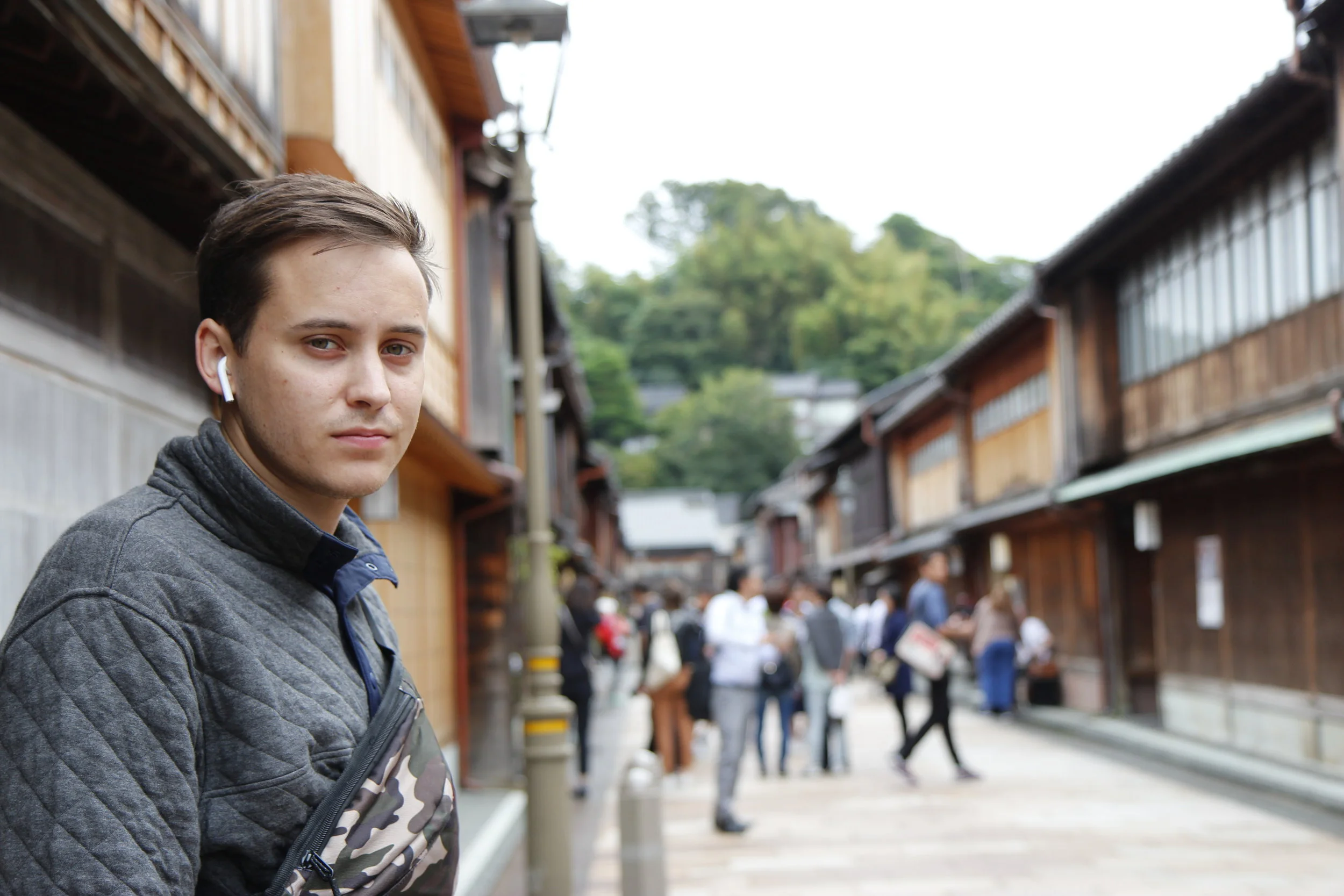
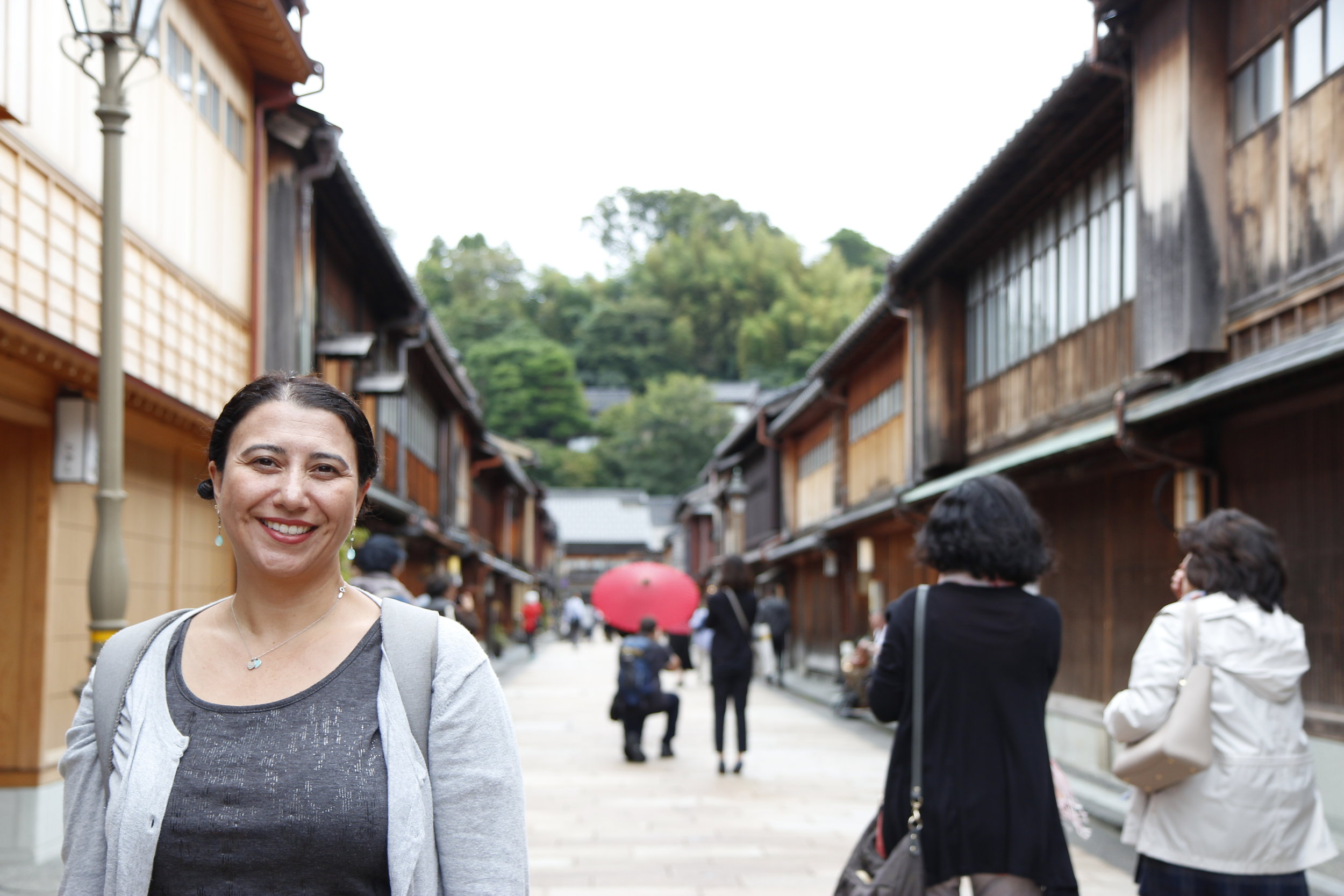
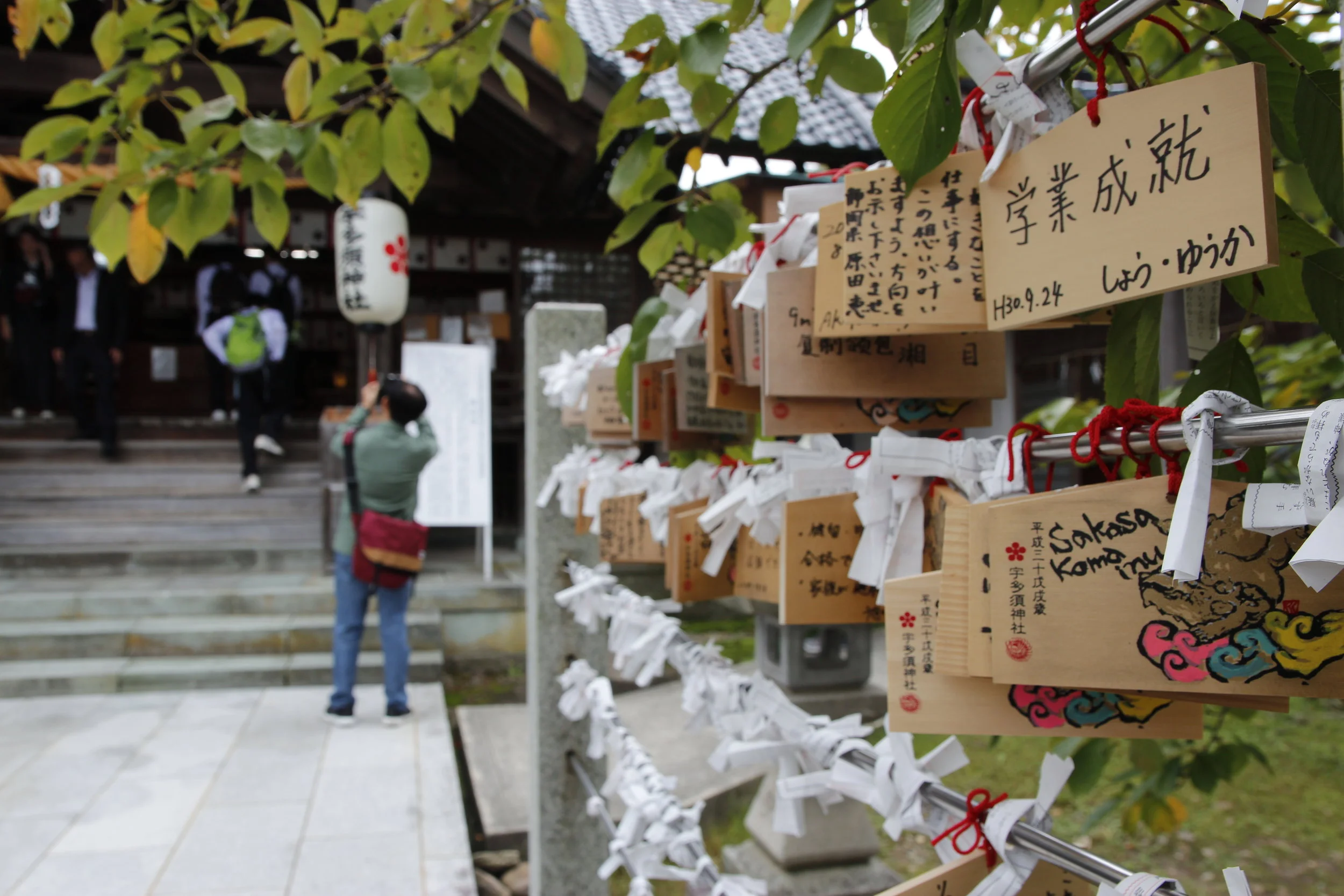

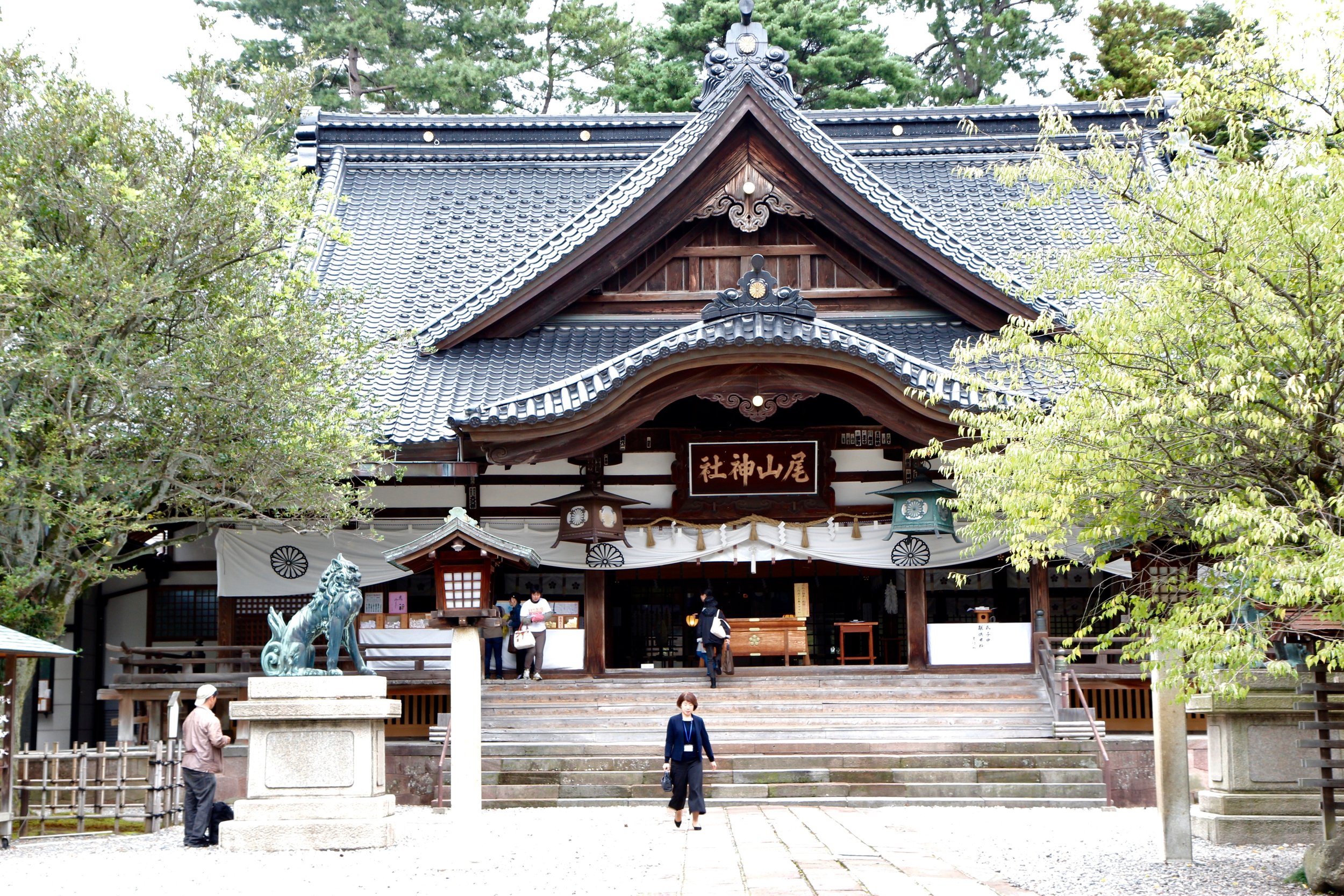
Cheeseburger and fries made to perfection.
Speaking of food, we worked up an appetite and found a hamburger place called, the Godburger, in the Naga-machi Yahiki District, the Samurai District. We were really impressed by the one chef, his helper and the 14 seat restaurant. We were asked to wait outside until there were seats for us to enter the restaurant. The wait was worth it.
Some might question us ordering a hamburger while in another country. But, sometimes eating the same food for two weeks, you need to mix it up and have something familiar. At that moment, we all wanted a hamburger. And, in Japan, every item is always prepared with the utmost precision. It was nice to have something familiar yet, prepared different than we expected.
After lunch we walked maybe five minutes to view Nomura-ka, a restored Samurai home with beautiful gardens. This former home was beautiful and peaceful. I easily could have moved in and been happy here.
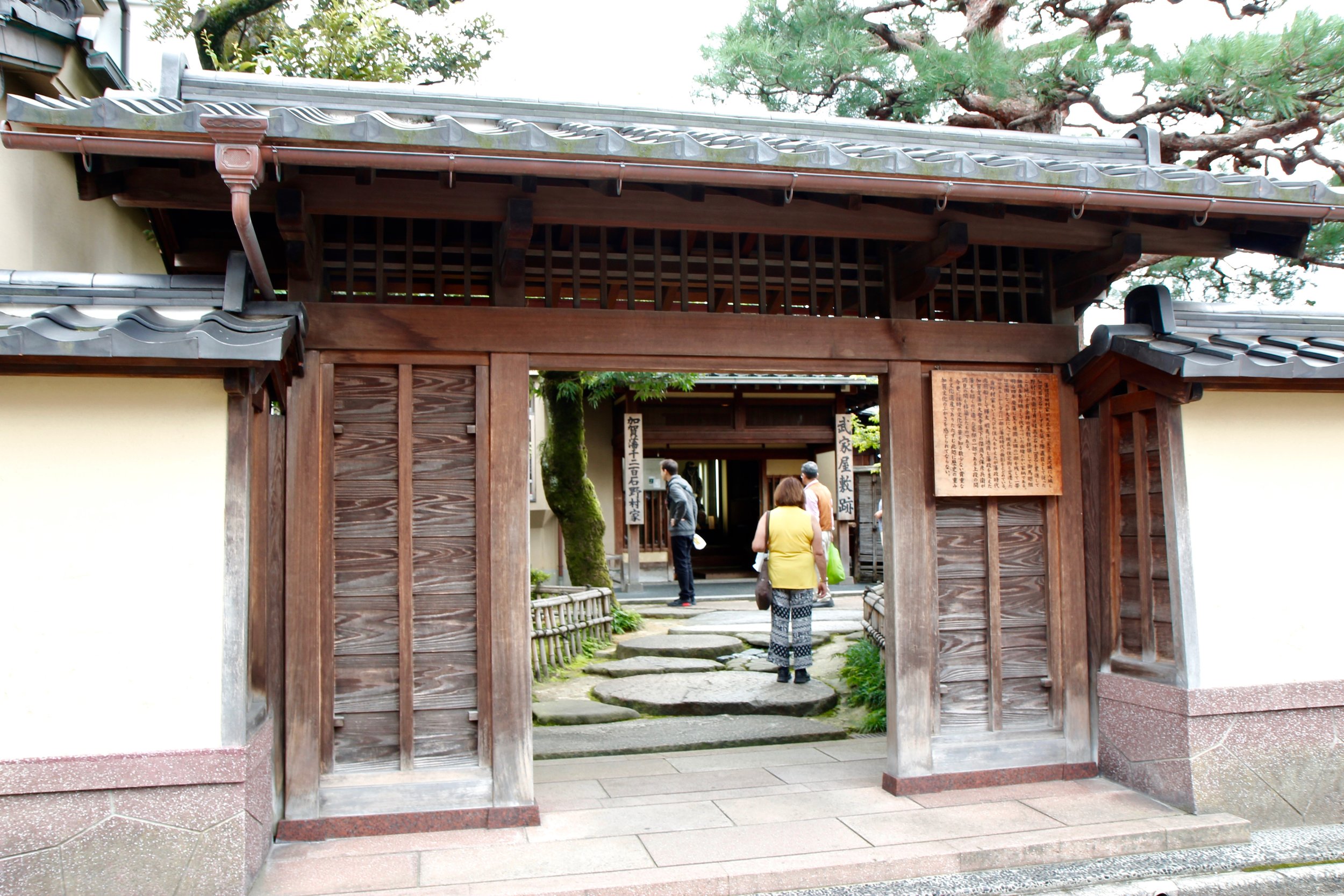
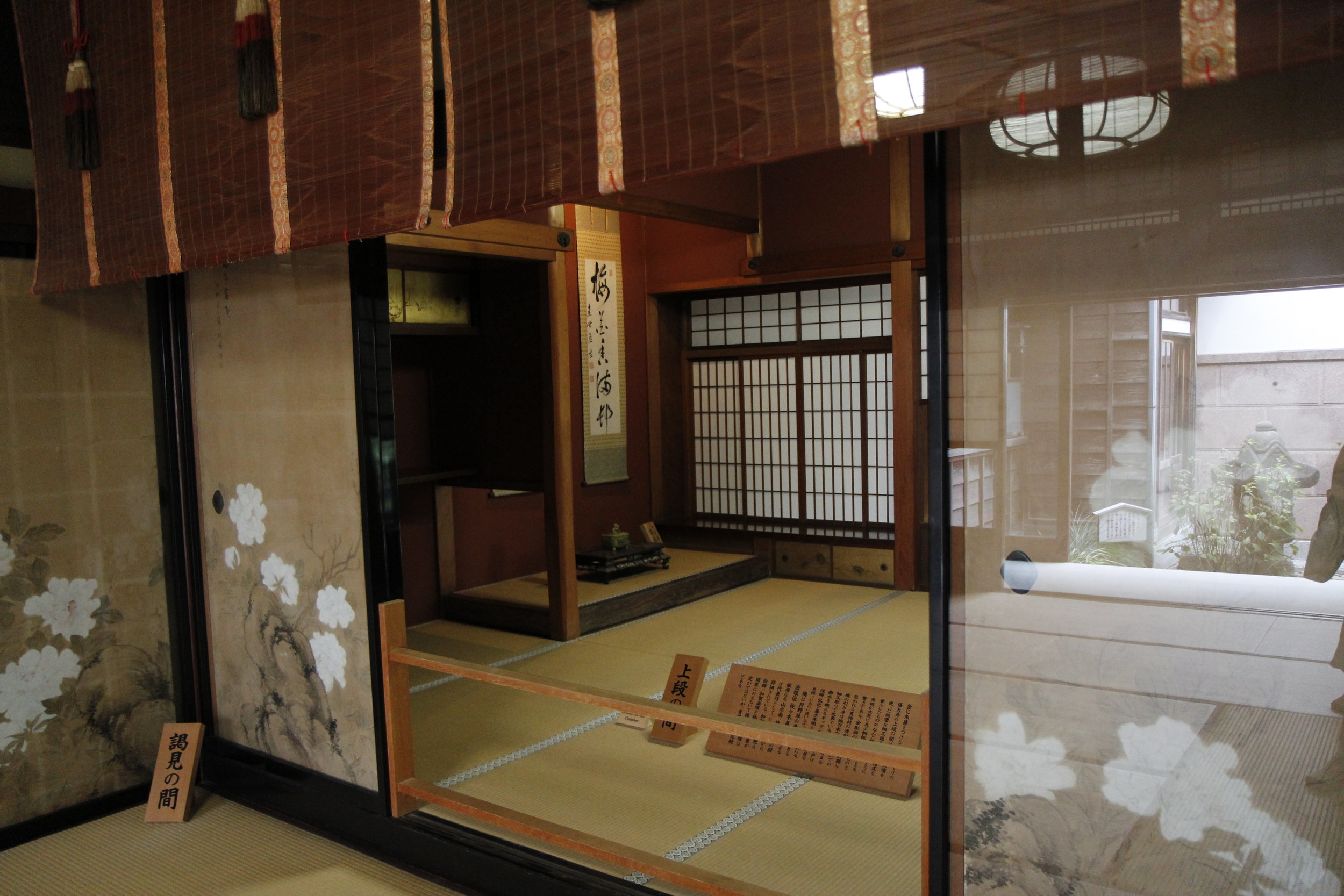
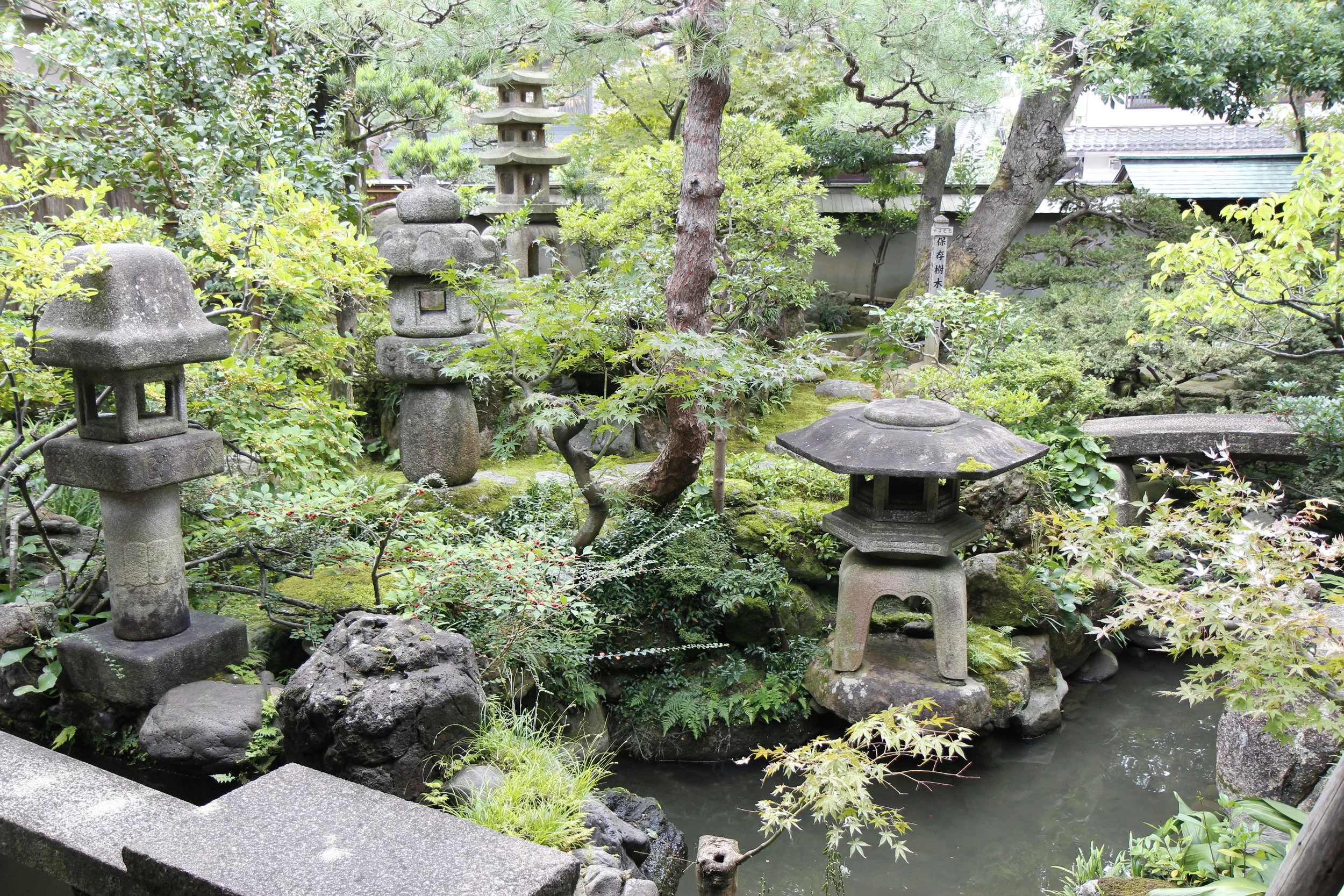
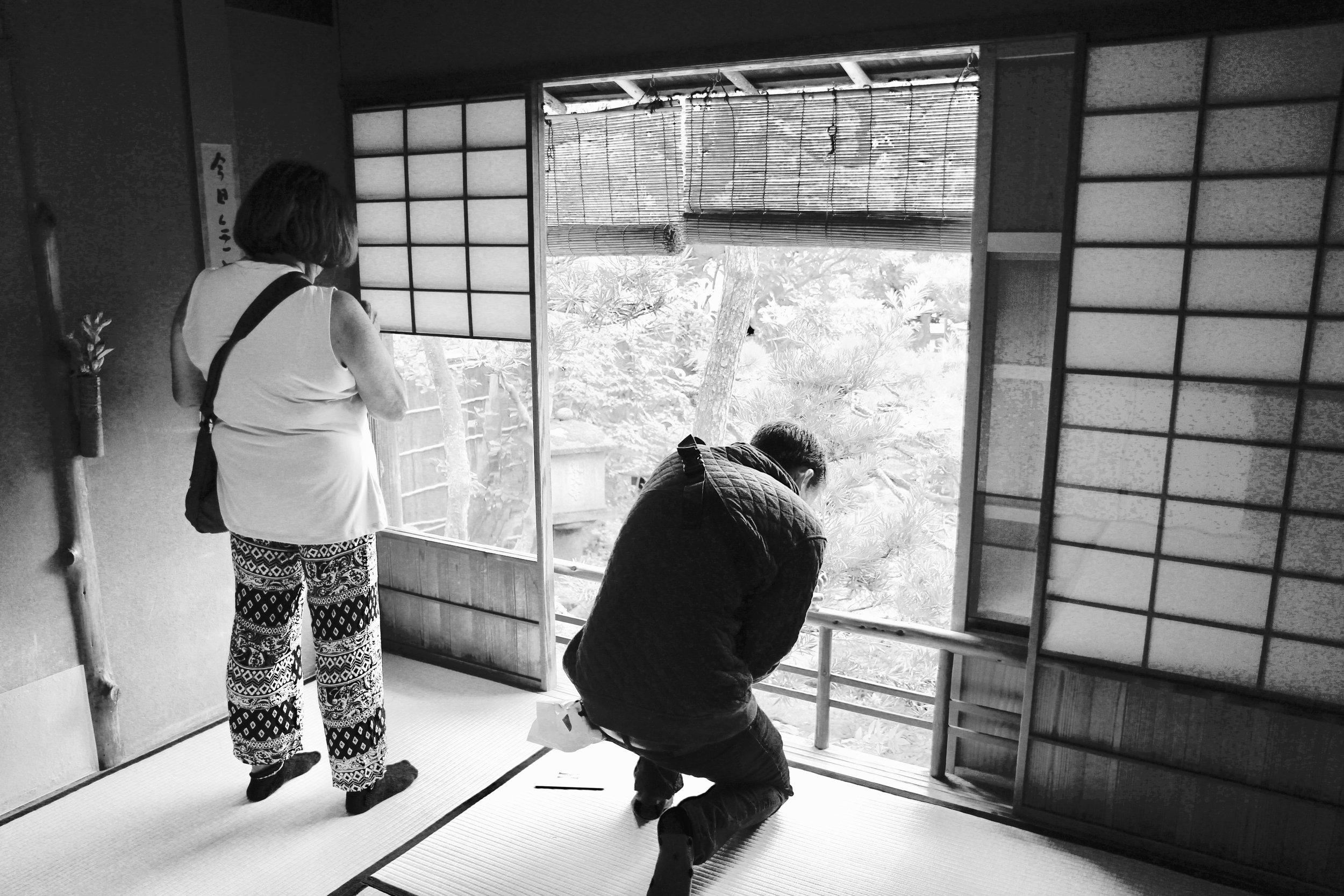
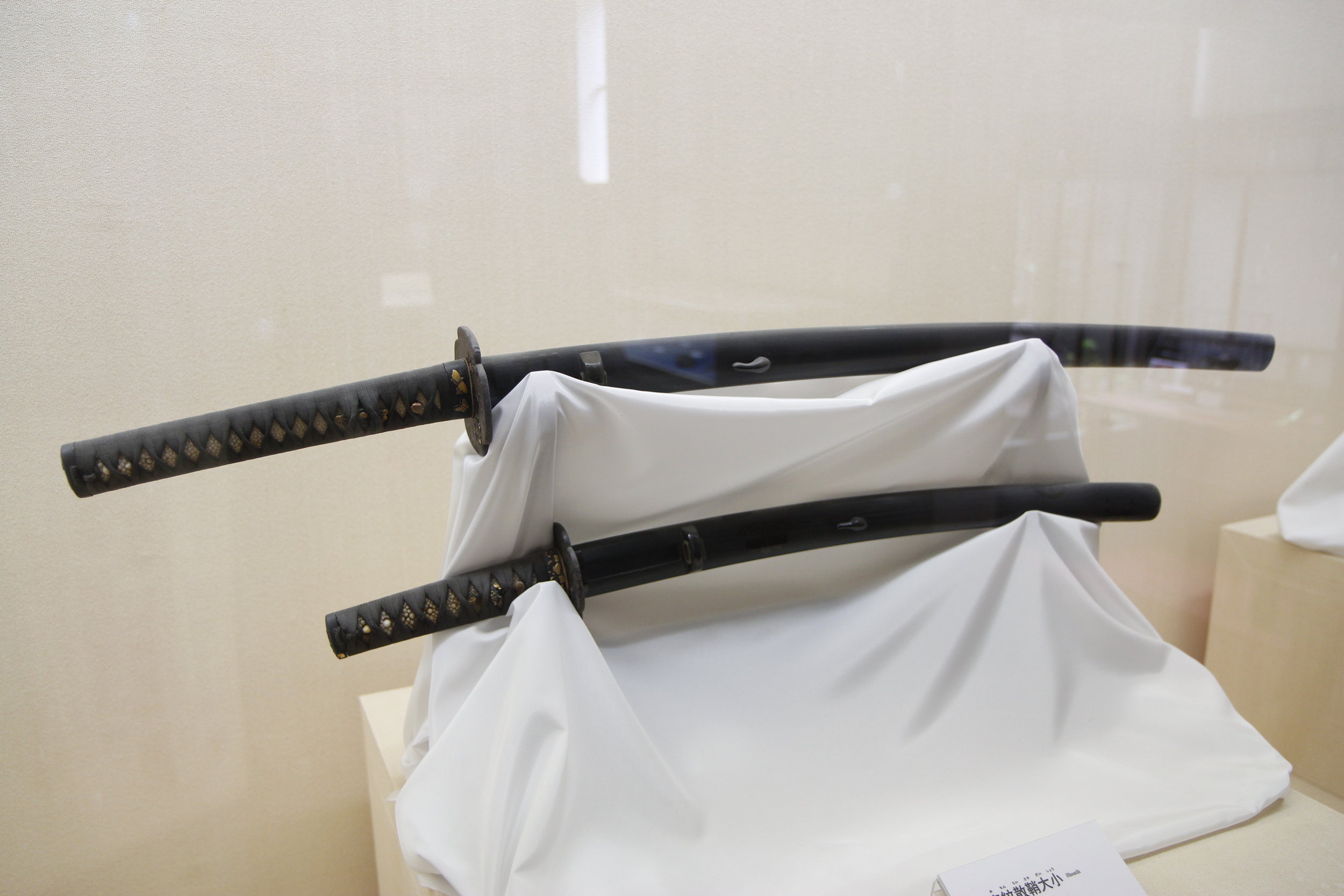
From Nomura-ka we wandered in and out of shops and museums in the Naga-machi Yahiki District enjoying the quiet and less crowded hustle and bustle of the larger cities. It was a small glimpse into what life might have been like in the past here.
We enjoyed dinner near the hotel and the onsen one last time before heading to Tokyo the next morning.
Day 12 - October 5, 2018 - Kanazawa to Tokyo, Japan
The bathrooms on the train.
Today we traveled via JR train Hokuriku Shinkansen from Kanazawa to Tokyo about two and a half hours. There had not been a JR high-speed train to and from Kanazawa until just a year or two before. Otherwise, it could have taken us a lot longer to get to Tokyo. This would also be our final high-speed train between cities. The trains were always clean, quiet and prompt. Traveling via high-speed trains are a great way to travel around Japan.
Upon arrival in Tokyo, we arrived in the Central Train Station. The station is huge, over whelming filled with large amounts of people, good food and shops. Our hotel was one stop past the main station and we had to walk about 10 minutes from one end of the main station to the other to transfer to our regional train that was included in our JR pass. One more note about the Central Train Station, it was one of the few buildings / structures to survive WWII and the Kanto Earthquake.
Arrival in the Central Train Station, Tokyo.
Hotel Sardonyx Tokyo
After we arrived at our hotel, the Hotel Sardonyx Tokyo, located in the Chuo-ku District, we rested a bit before going out for the night.
I remember watching Anthony Bourdain on TV and seeing his travel log about Japan. He talked about this insane experience watching a show as his jet lag set in. He was talking about the Robot Bar in the Shinjuku area. I just had to see it for myself if I was going to be in Tokyo. And, since Anthony had just passed away a few months before, I felt like it would be a tribute to him. So I convinced my nephew and mom to share in the craziness.
We bought our tickets on a website called, Klook. The discounted tickets were a little still a little pricey for the bizarre experience, but we received a better deal for using Klook. I mean, how much should one really pay for crazy costumes, loud music, robots, yes I said robots, barely dressed women and horrible acting? Of course we didn’t know to what degree how bizarre it would be, but we were willing to give it a shot.
When we arrived we checked in and were put into a holding room with lots of mirrors, pre-show drinks and snacks plus some weird robots playing Michael Jackson on guitar. Then after some time, we were led down several flights of stairs to what must have been the basement. Then placed in seats that were uncomfortably close to the stranger next to you. Thankfully, we were placed at the top row of the tiny arena and not near the floor as they said some of the robots may swing into the seats. And, then the show started.
Yes, it’s true. The whole Robot Bar experience has changed and there are a lot of Americans who want to see the show. So, it’s probably not as authentic as it once was. But, in my opinion, it’s the epitome of Tokyo with bright lights and bizarre antics. It was crazy! And, we loved it. Would we do it again? No, probably not. But, we can cross it off our weird-things-to-do-in-Tokyo list.
There are other bizarre opportunities in Tokyo to experience if the Robot Bar is not your thing. There are such things as Puppy Cafes, Owl Cafes, Maid Cafes… if you think about it, it’s probably in Tokyo. So, do your research and see what tickles your fancy.
After the end of the hour and a half show, we worked our way up to the street level. It was still raining but it was good to breath fresh air again. We were hungry and and heard about an area called, Golden Gai.
Golden Gai is mainly known for it’s nightlife. It has well over 200 bars, however, most cater to locals only. The tiny 5-8 people establishments are fun to see. But, beware, if the sign on the door says, “Locals Only”, respect the owners wishes and find another place to spend your money. It’s not that they are not friendly, they just feel tourists will go in for one drink and move on. Where the locals will sit and have several drinks which is more beneficial for the establishment.
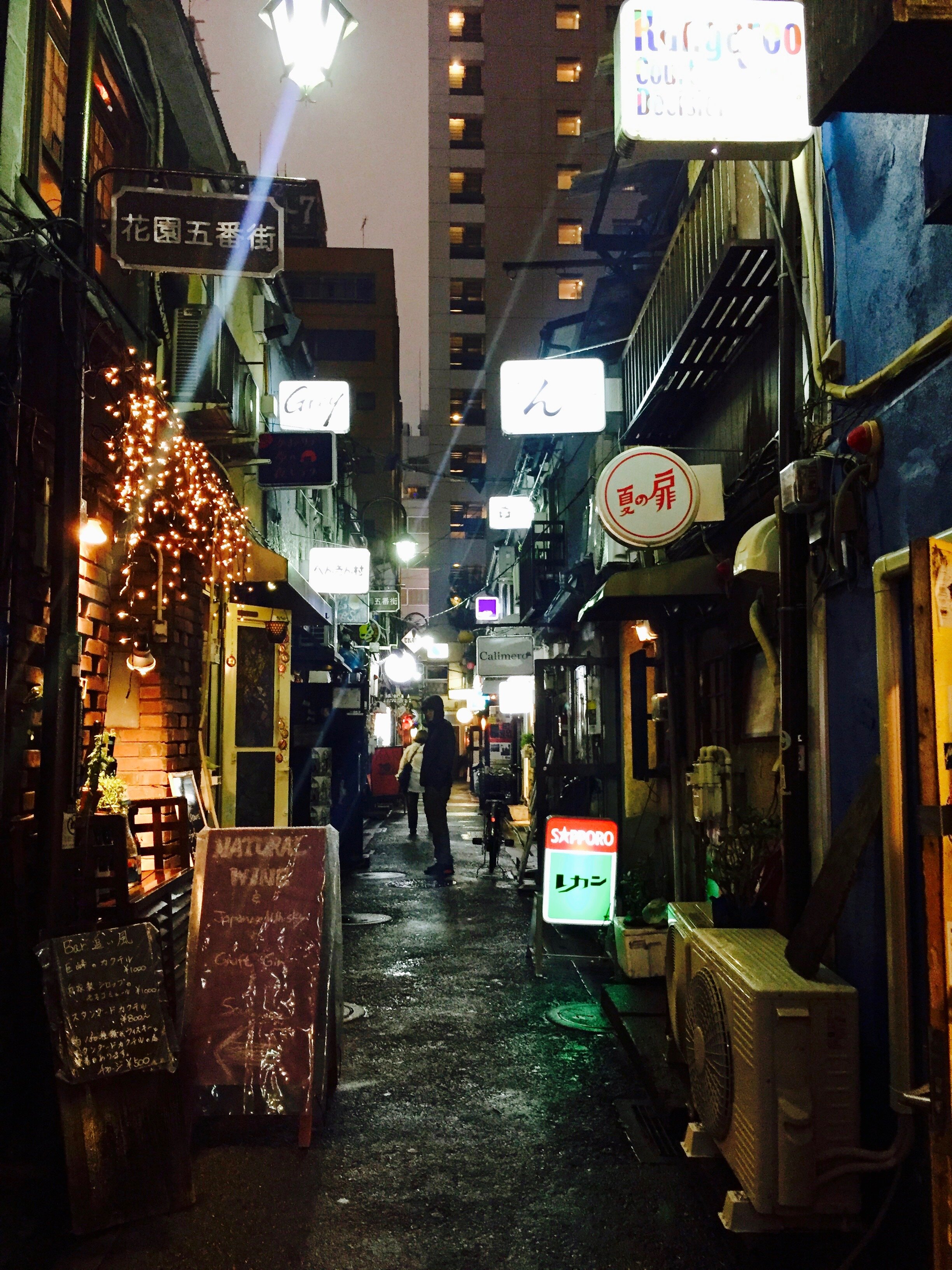

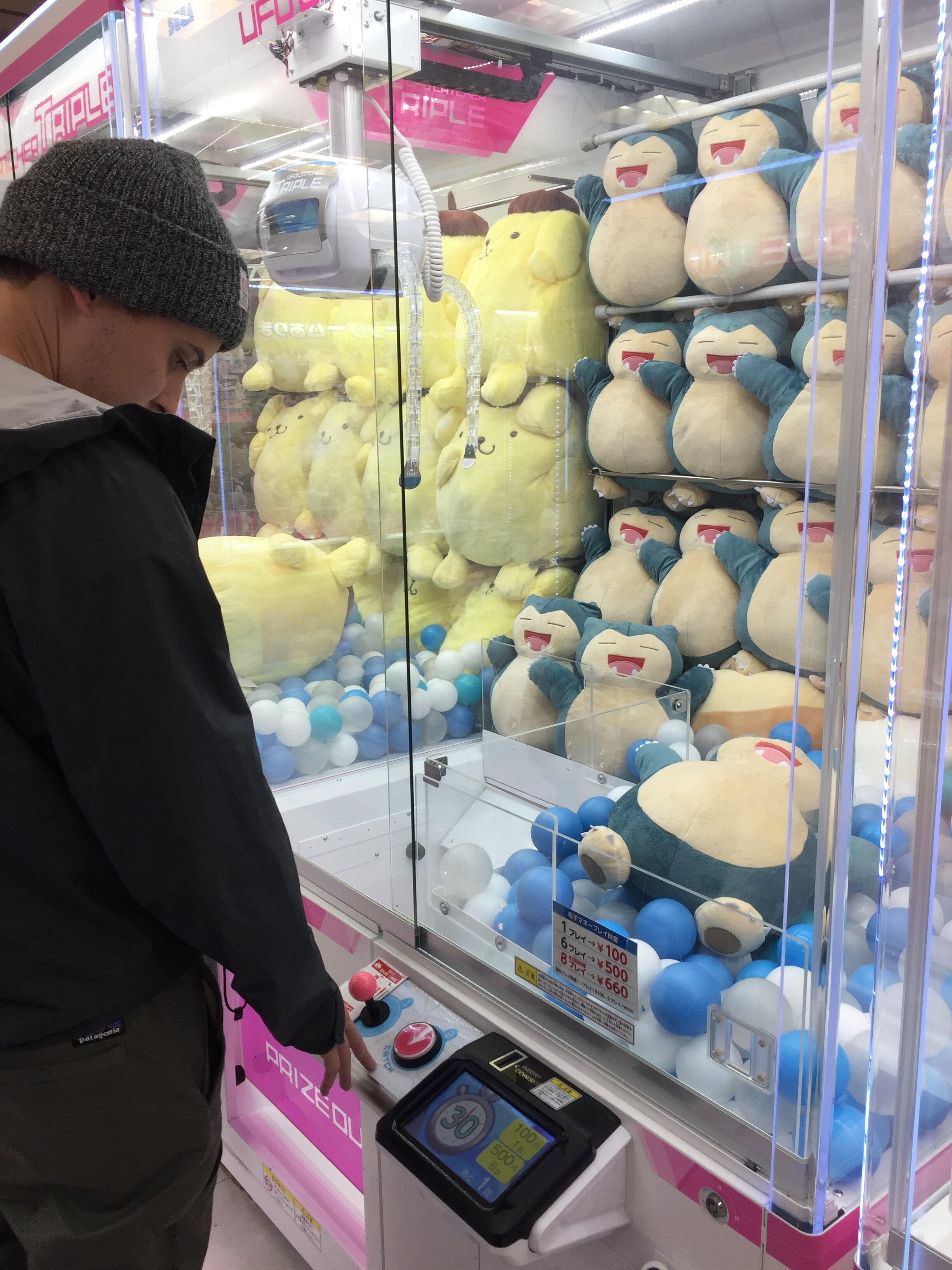

We found a sushi restaurant for dinner and played a few games at the local arcade. The arcade had interesting contents to win, everything from stuffed animals, to food to electronics. It was harder than it looked, even though some young adults figured out how to win and they were going home with some cool prizes.
The rain started to get to us and we decided to head back to the hotel for an early start the next morning.
Sidenote: Tokyo has over 226 Michelin Star restaurants. So, it’s hard to find a bad meal. So, EAT!
Day 13 - October 6, 2018 - Tokyo, Japan
Today was amazing! We reserved Sumo wrestling practice tickets at Sumo Keiko Stable through Klook. Since we were visiting after the regular tournament season, we opted to watch the wrestlers practice at one of their stables. After an early breakfast of the typical Western and Japanese style at our hotel, we took a taxi to our reservation.
Upon arrival, we checked in outside and were handed a list of rules we must follow before entering the stable. The biggest rule was to stay seated and remain quiet for the duration of the hour long practice. I was allowed to take photos, without flash, as long as it did not disturb the wrestlers.
When the whole group arrived, we were led inside. We were seated on cushions on the floor of a raised platform over the small arena. Slowly but surely the wresters began to enter the arena and began to stretch and warm up. Eventually there were mock fights, but mainly with a younger and smaller wrestler paired with older and more experienced ones. We assumed he was in training, but honestly we had no idea what was really going on. However, we didn’t care. We felt like we were flies on the wall to something really special. At the end, we were allowed to take photos with a few of the wrestlers then led out of the stable. It was such a cool experience and we were so glad we got up early to witness it.
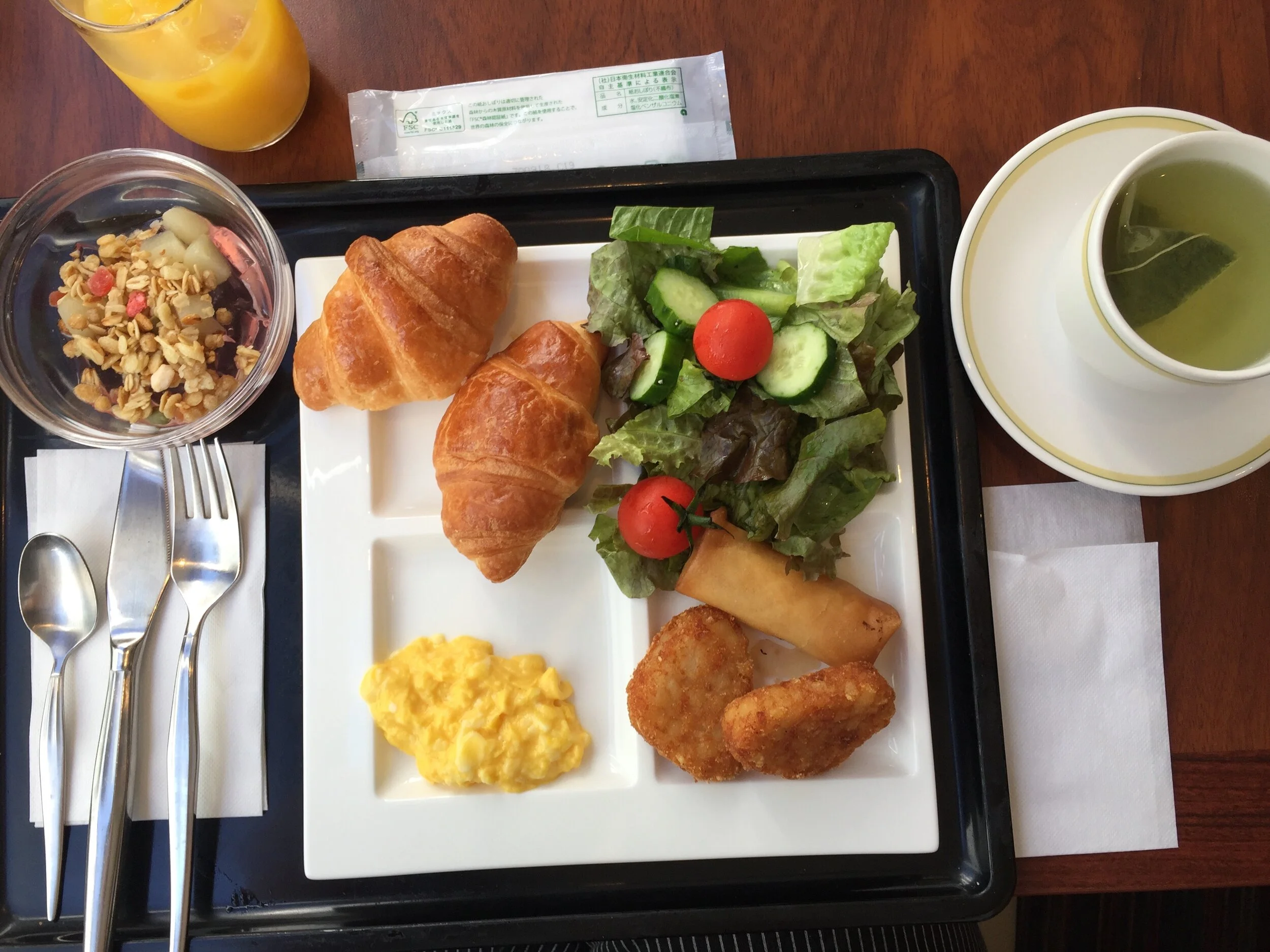
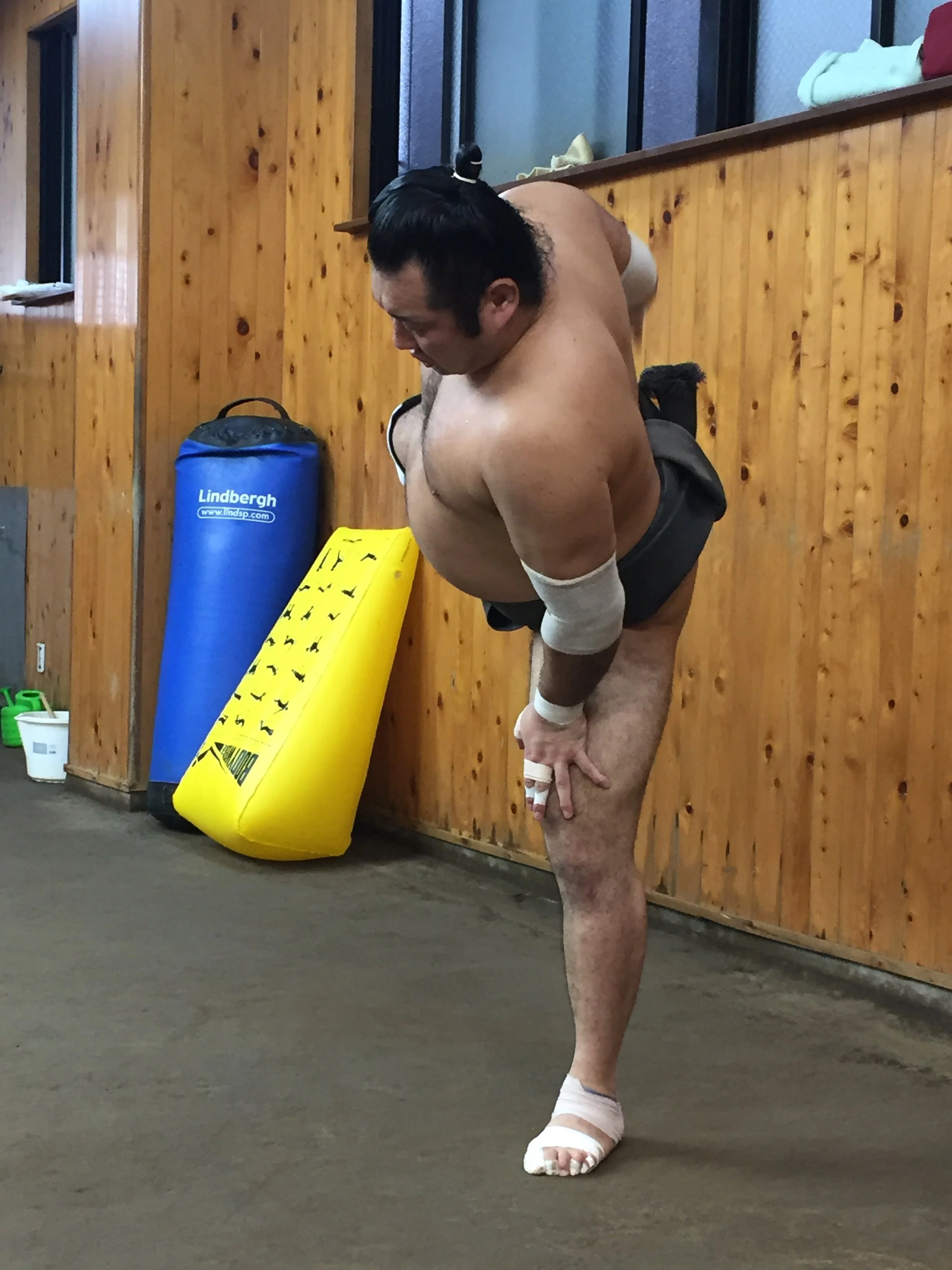
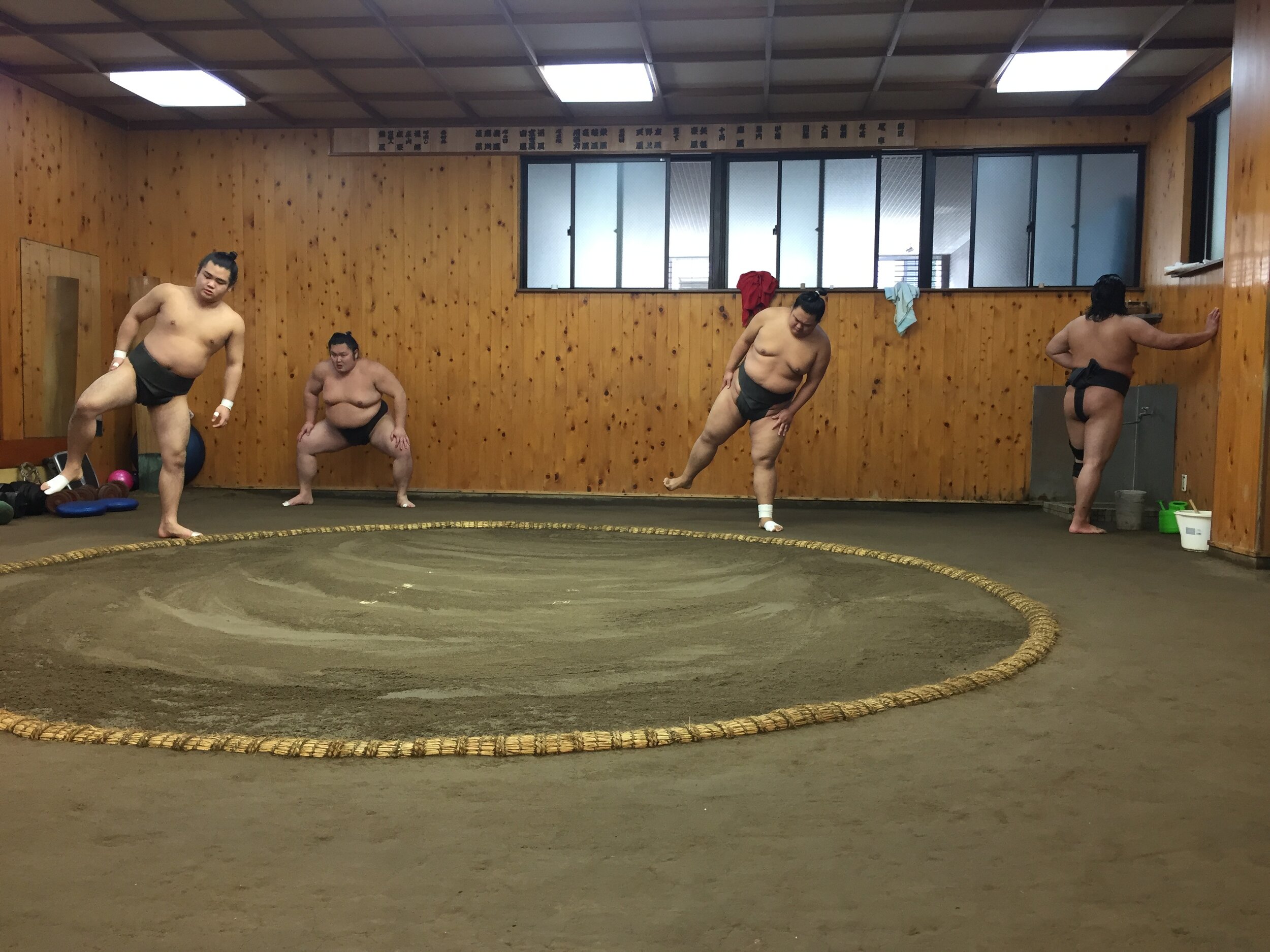
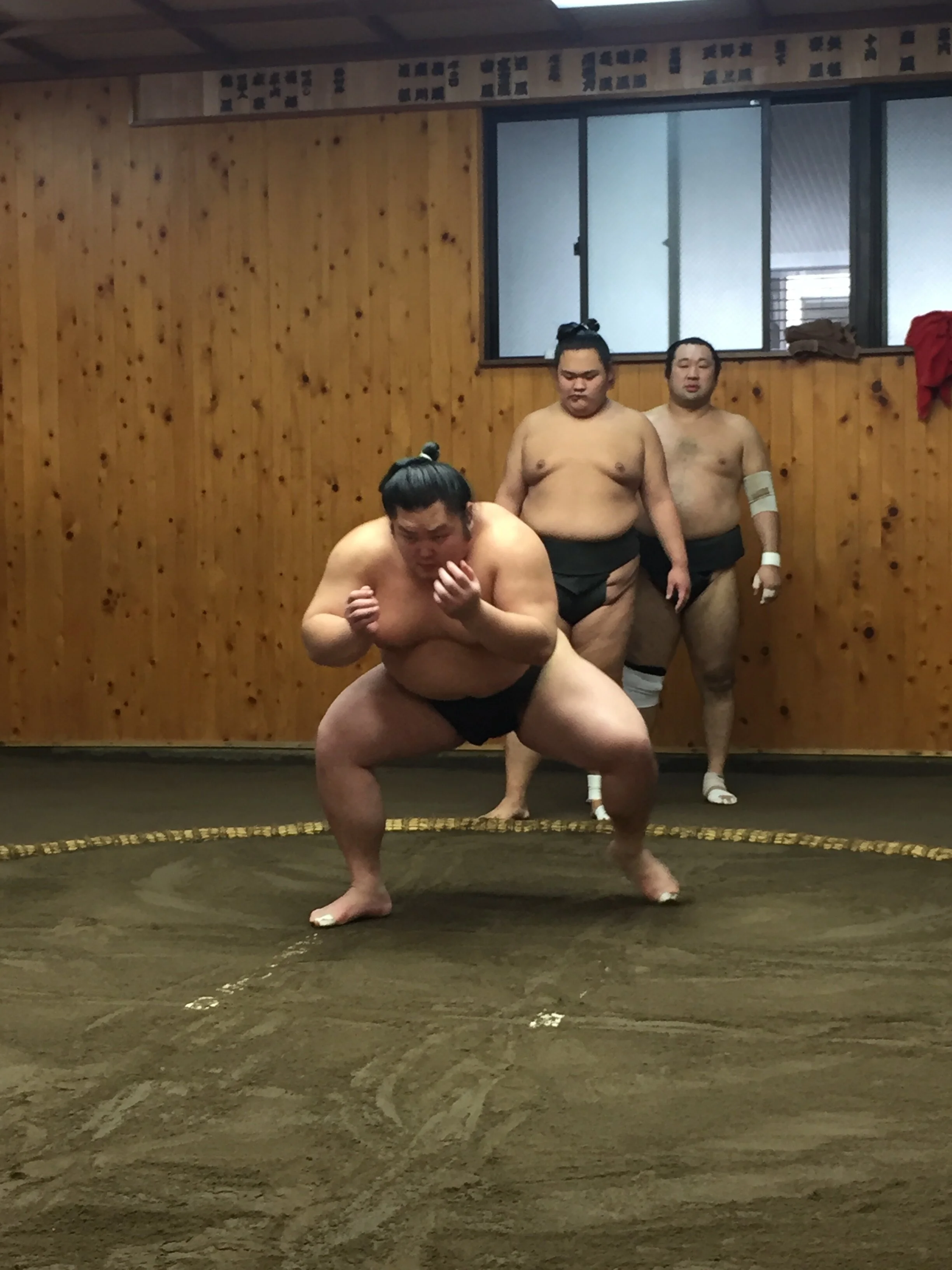
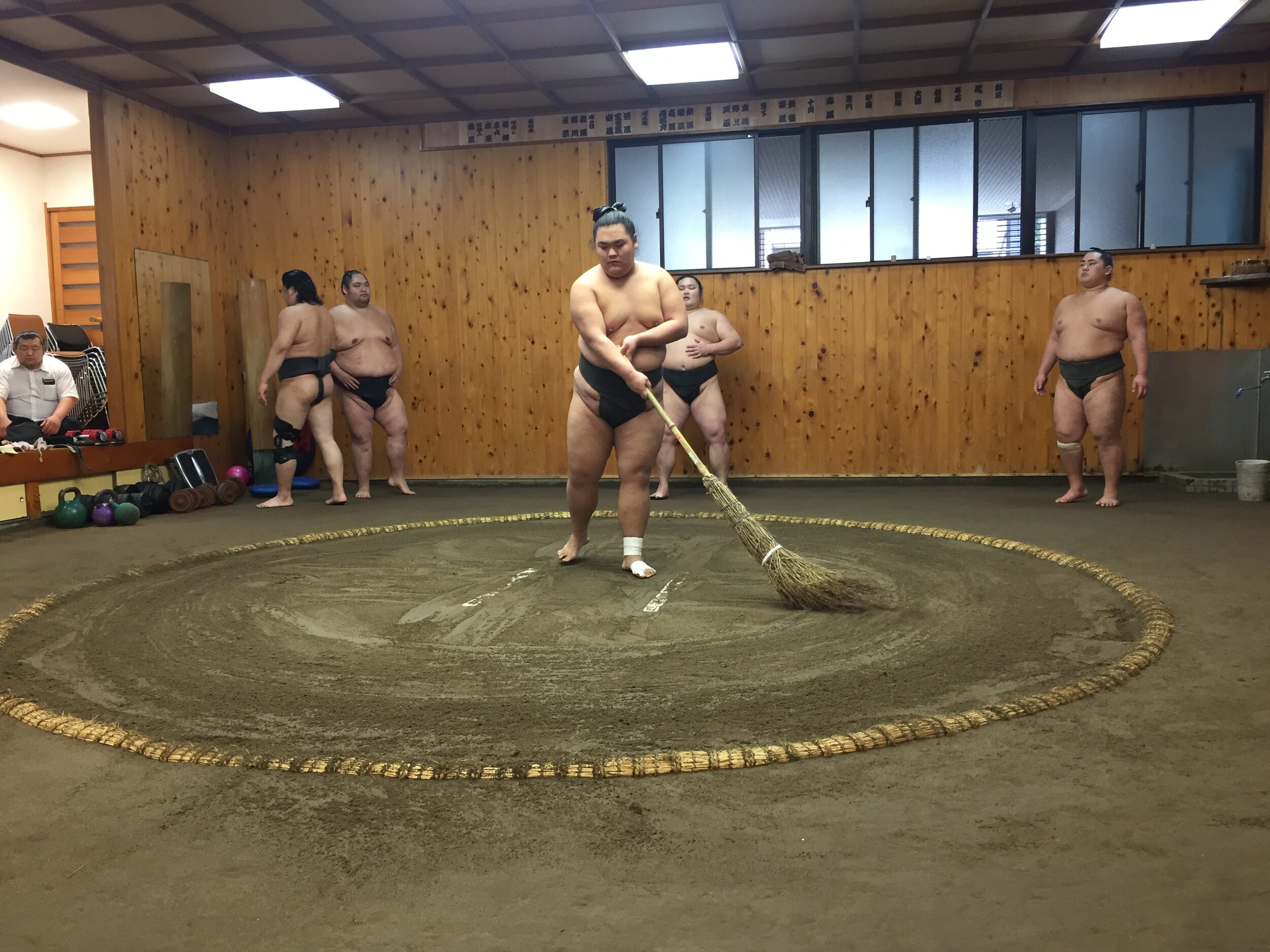
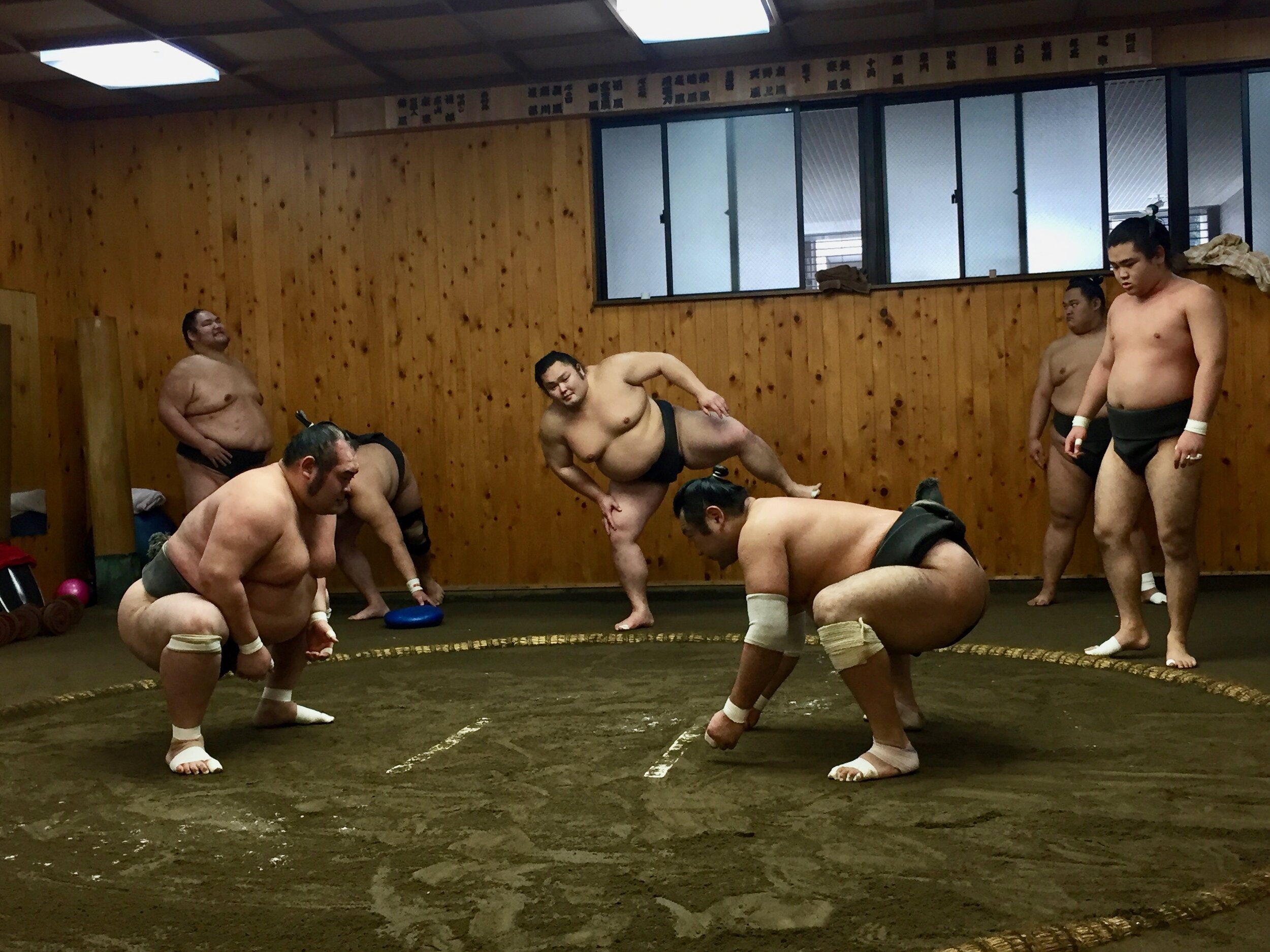

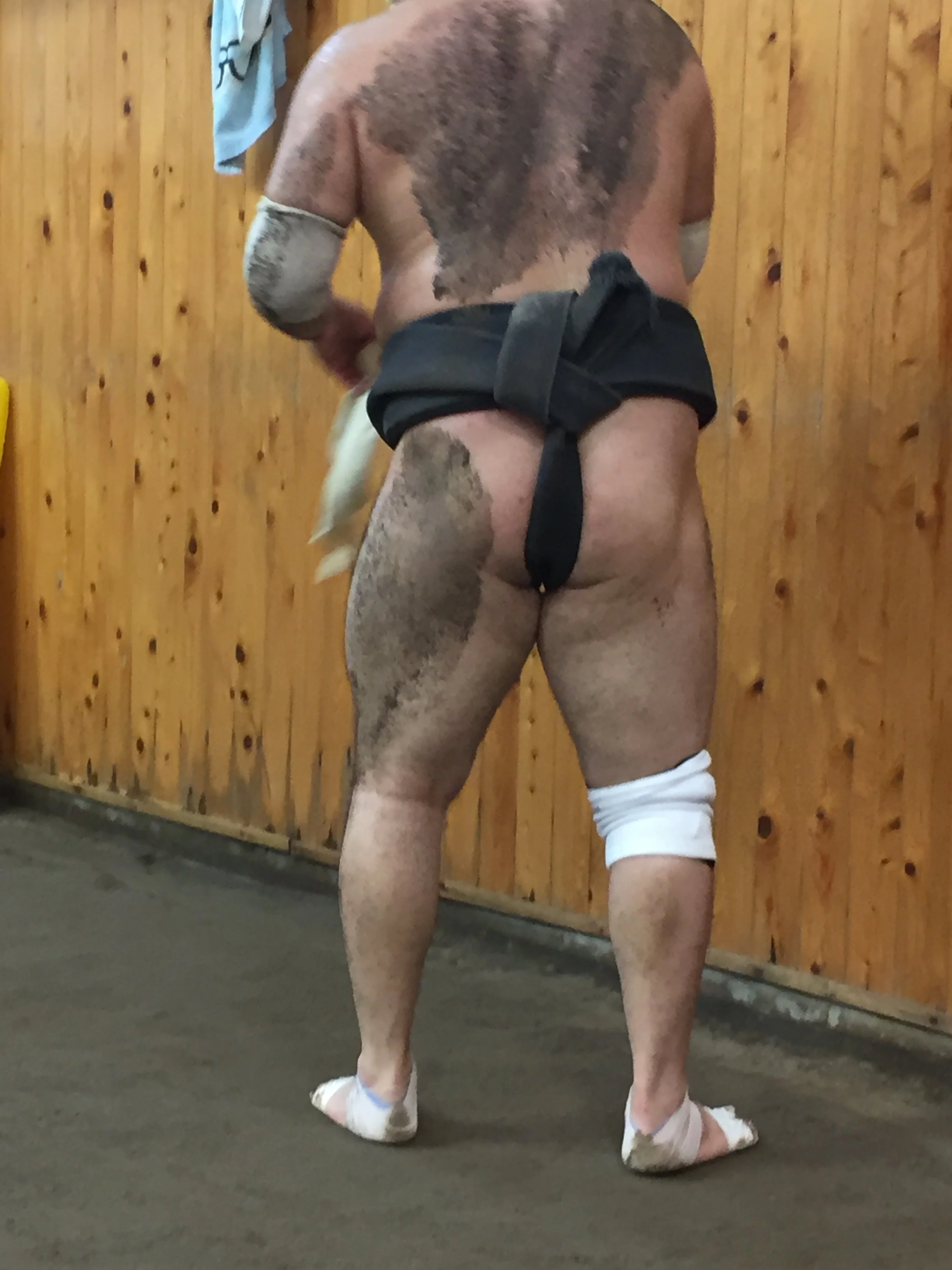

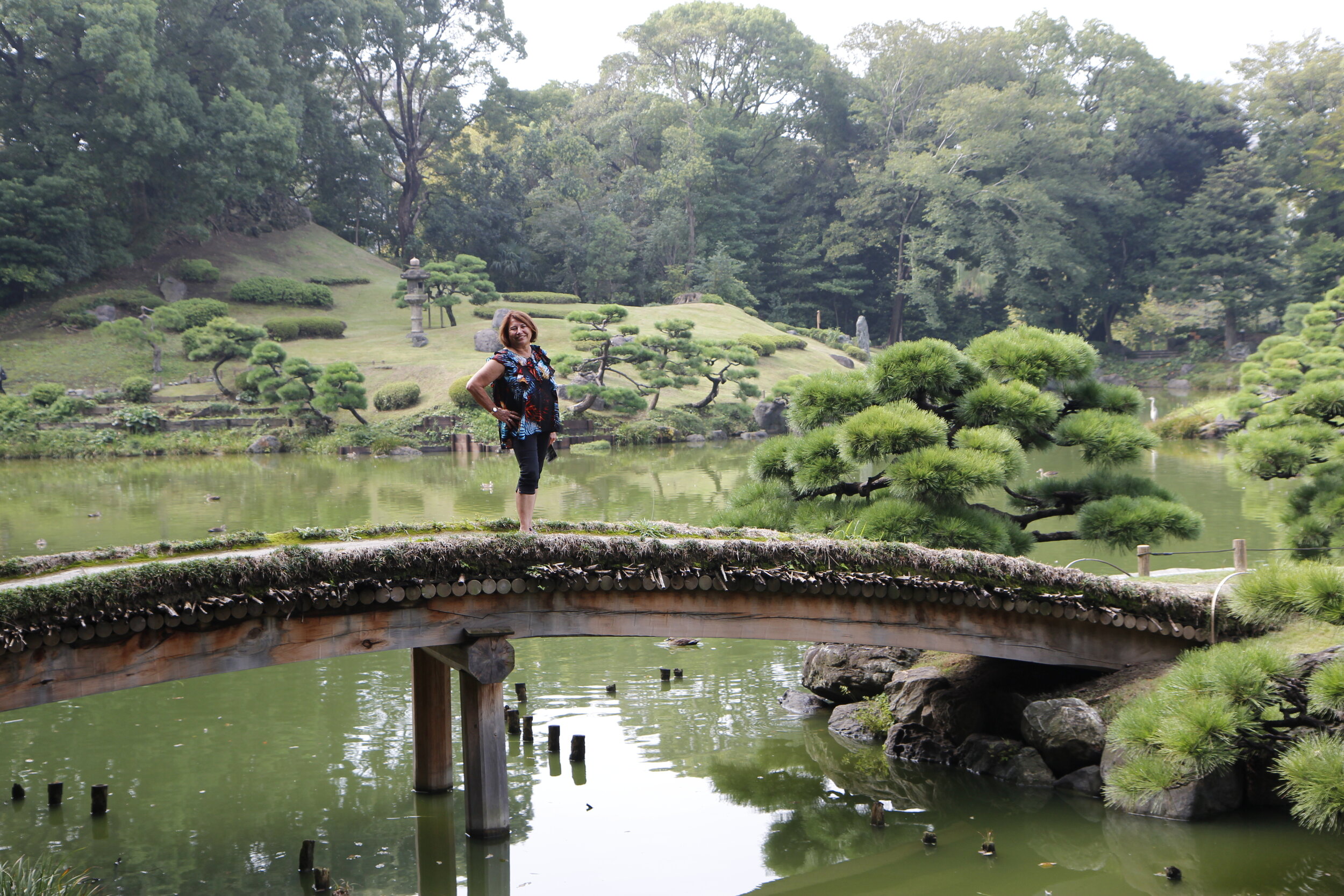

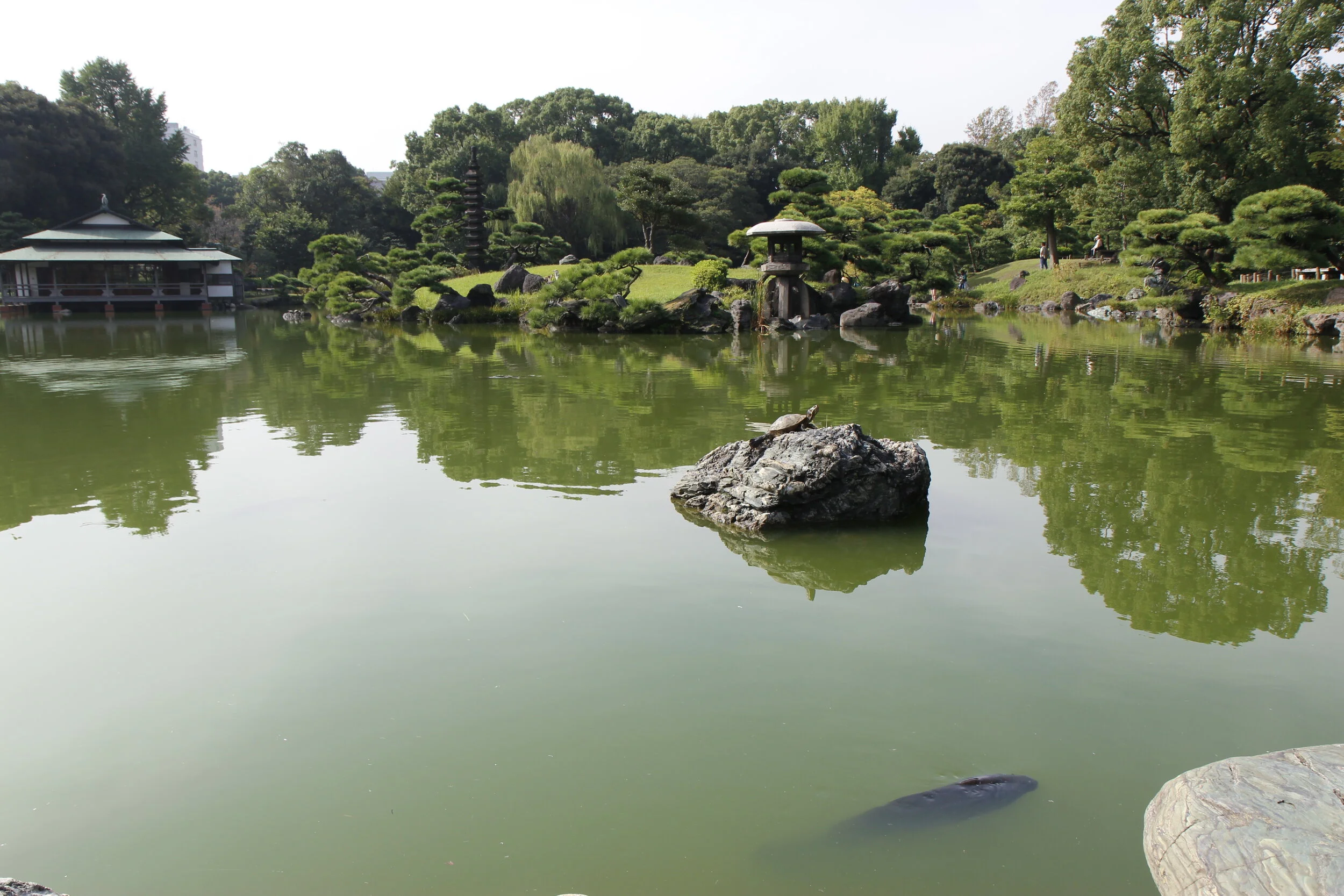
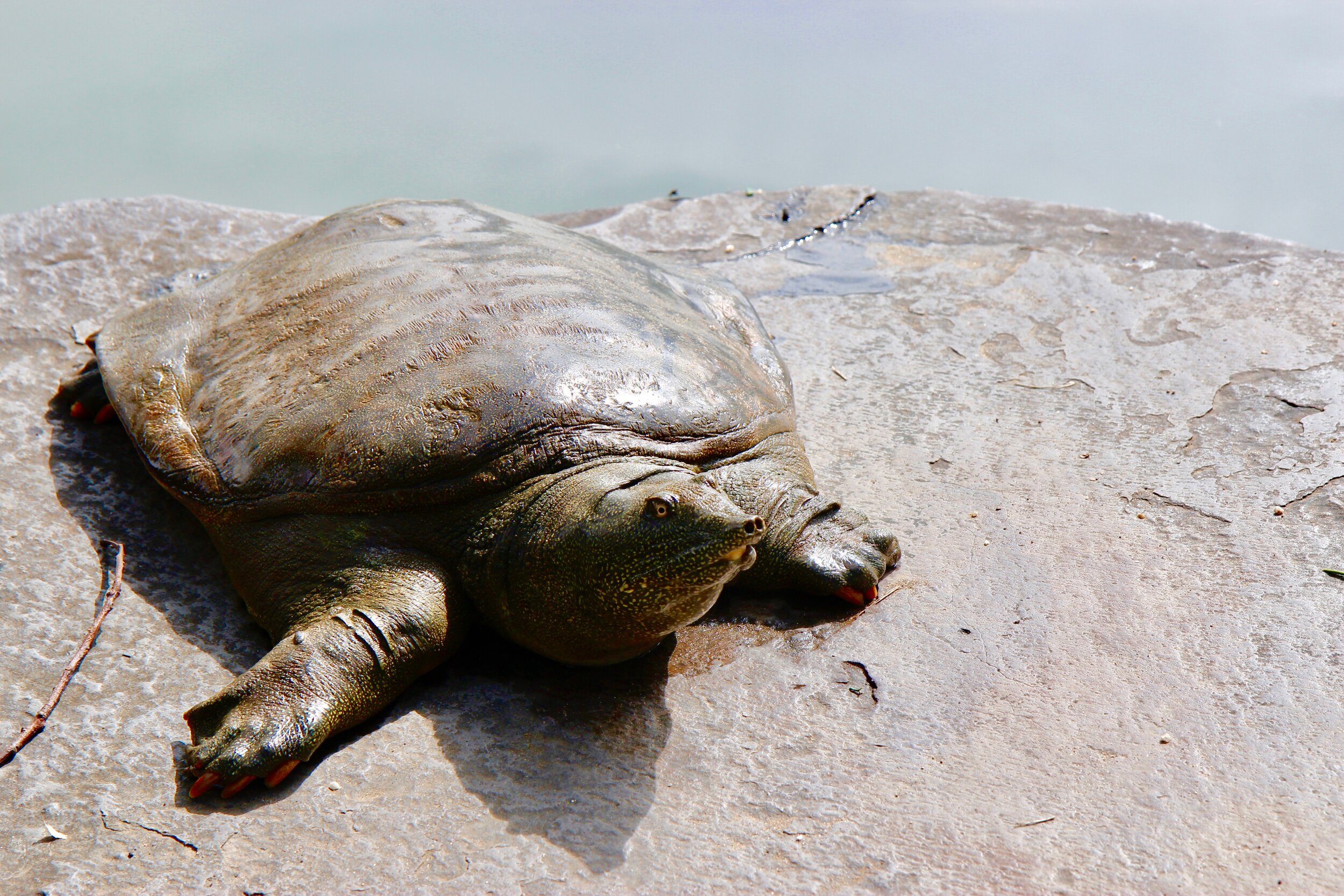

After sumo, we walked down the street to the Kiyosumi Gardens to view the beautifully groomed gardens and have a little rest.
Japan has these amazing gardens in the middle of cities for all to experience. The gardens are a nice break from the itinerary, with good bathrooms.
Sidenote on Tsukiji Fish Market:
We wanted to visit the famous fish market for the best fish in the world, but during our visit it was closed. And, we learned that on October 6th, 2018 it was moving to a new location and reopening on October 11th, 2018. With the new location, there were going to be new rules in place for visiting tourists. Please look up the hours and new restrictions before you attempt to go.
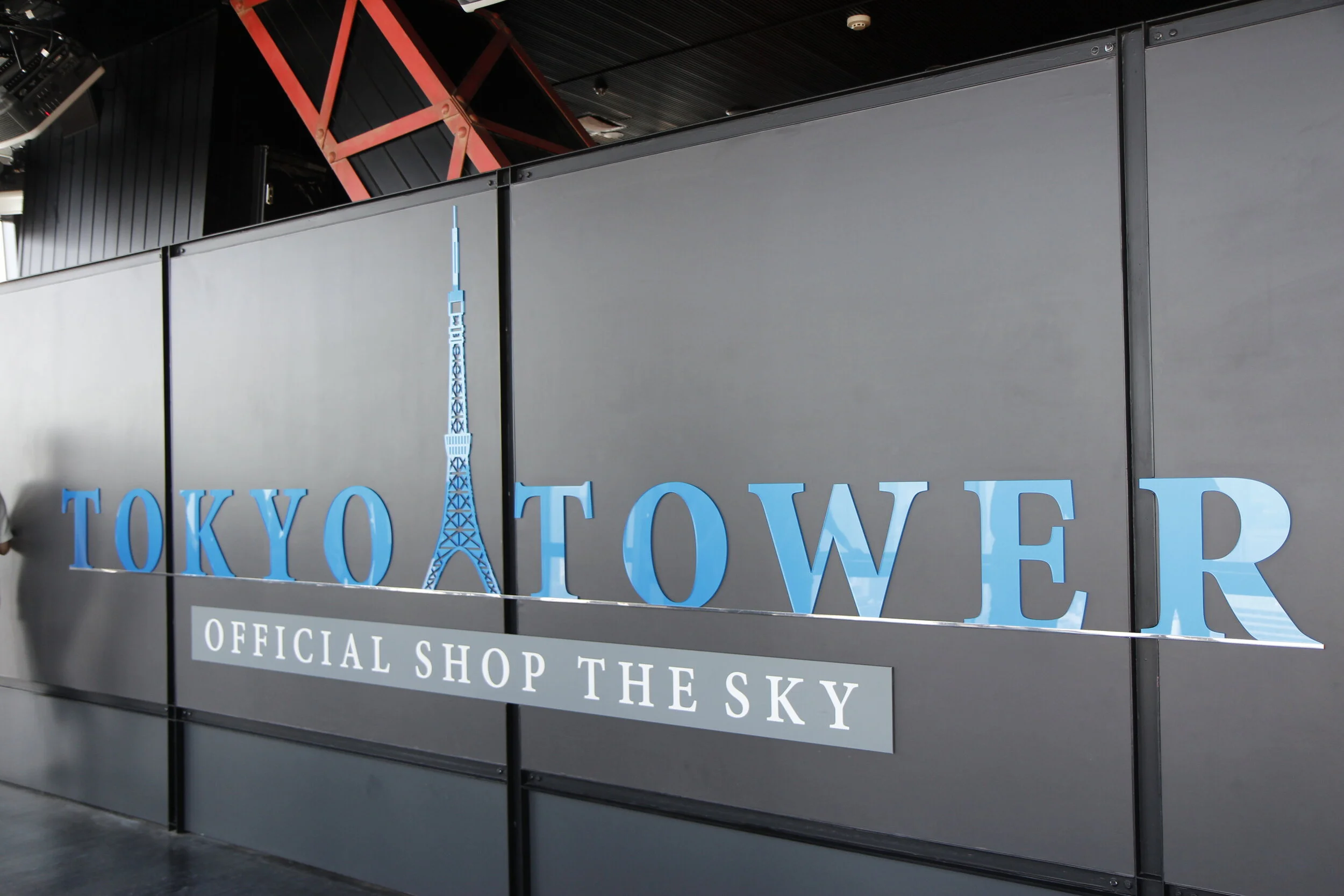

After a nice rest in Kiyosumi Gardens we took the subway to the middle of the city to see Tokyo Tower, the cousin tower to the Eiffel Tower in Paris. Tokyo Tower was built in 1958 and the 2nd tallest structure in Tokyo. It is 1082.35 feet tall and of course we had to go up and see the view. Zach and I took the elevator up to the first level with observation tower, I was too nervous to go all the way to the top. Grammy decided to stay on solid ground at the bottom and enjoy an ice cream until we got back. Zach and I walked around and took photos of the views, thankfully it was a clear day. After, we worked out way back down through several souvenir shops before we met up with Grammy at the bottom.
It was time for lunch and we found a ramen shop nearby for a simple lunch, which was very good.
After lunch we worked our way over to visit the busiest pedestrian crossing in the Tokyo, Shibuya Crossing. We got a tip online from another traveler to view the crossing from the Starbucks or the mall near the intersection. We opted for the mall view and then decided to cross the intersection ourselves. We viewed the neighborhood and shopping around Shibuya Crossing before heading back to our hotel.
We stopped by Family Mart on our way back to our hotel to see if we could purchase baseball tickets for a game from a kiosk, but it was hard to understand. So, we decided to buy them in person the next day. This would prove to be a bad idea.
Day 14 - October 7, 2018 - Tokyo, Japan
On our last full day in Tokyo, we went shopping in Harajuku on Takeshita Dori and surrounding streets. Zach had wanted a nice pair of raw denim jeans and Grammy and I were along for the ride. I kept seeing sukajan jackets everywhere. And, after going inside high end and boutique shops we finally settled on items we wanted. We were able to get Zach his raw denim at Pure Blue Japan. And, I bought a sukajan jacket at Sukajyan Dept.
Later that night, we tried to go to a Swallows baseball game, but tickets were sold out. We should have bought tickets ahead of time as it was their last game of the season. And, with us being big baseball fans, and Japan a big baseball country, we thought it would be a fun way to end our last night in Japan. Unfortunately, we just didn’t know that the weather would cooperate or if we’d be up for it. Next time, we’ll be sure to purchase our tickets ahead of time.
A bit bummed, we took the subway back to our hotel and packed for our flight home to the U.S. the next morning.
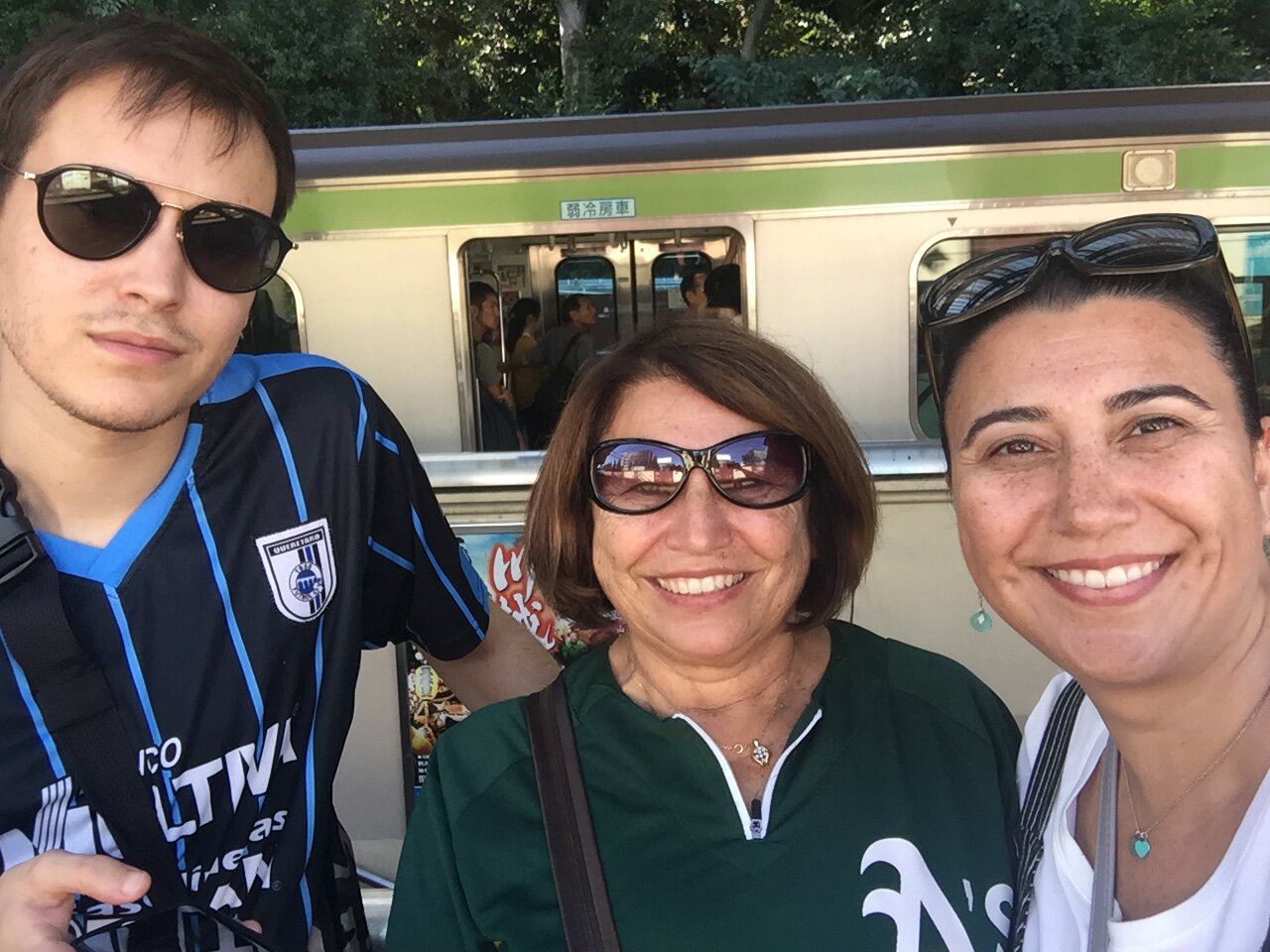

Day 15 - October 8 2018 - Tokyo, Japan to Los Angeles, CA, U.S.A.
After a late breakfast, we checked out of our final hotel and took a taxi to the Tokyo-Haneda airport for our 3:15pm 10-hour flight back to LAX.
Japan was amazing. And, offered everything from it’s culture to cleanliness. The beauty of it’s country was hard to capture on camera, but the memories will last a life time. The organization and respect of it’s people. The quality of the food plus so much more. Japan is one of those places you hear other people talk about but, nothing compares until you experience it for yourself.
We will be back.
Until then. Thank you, Japan.


